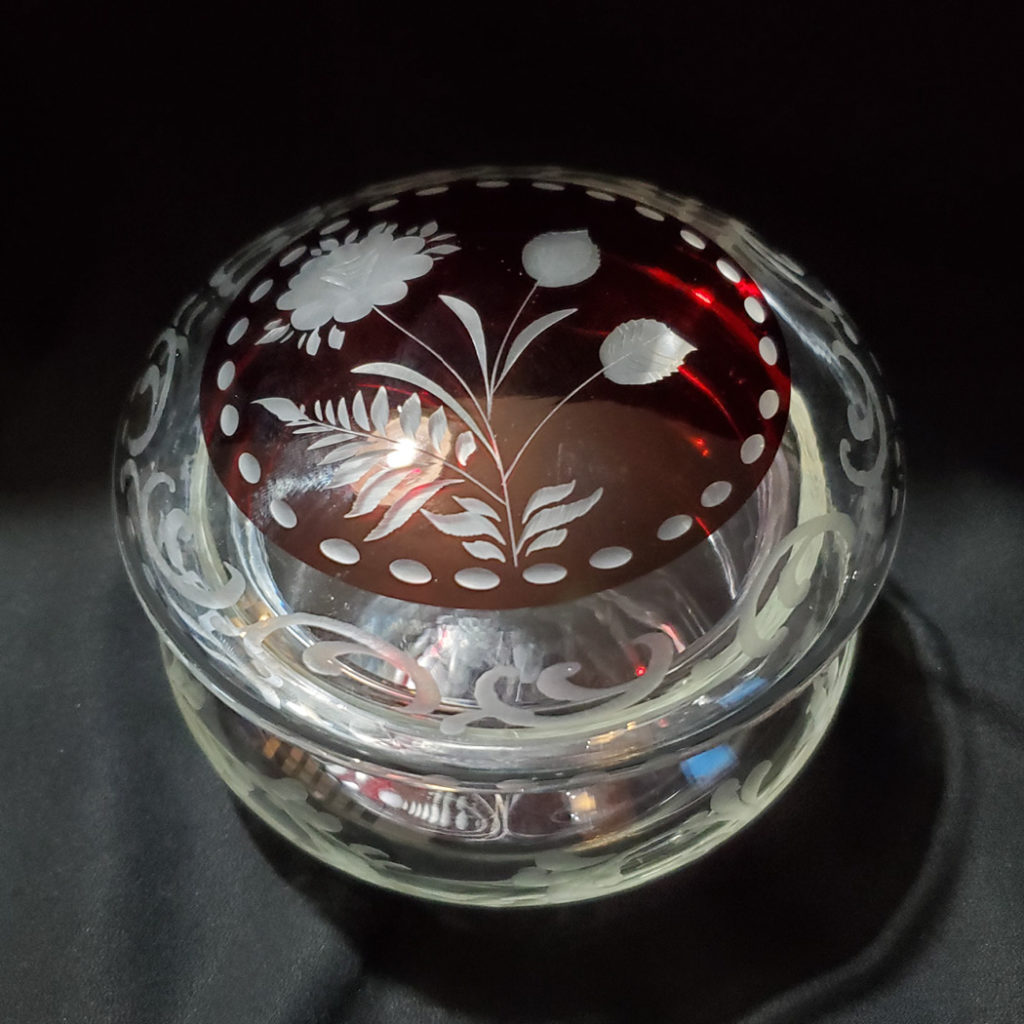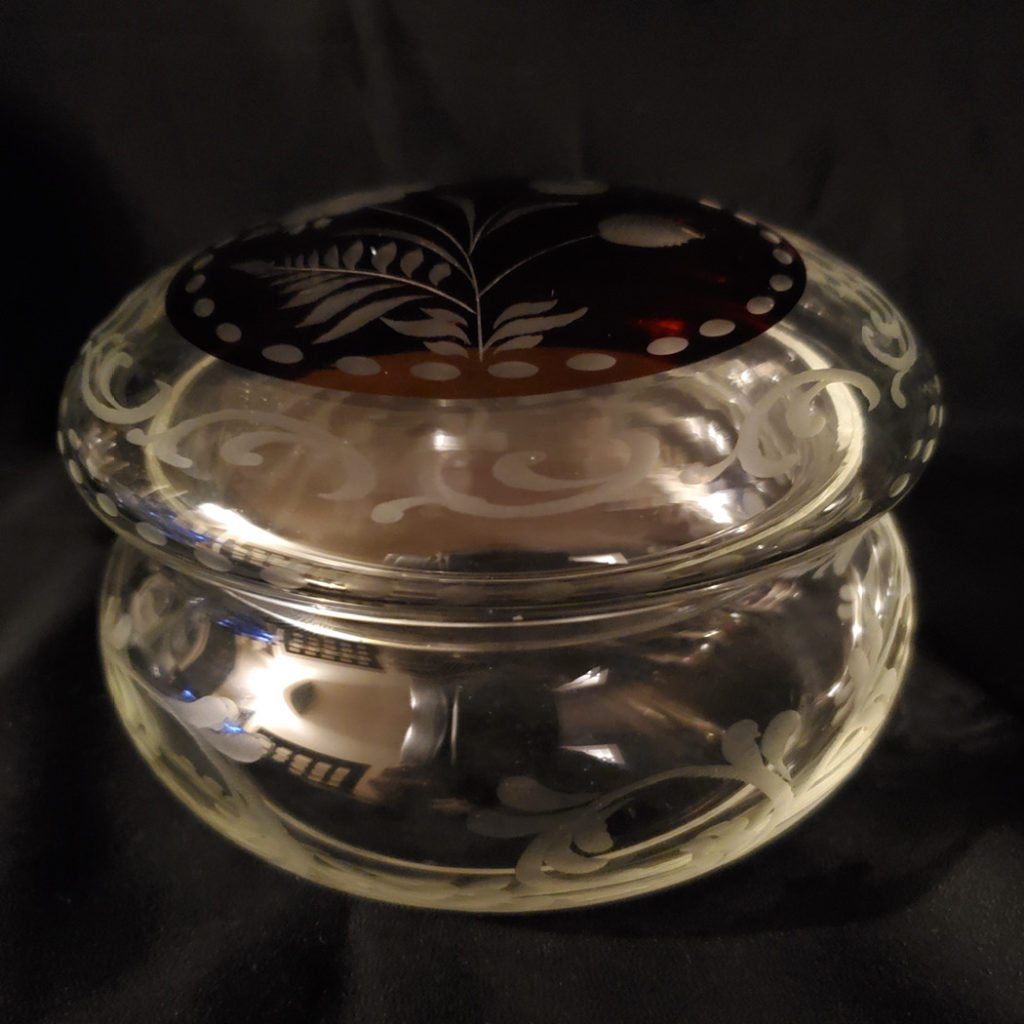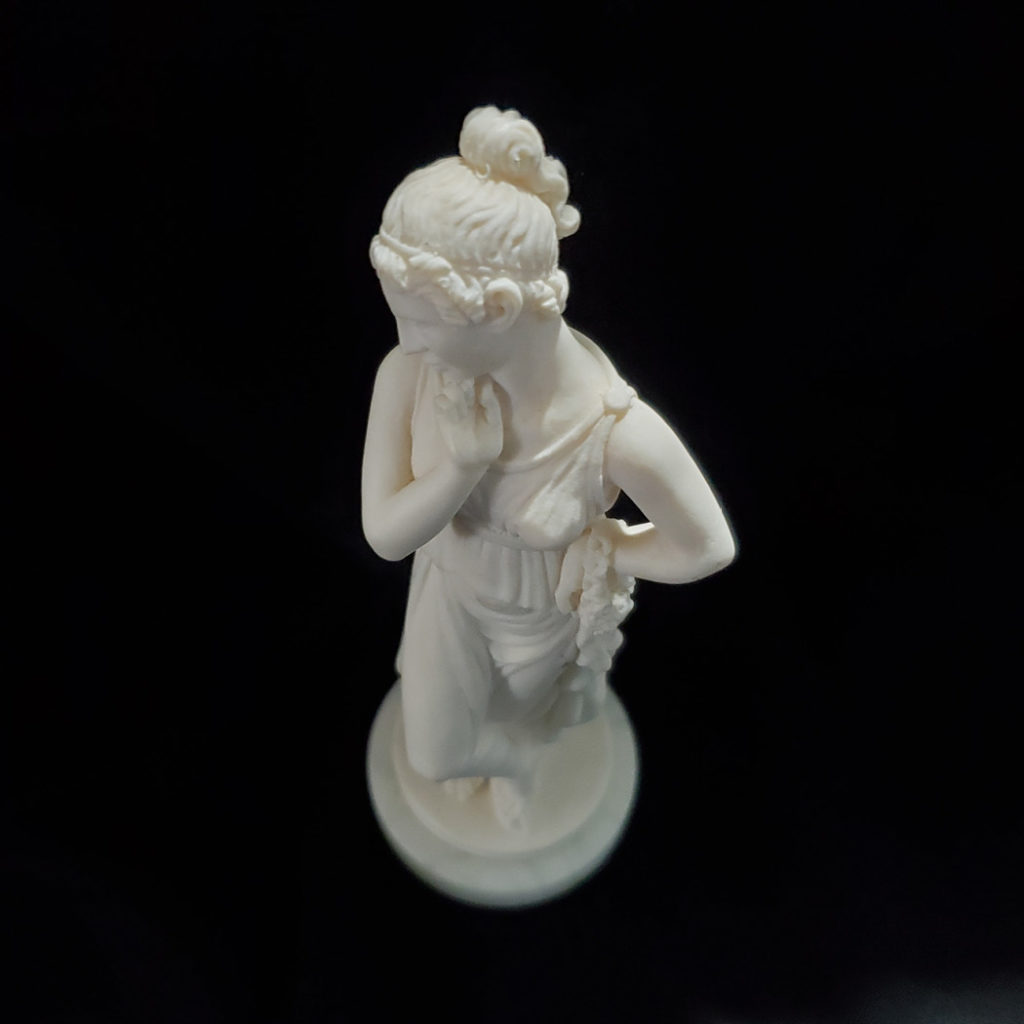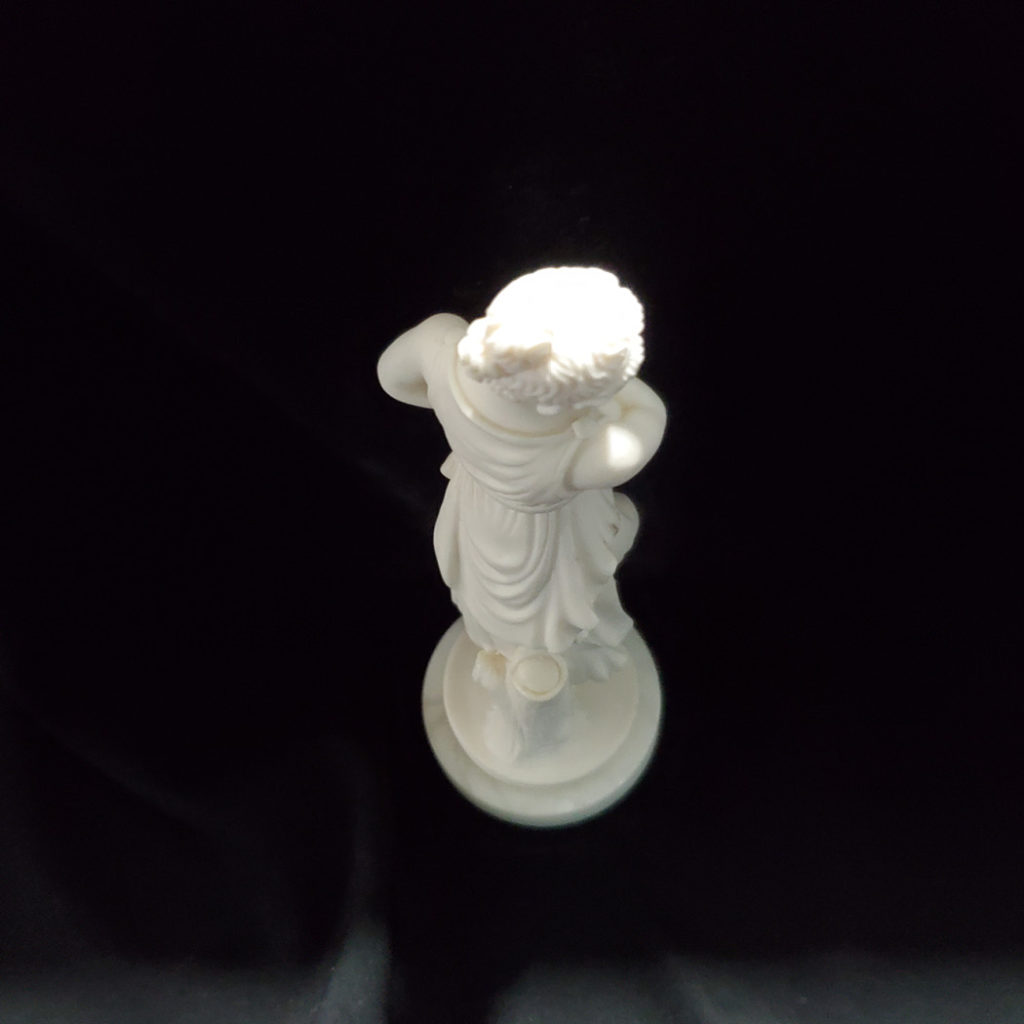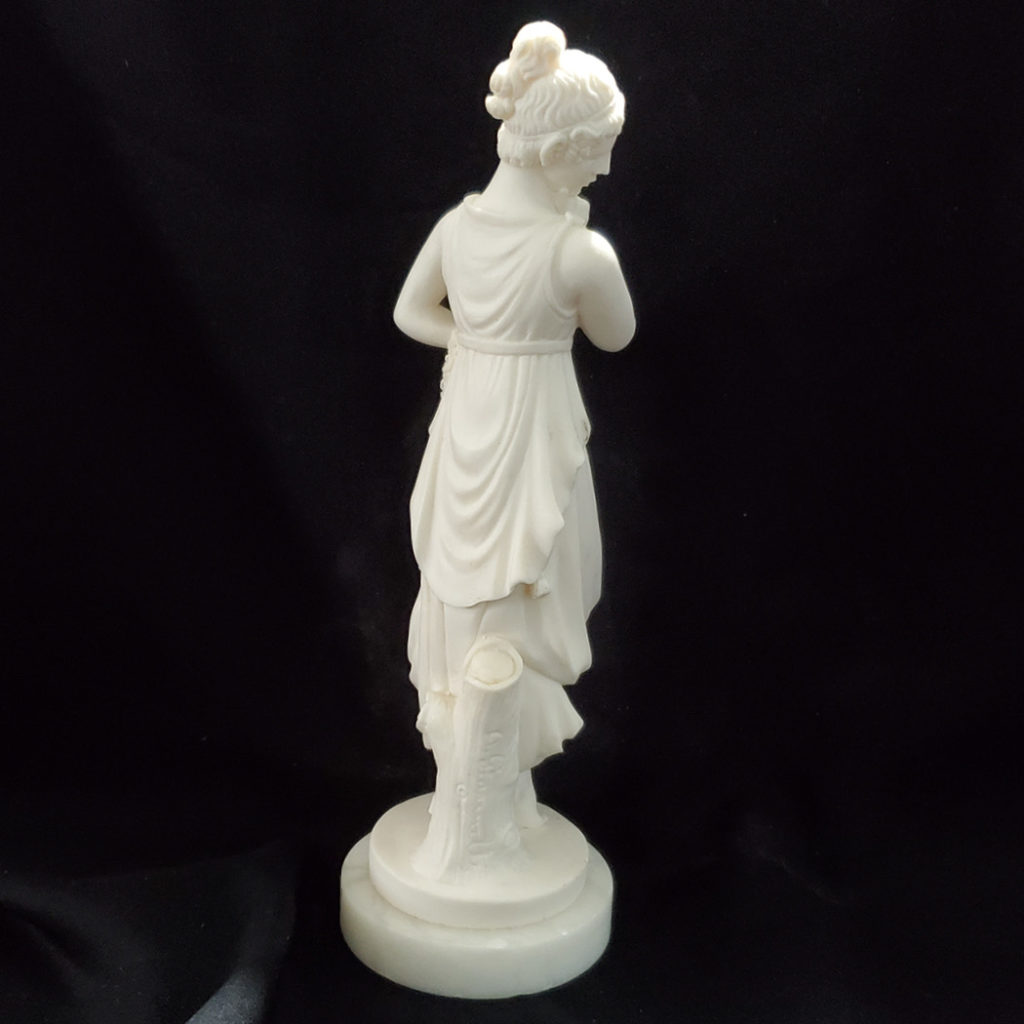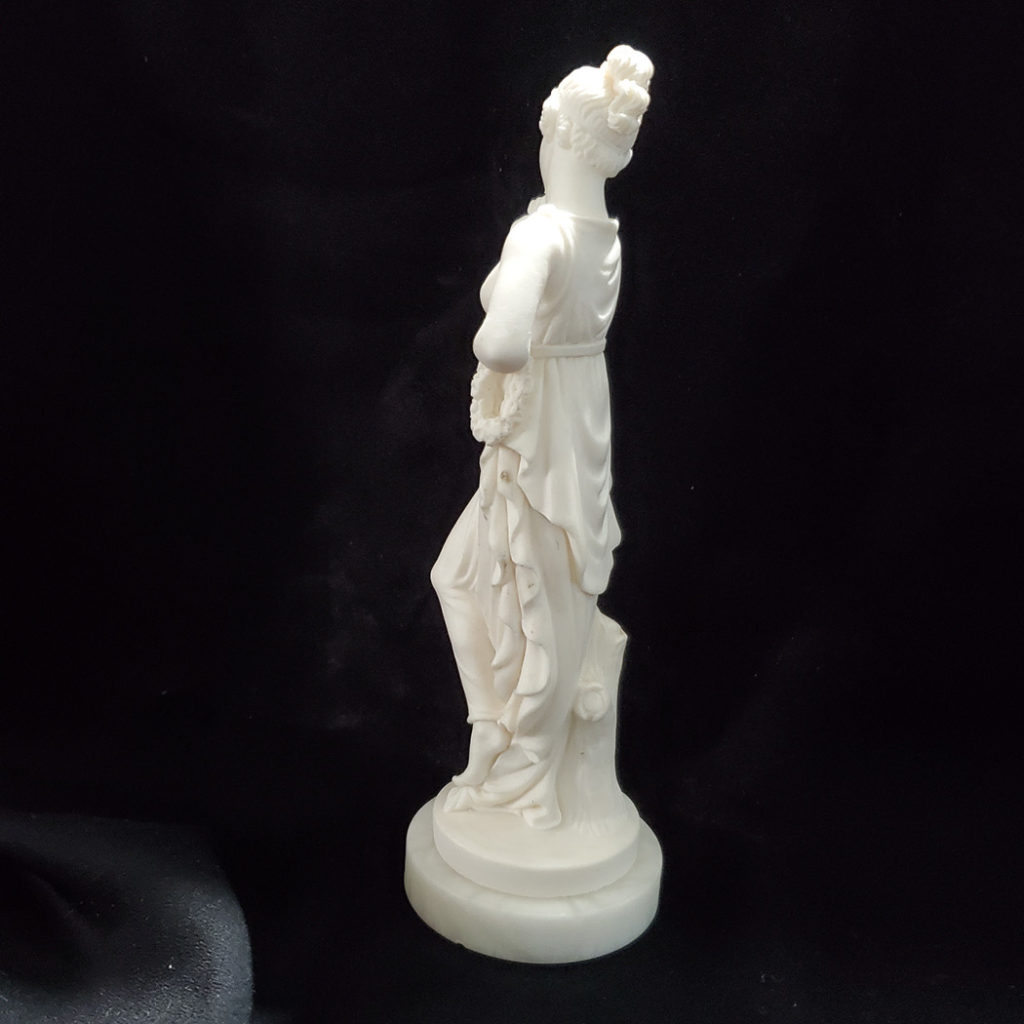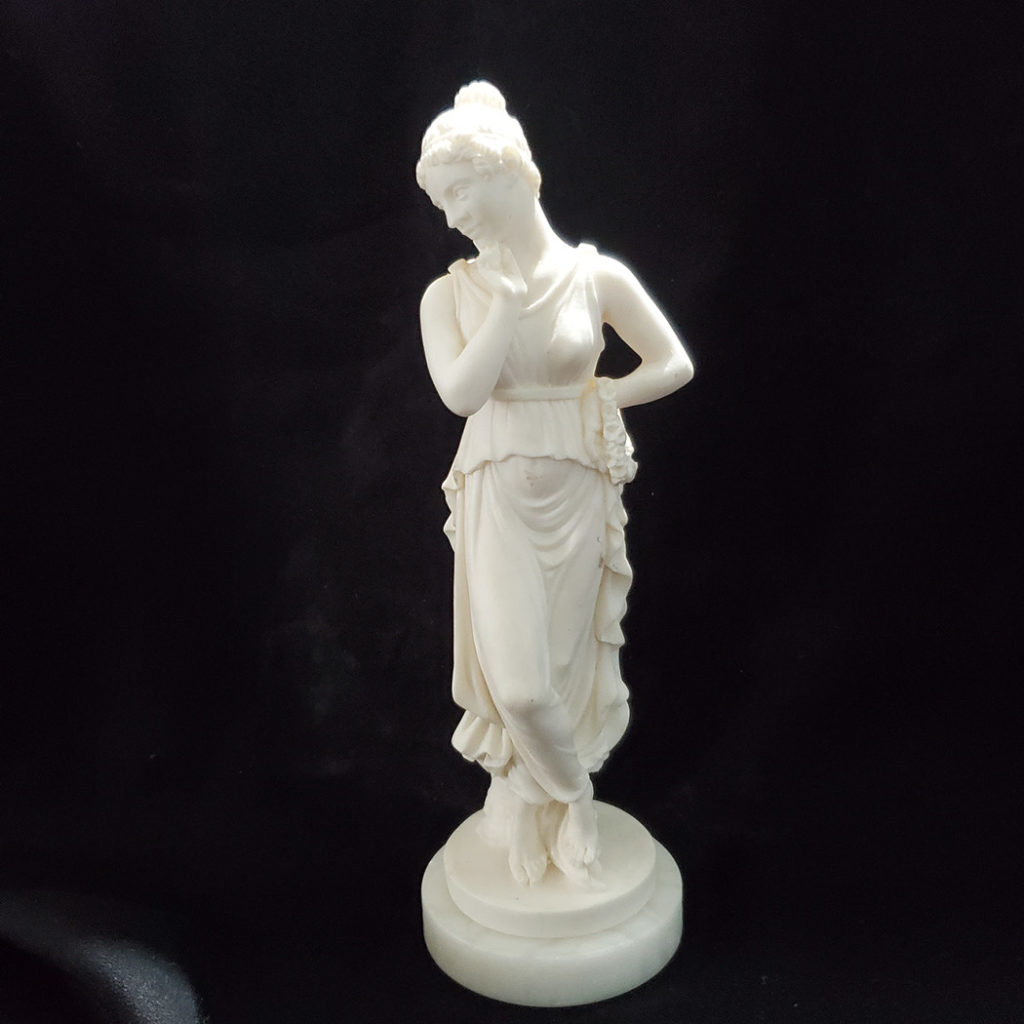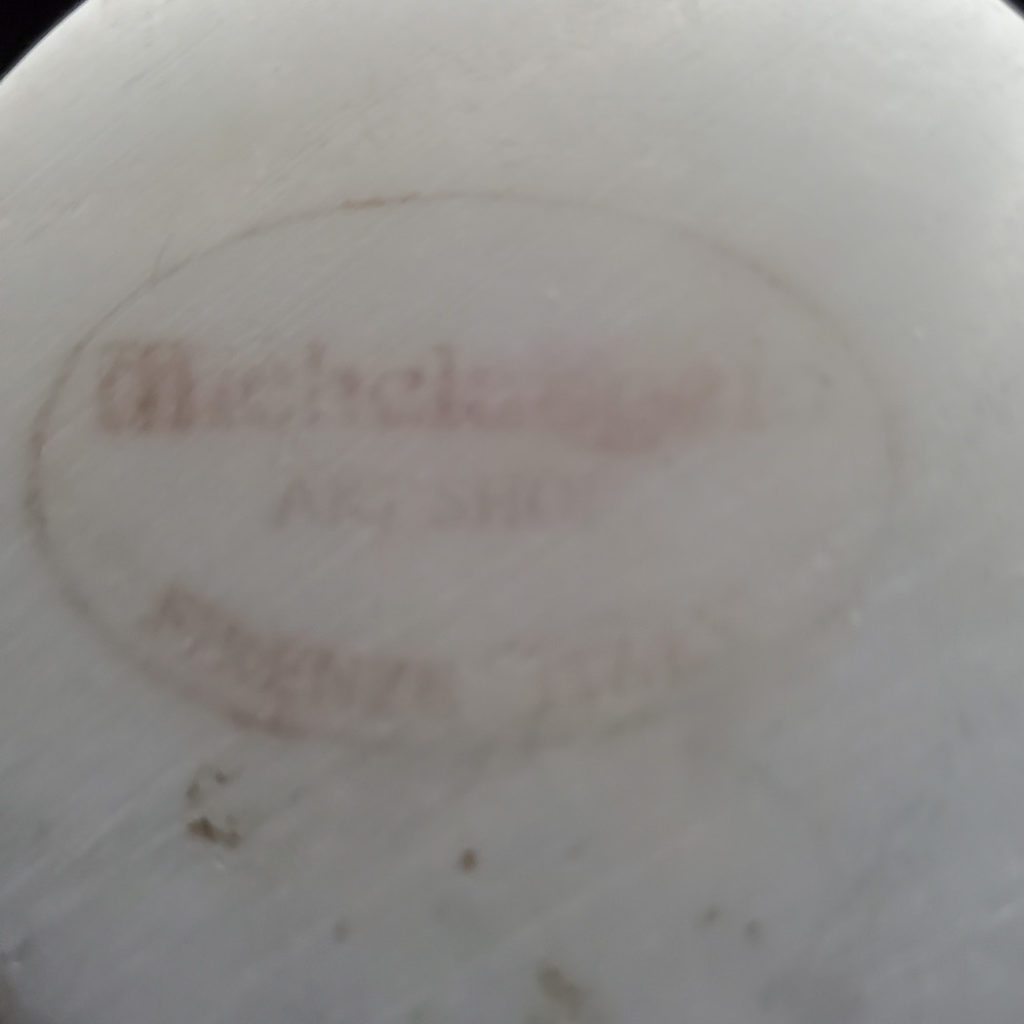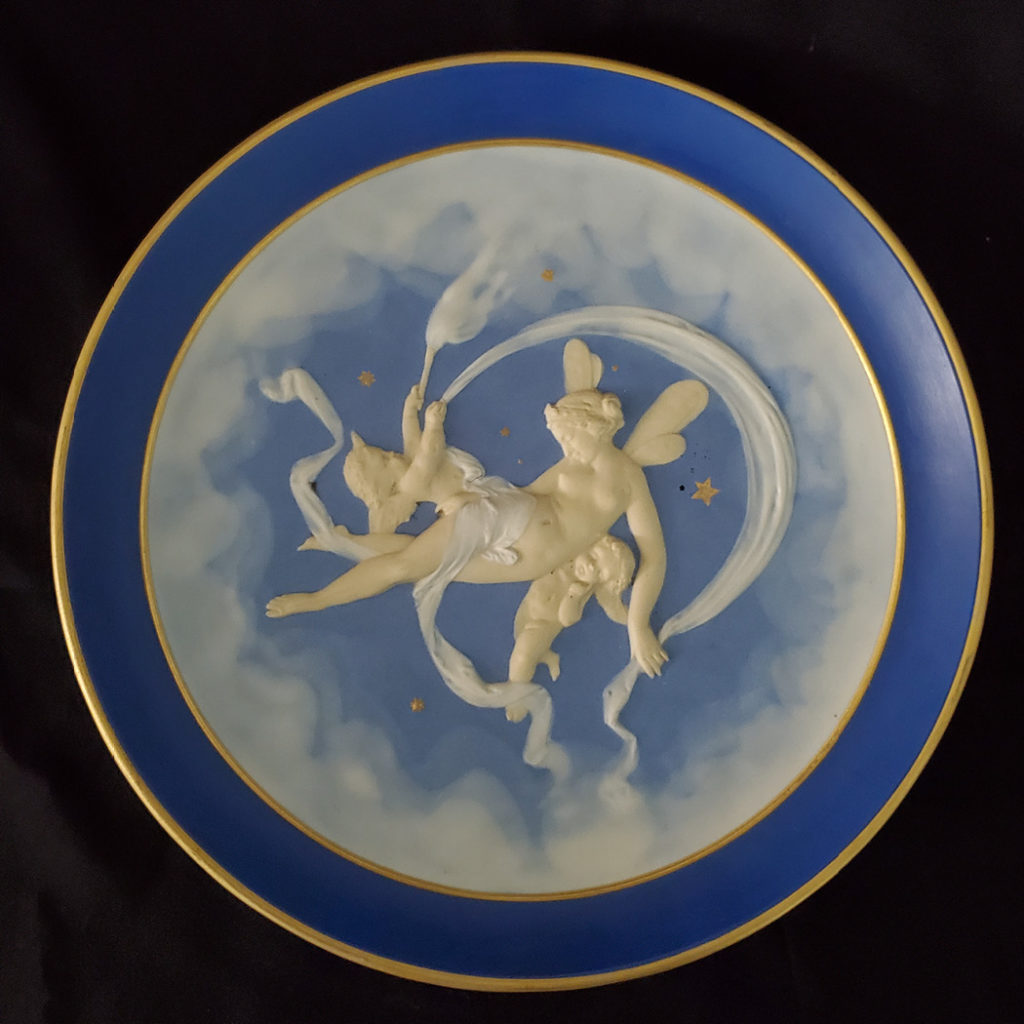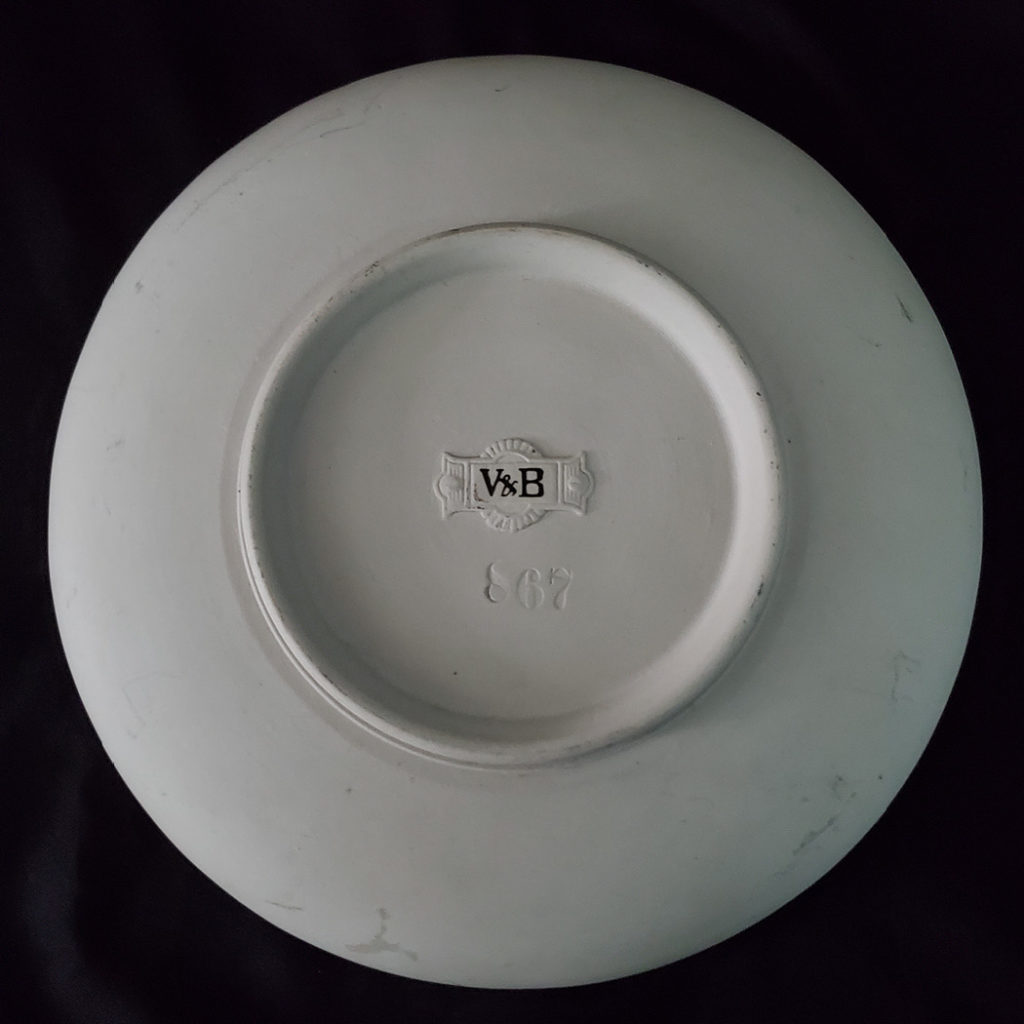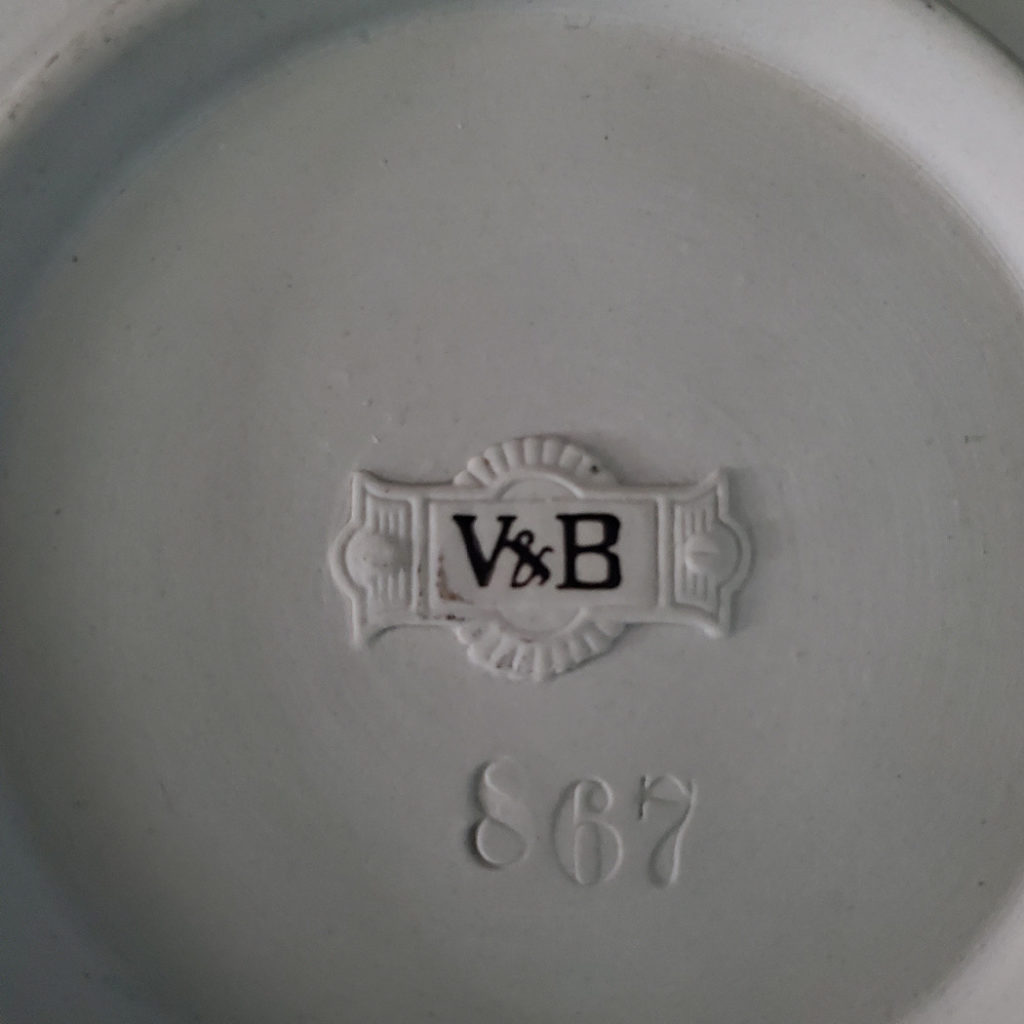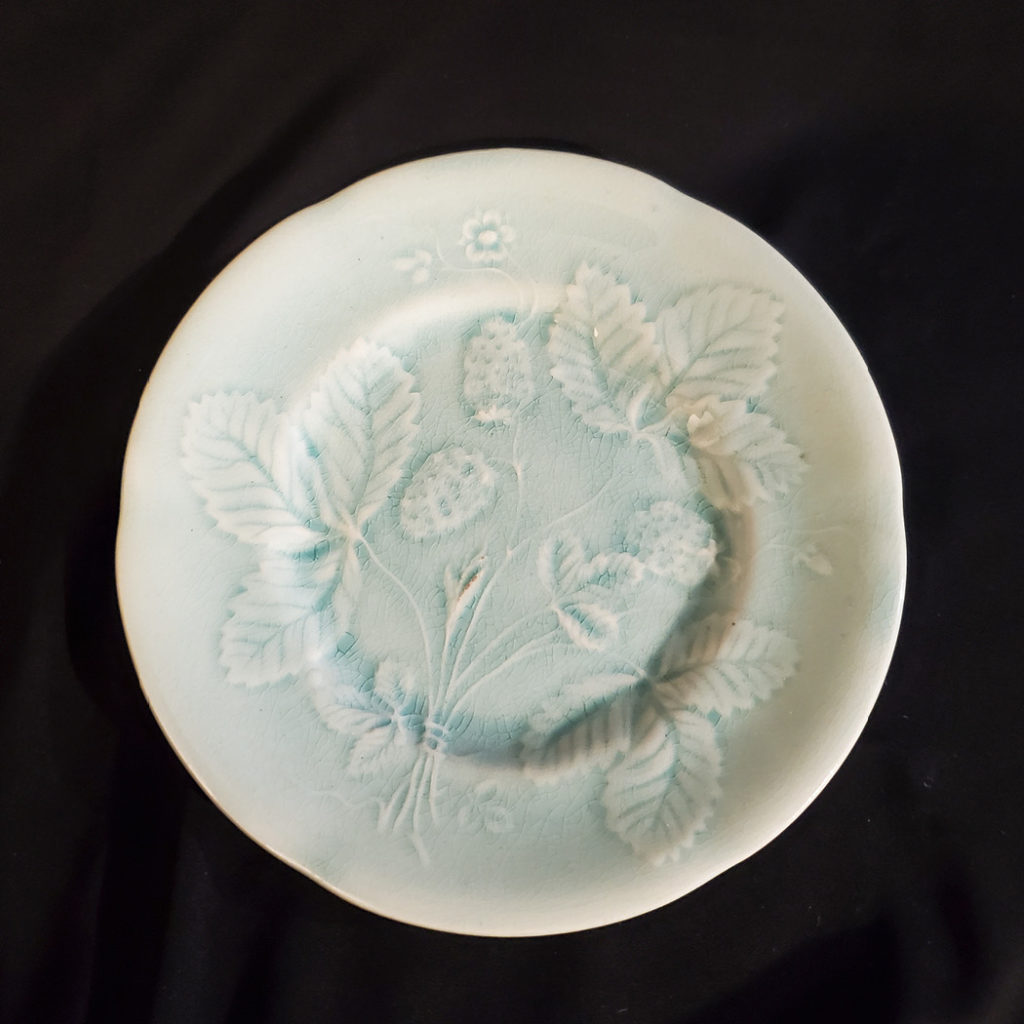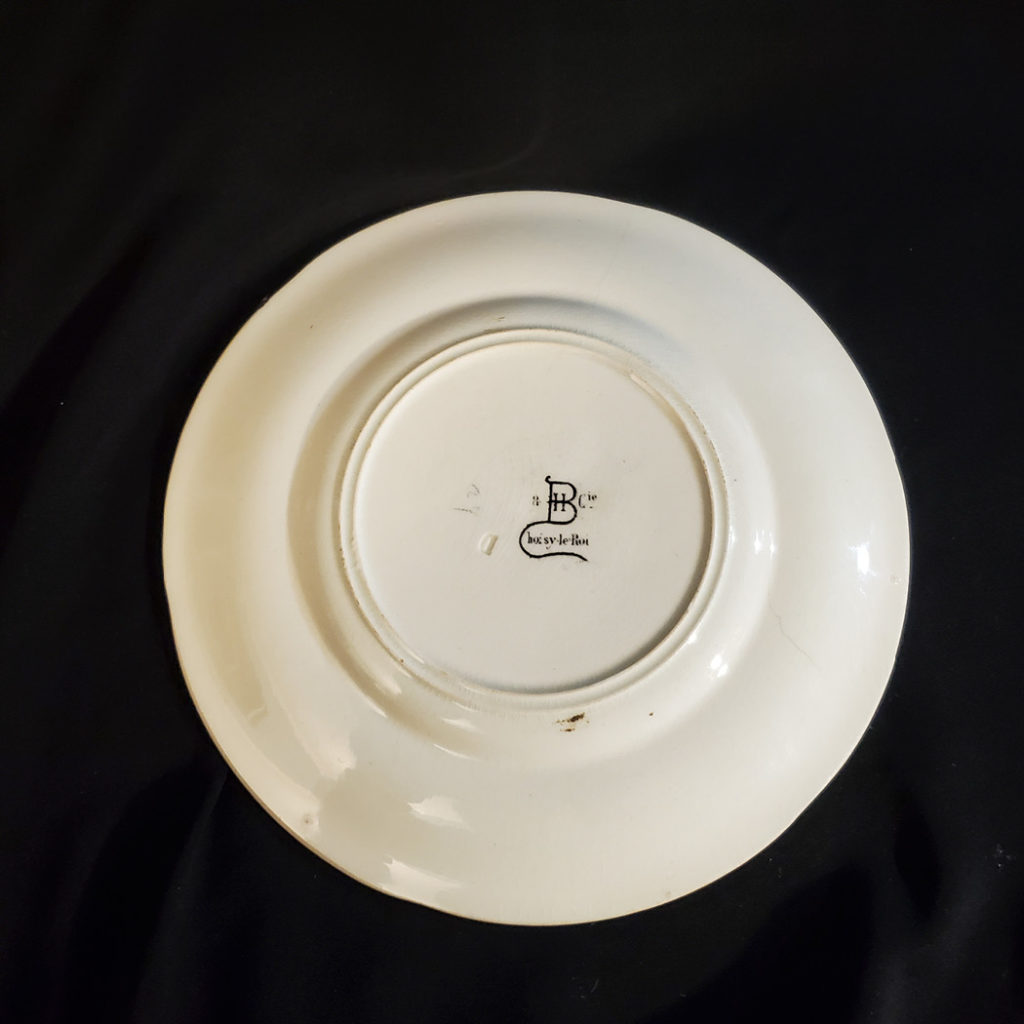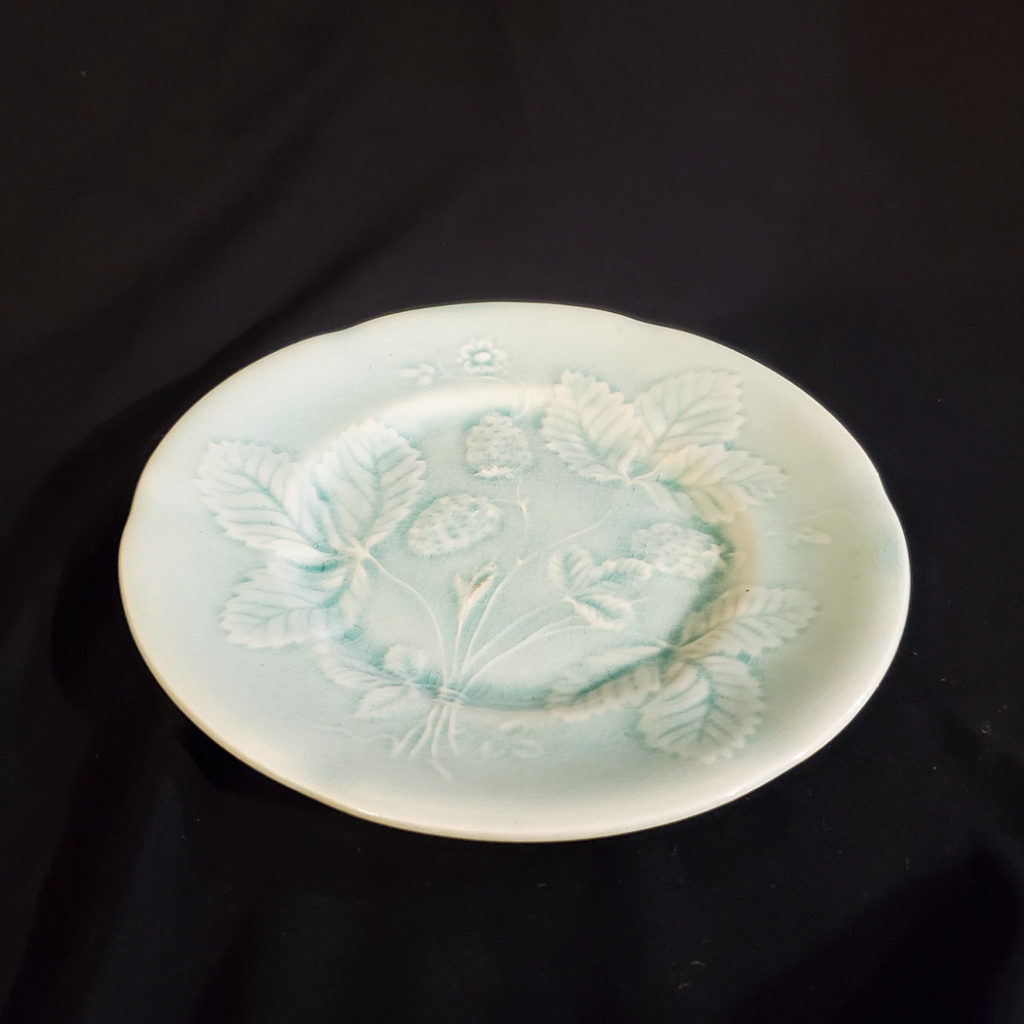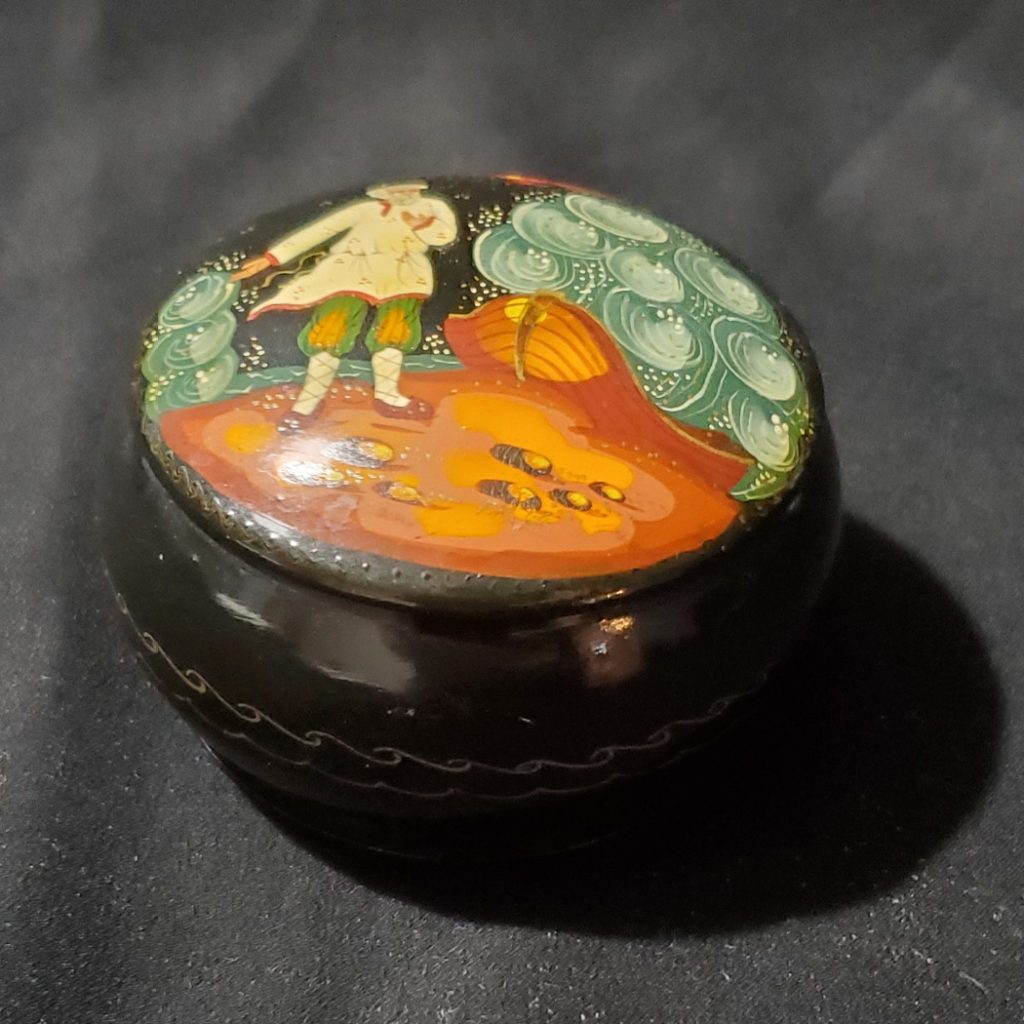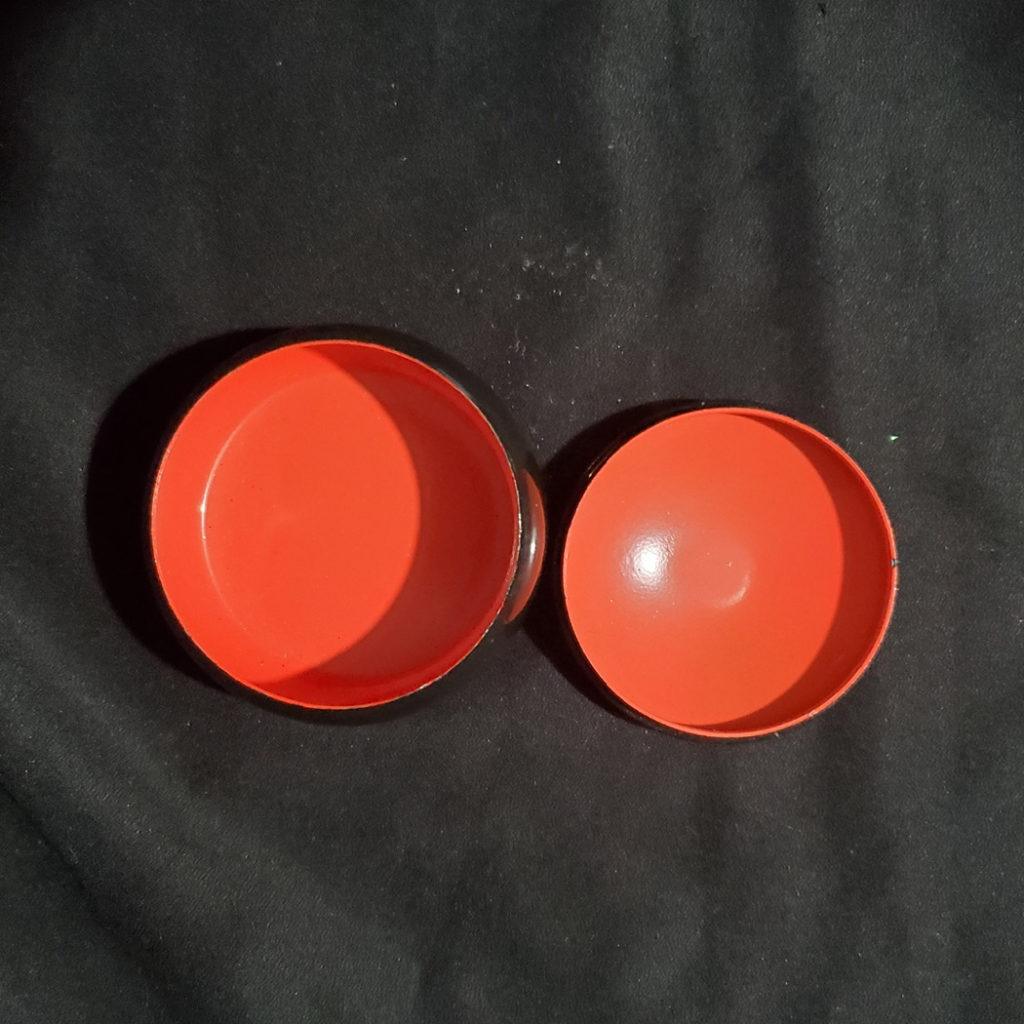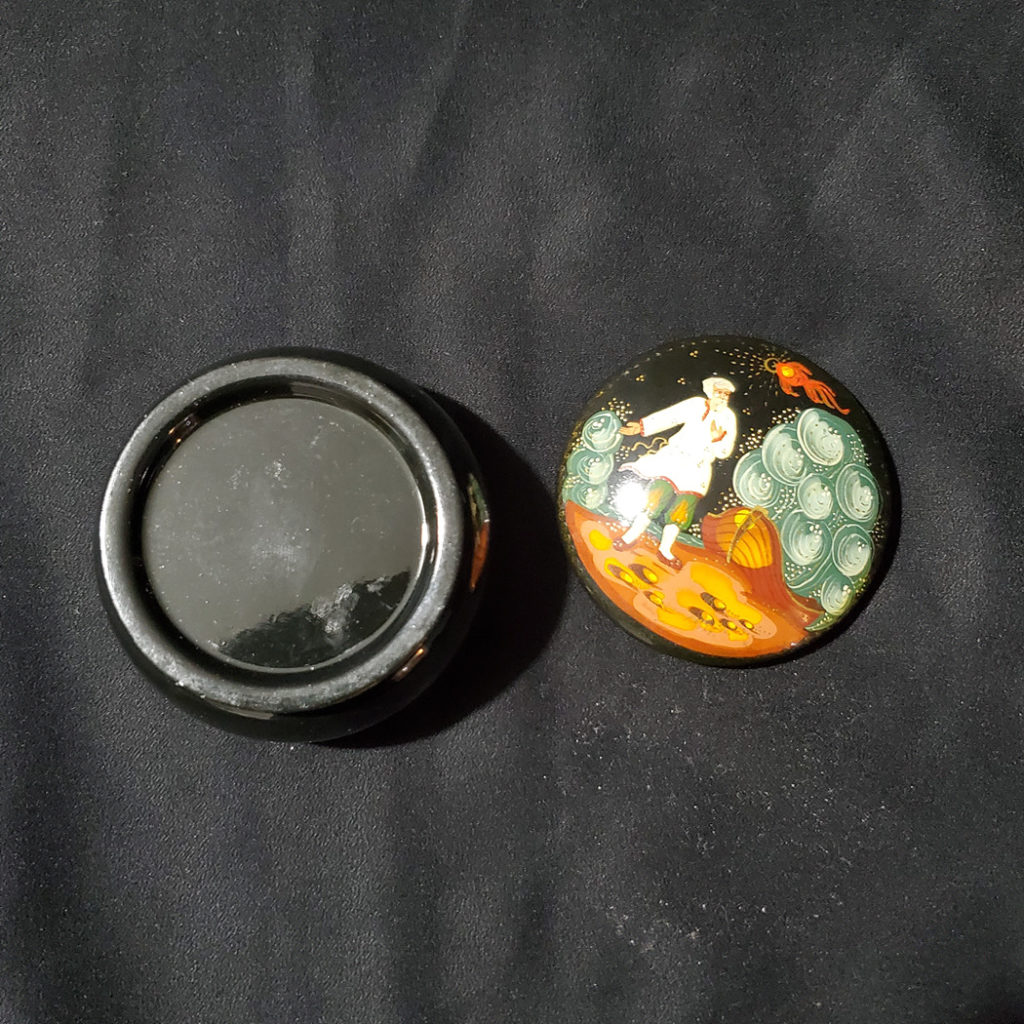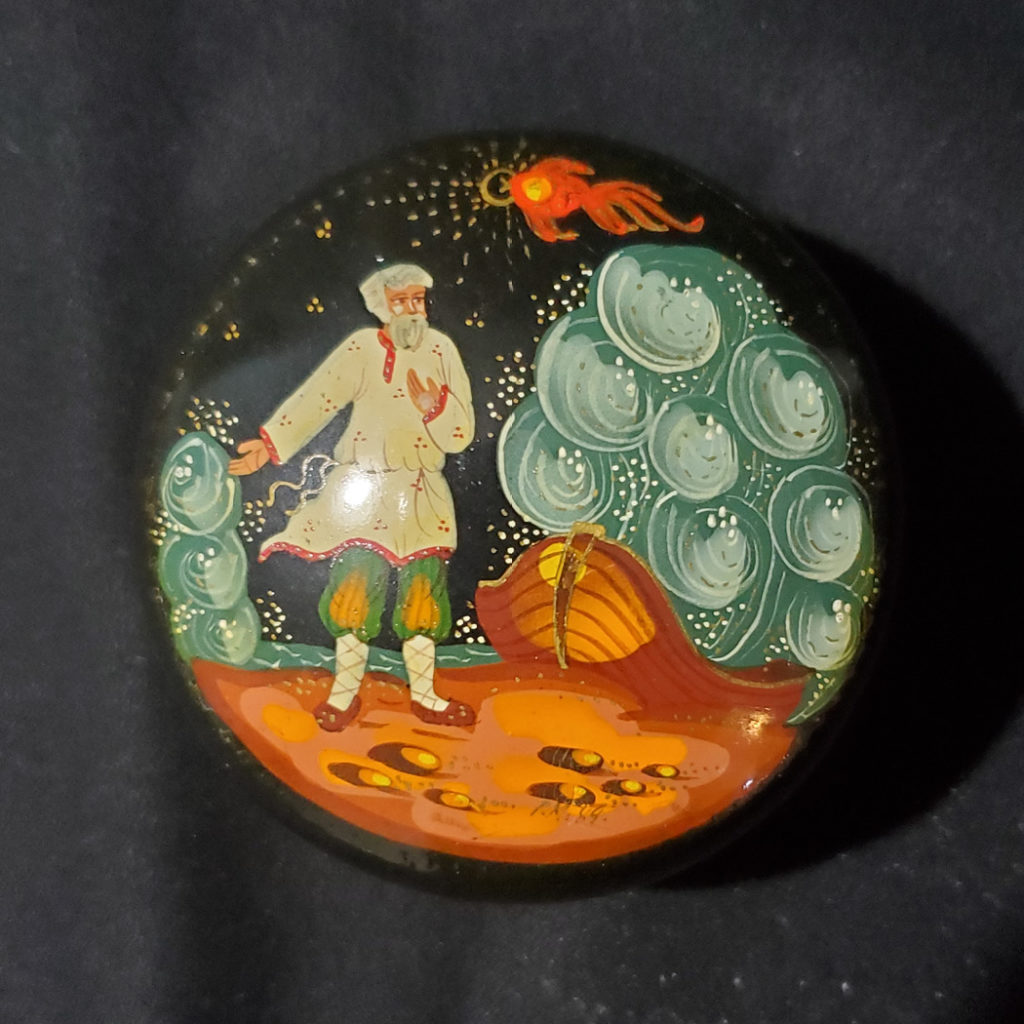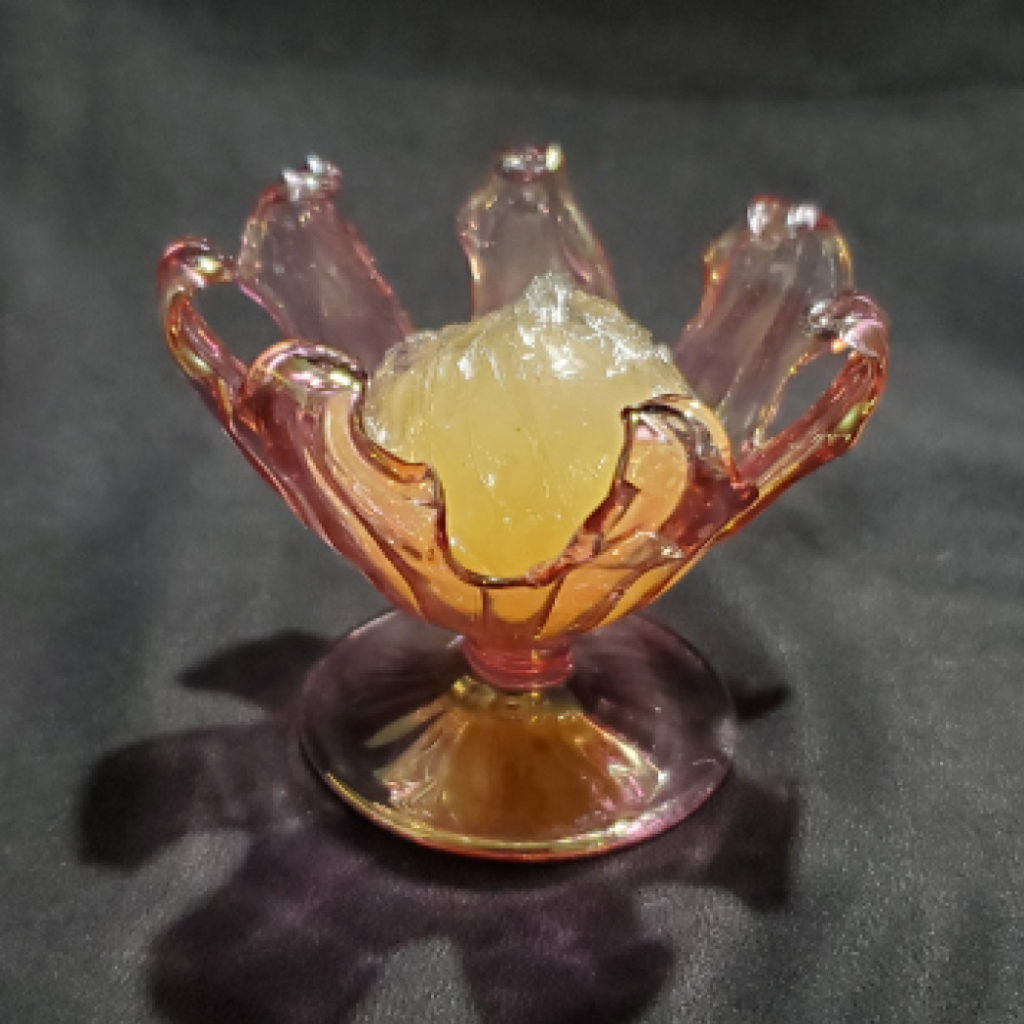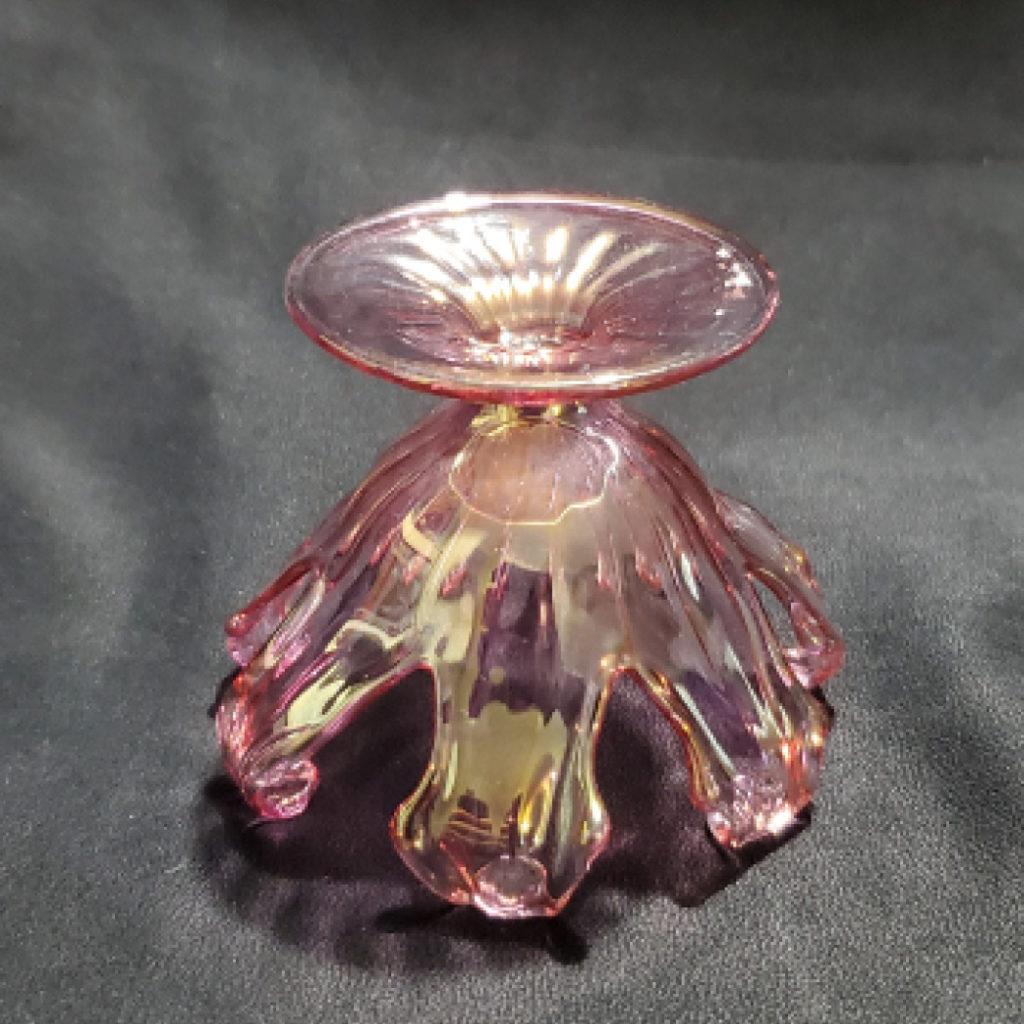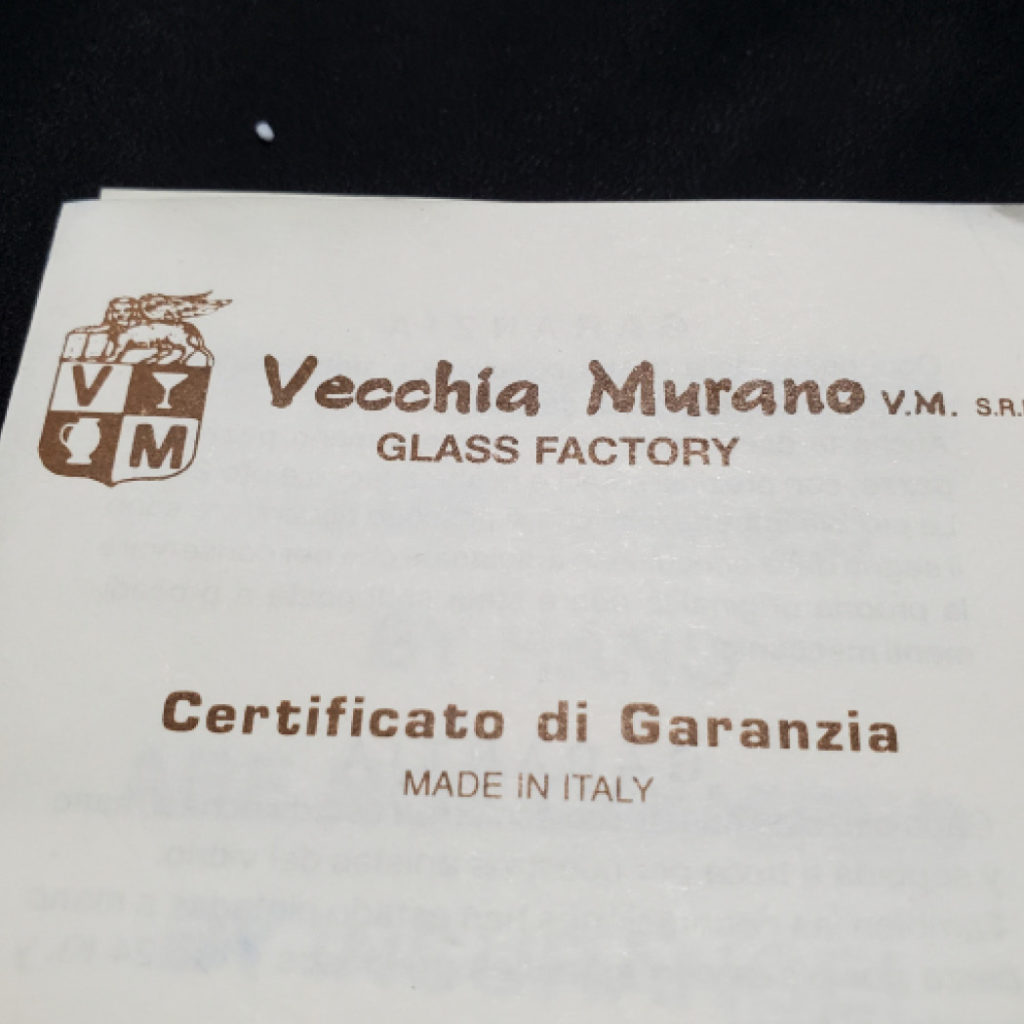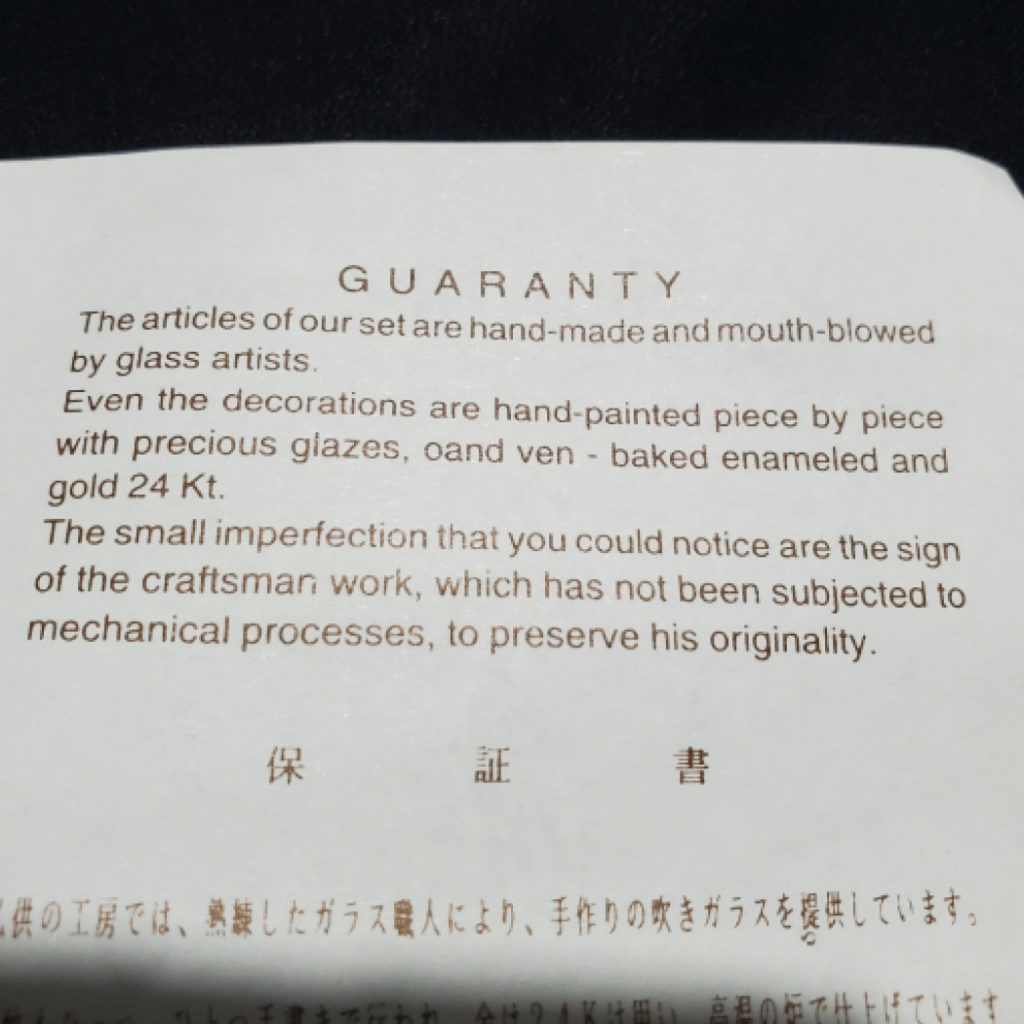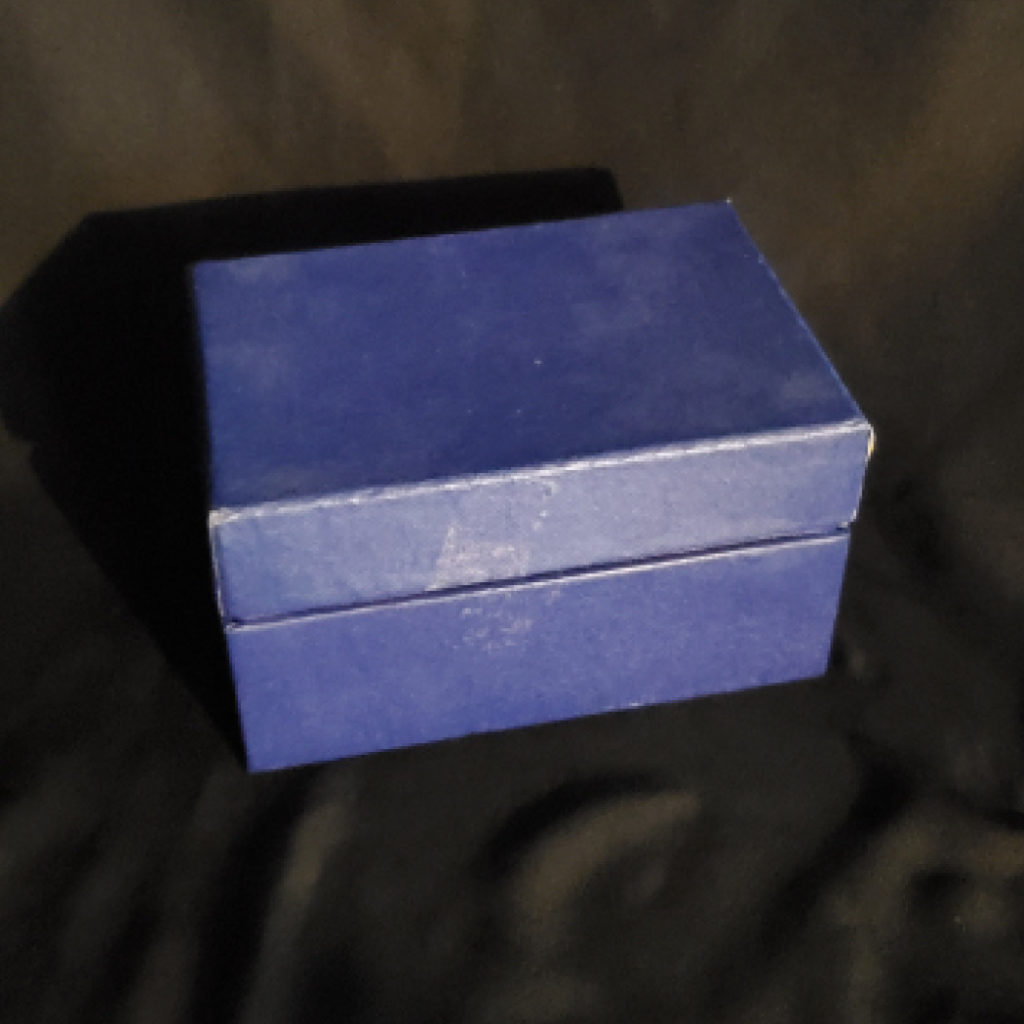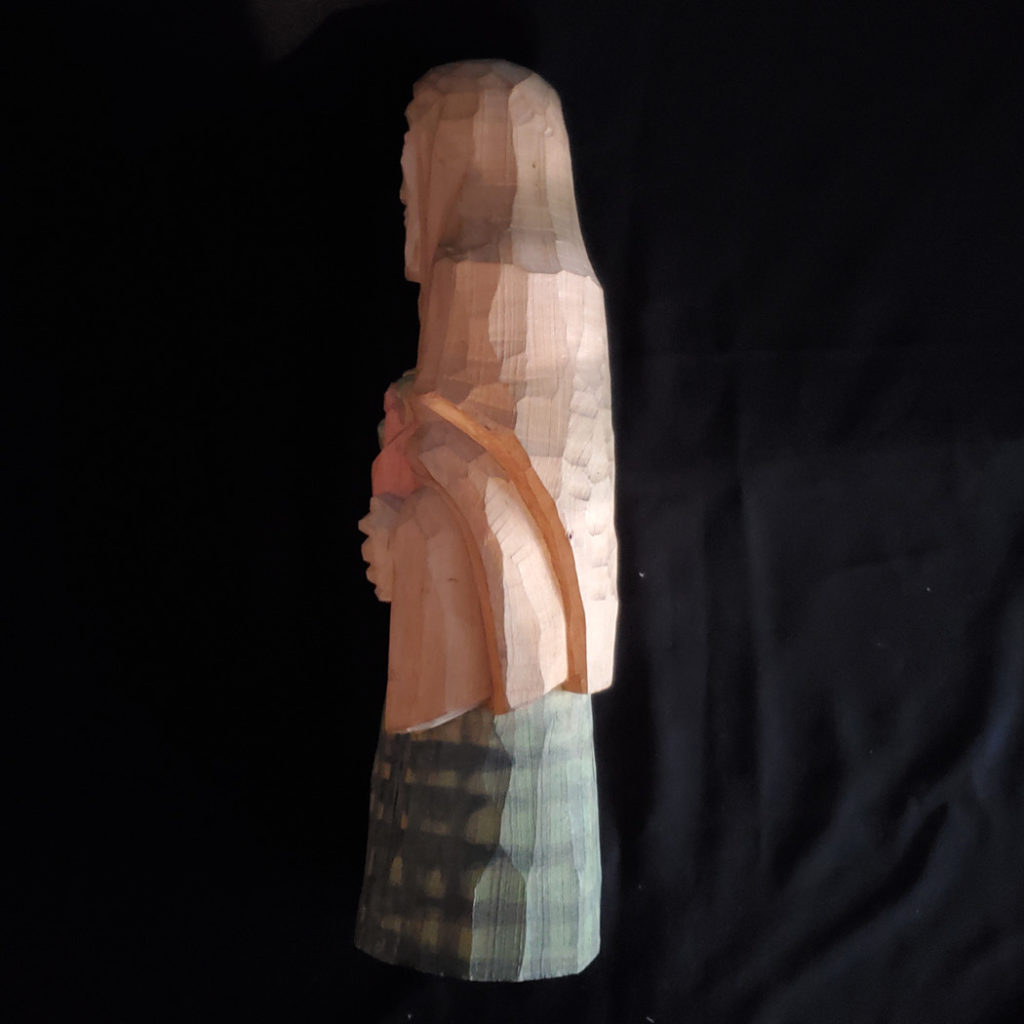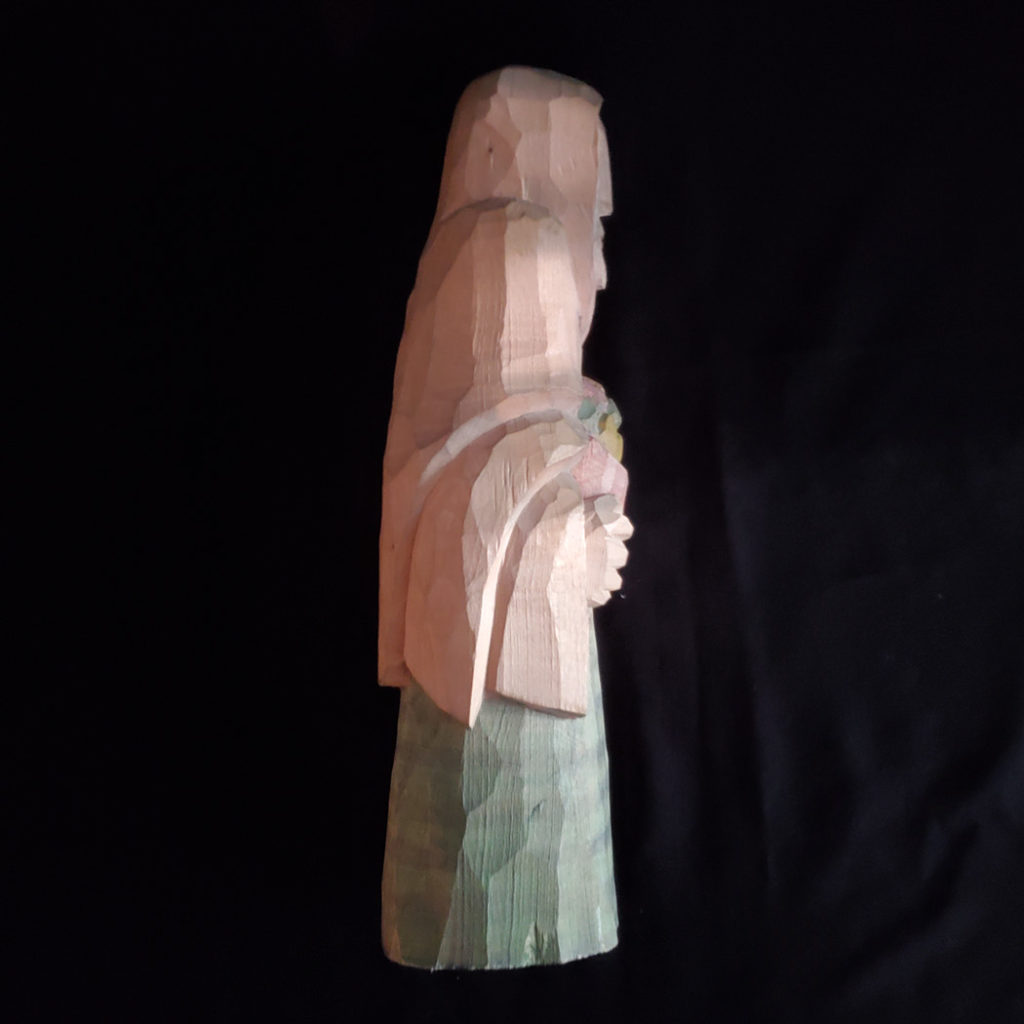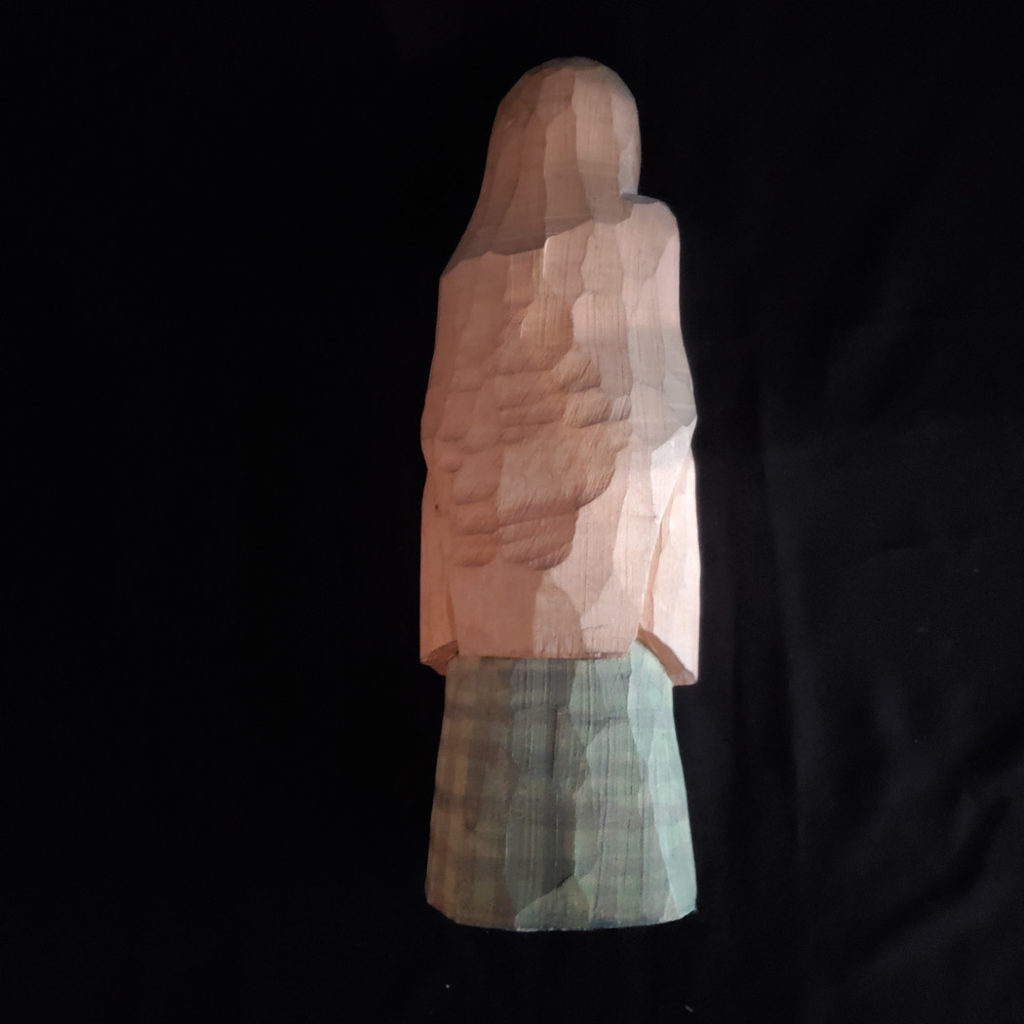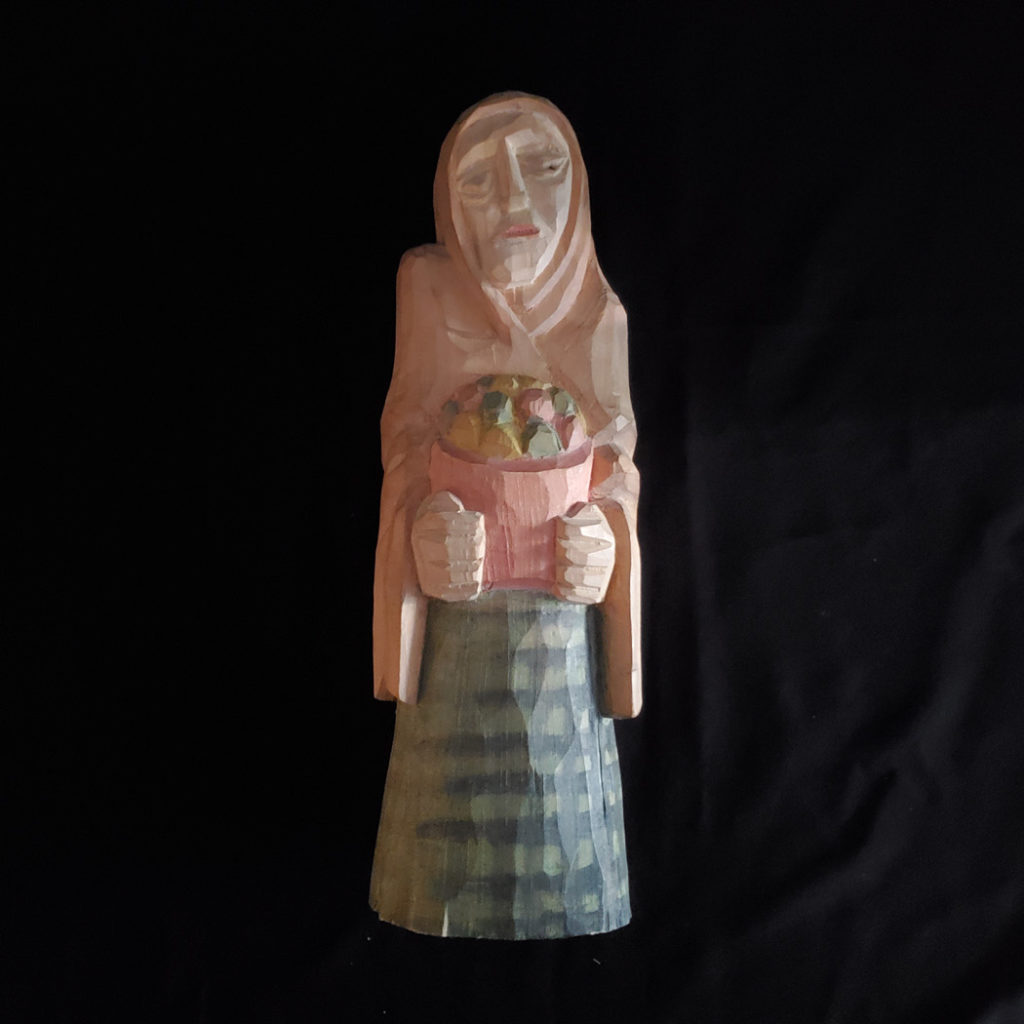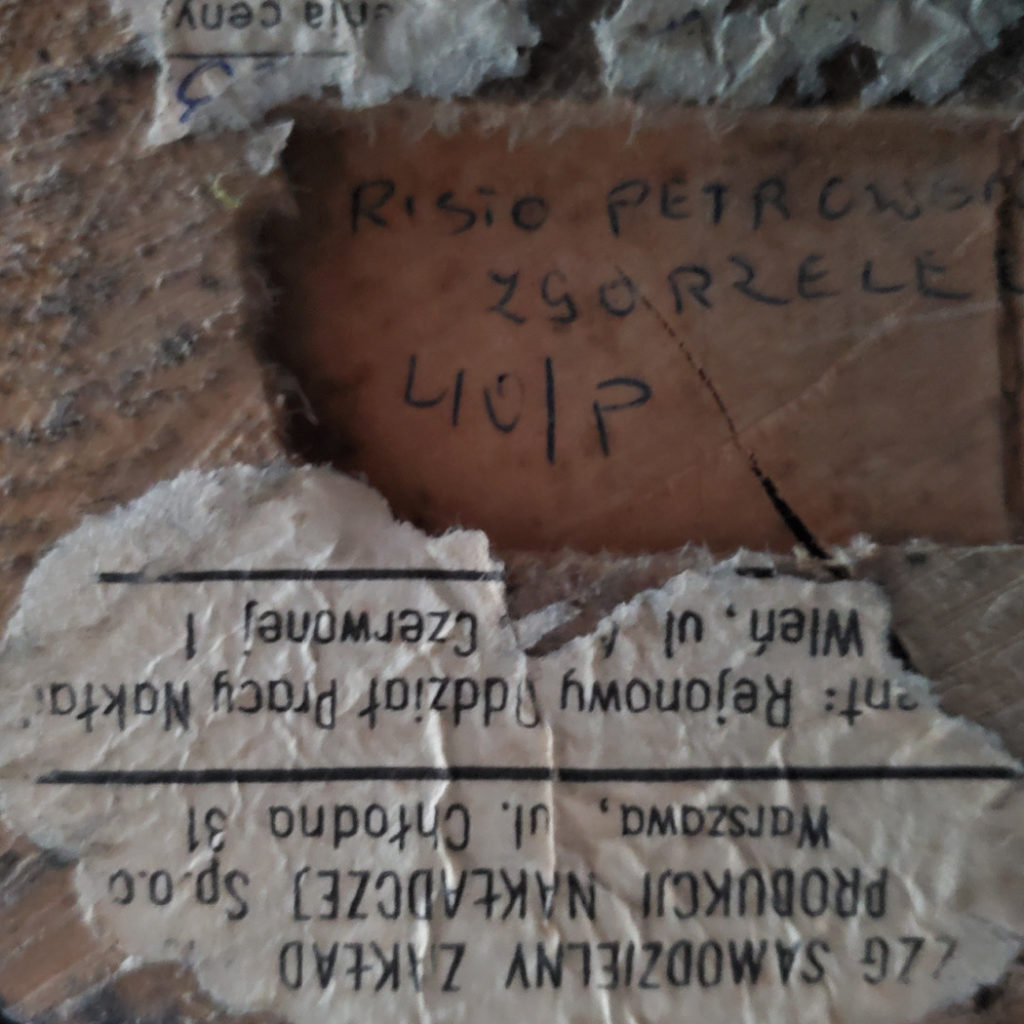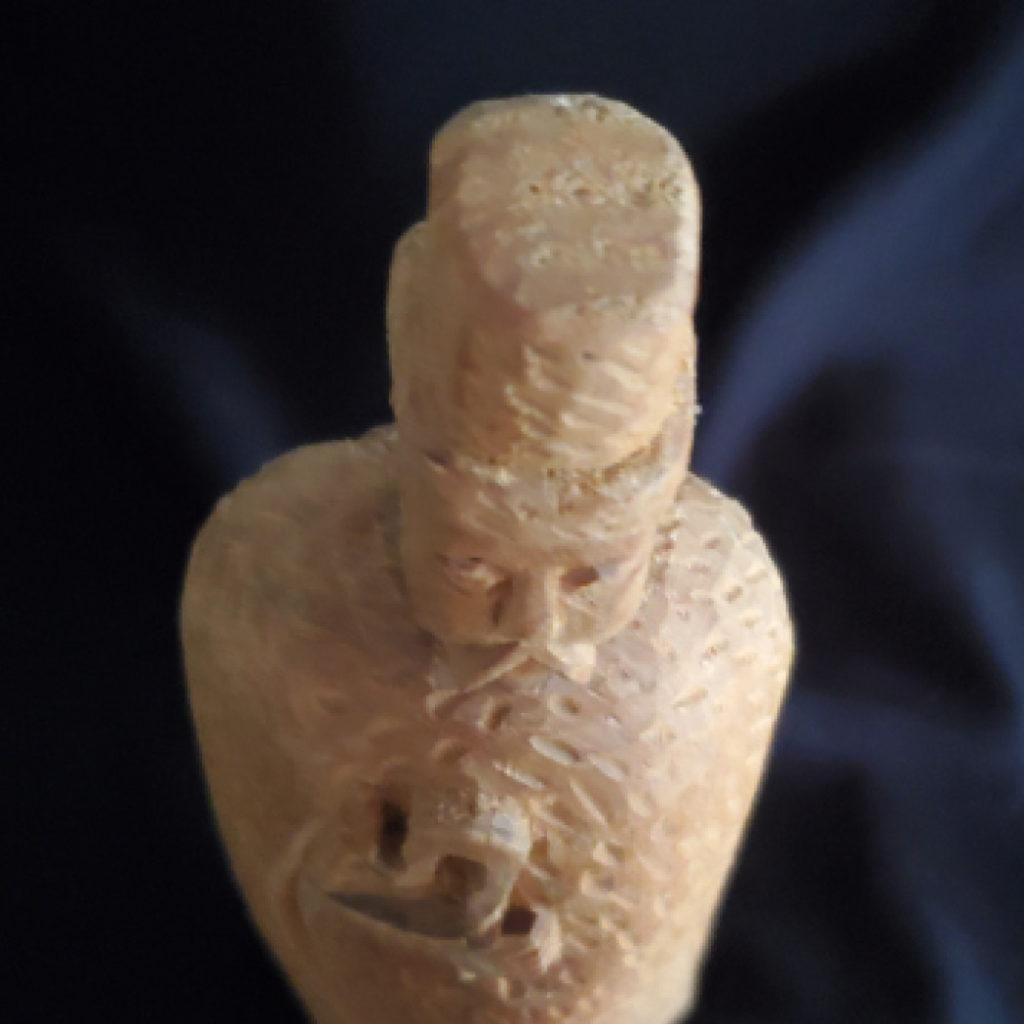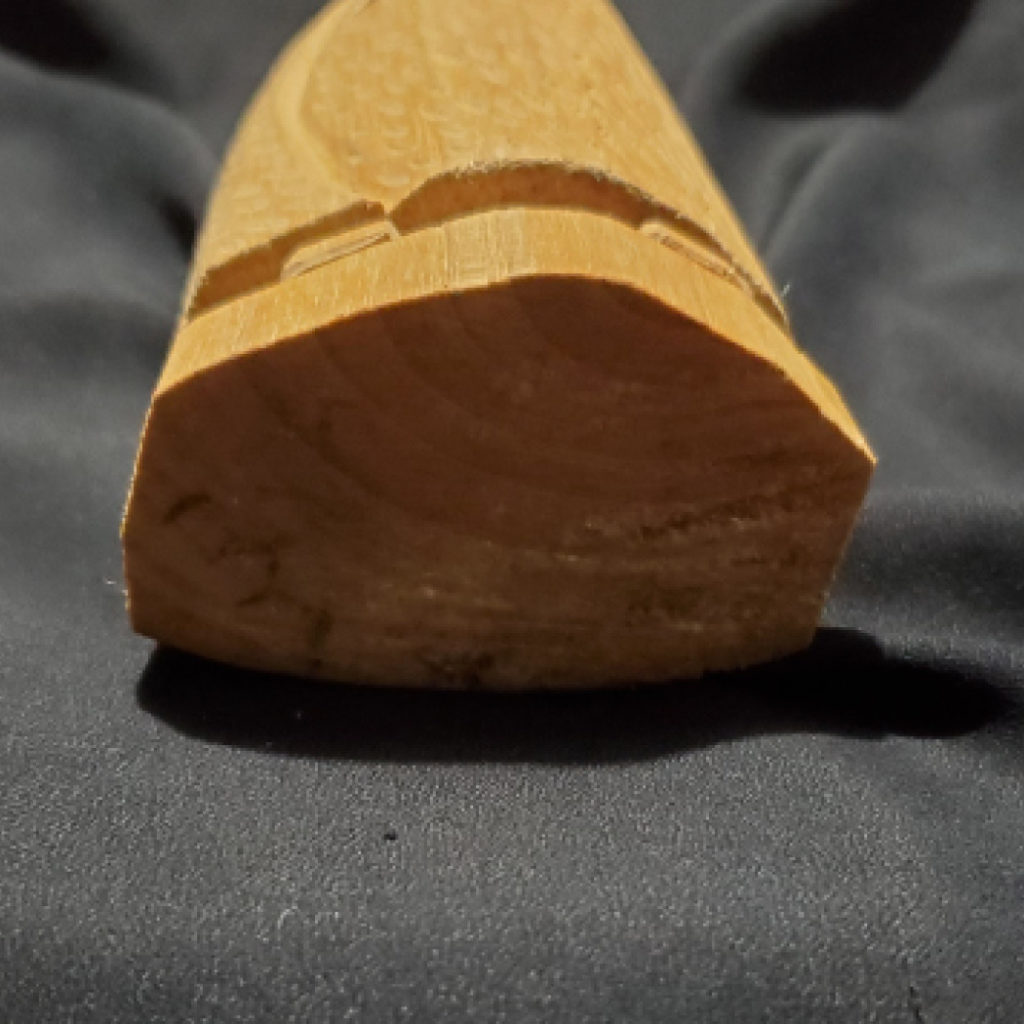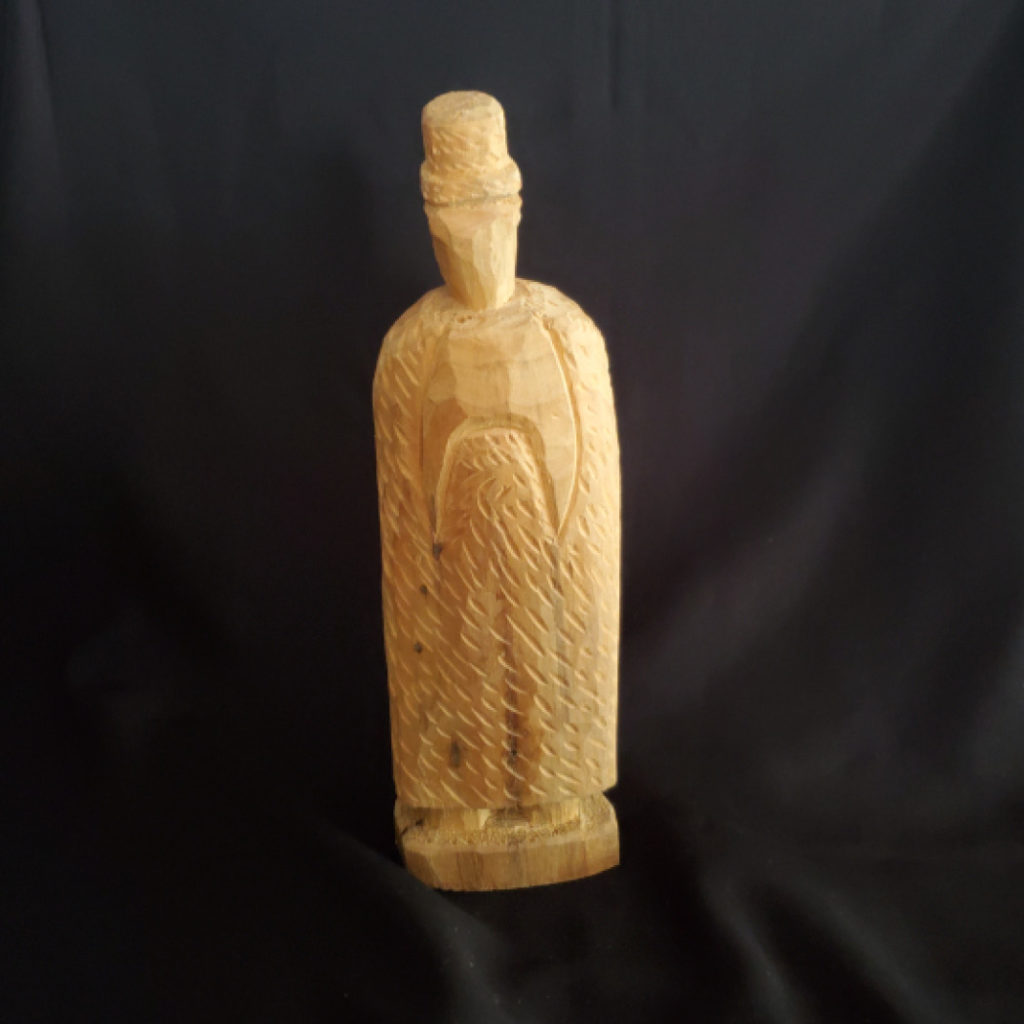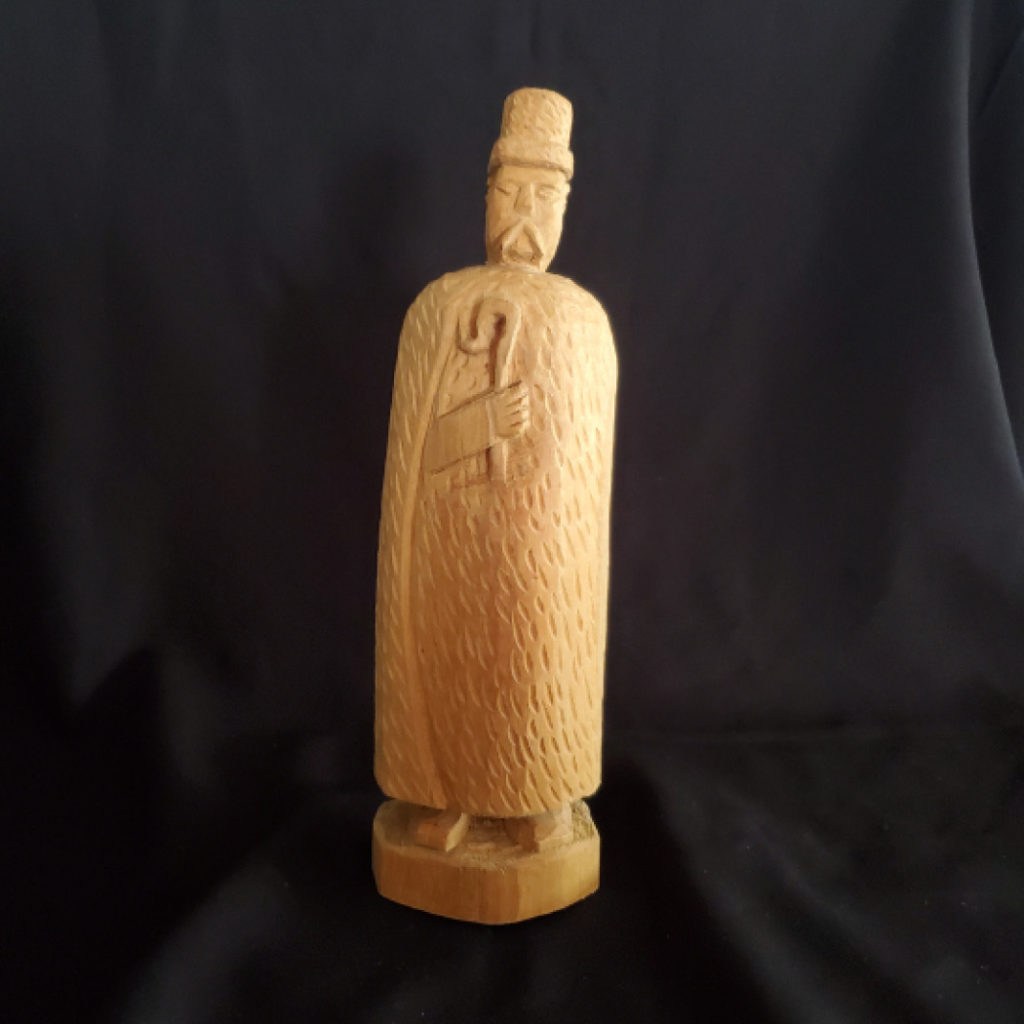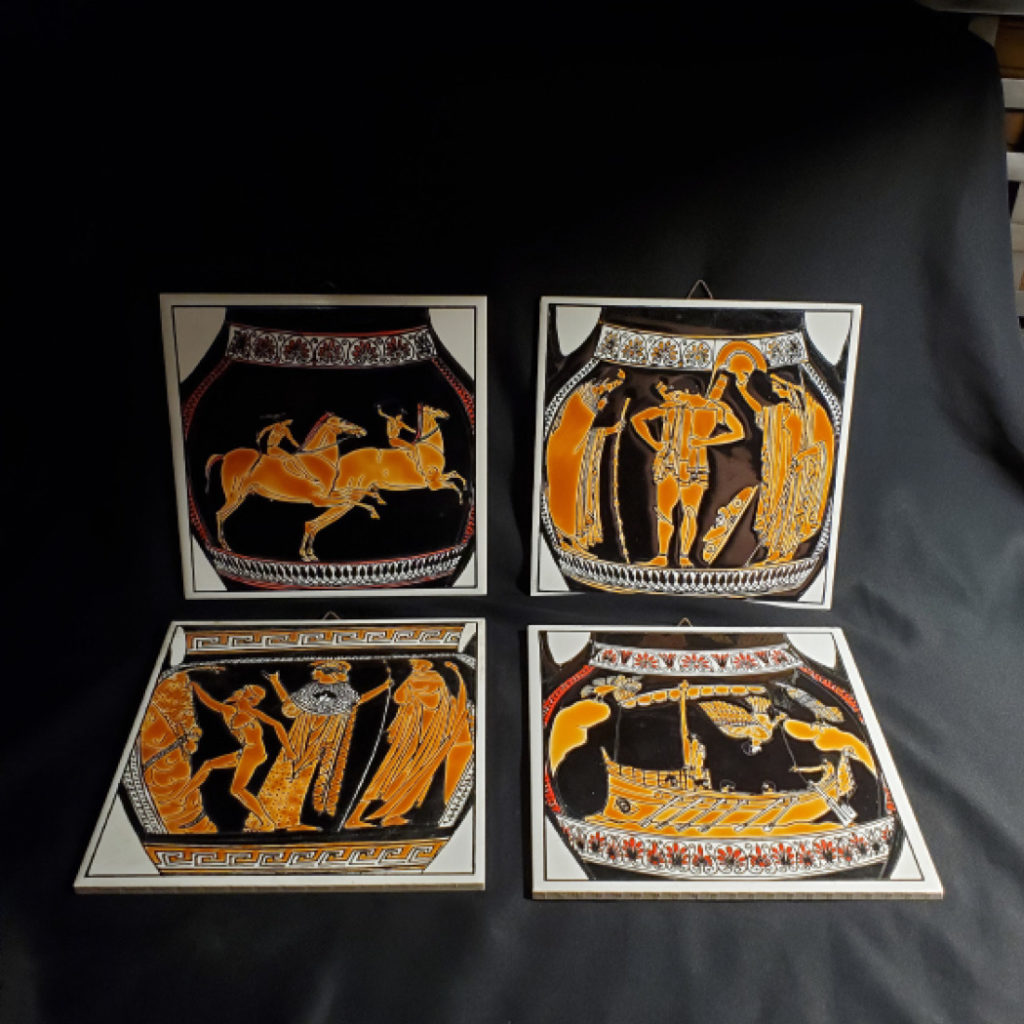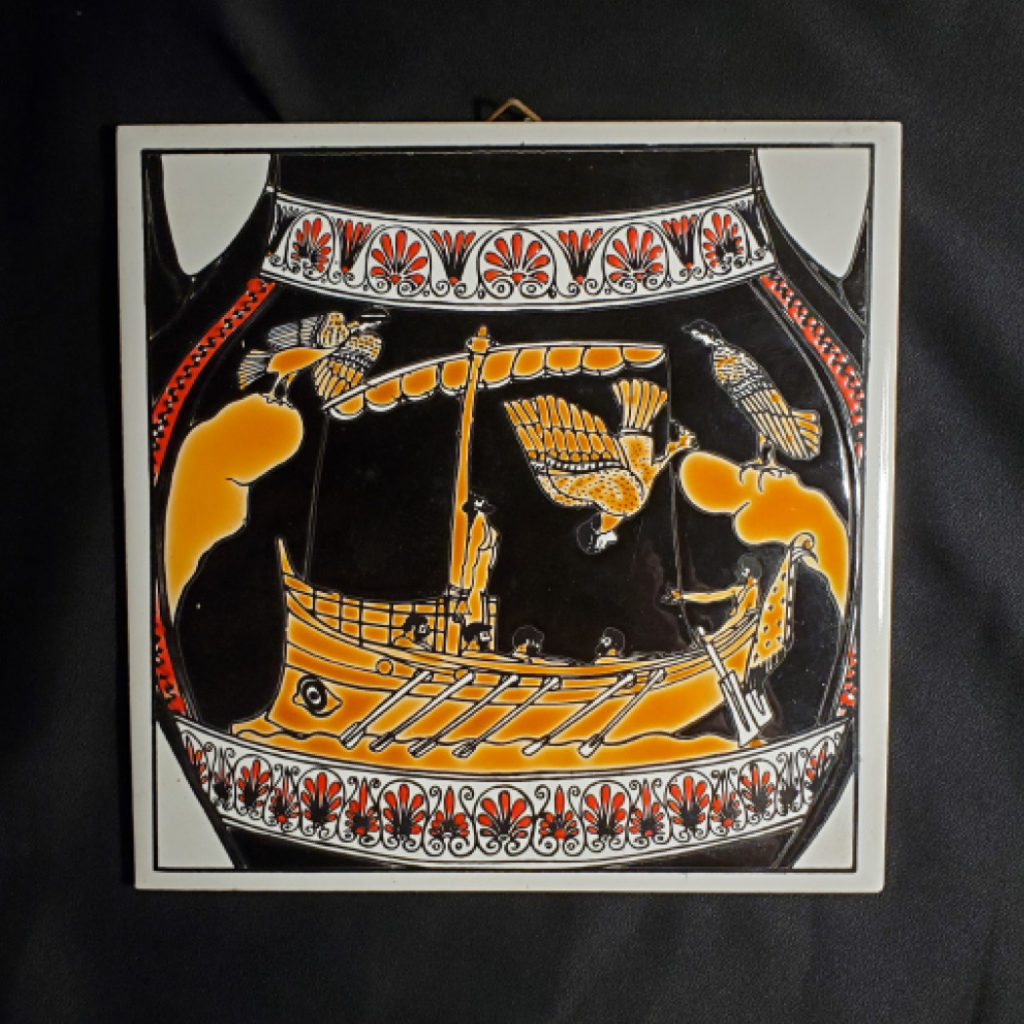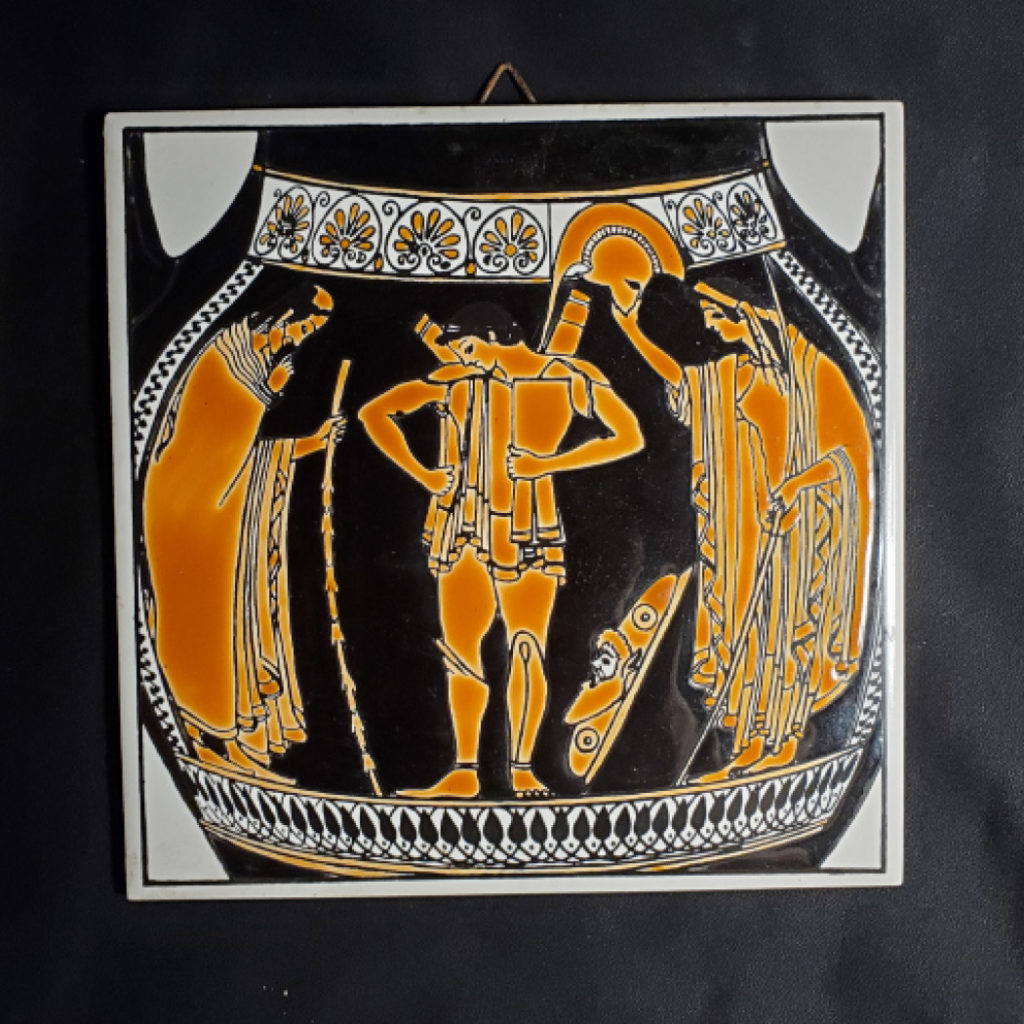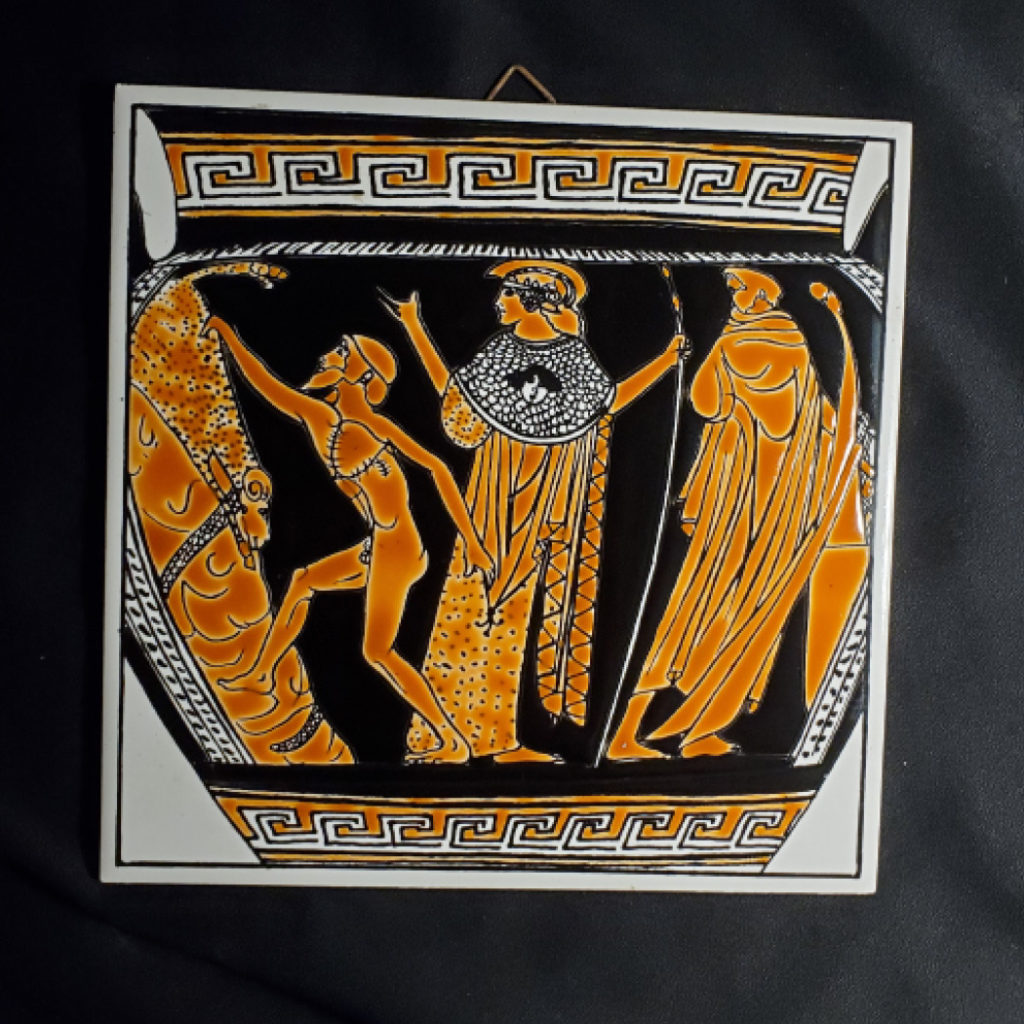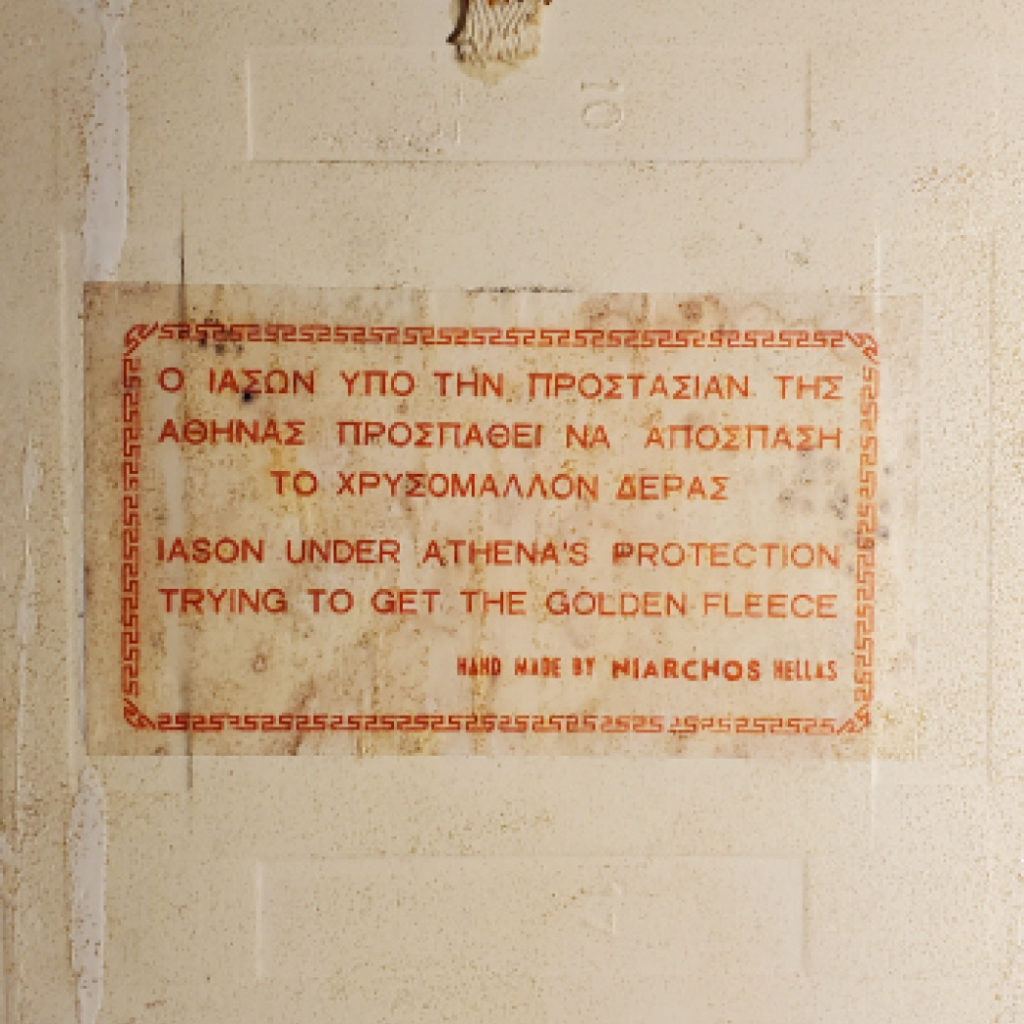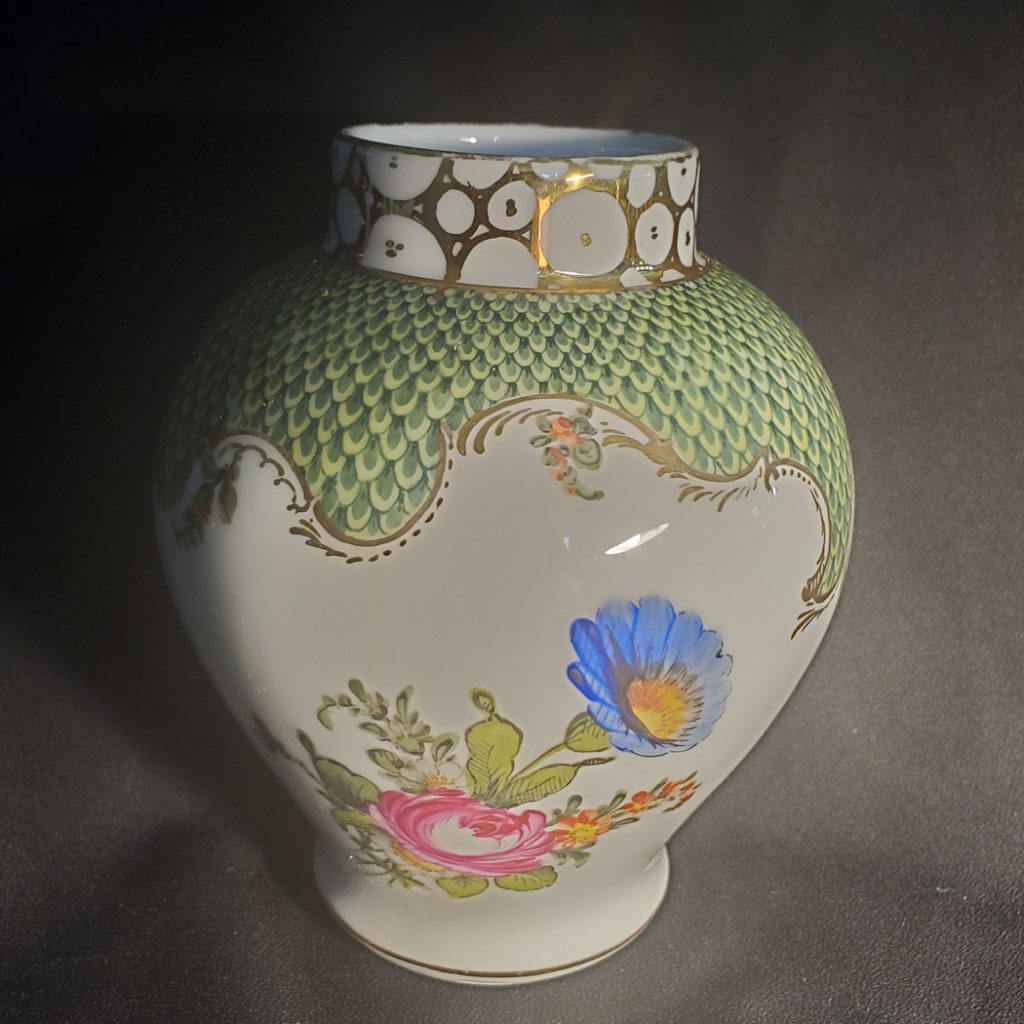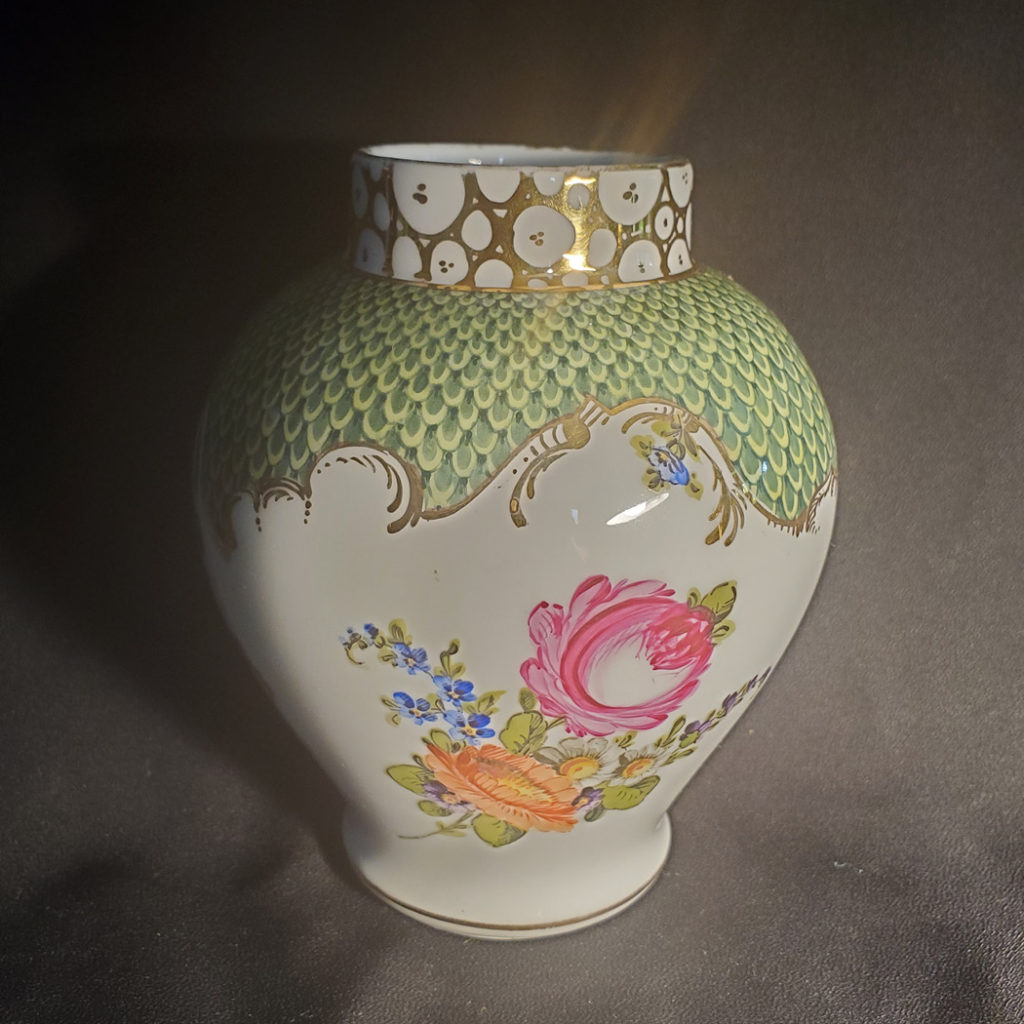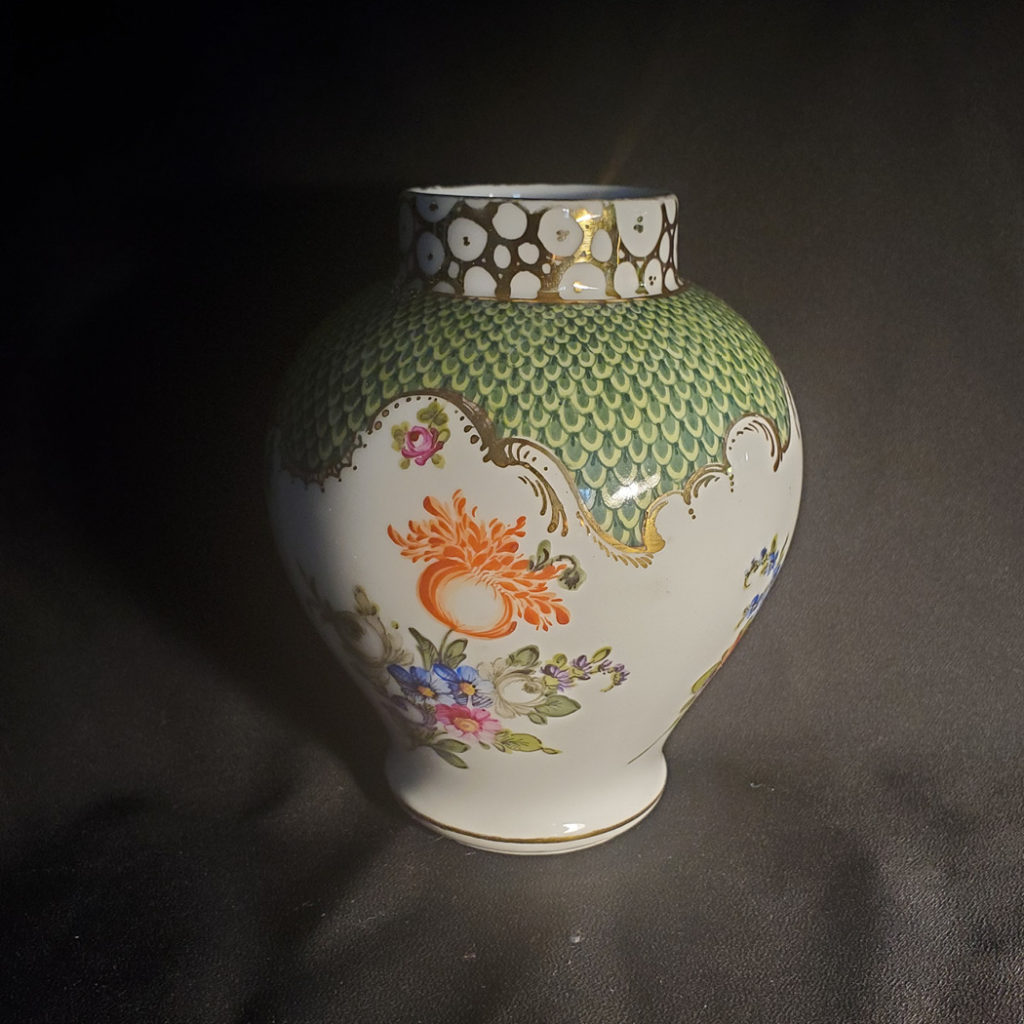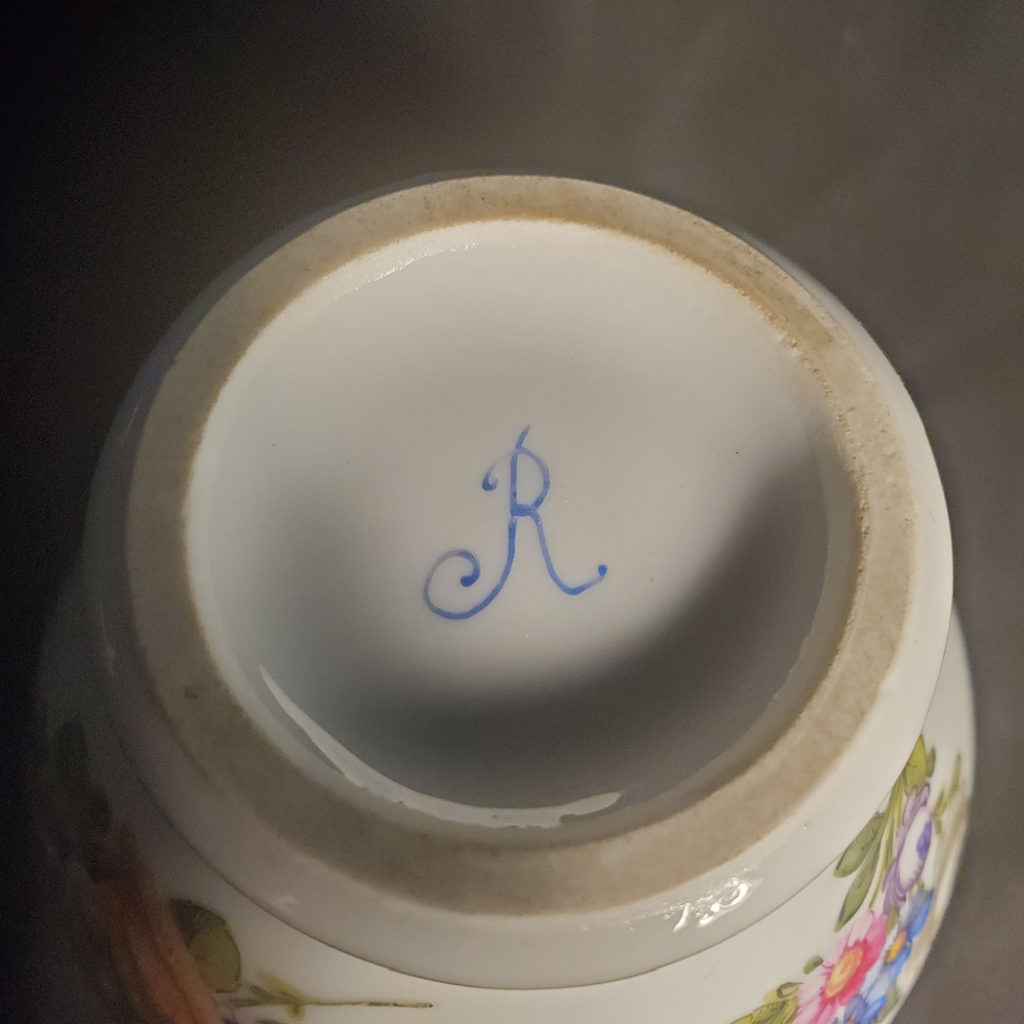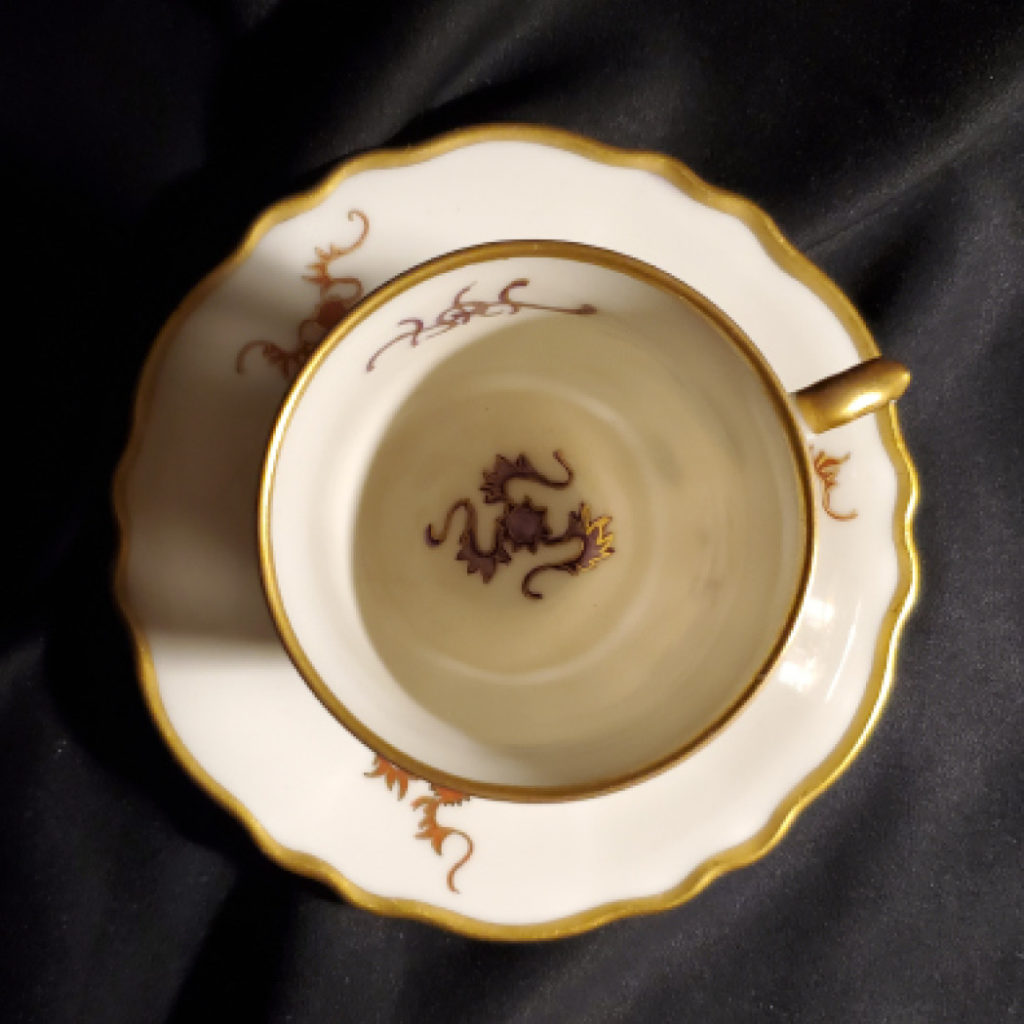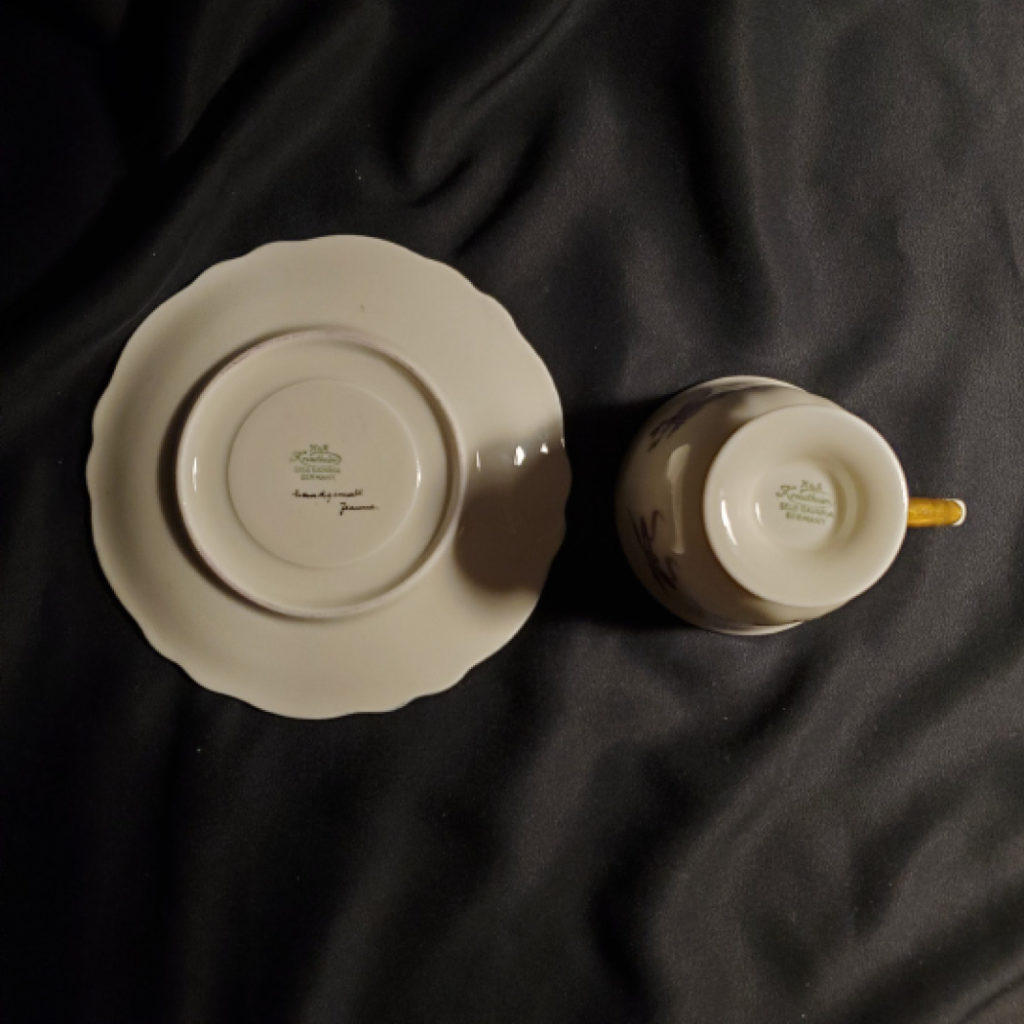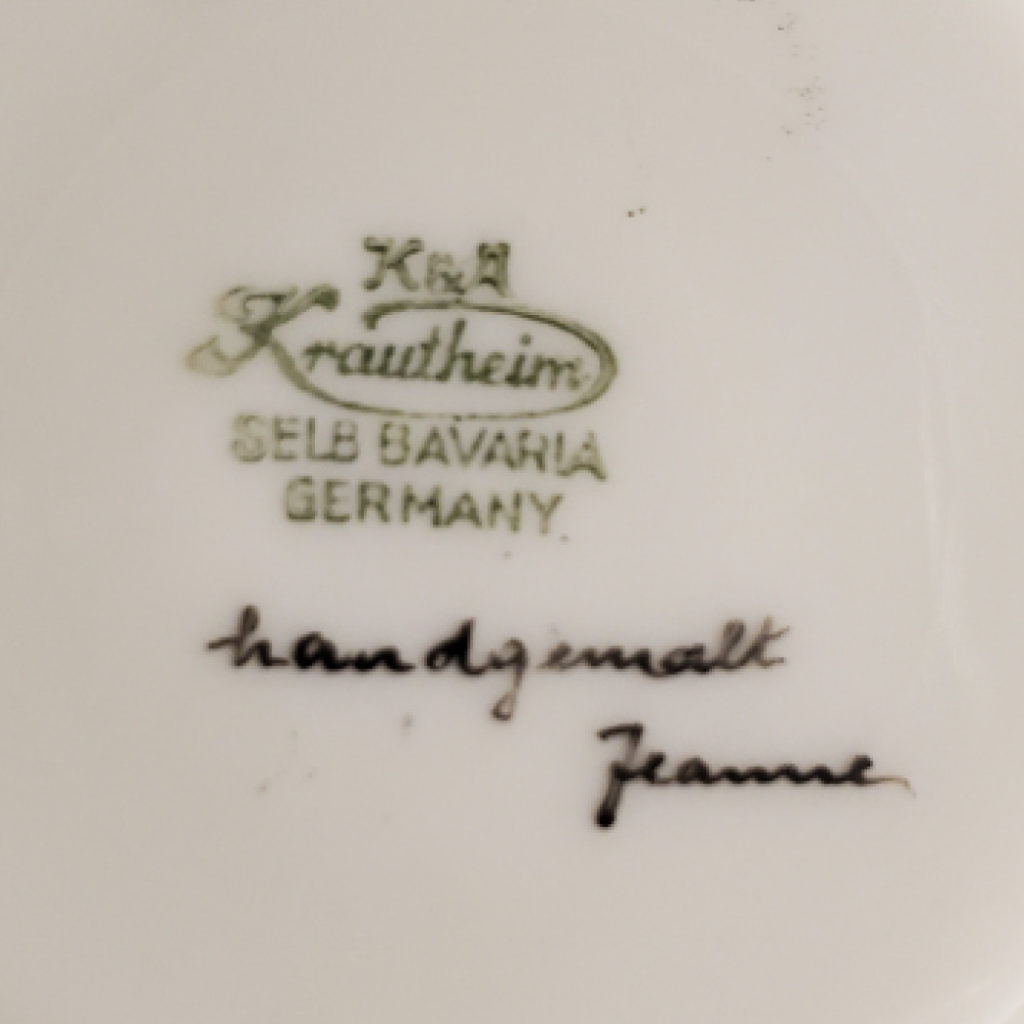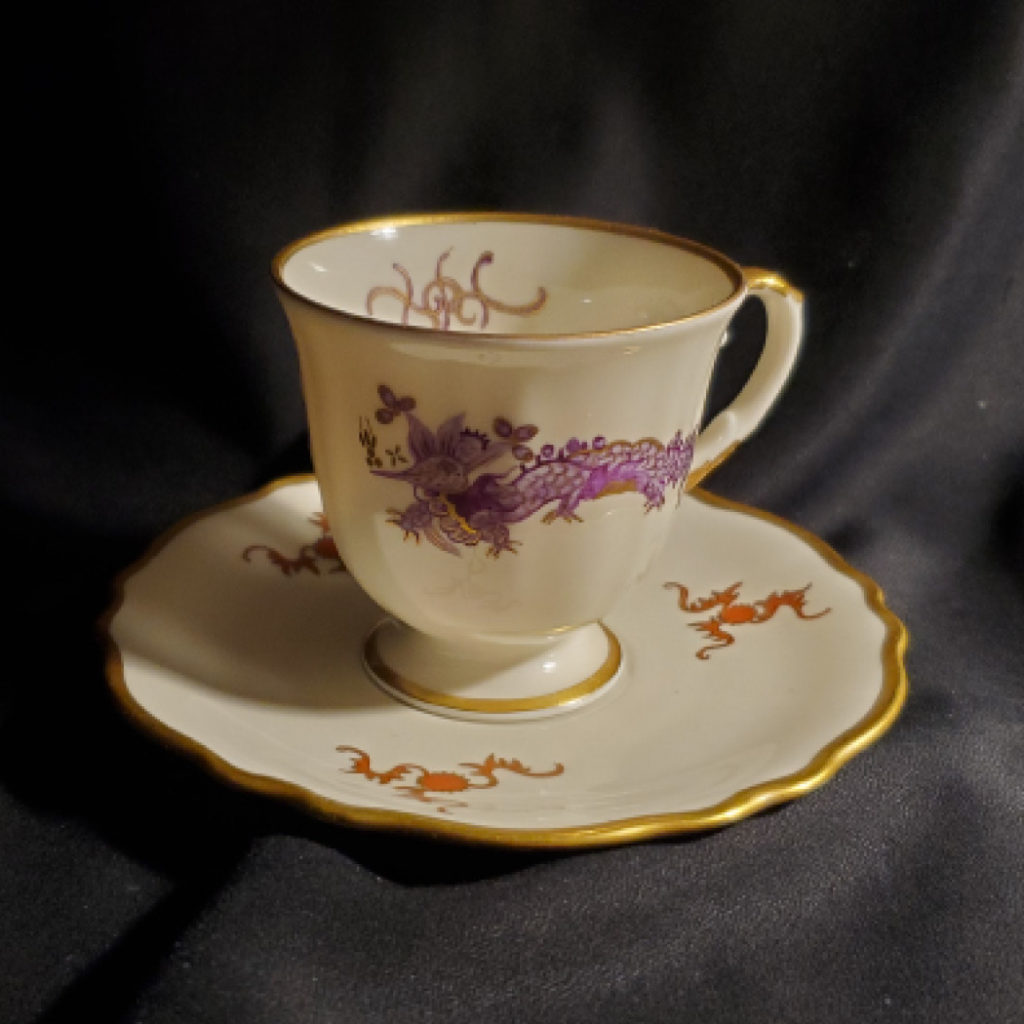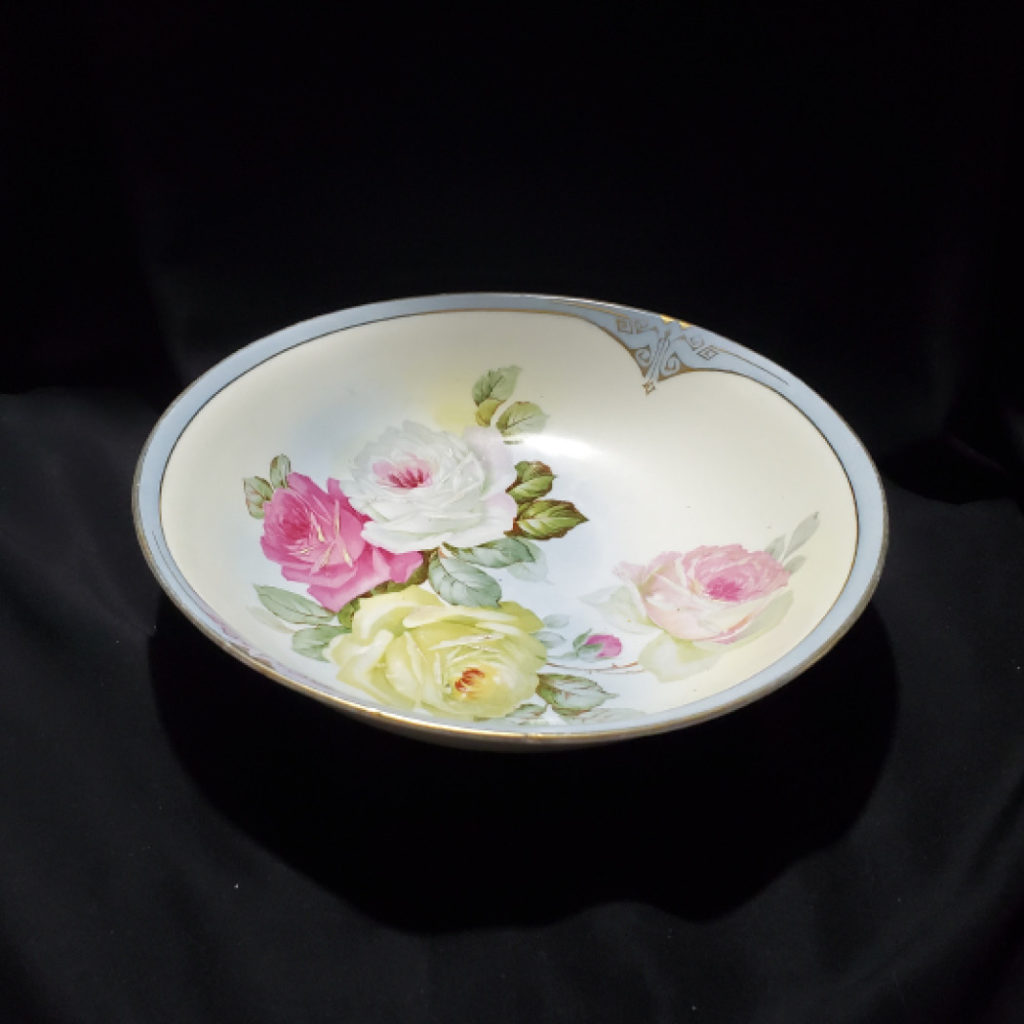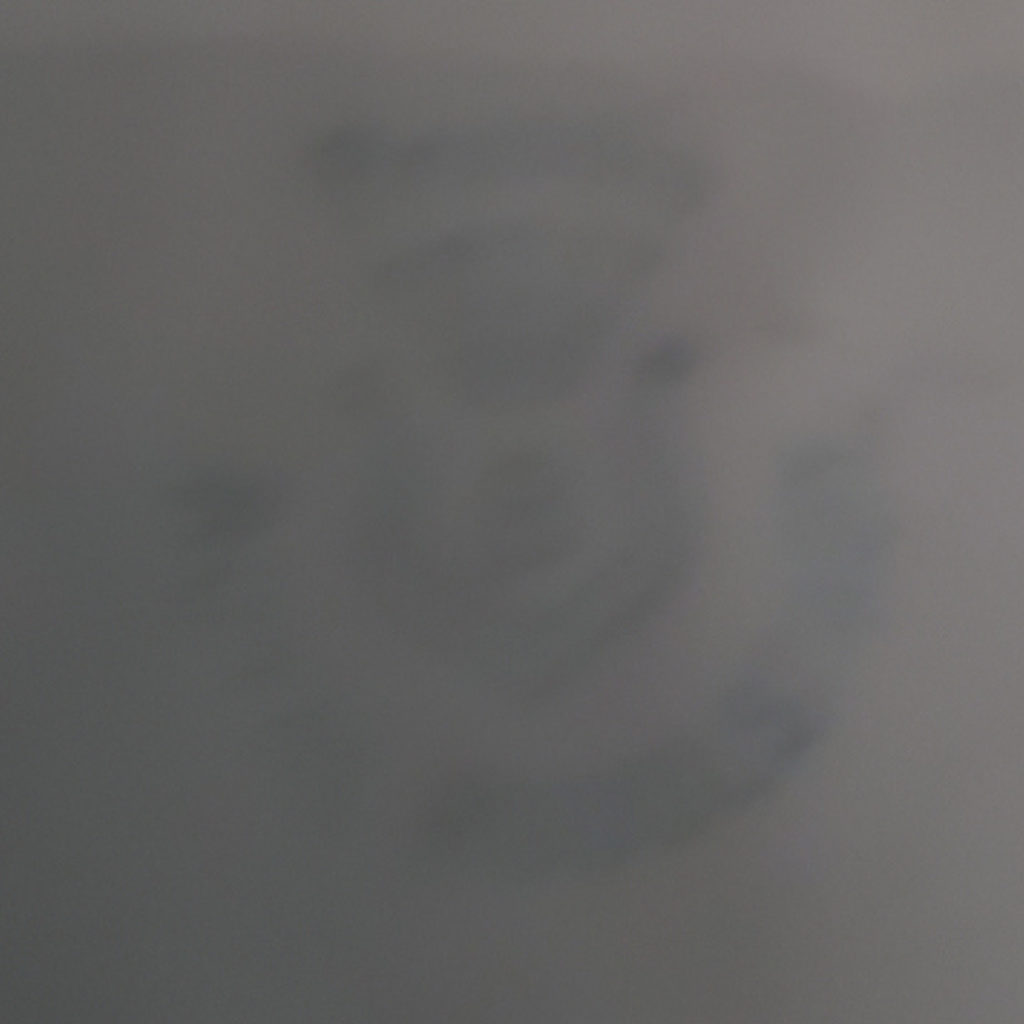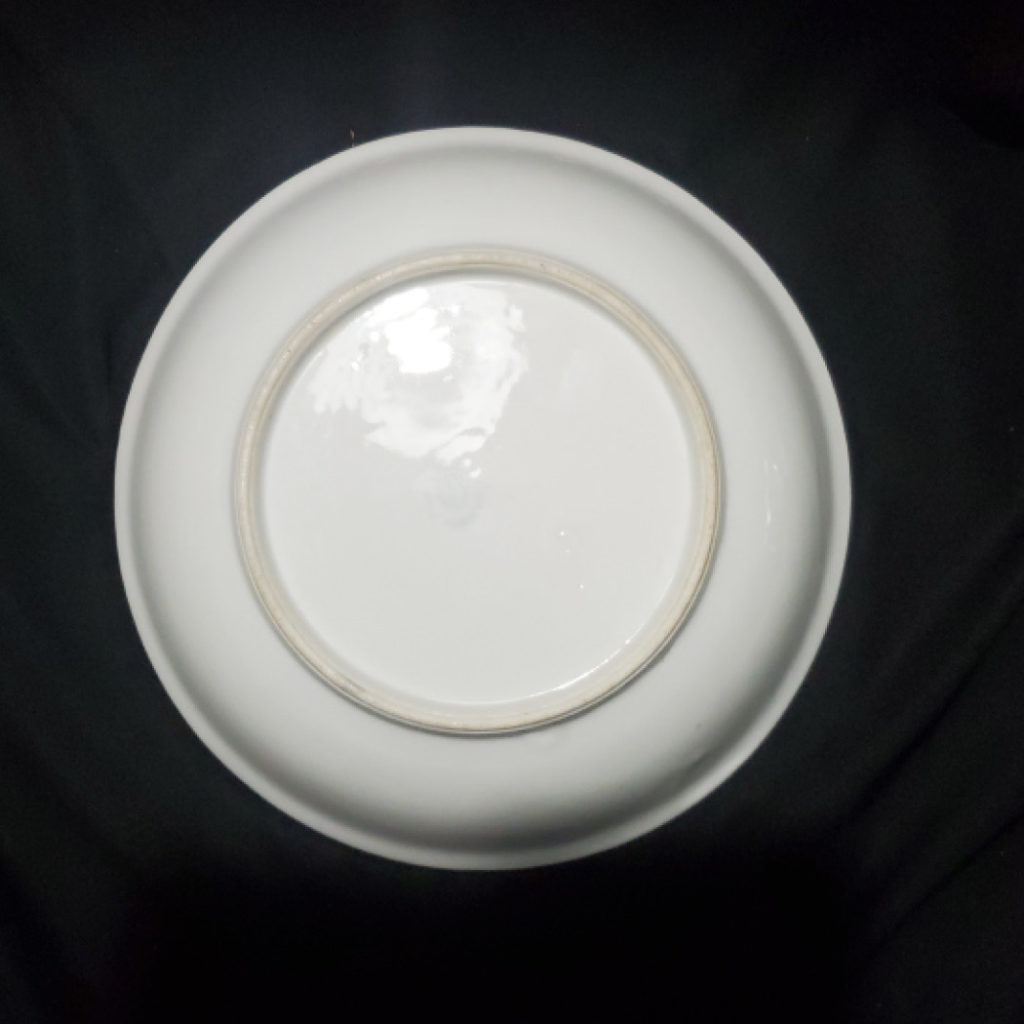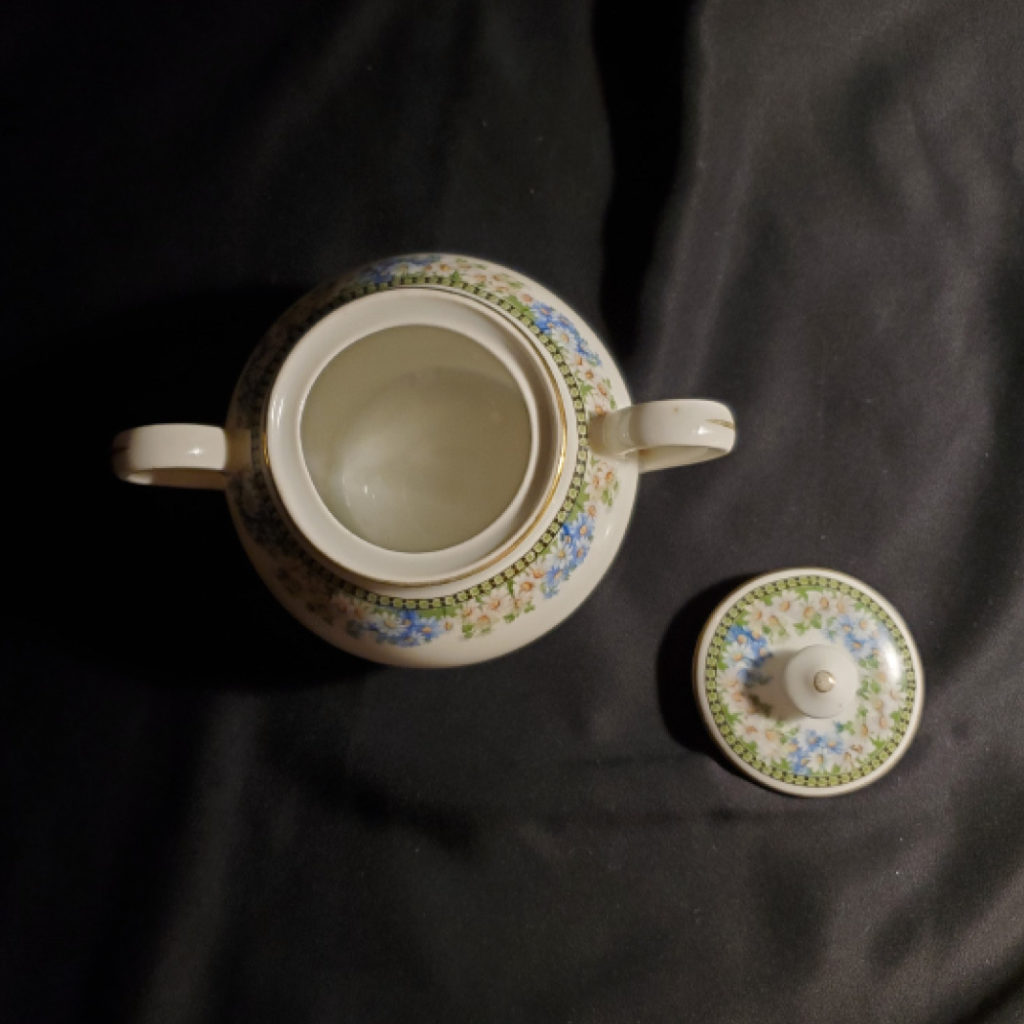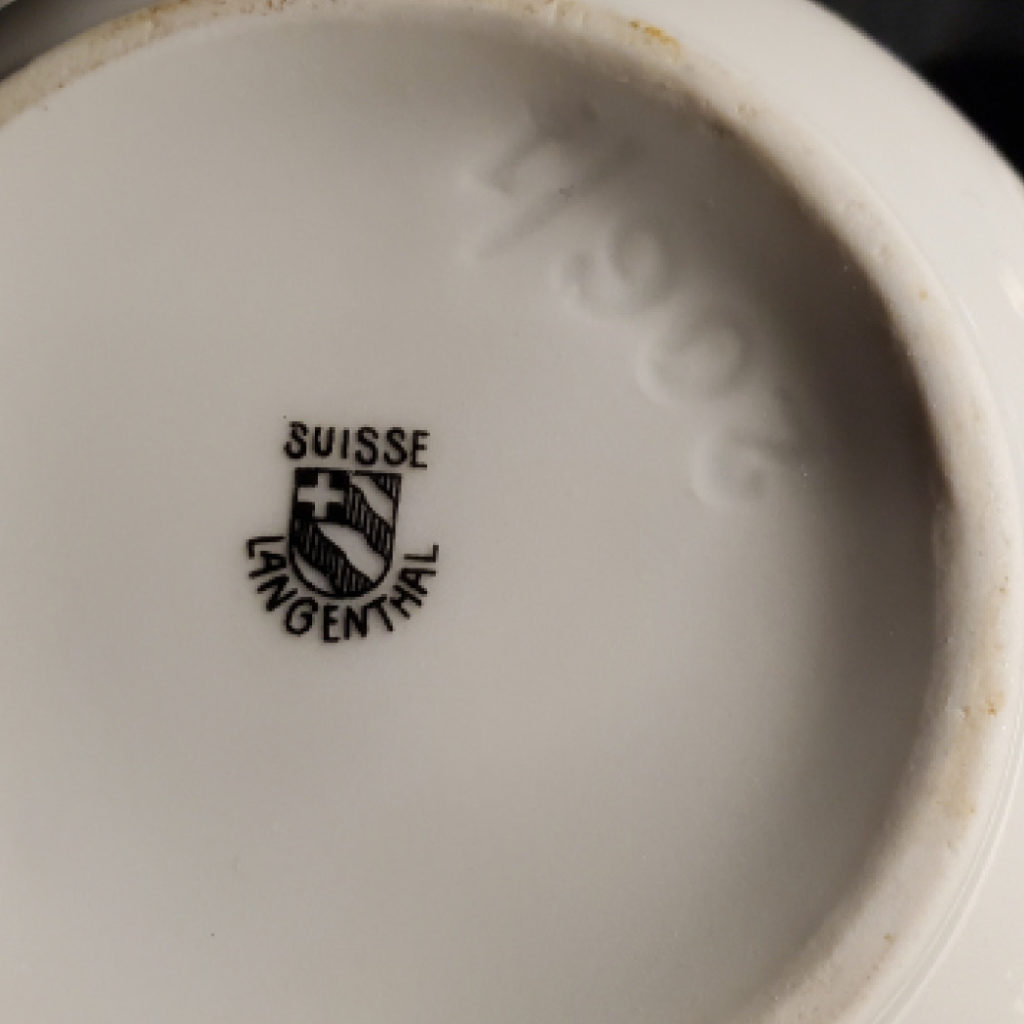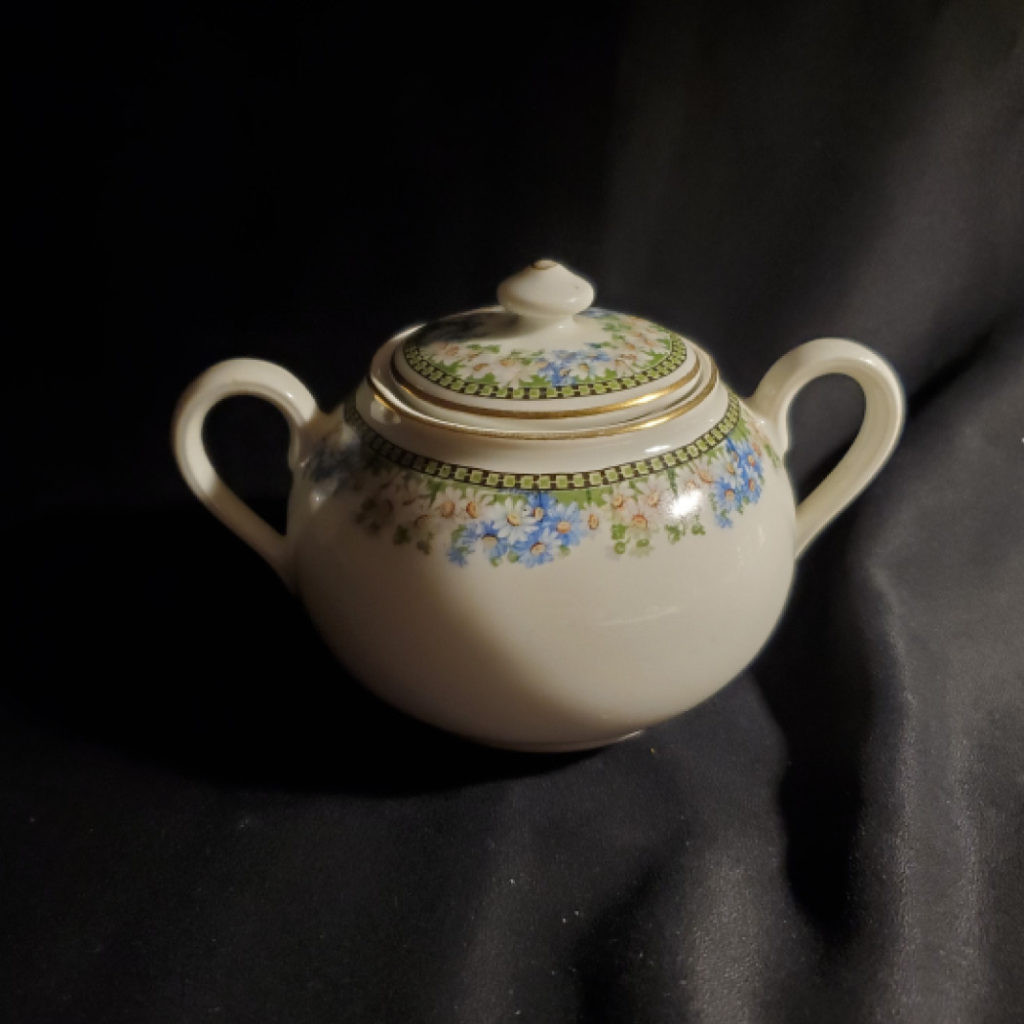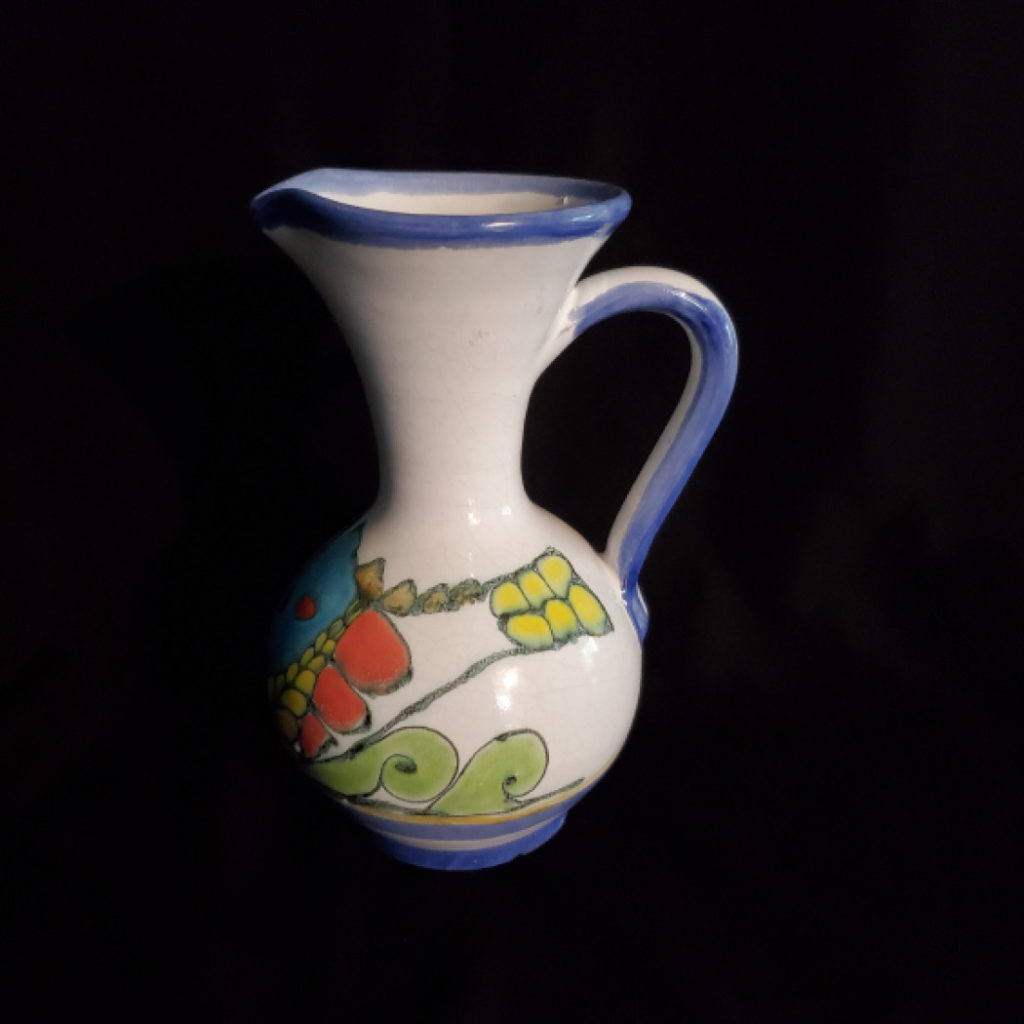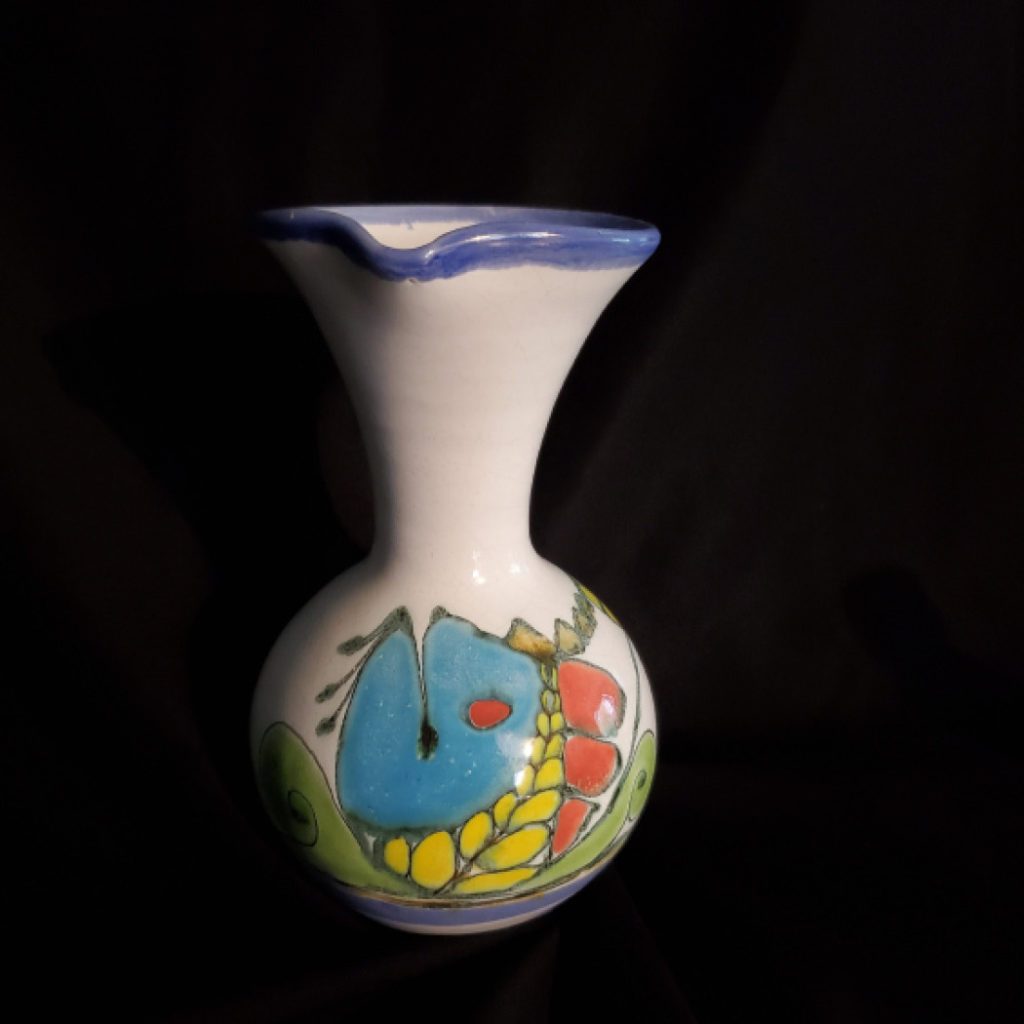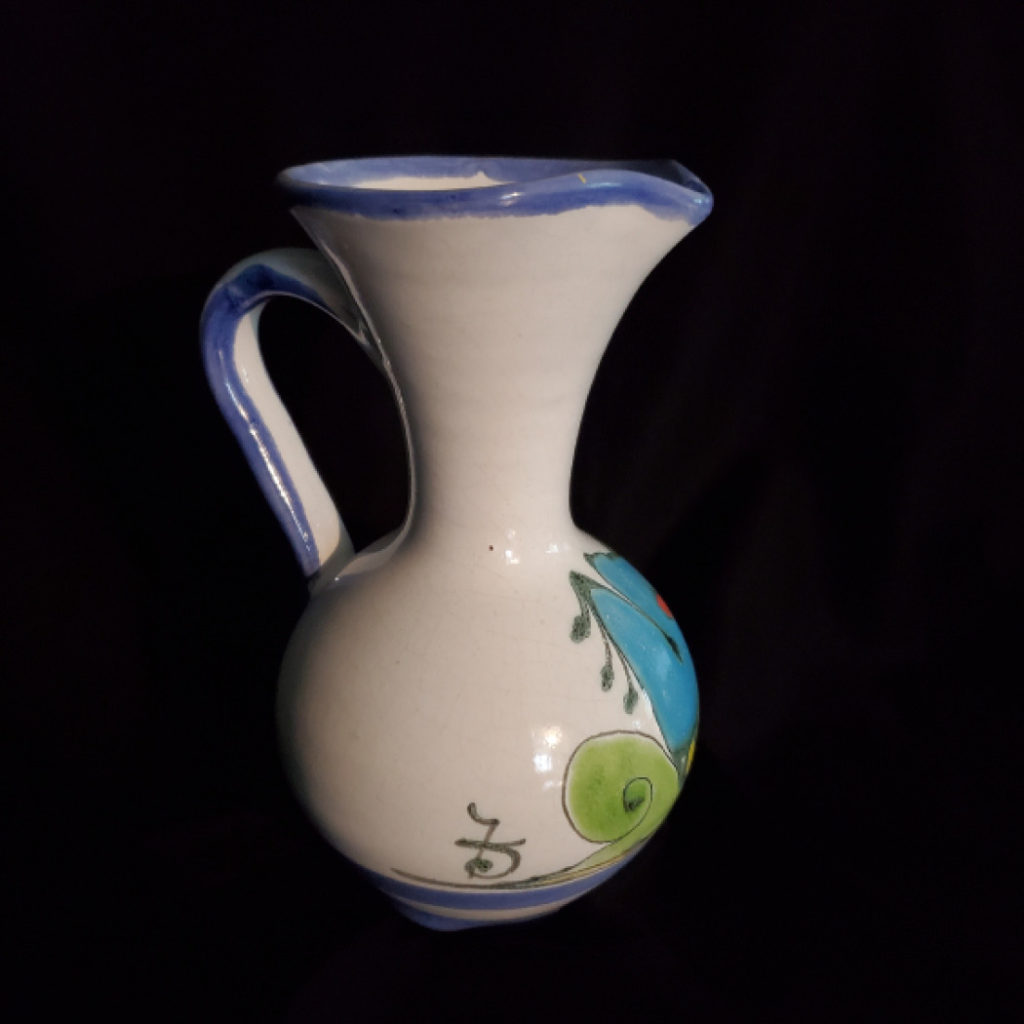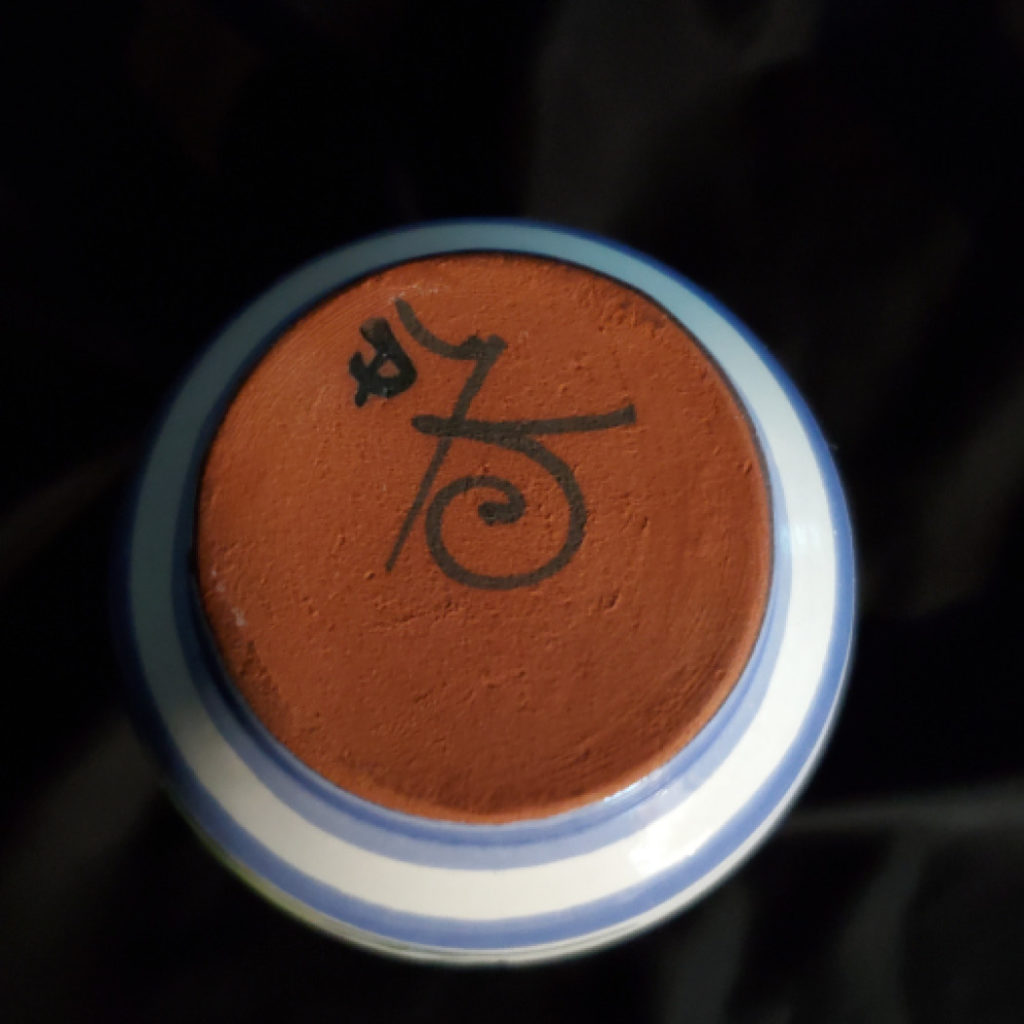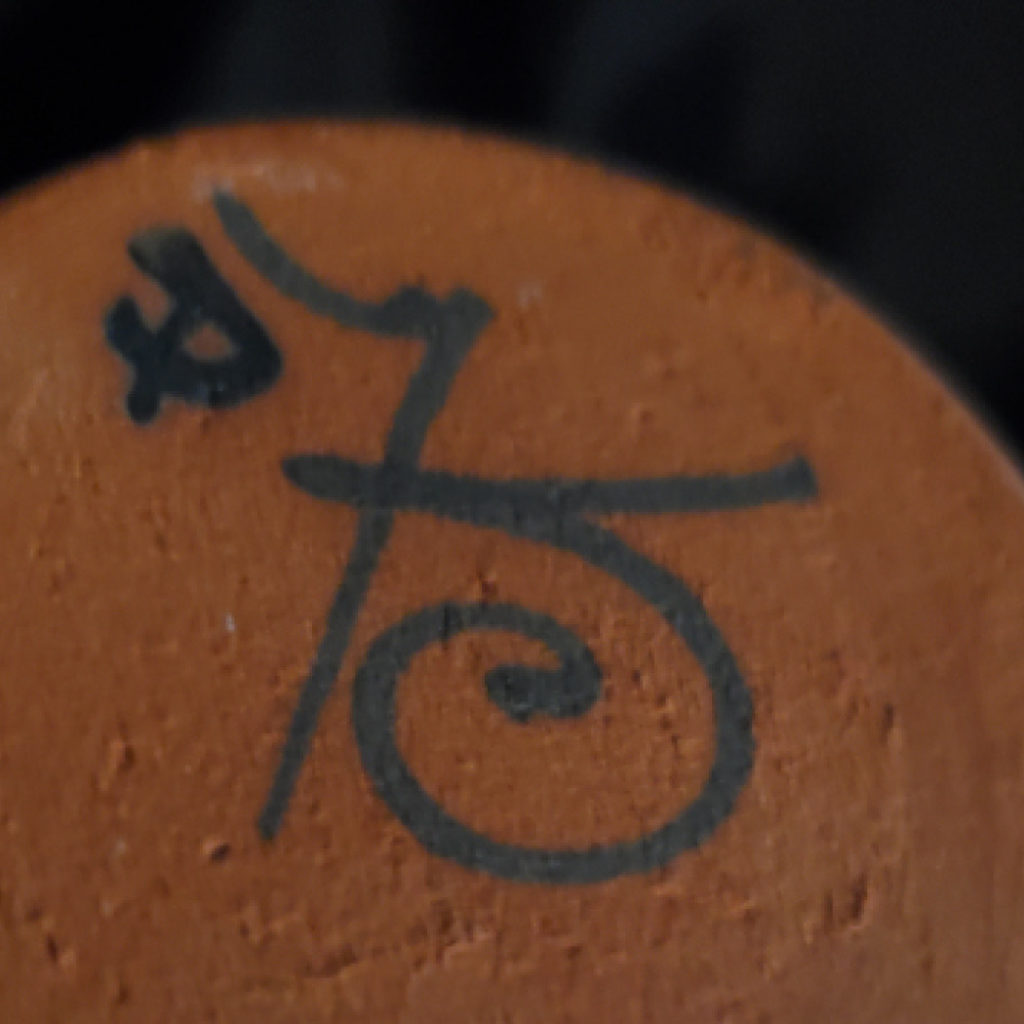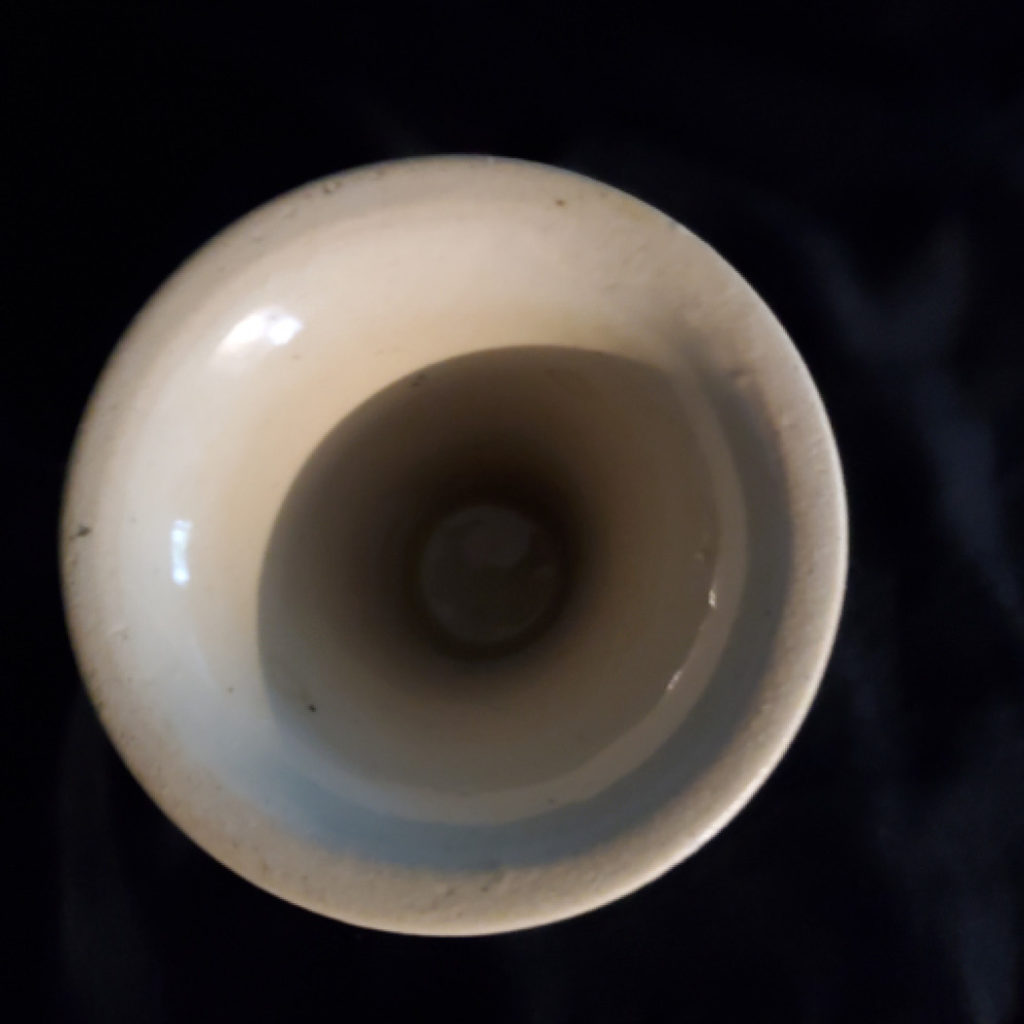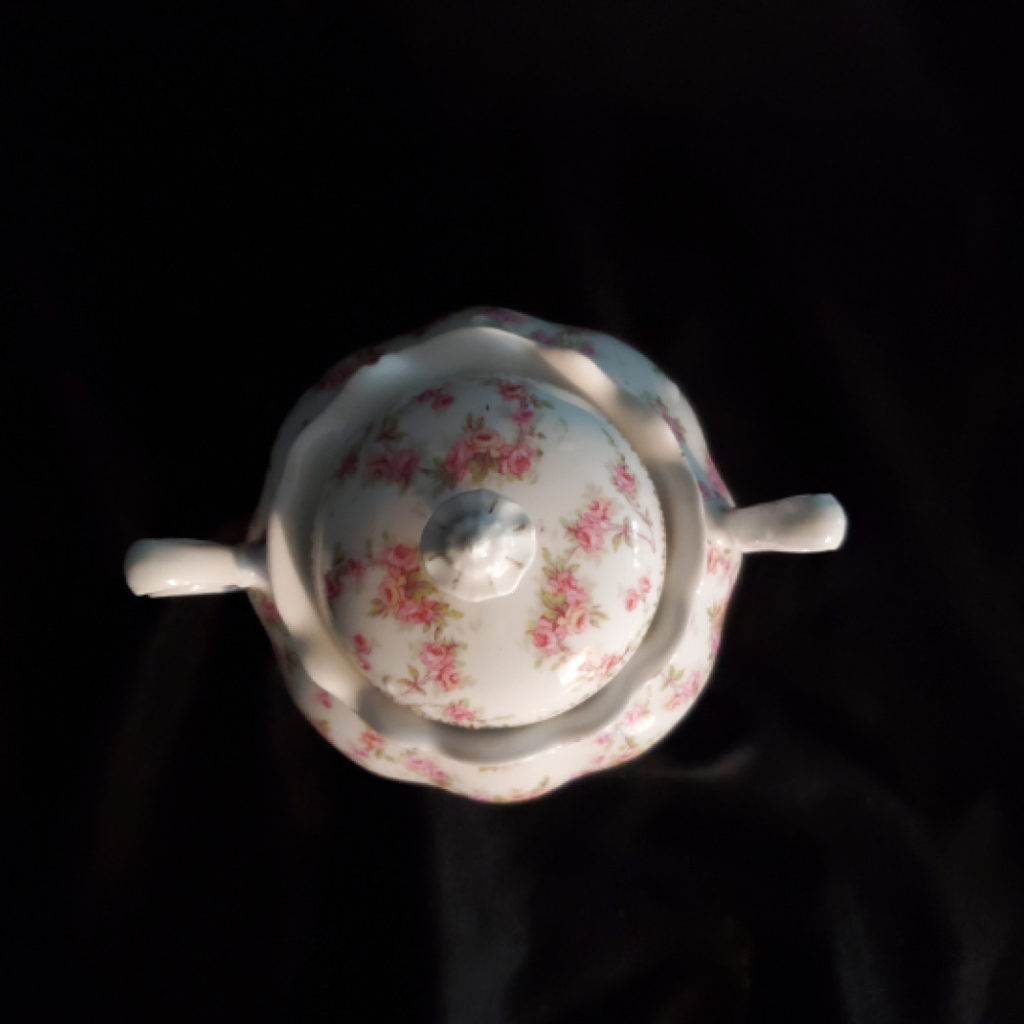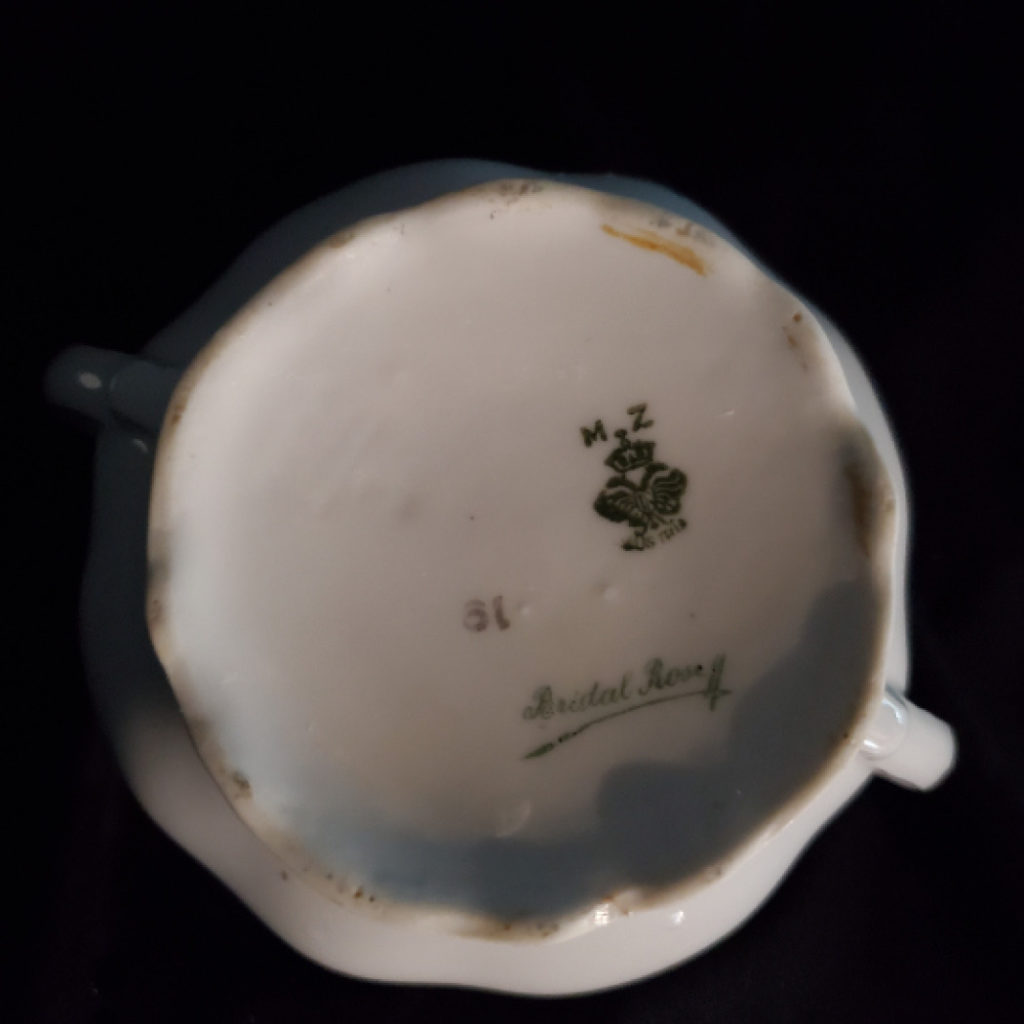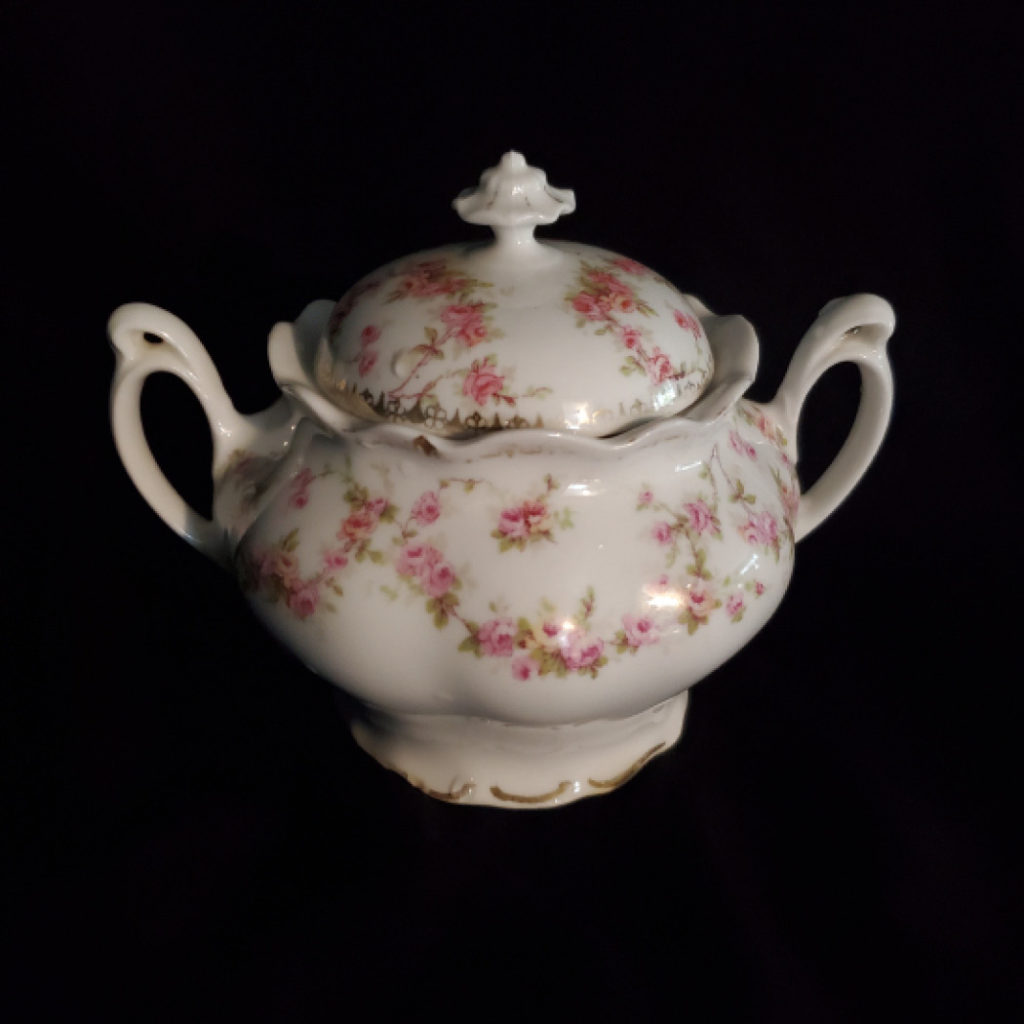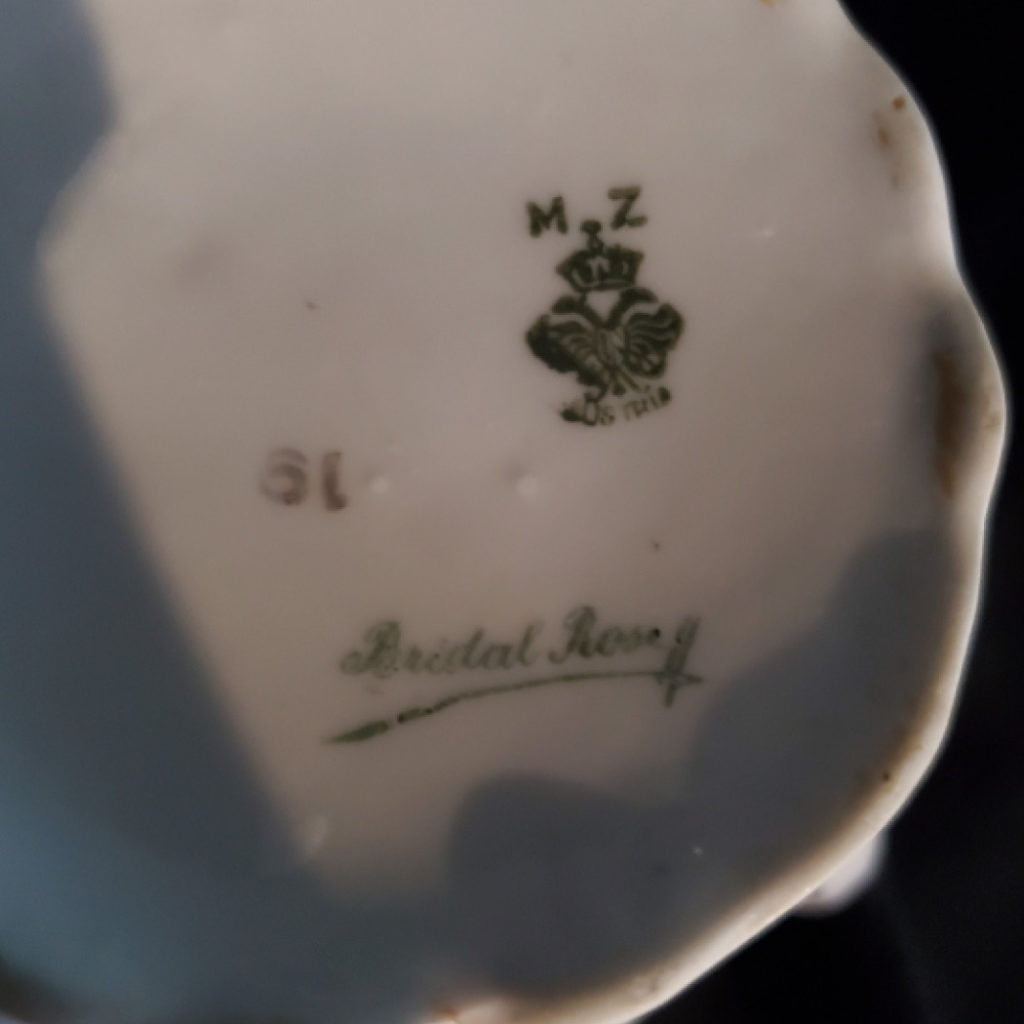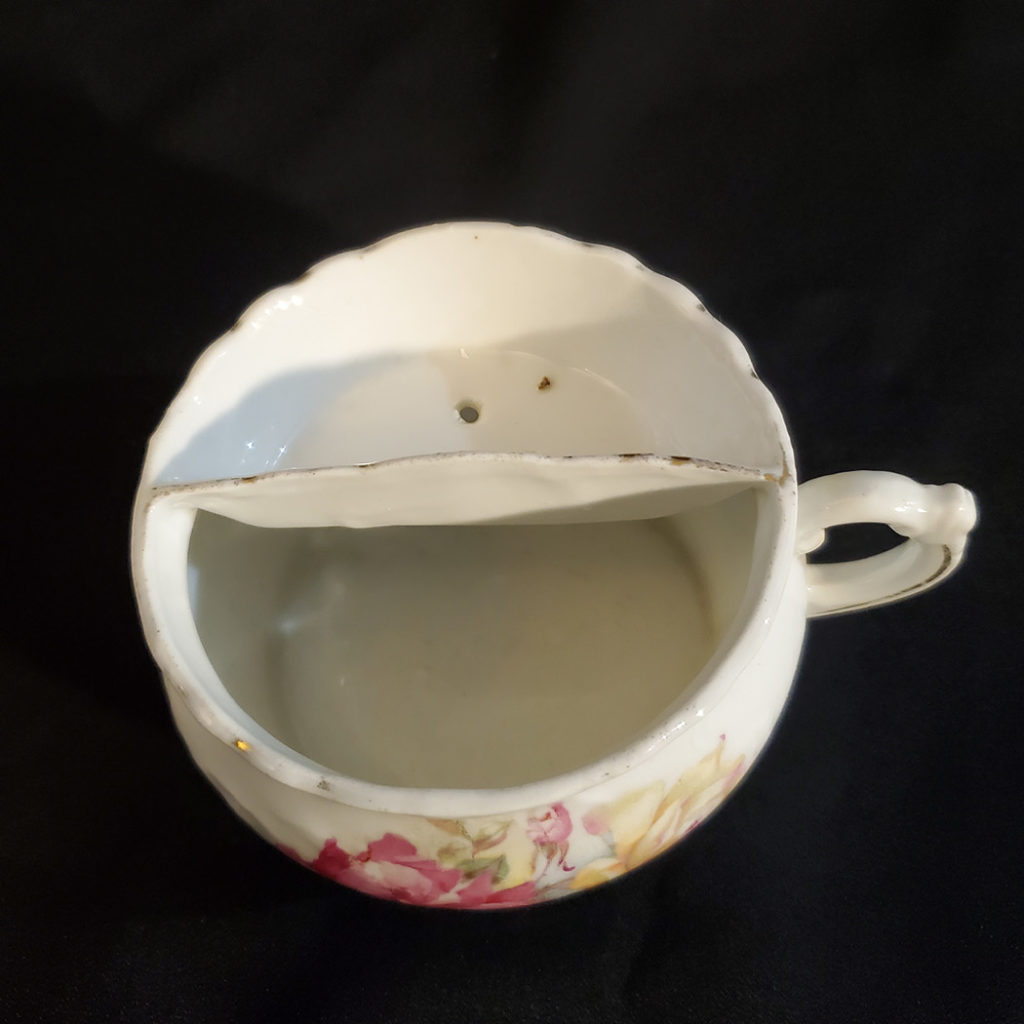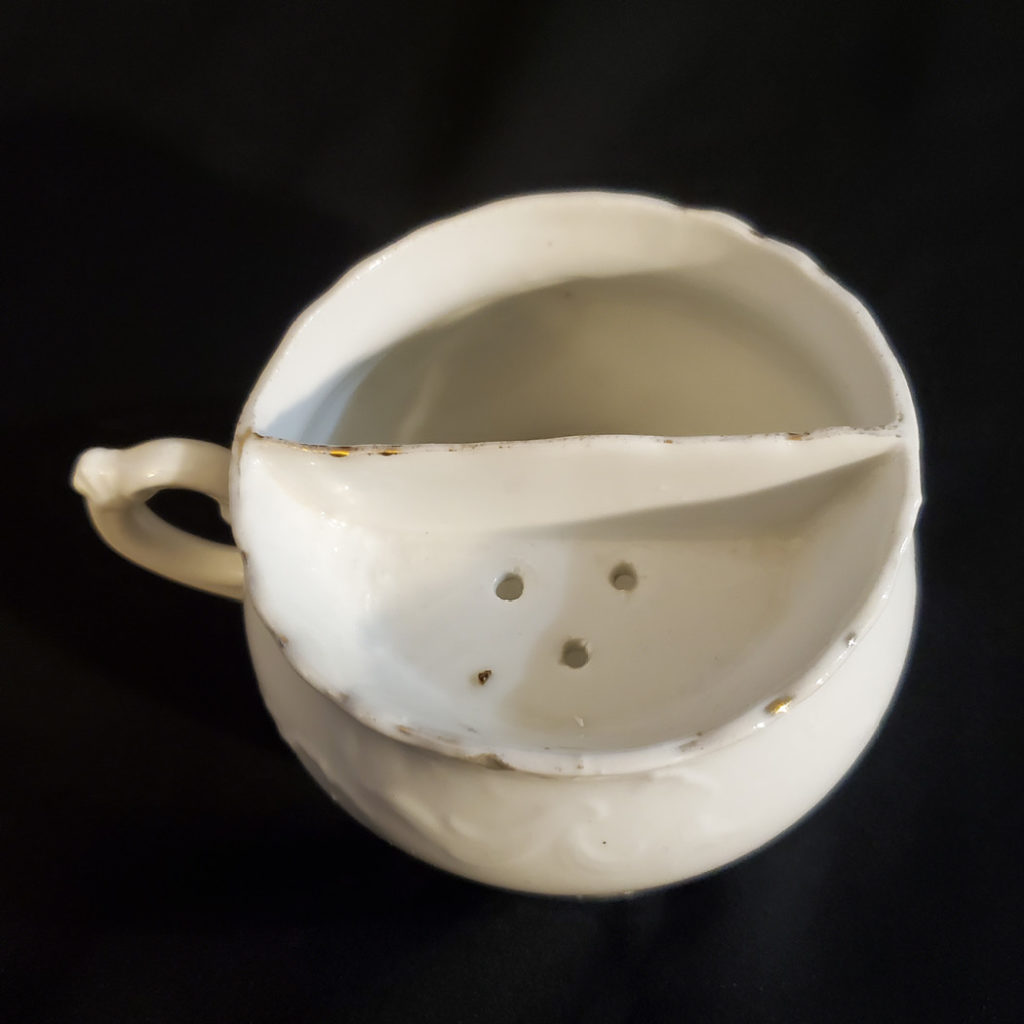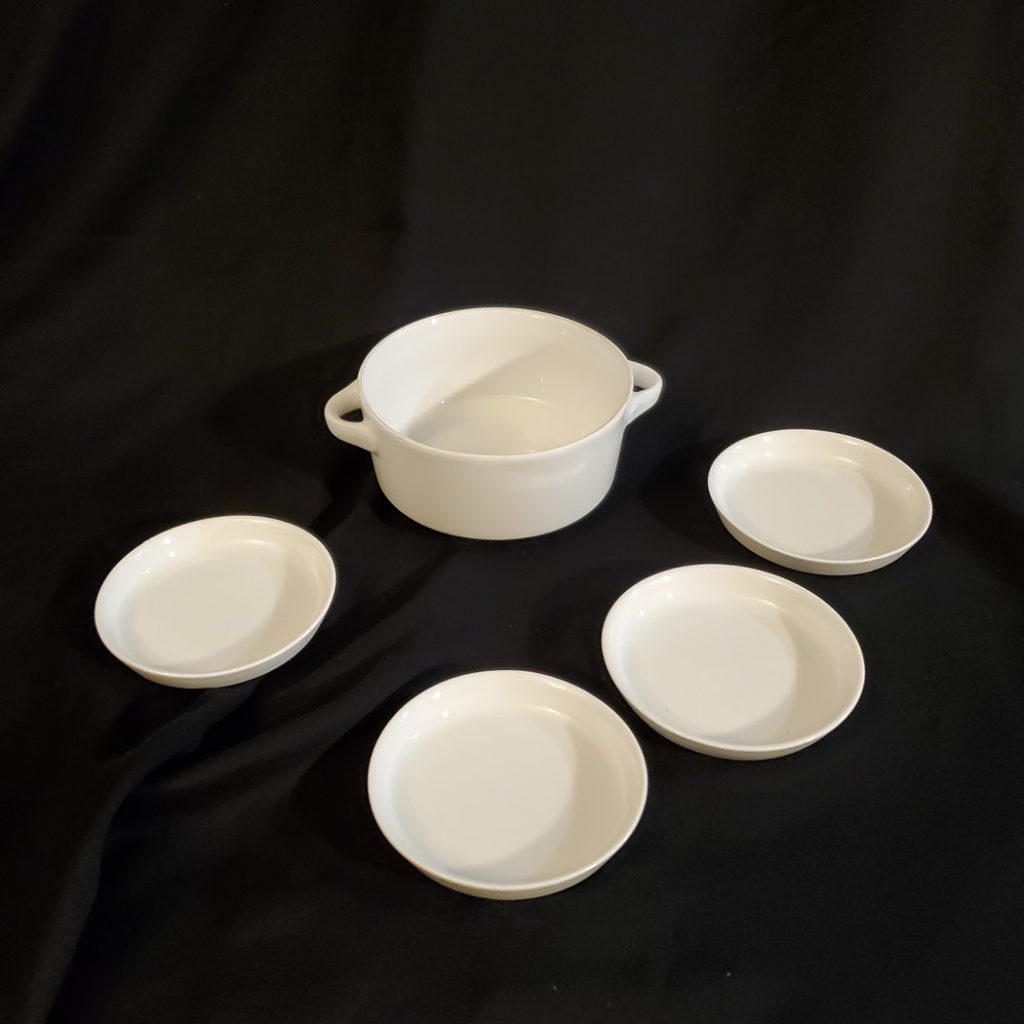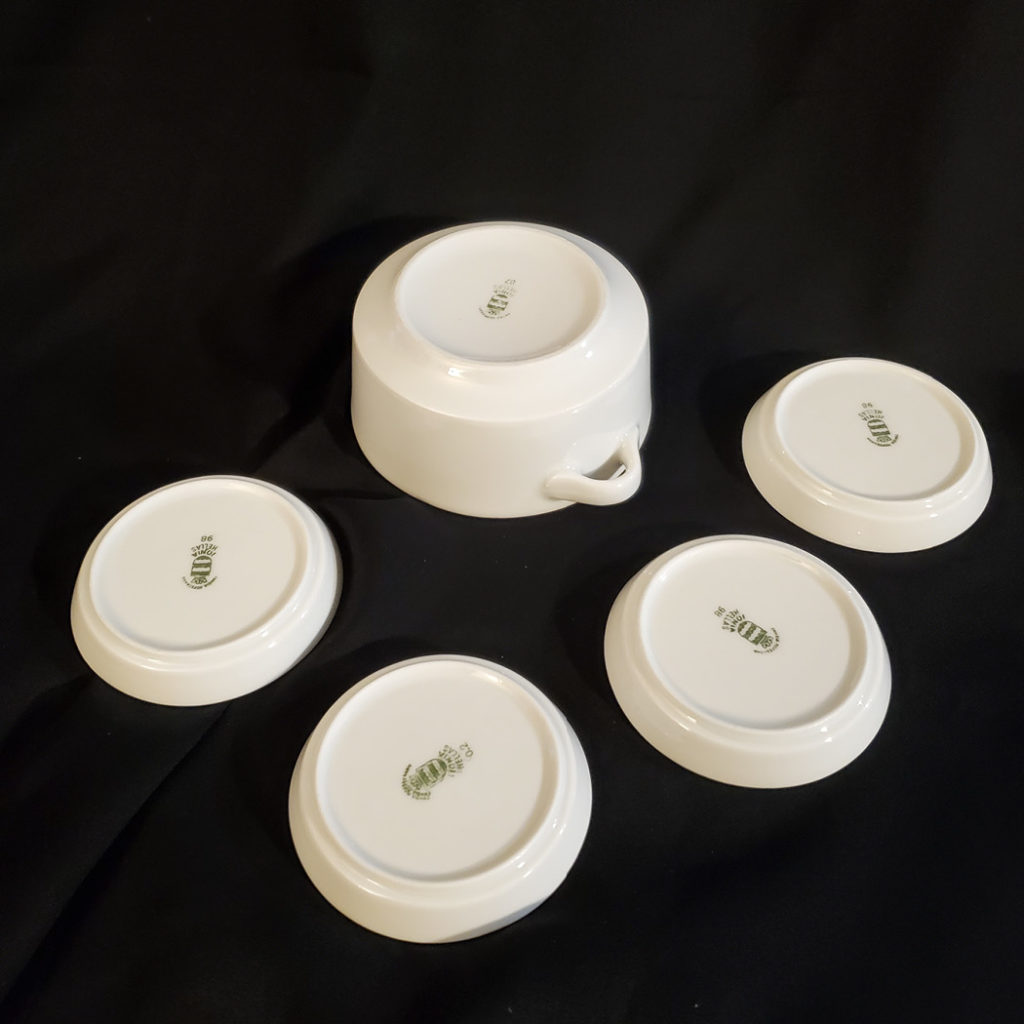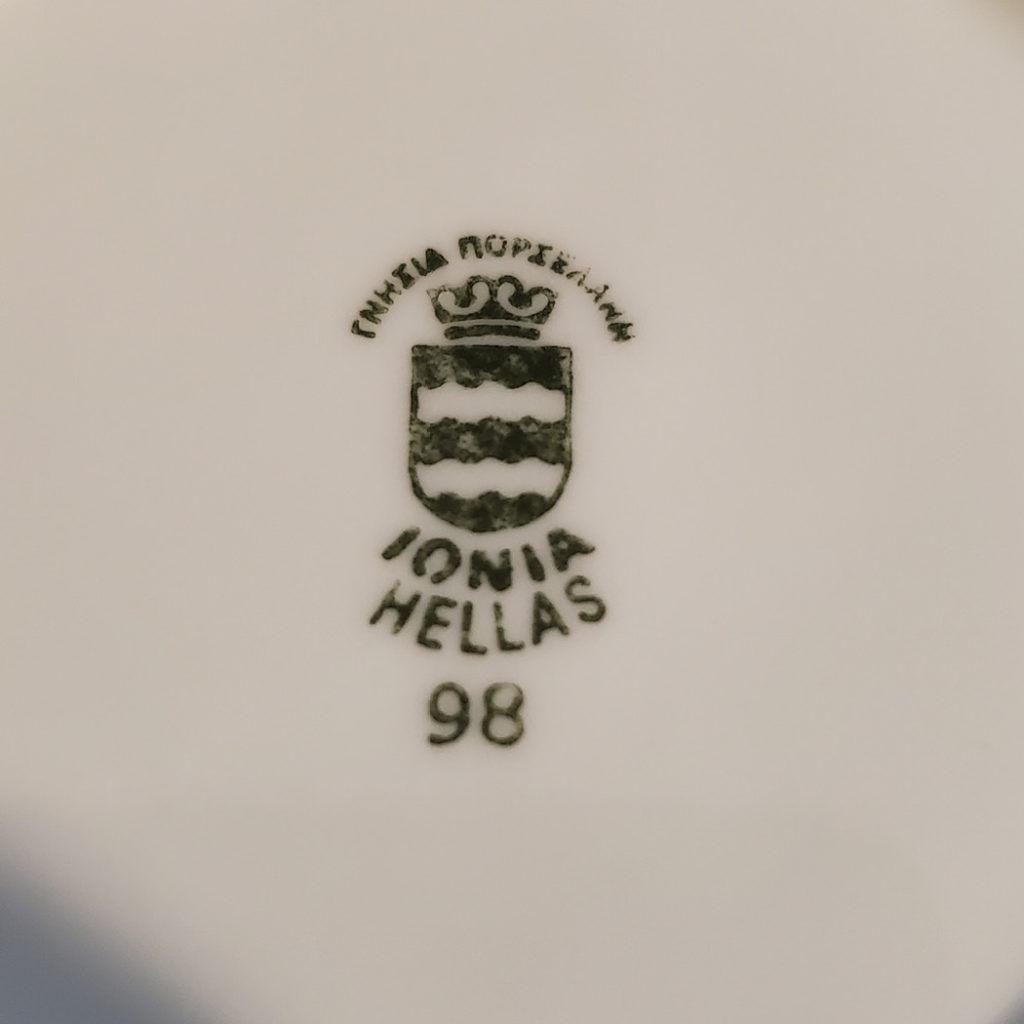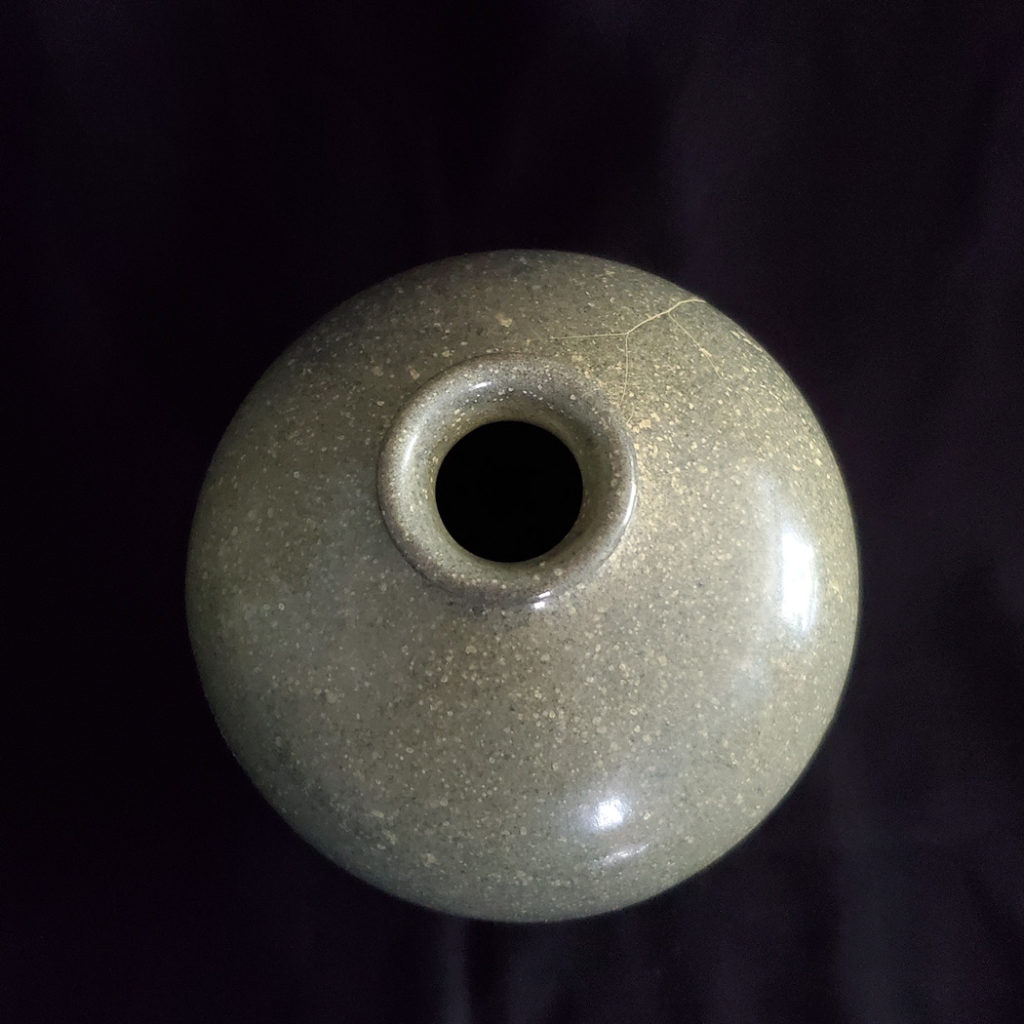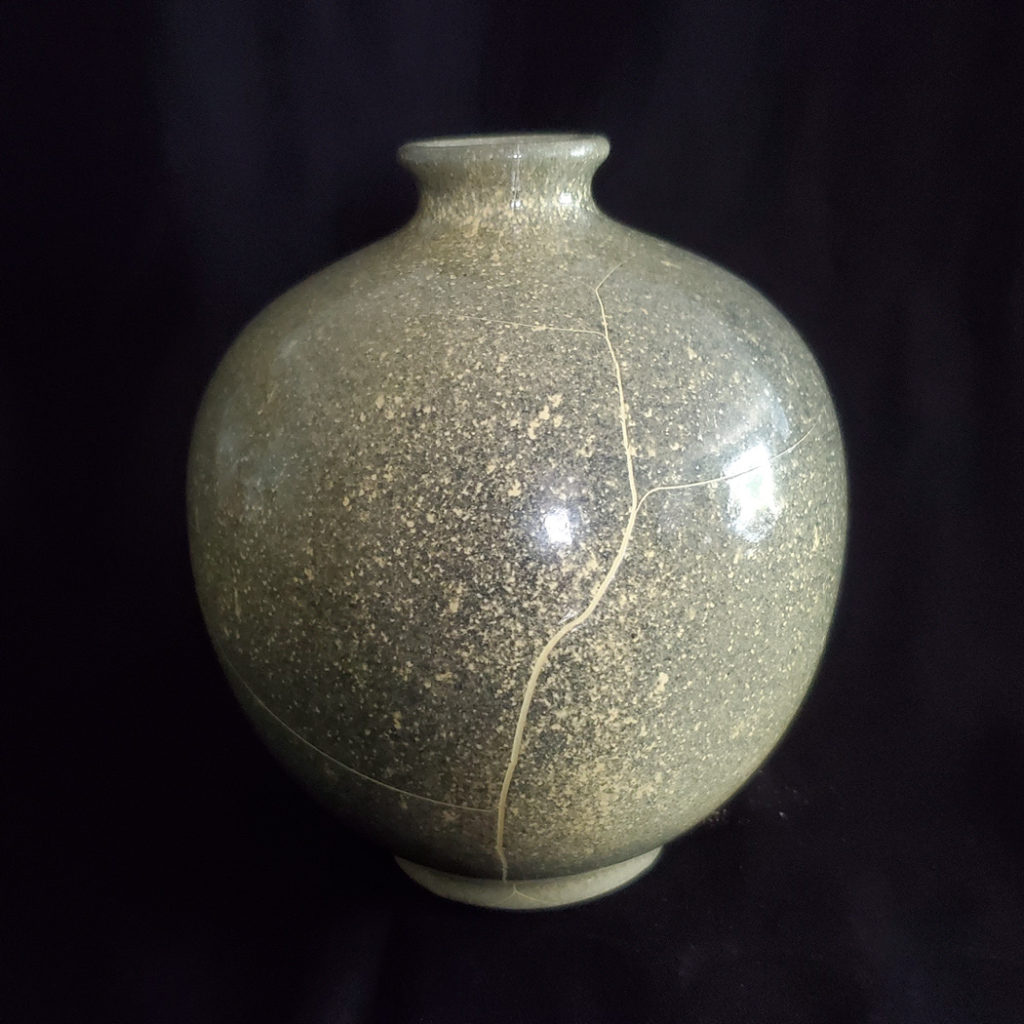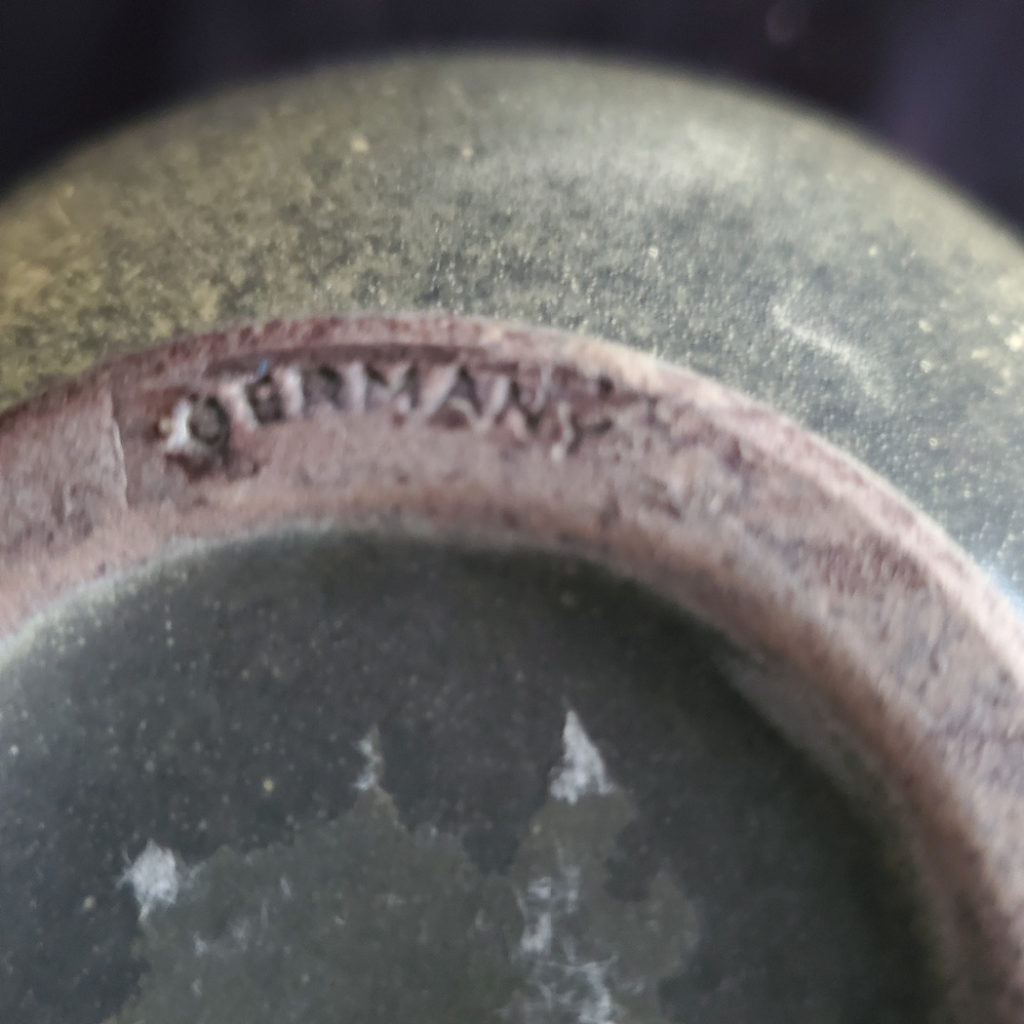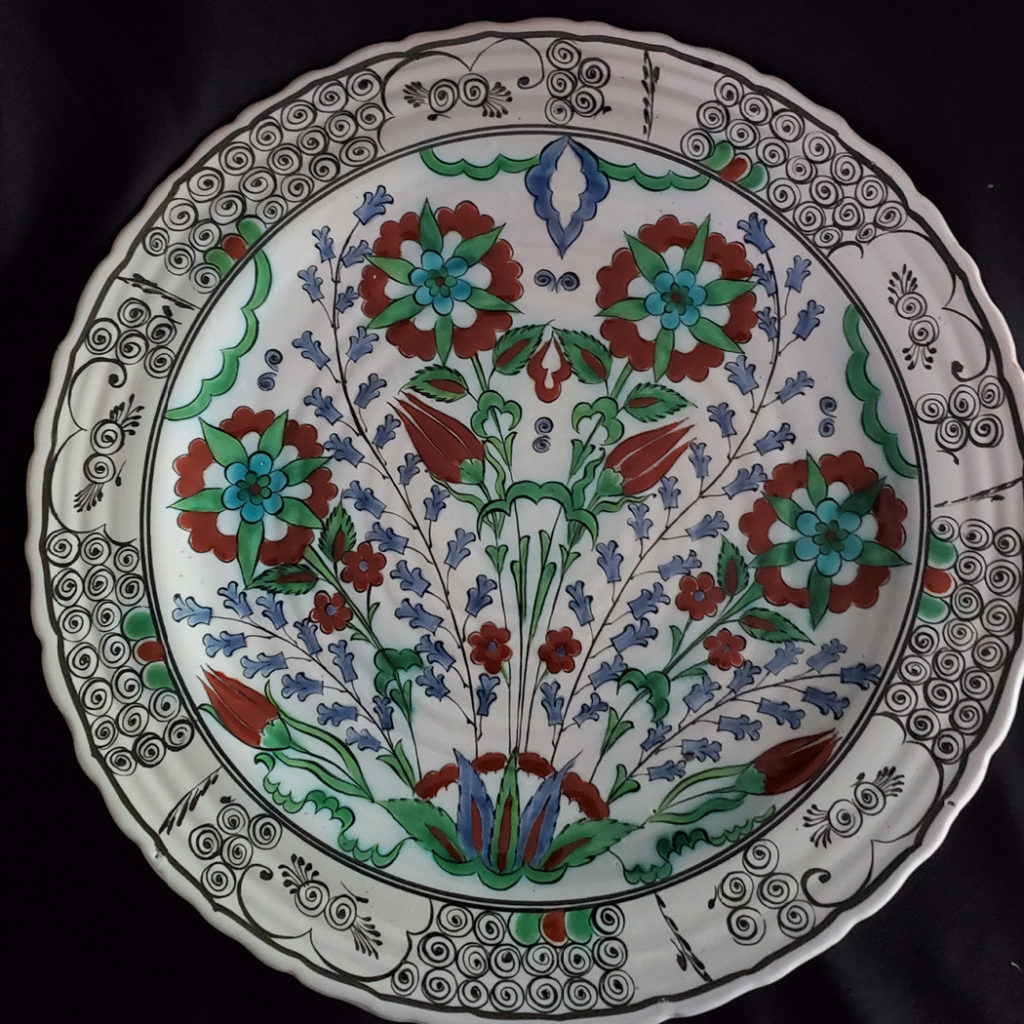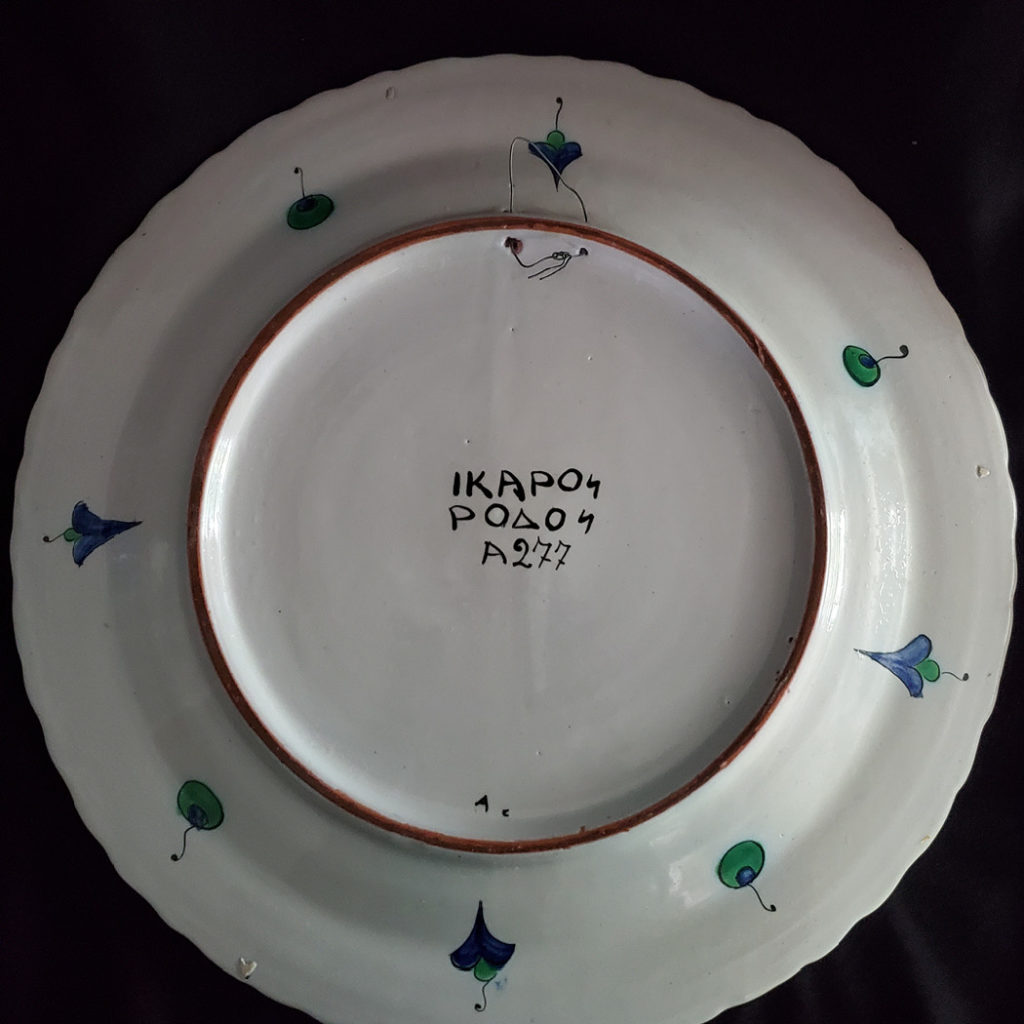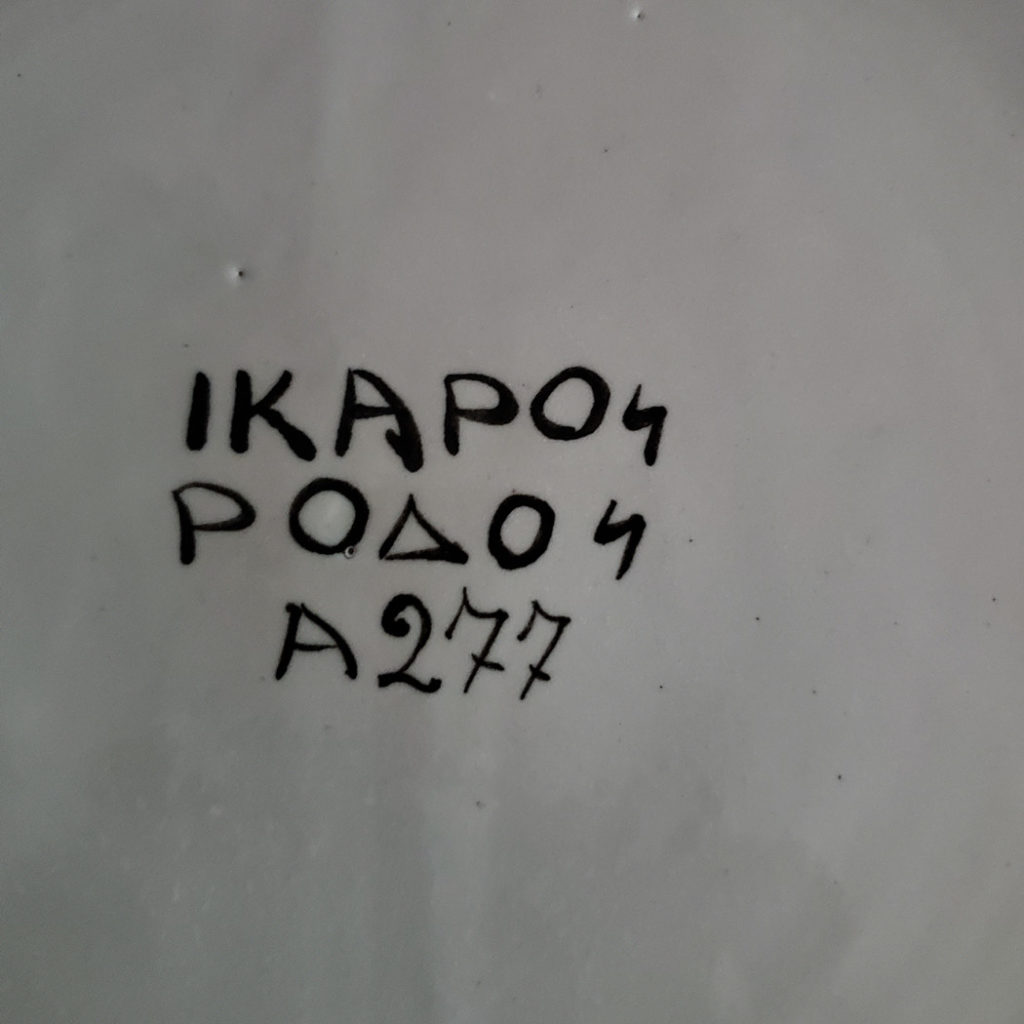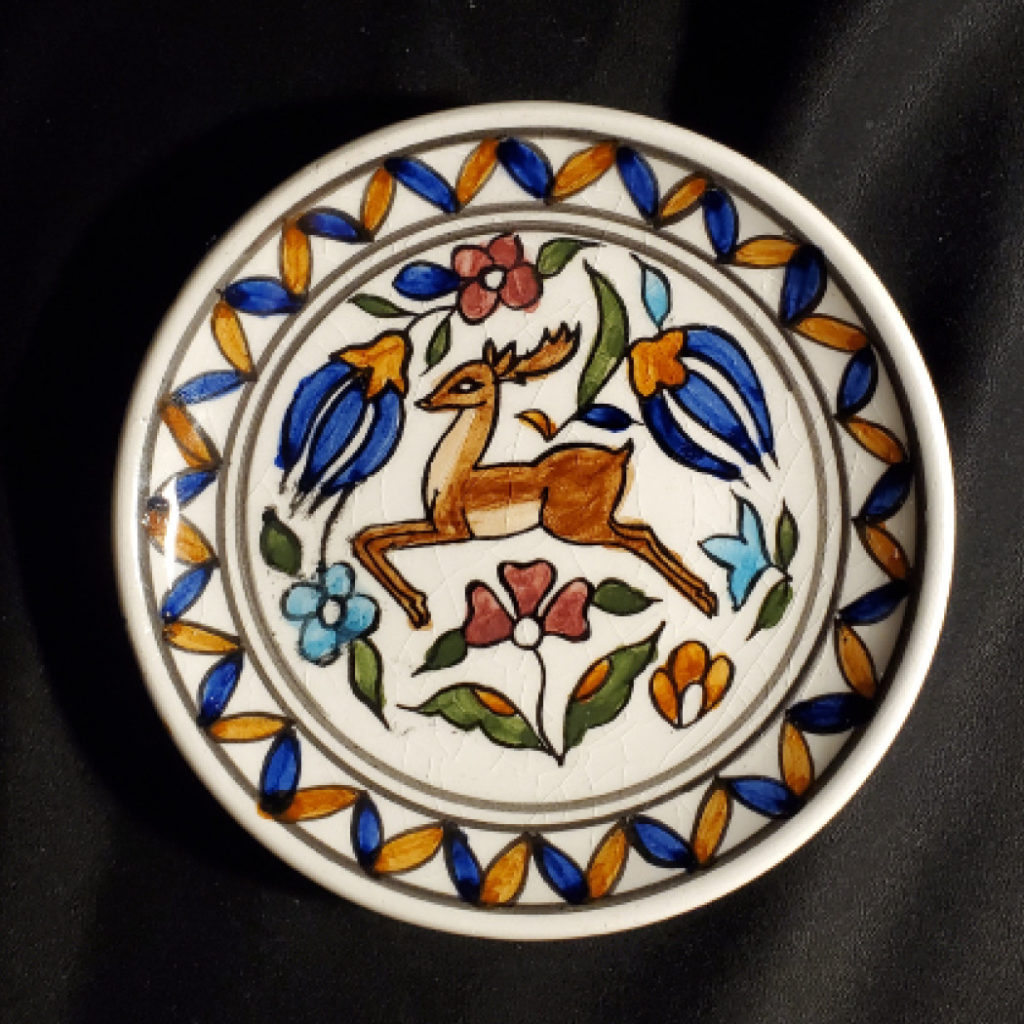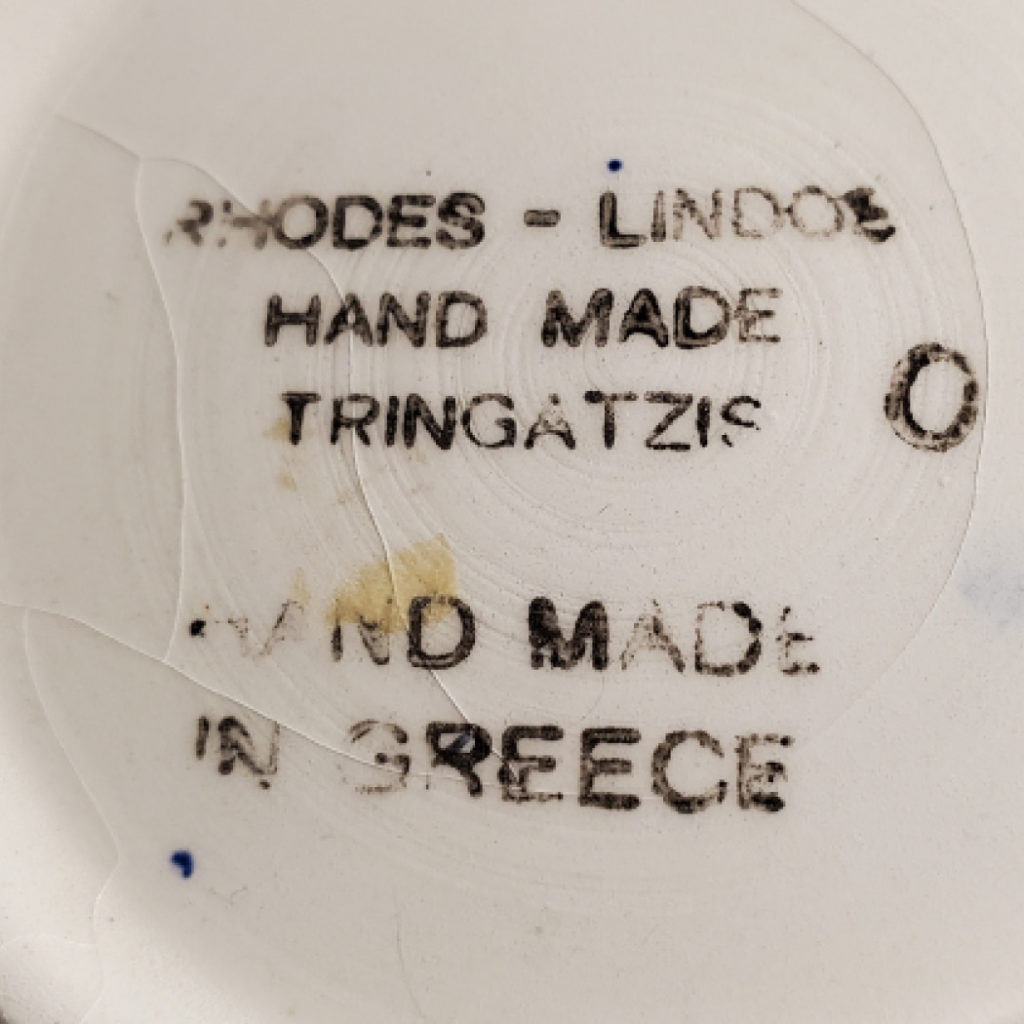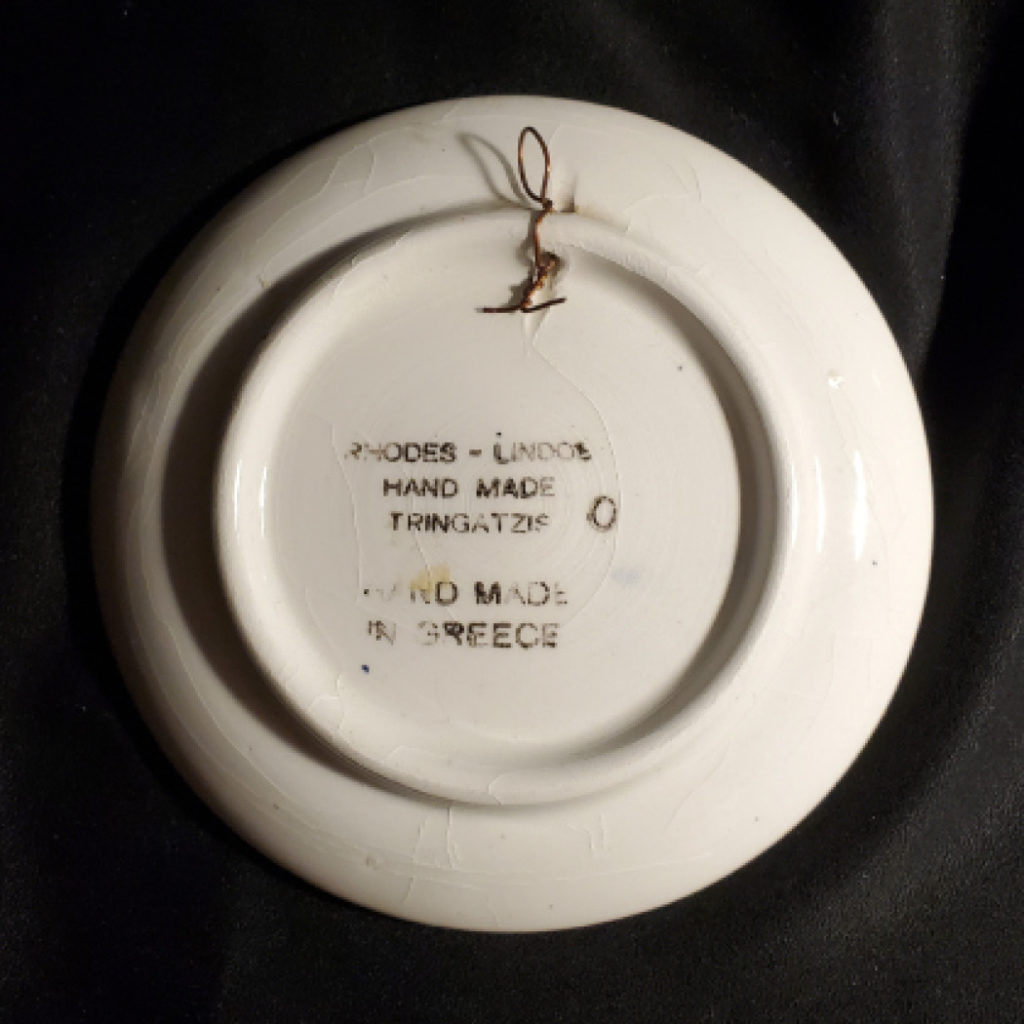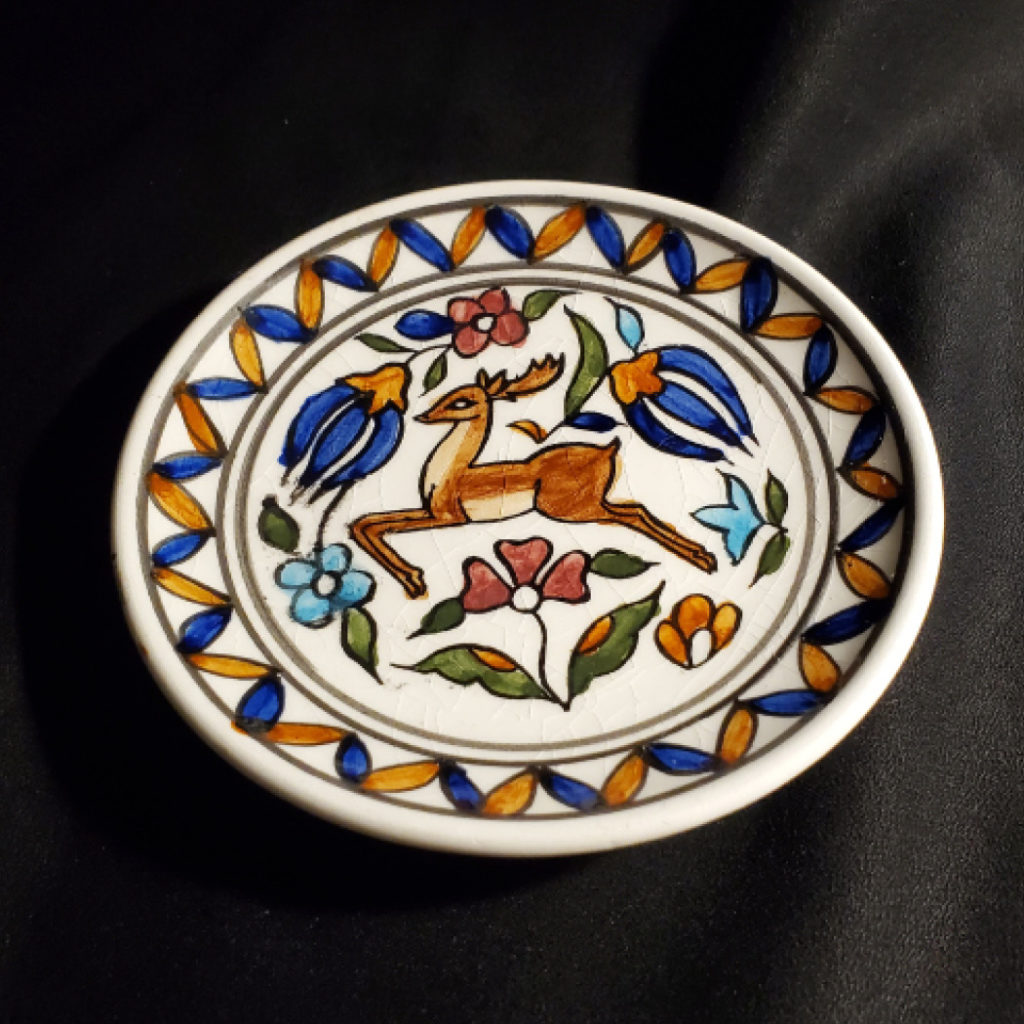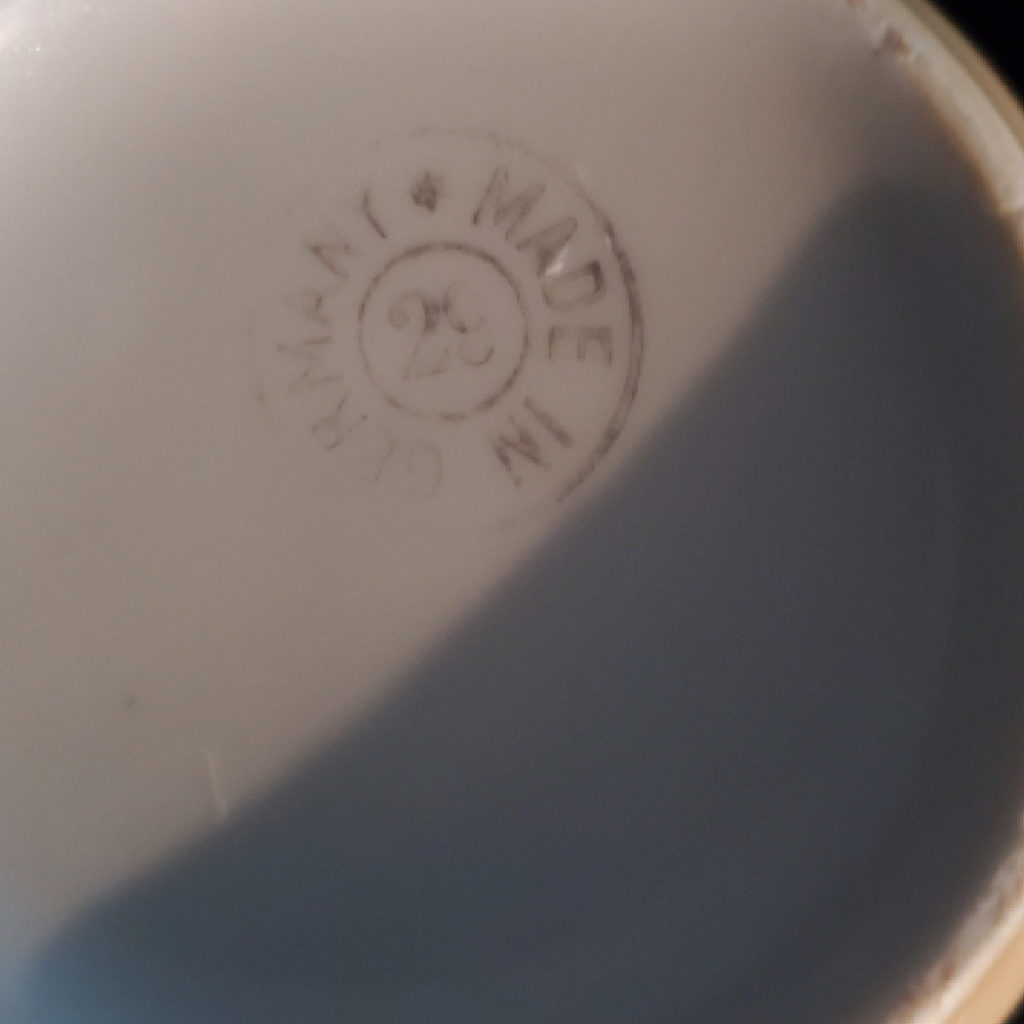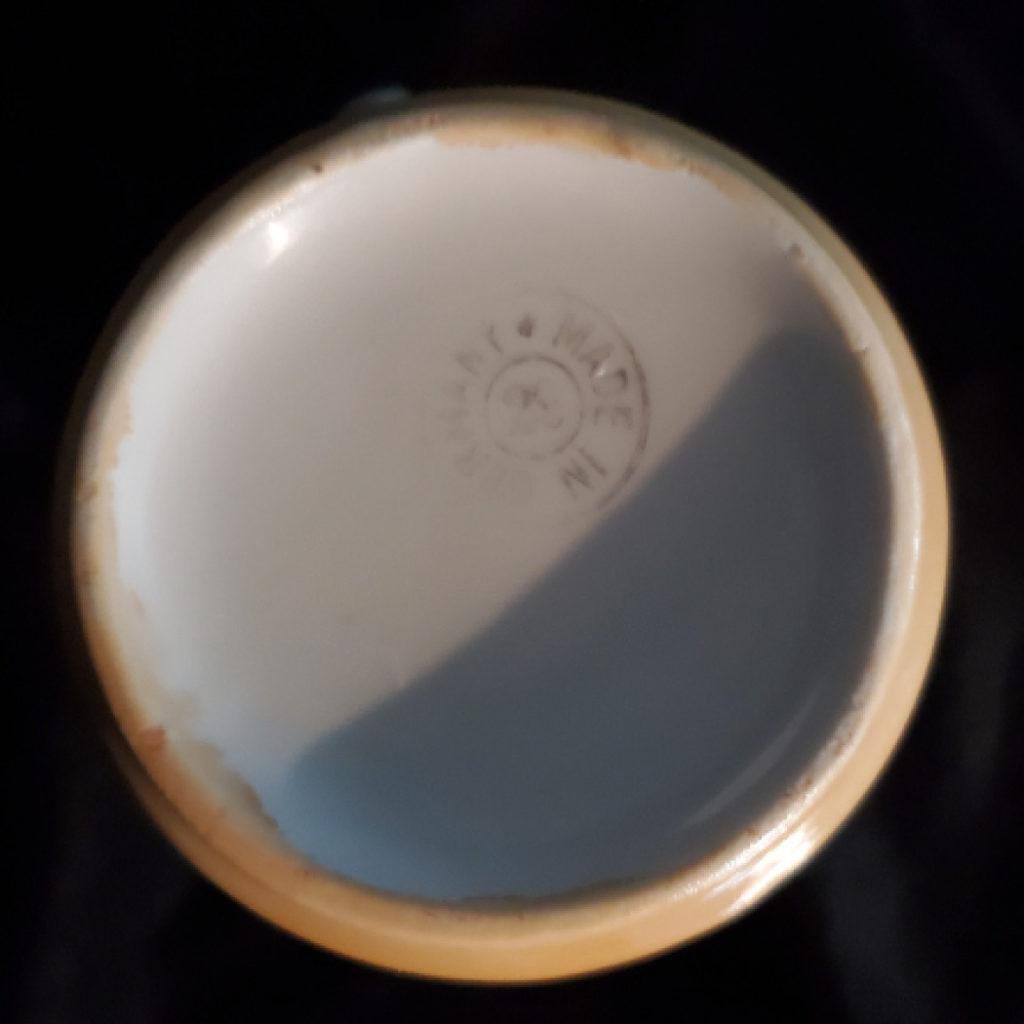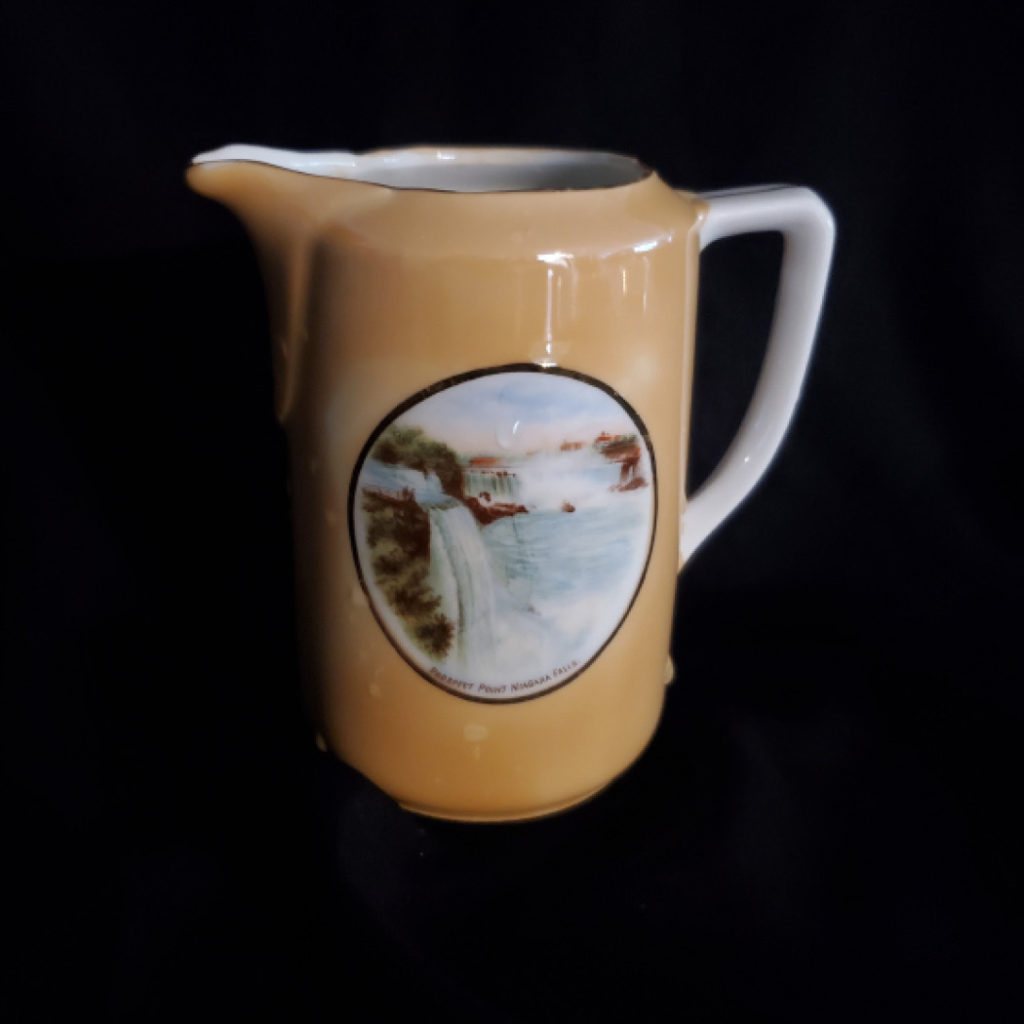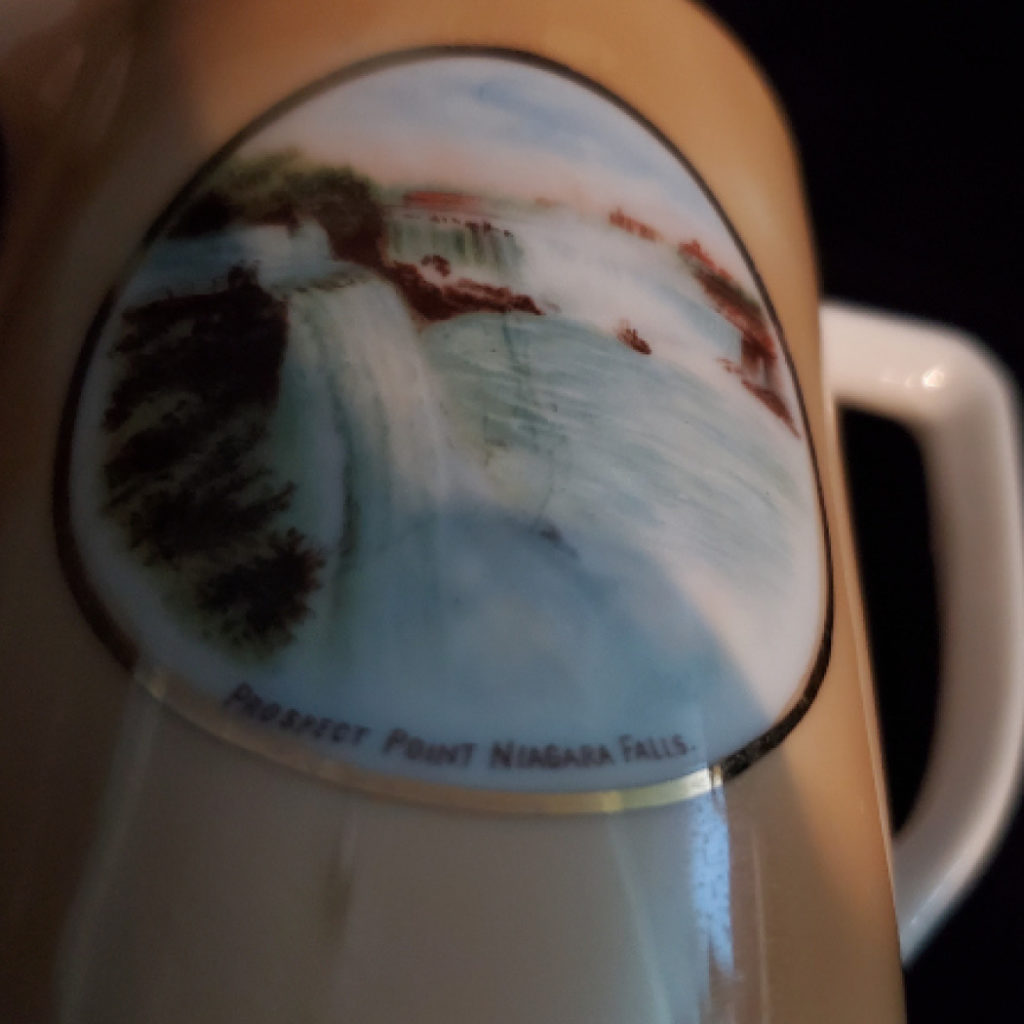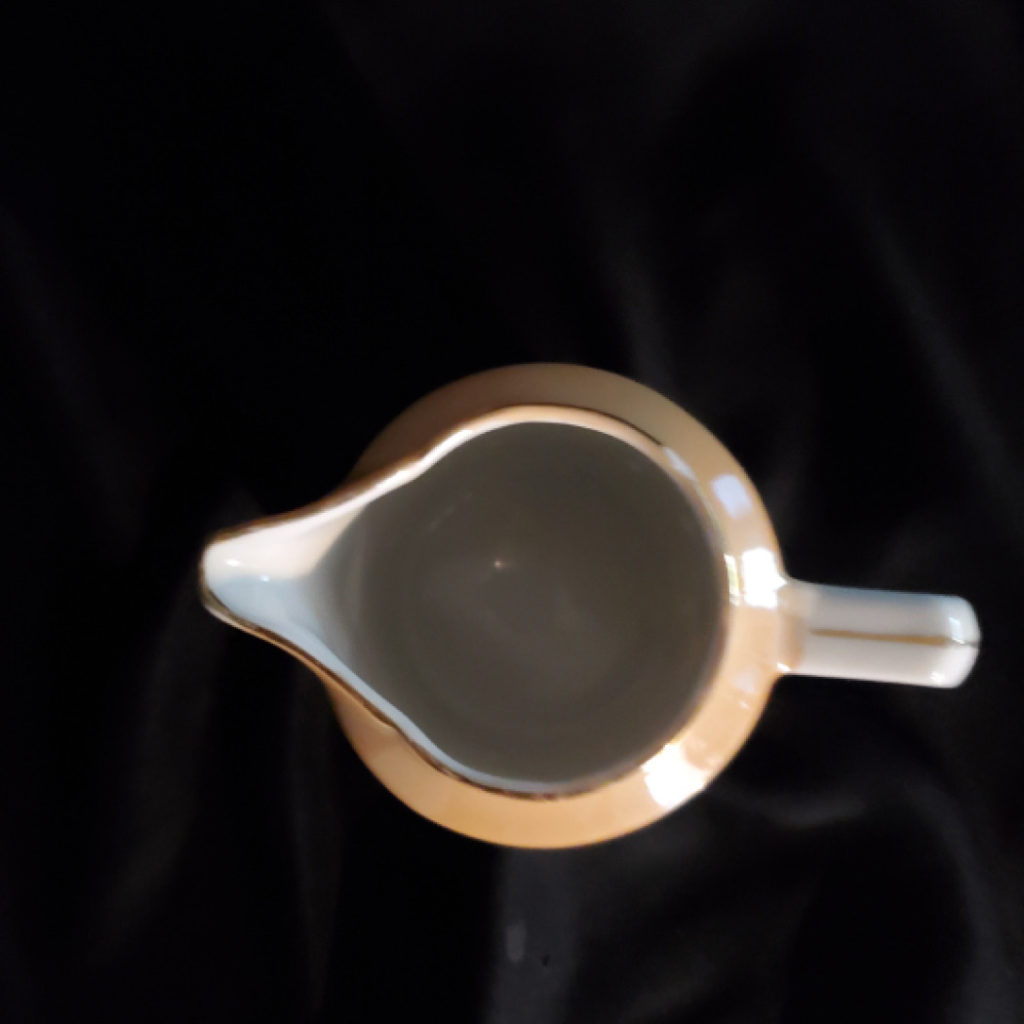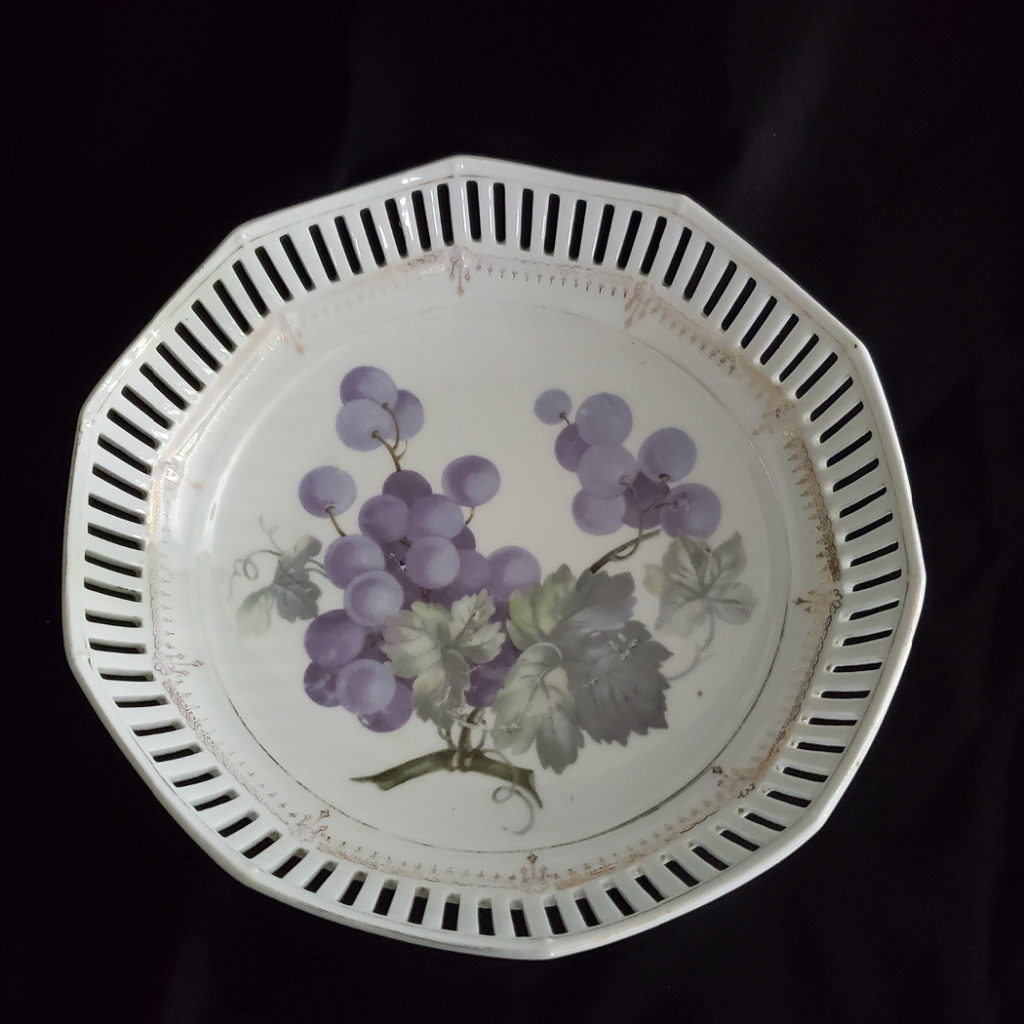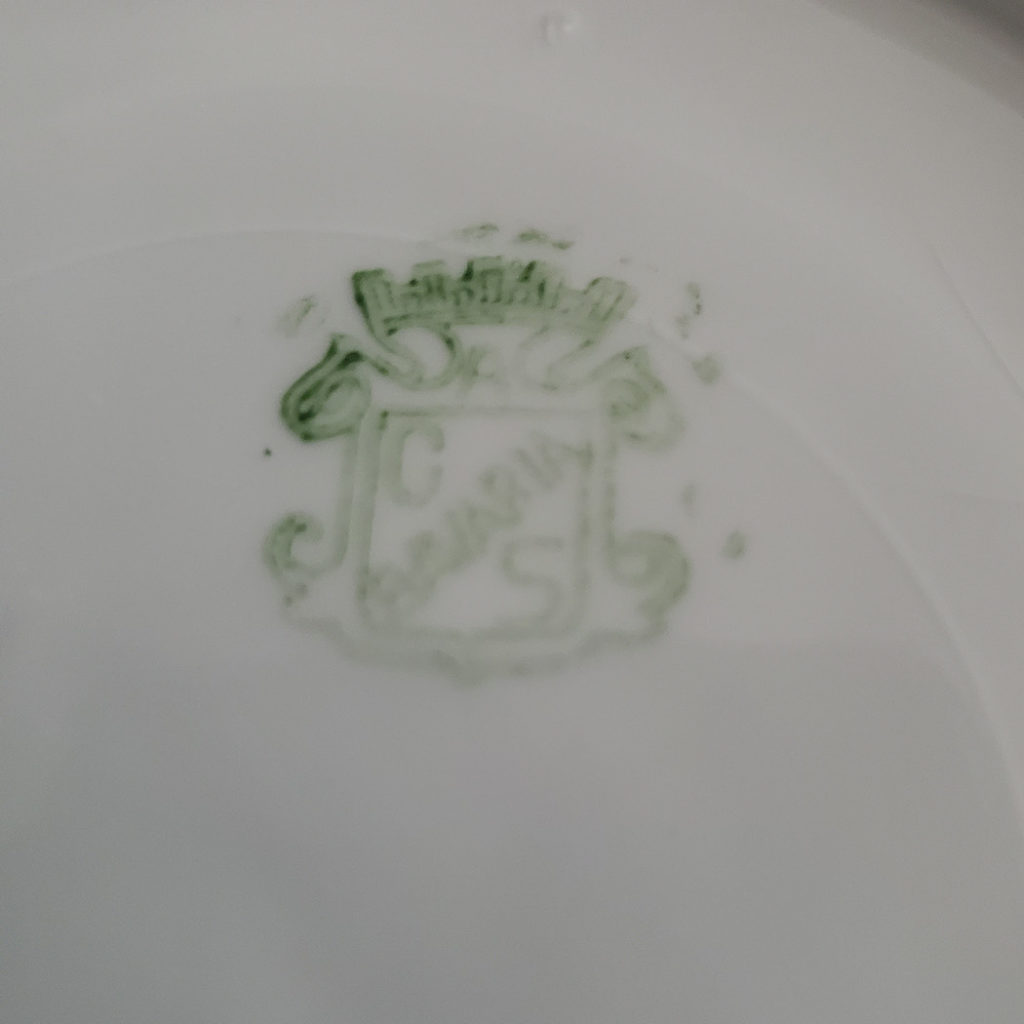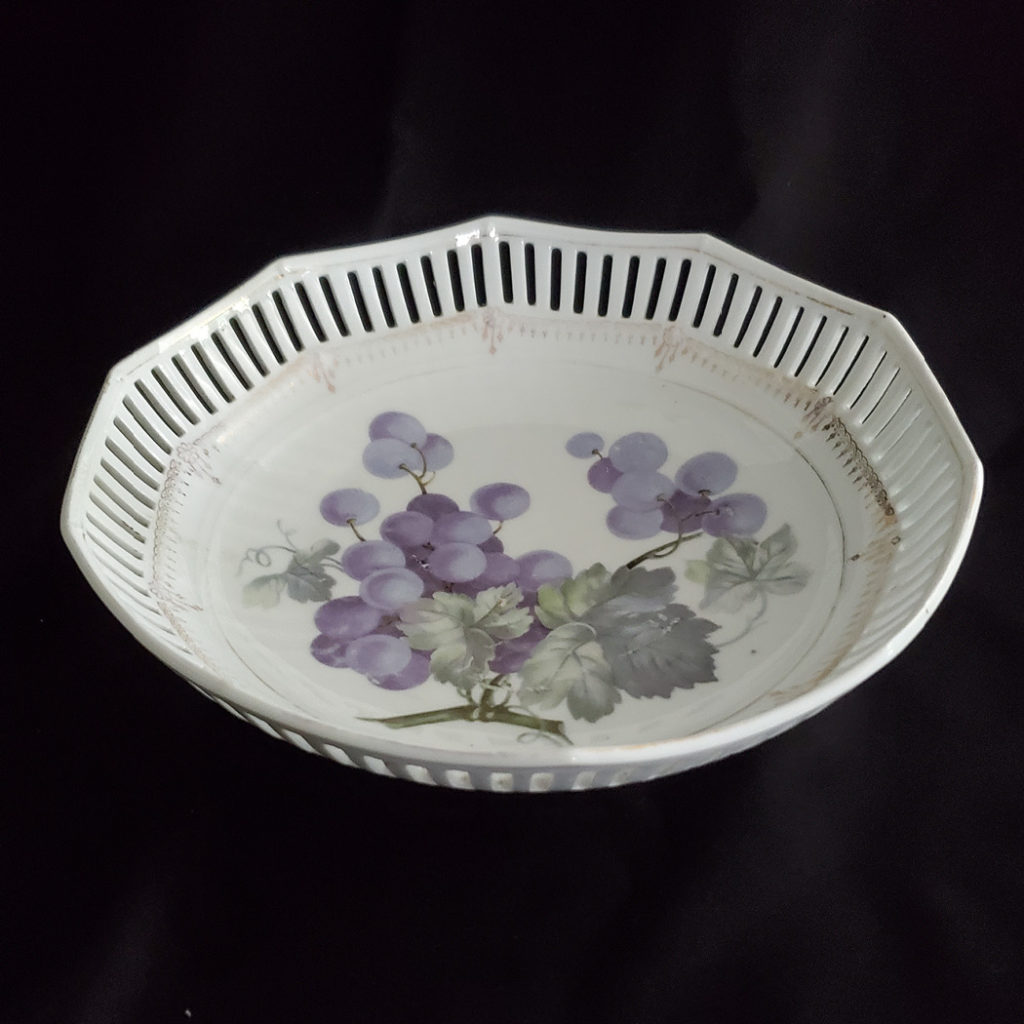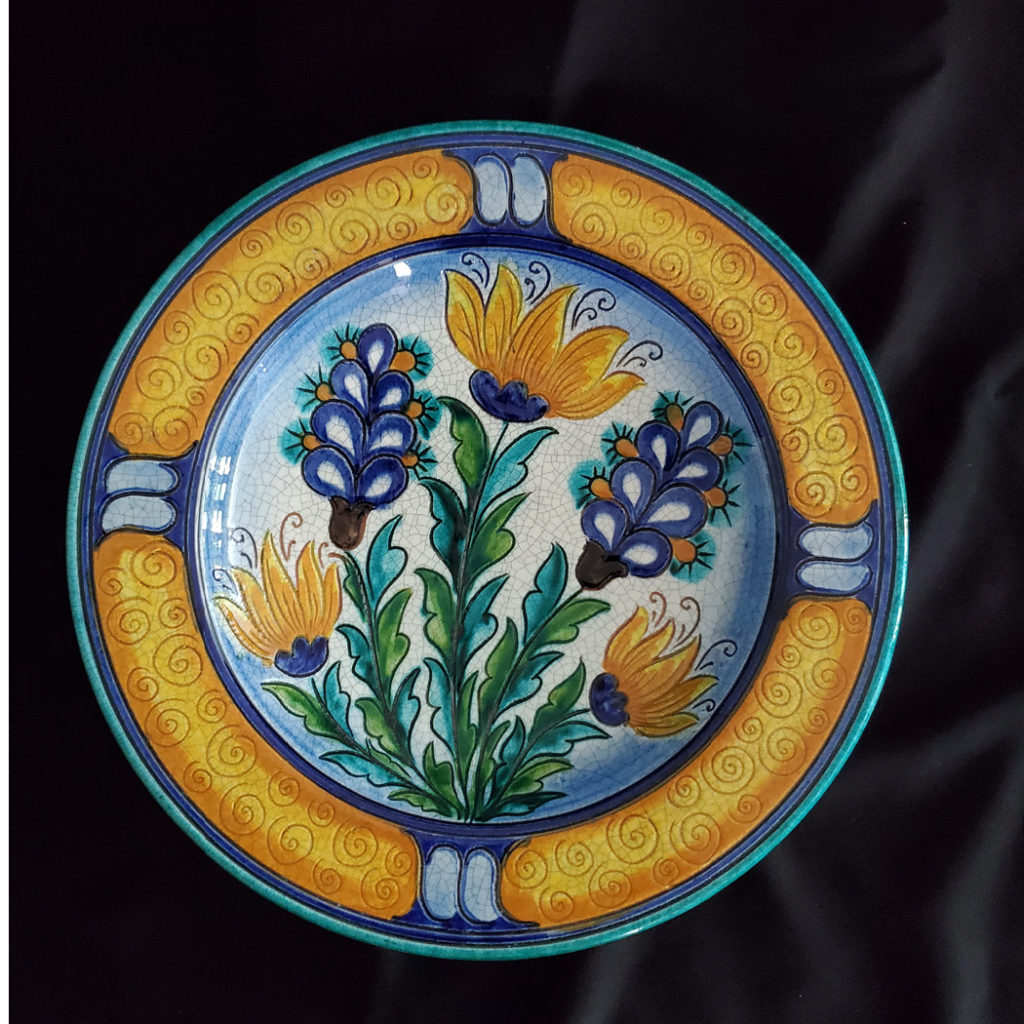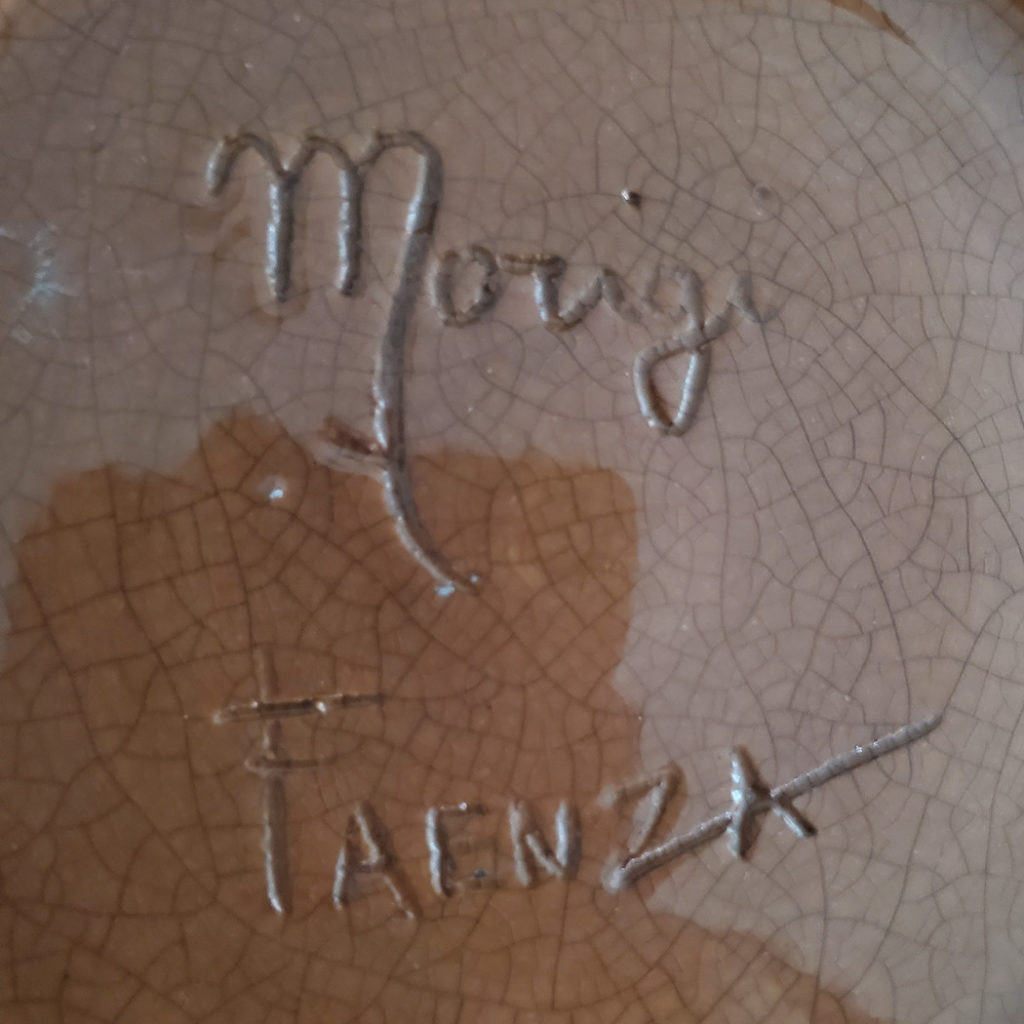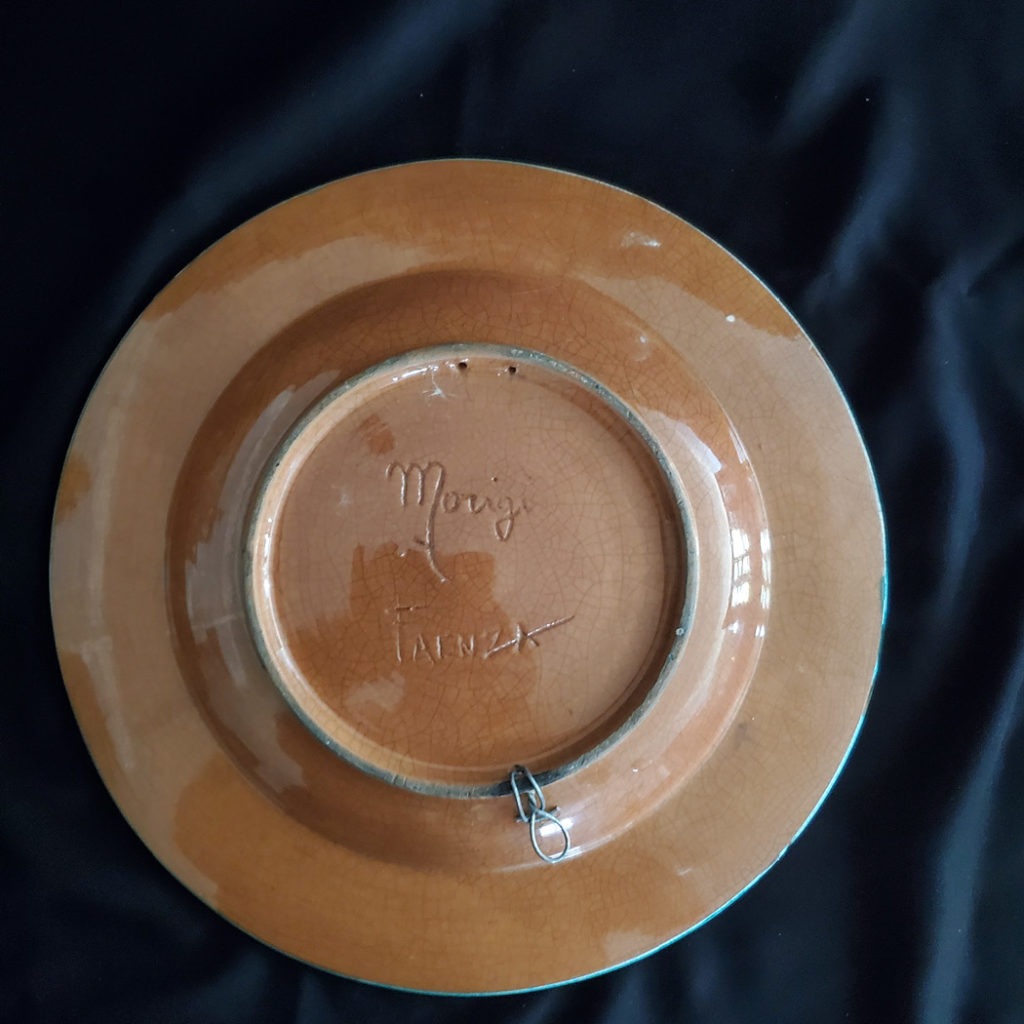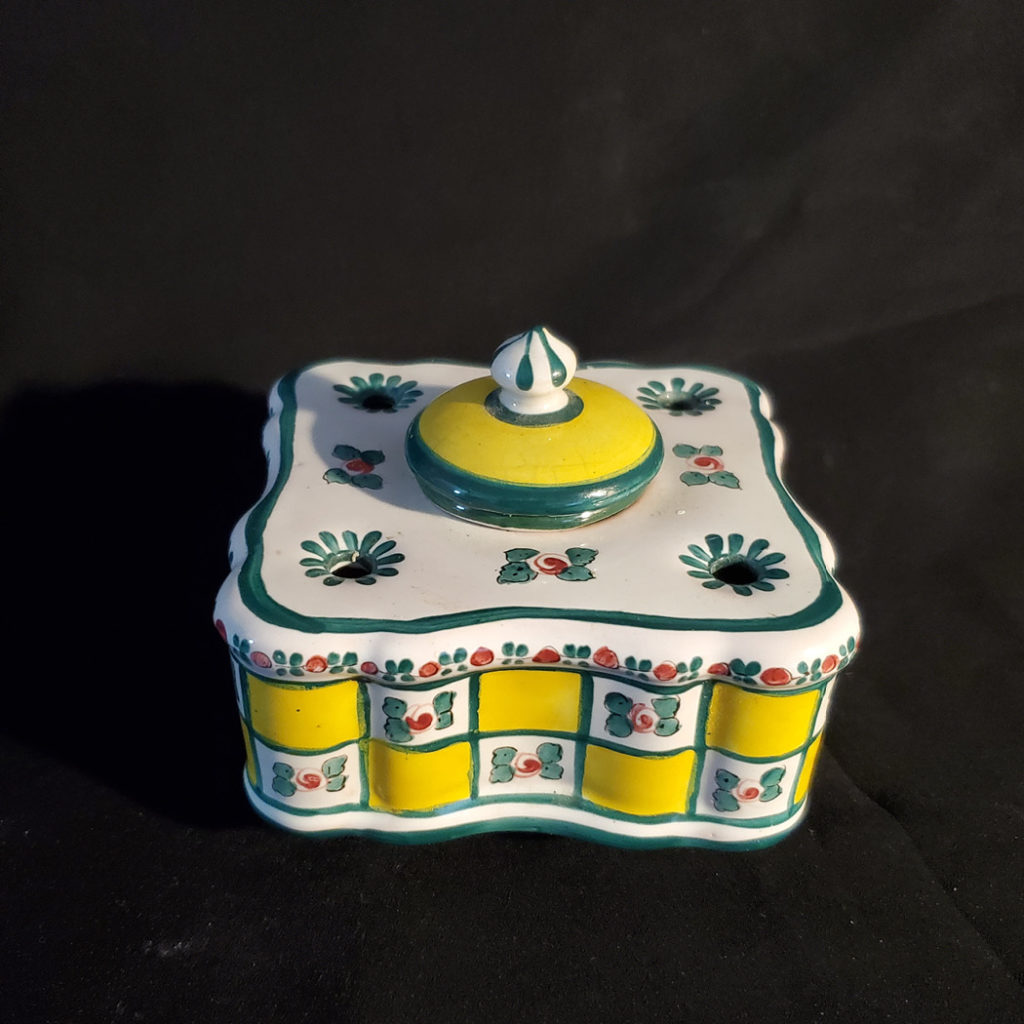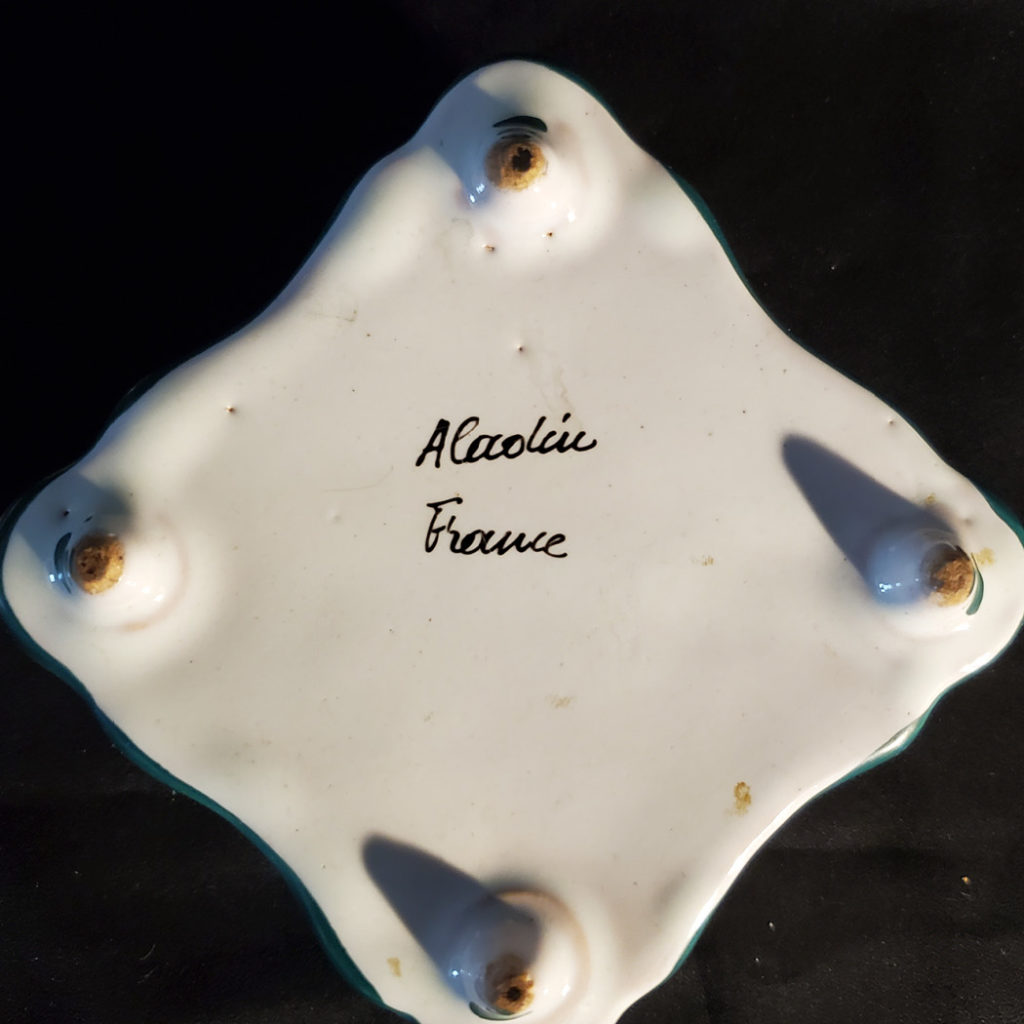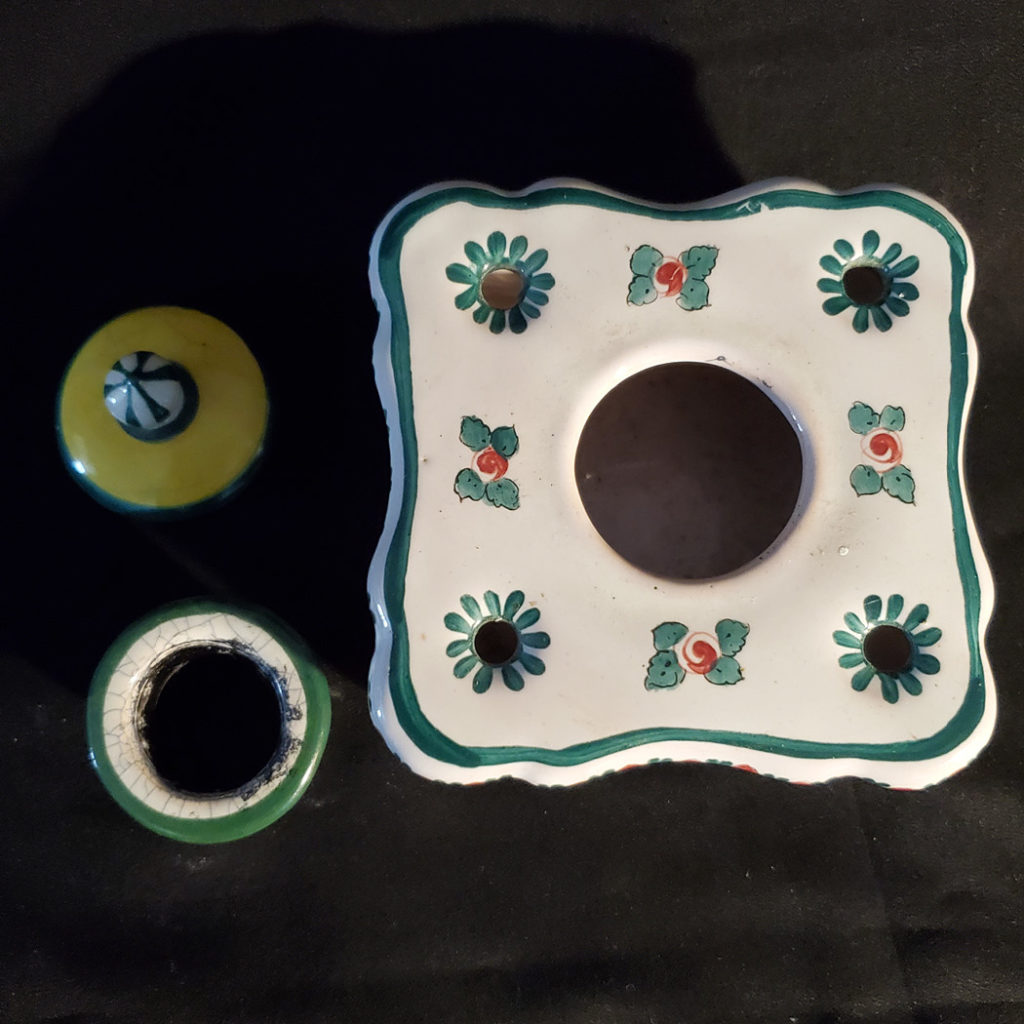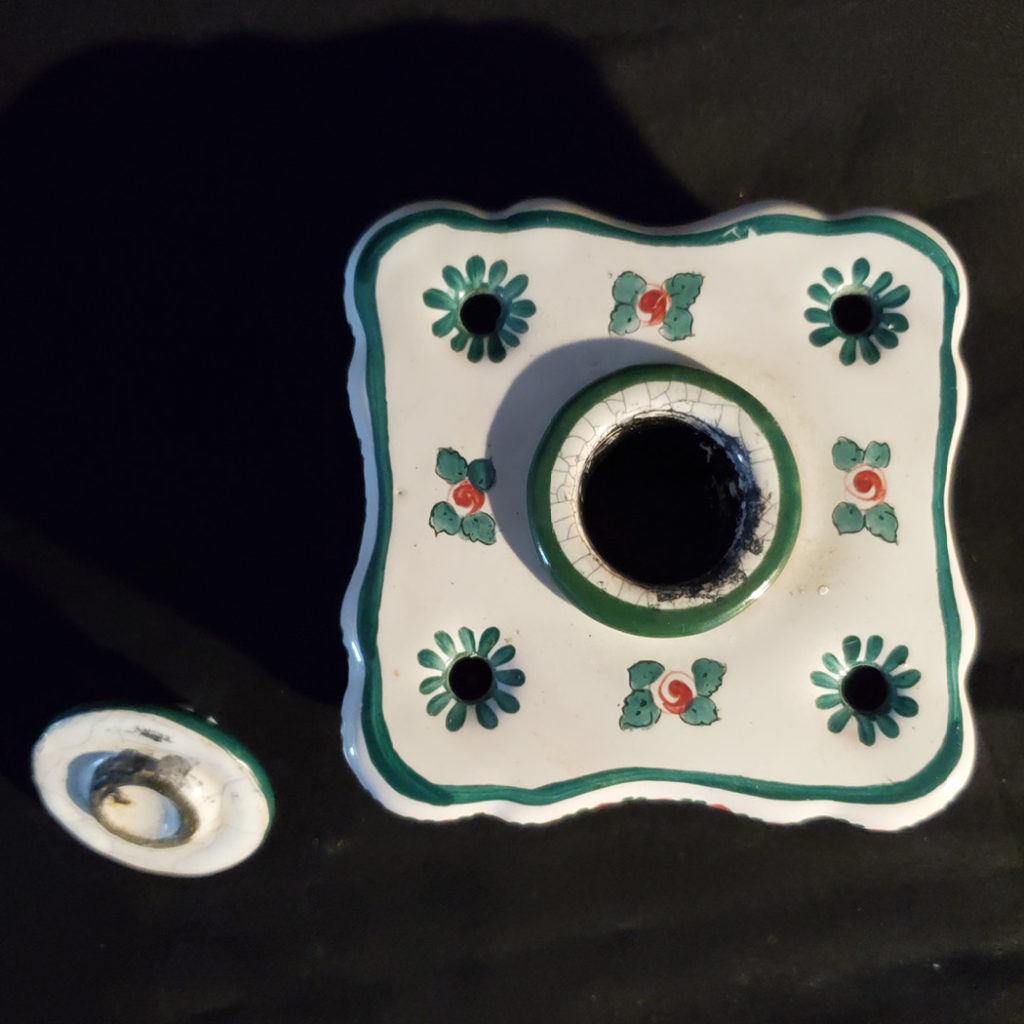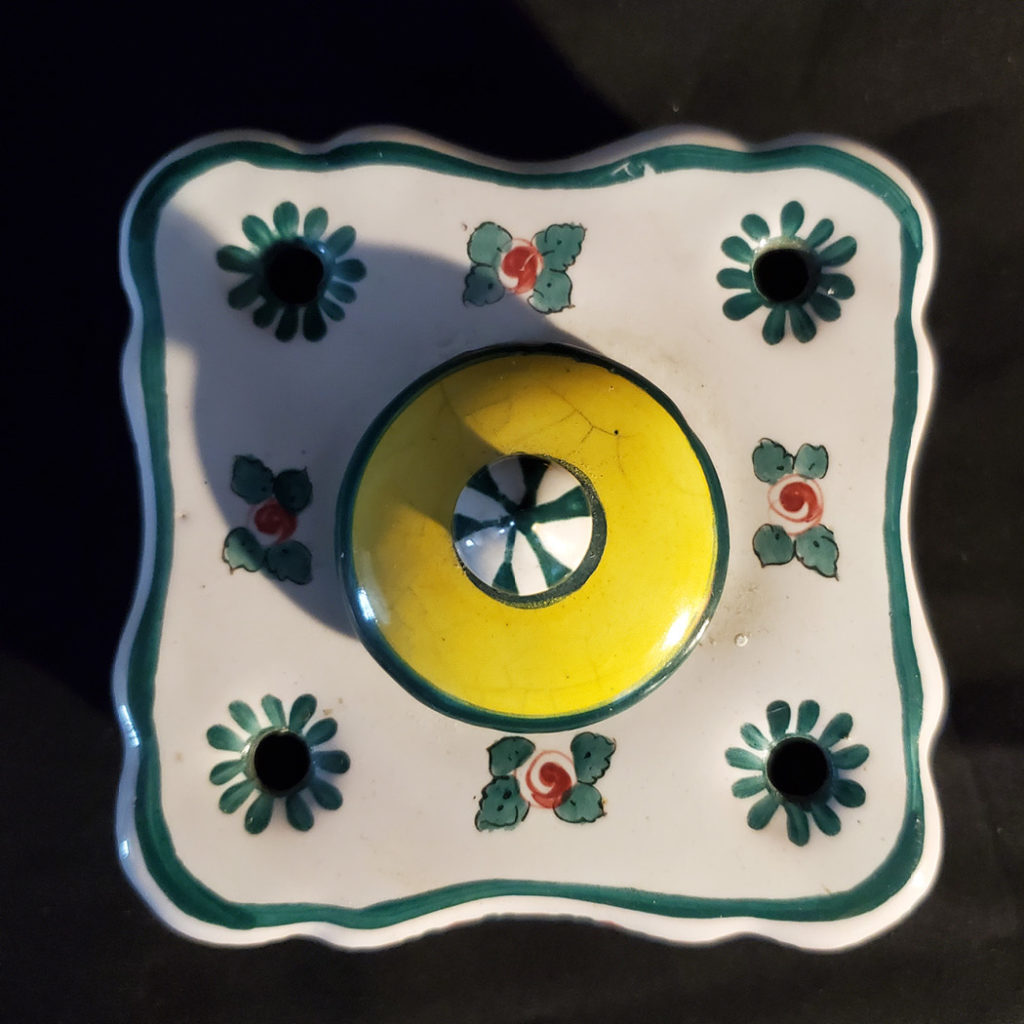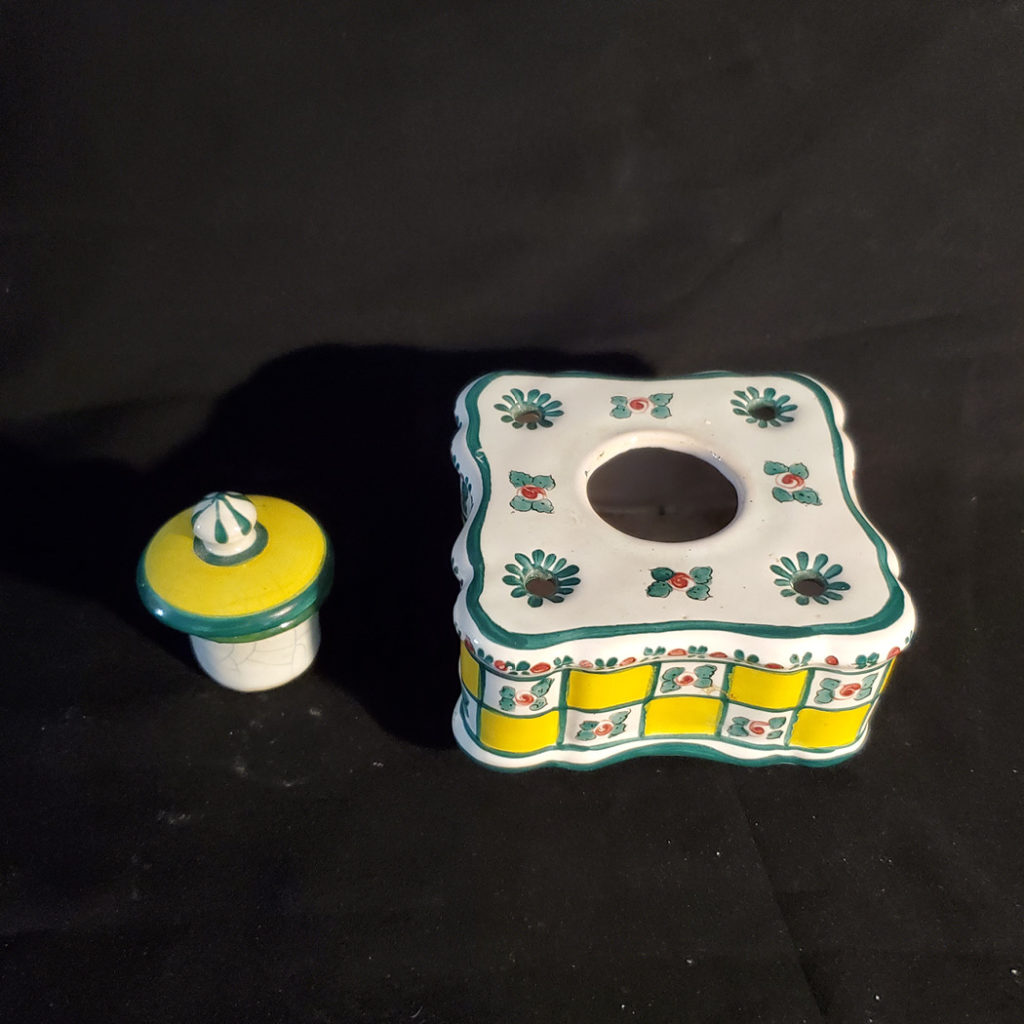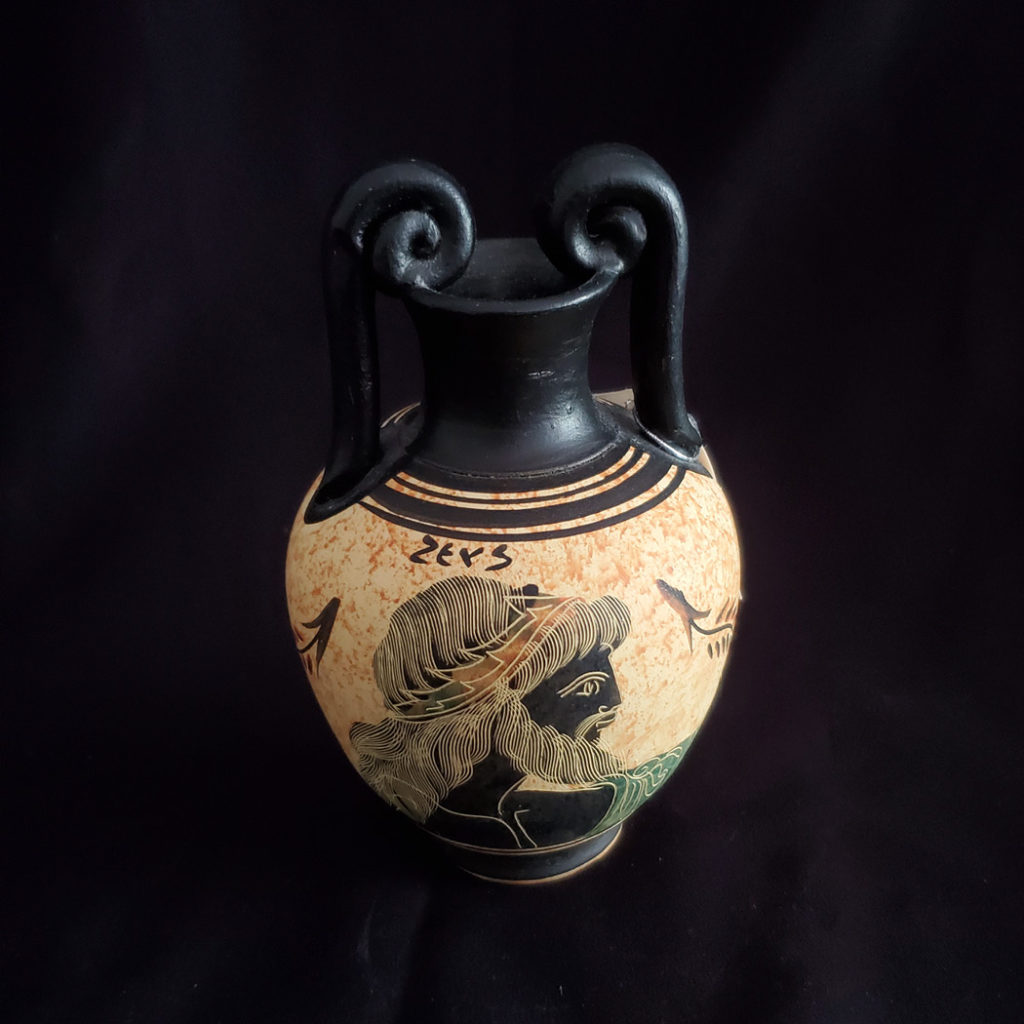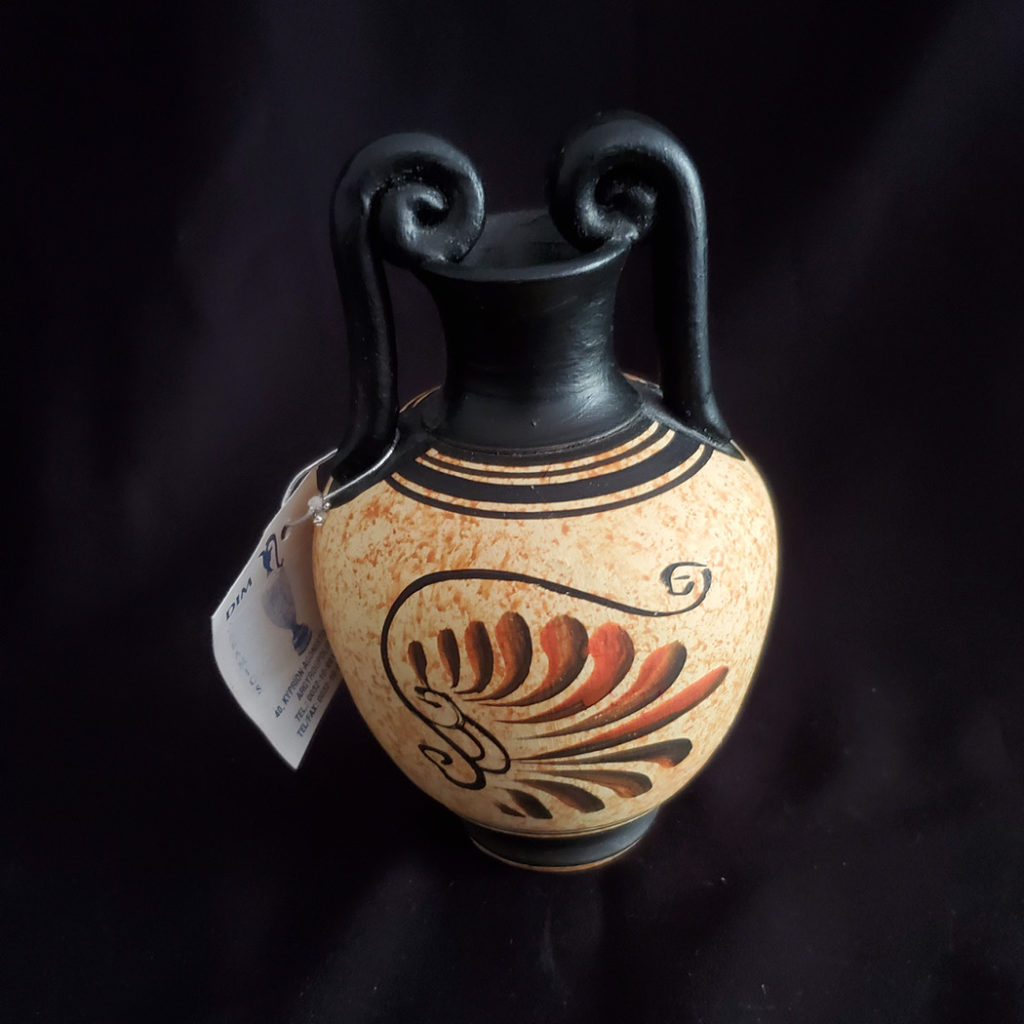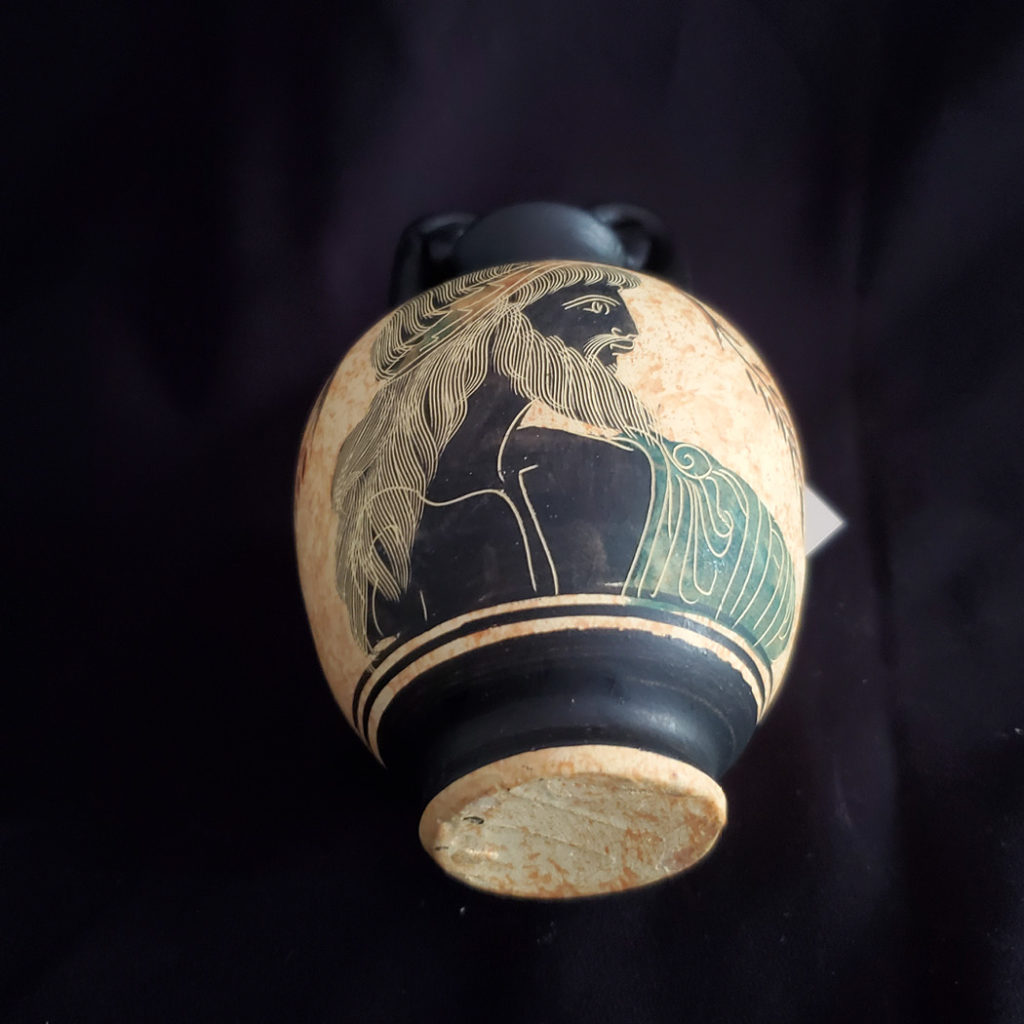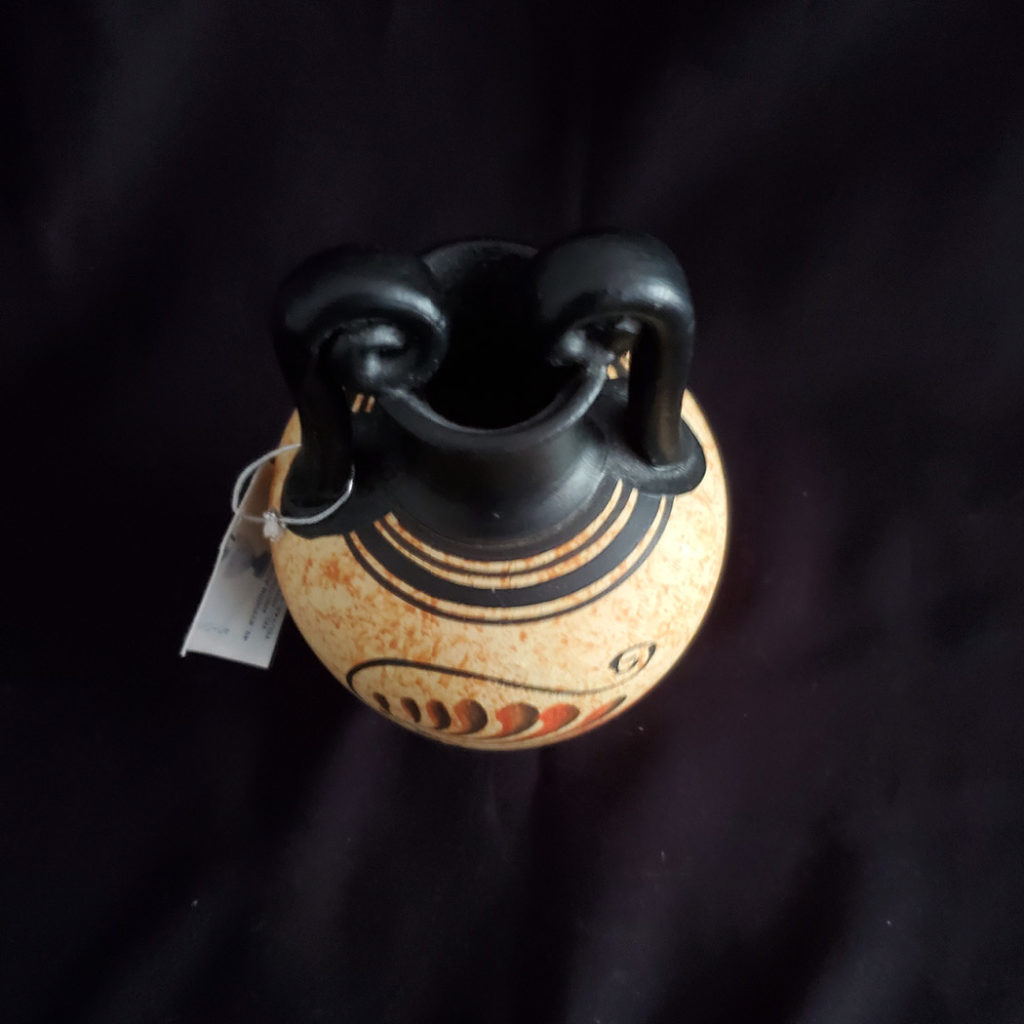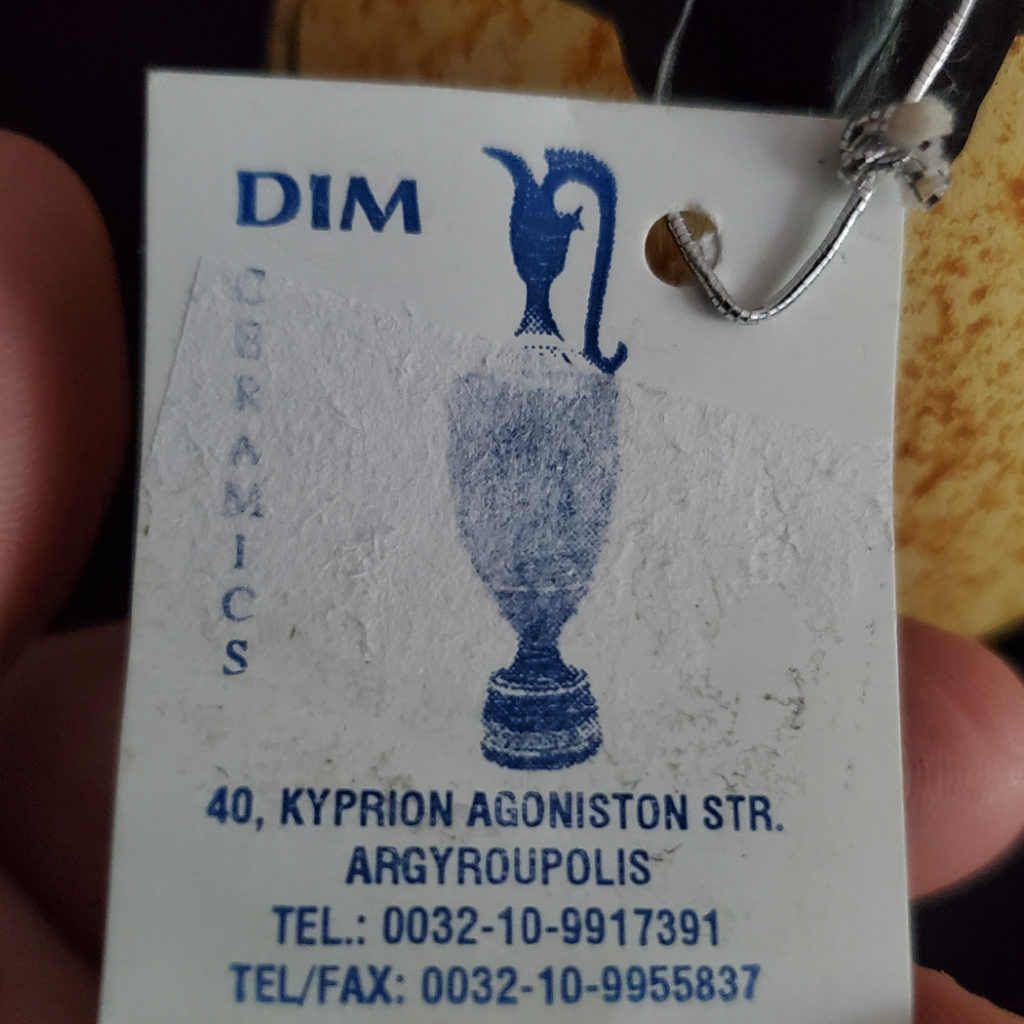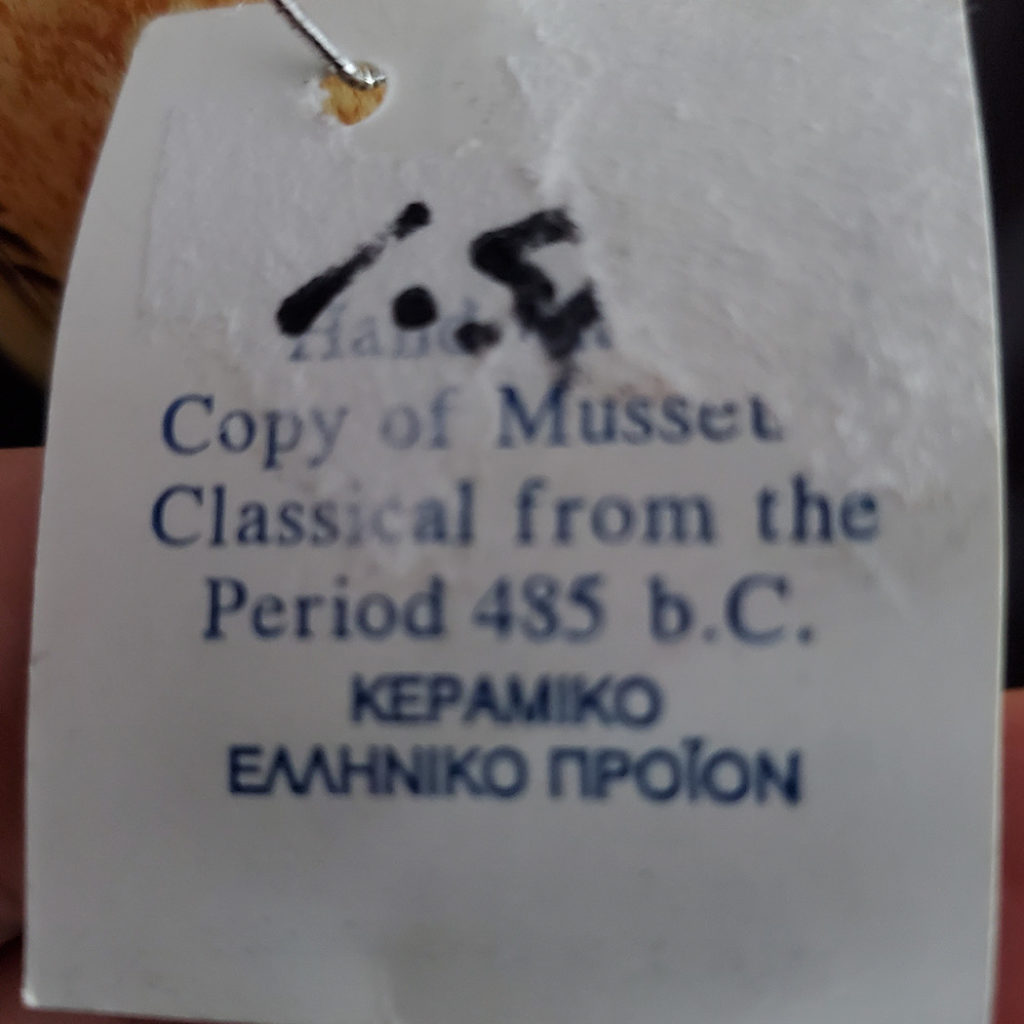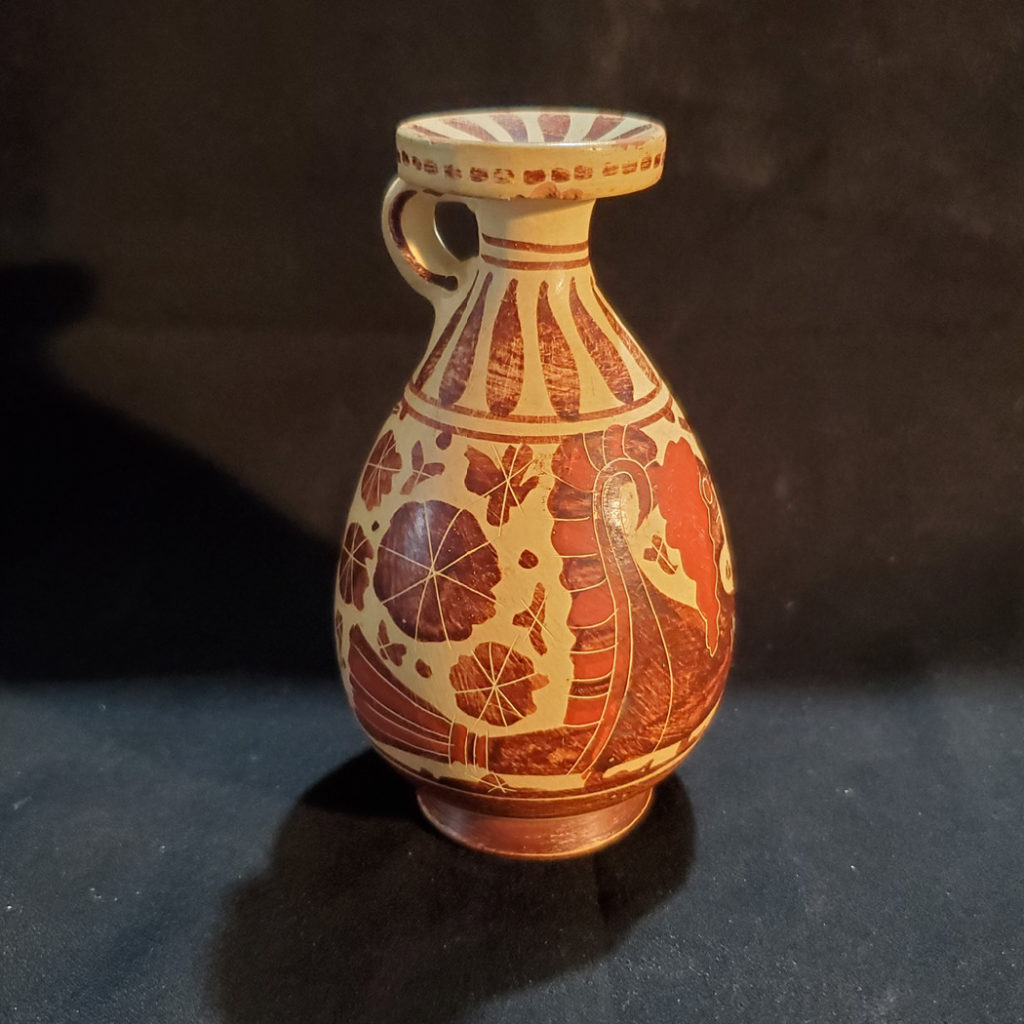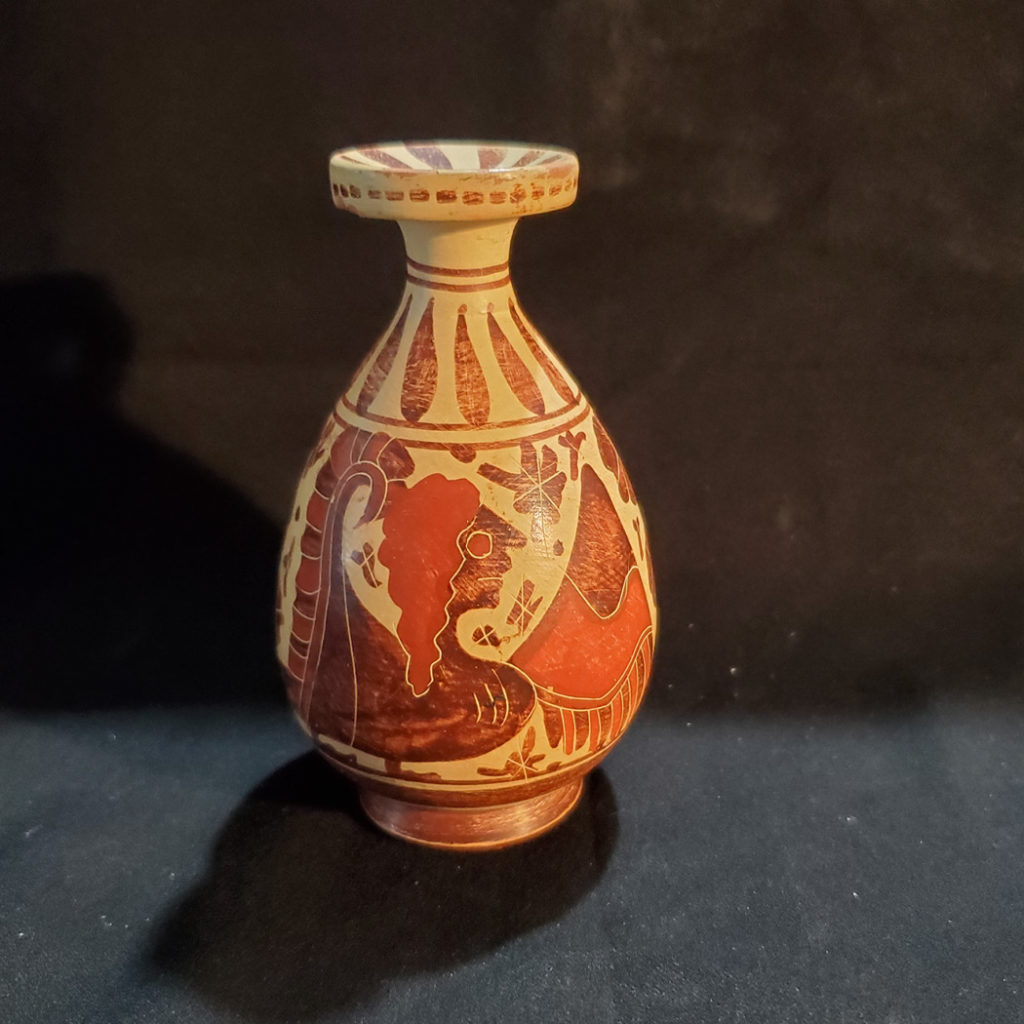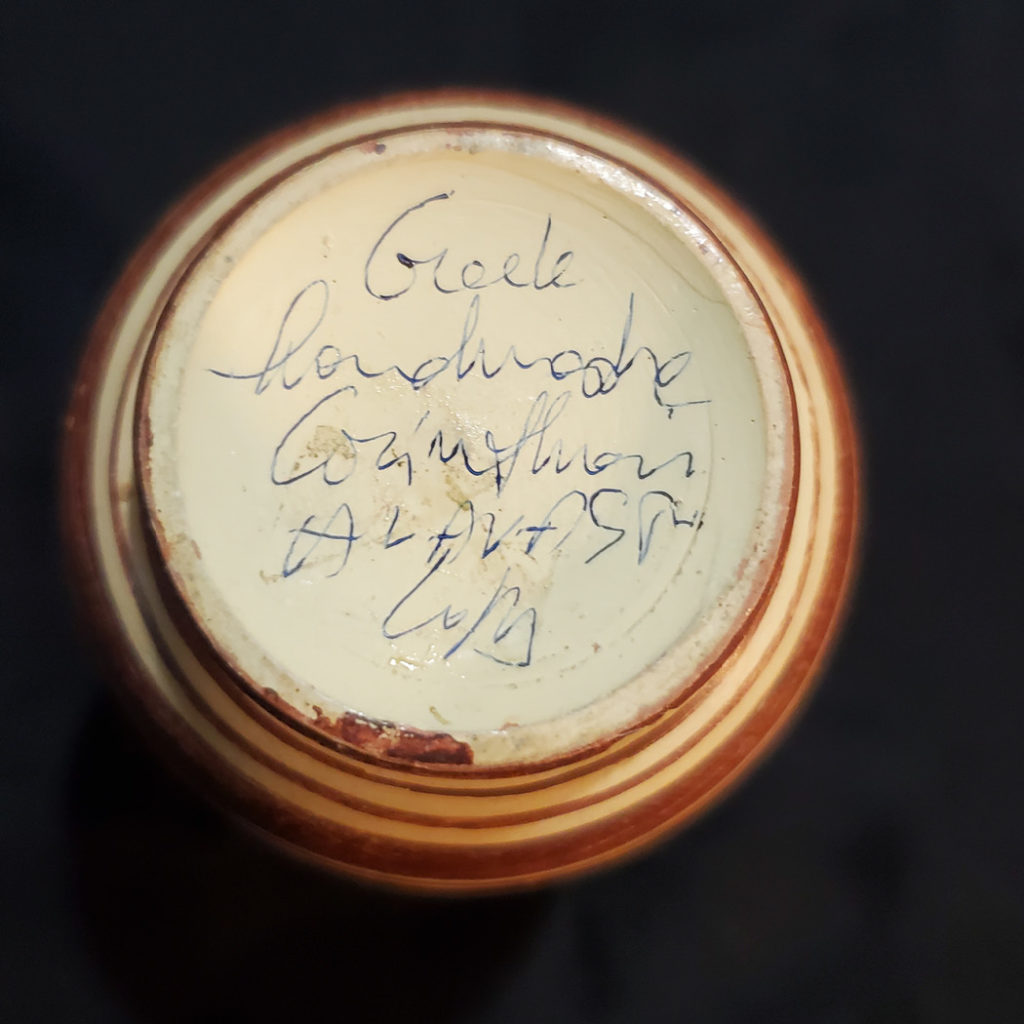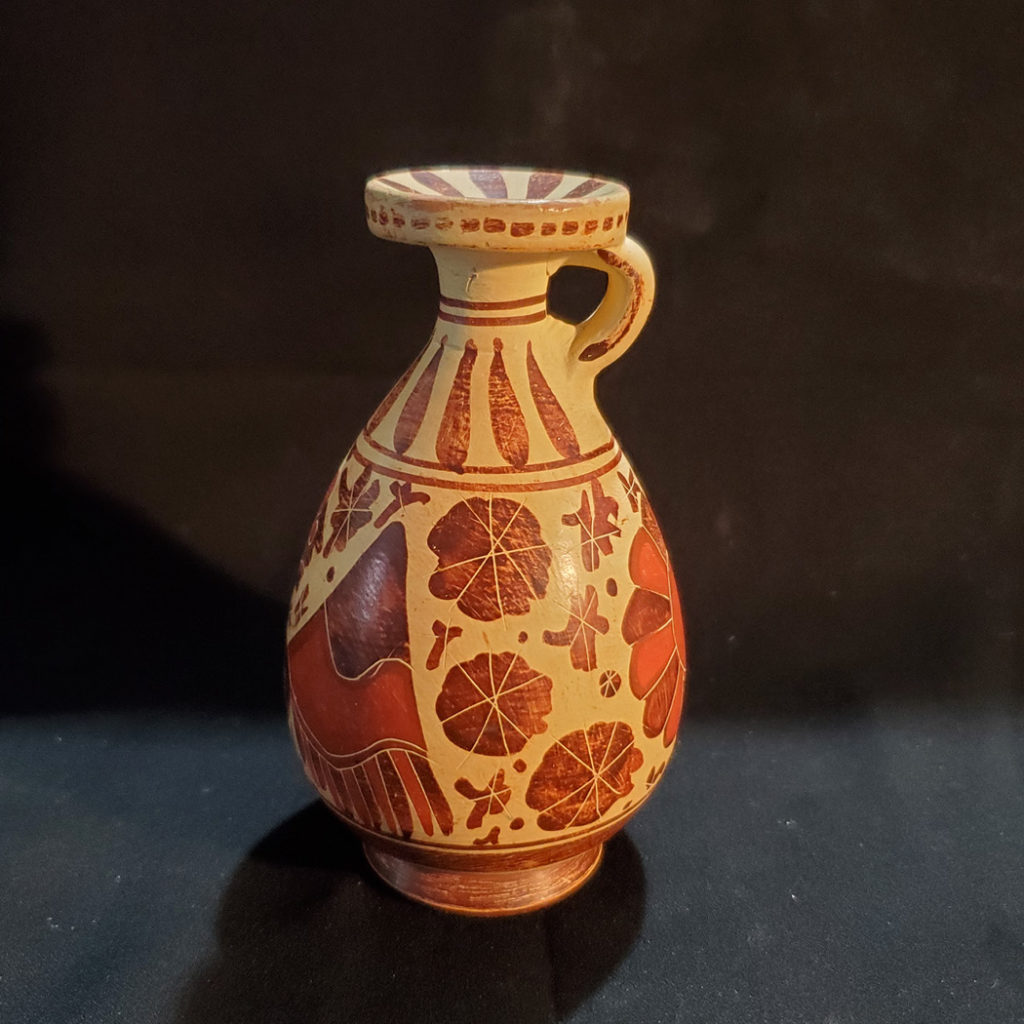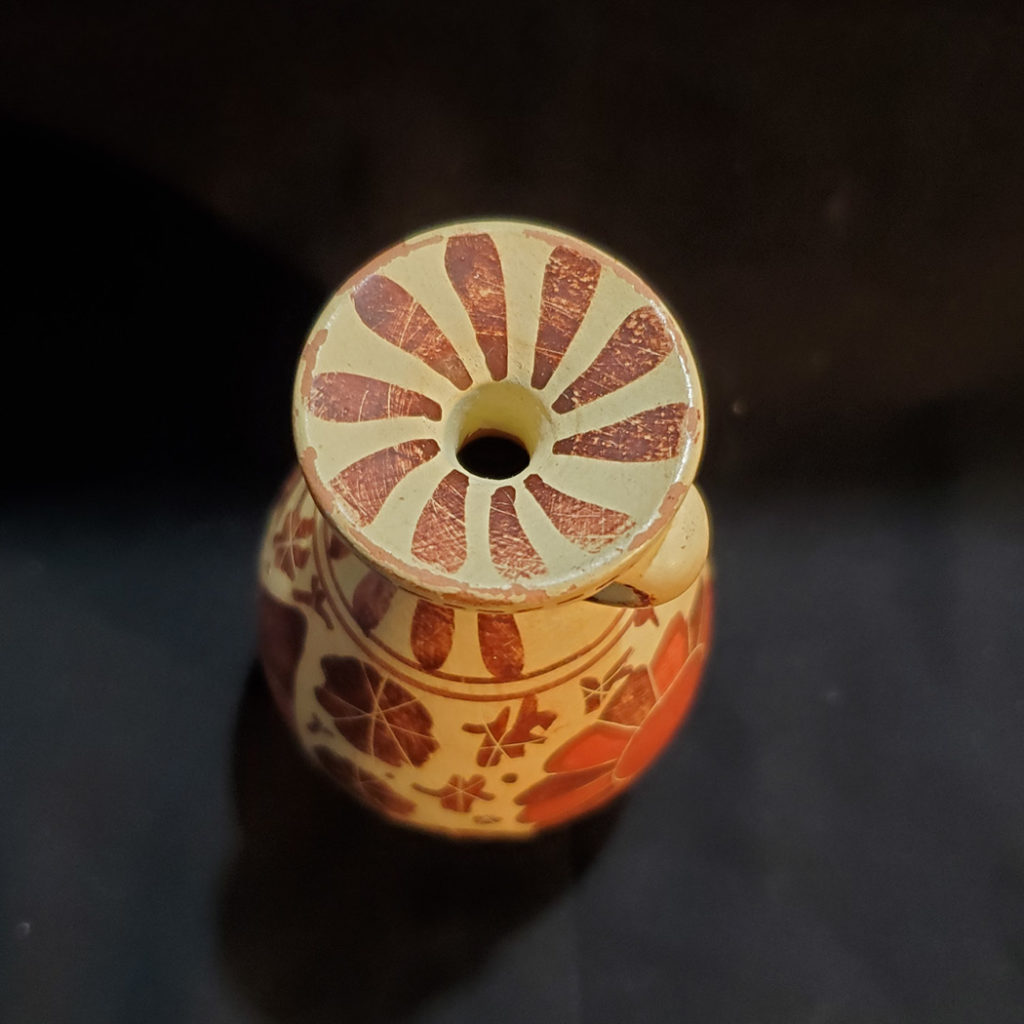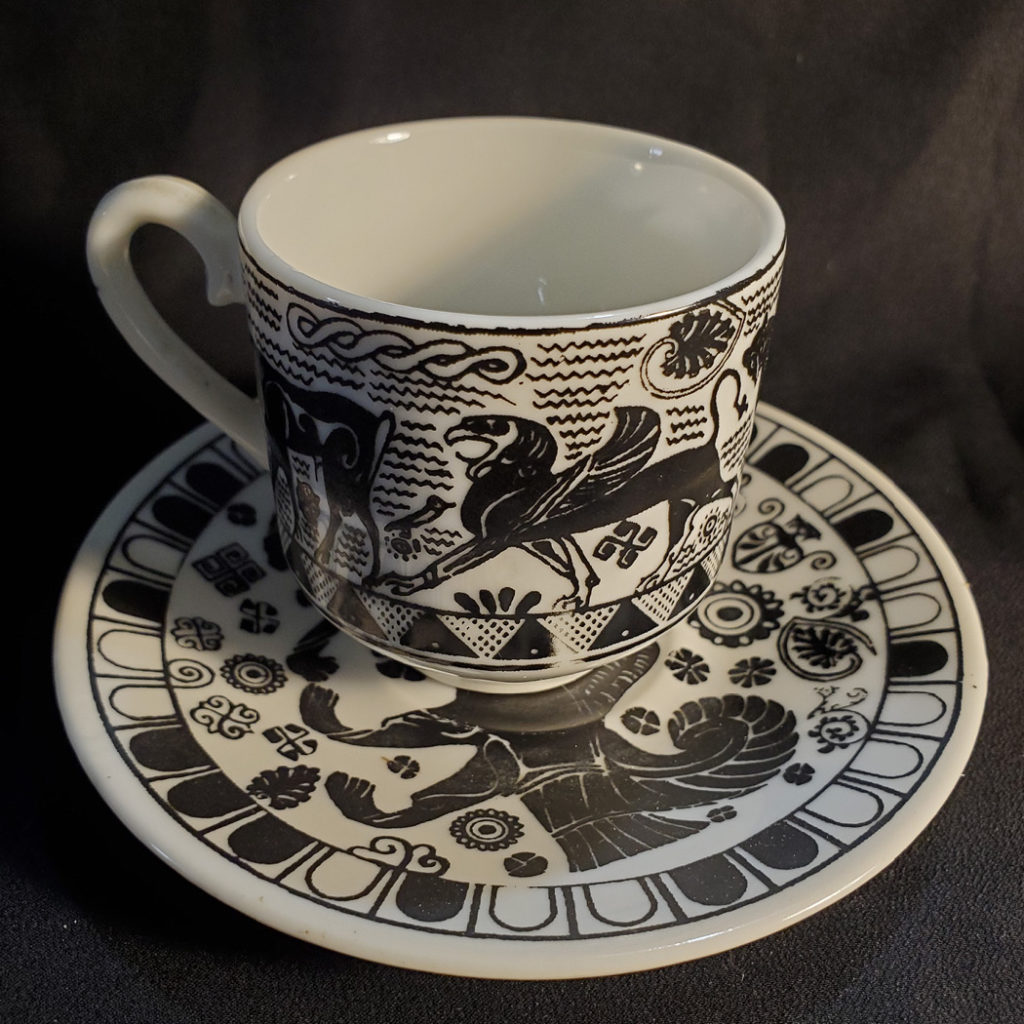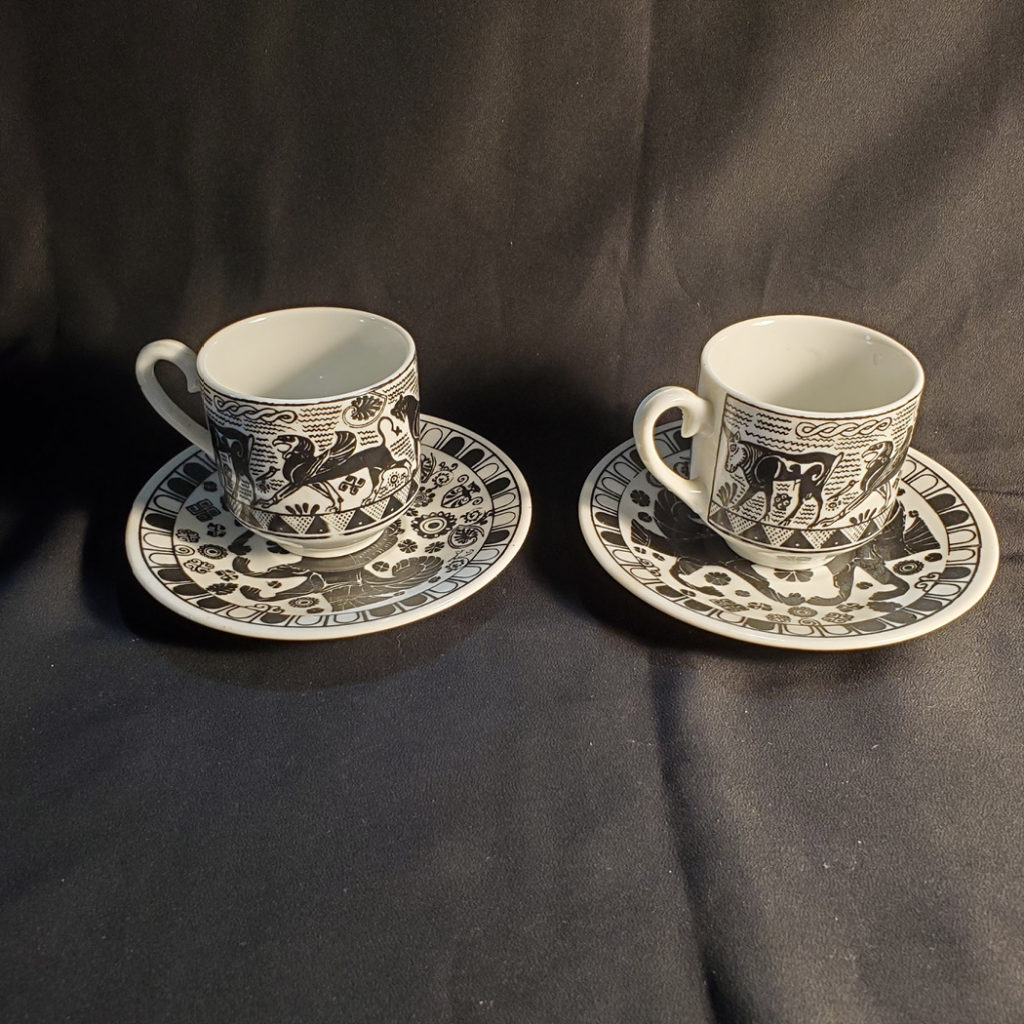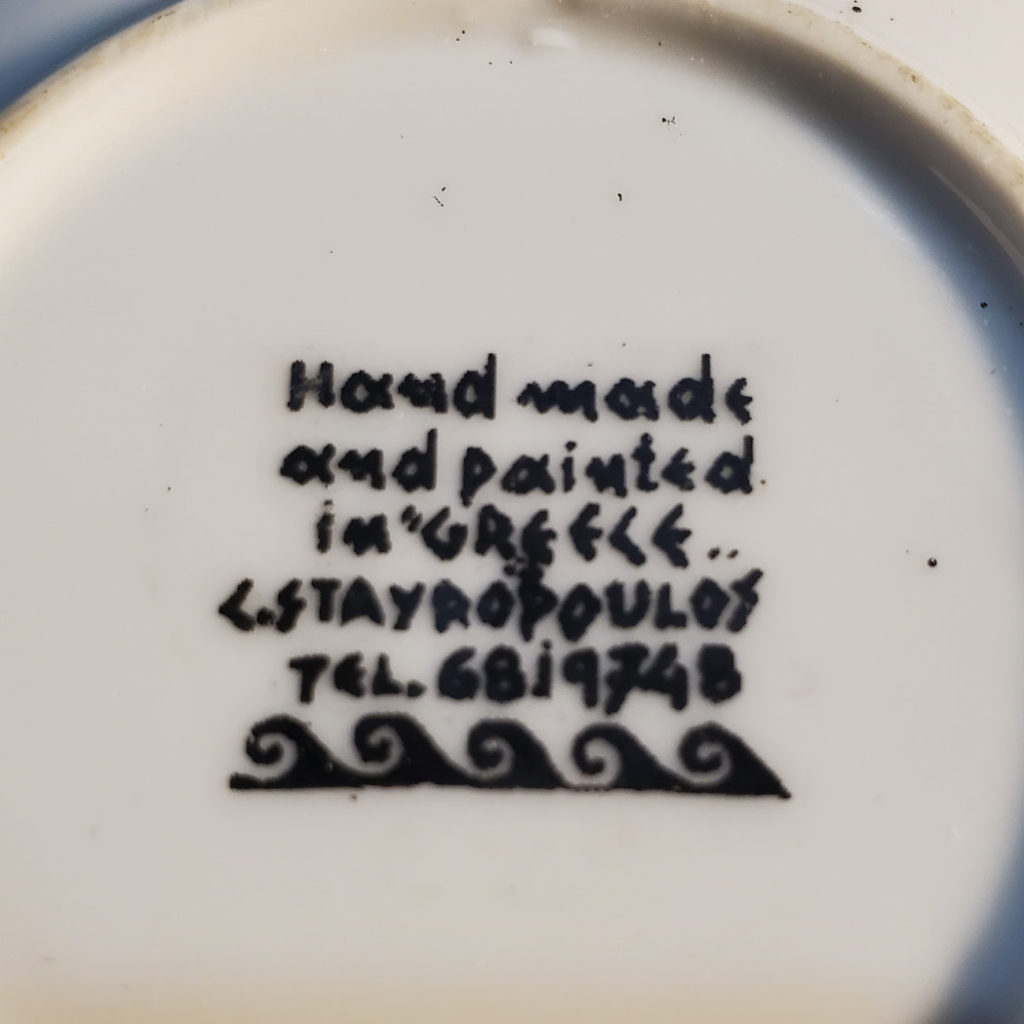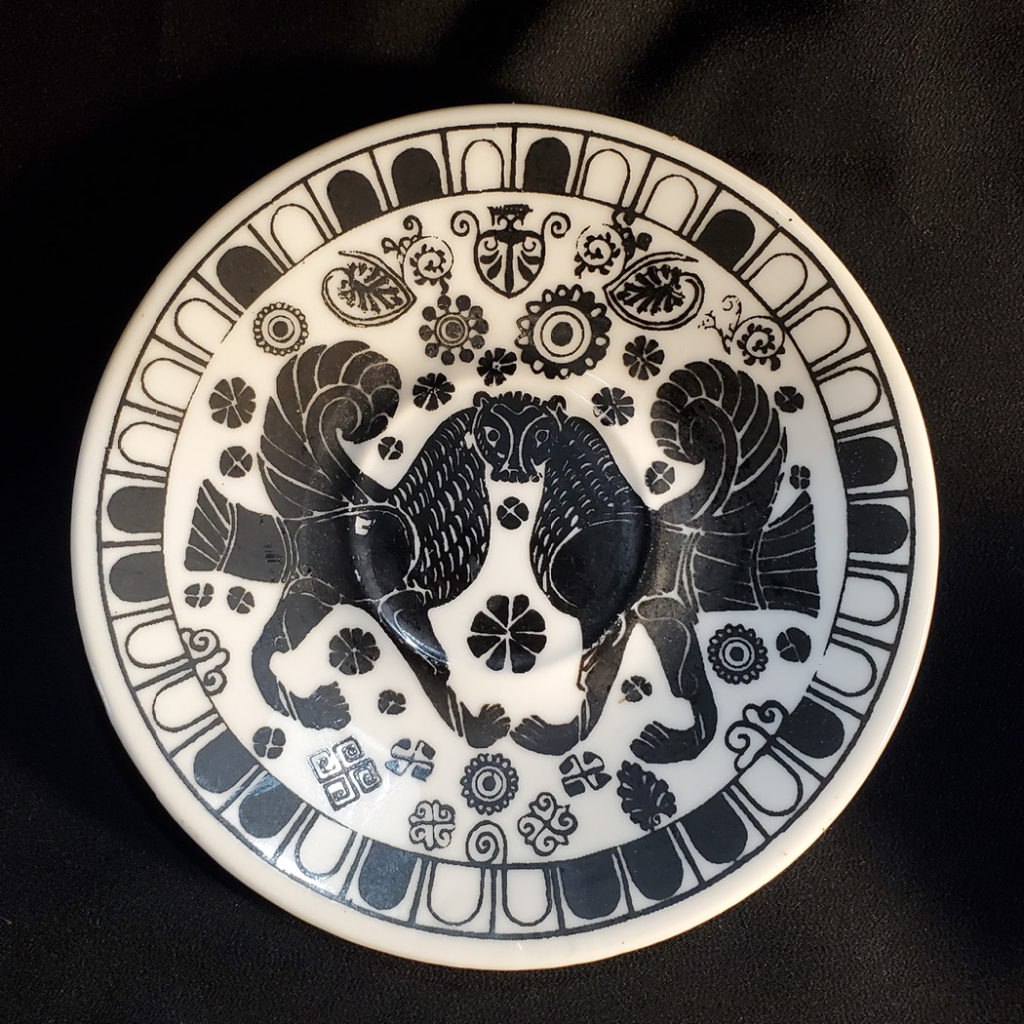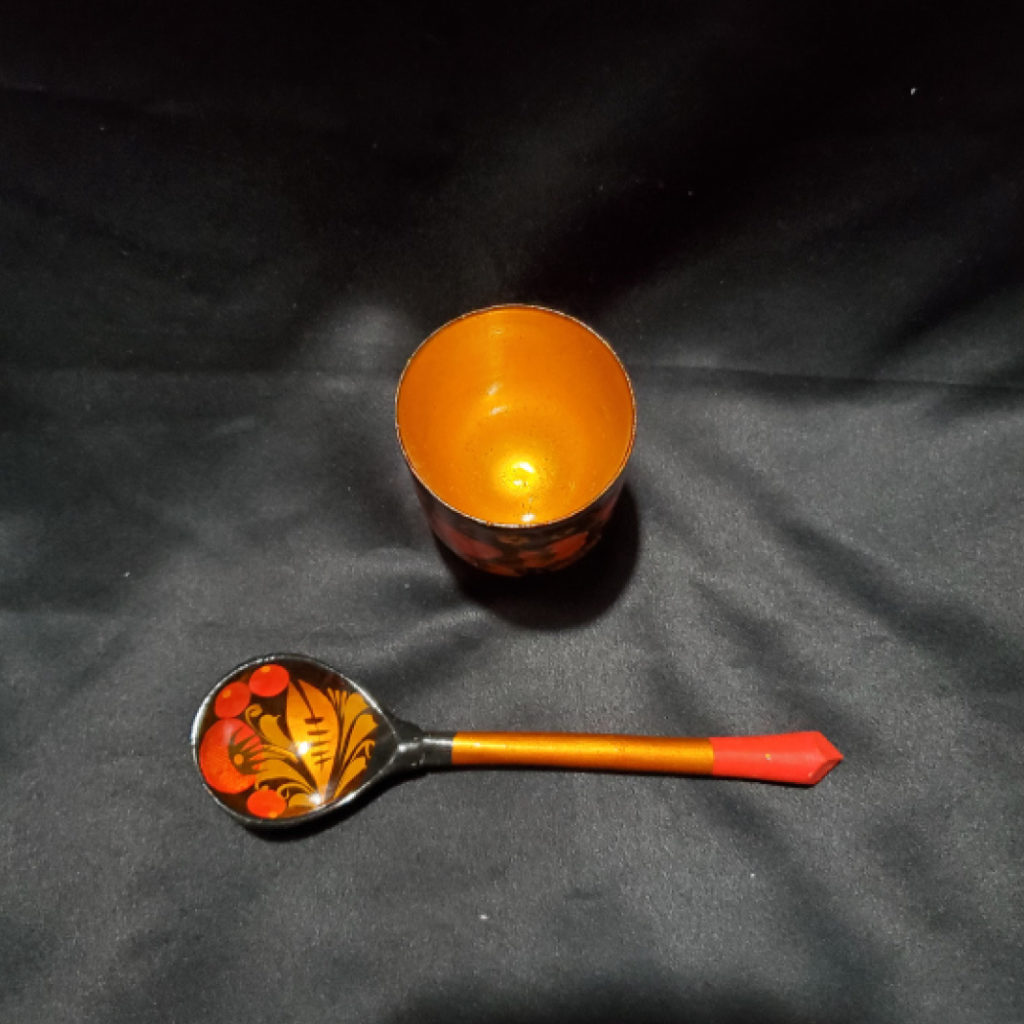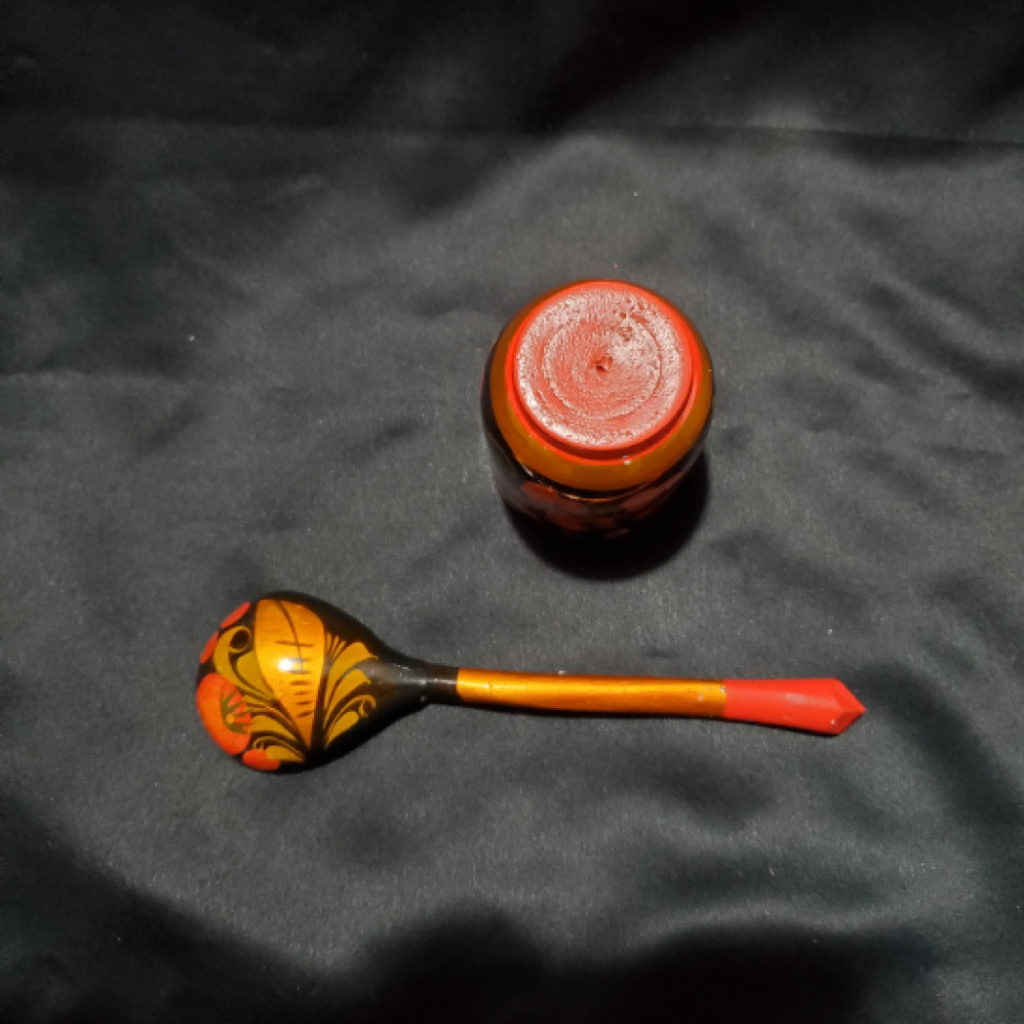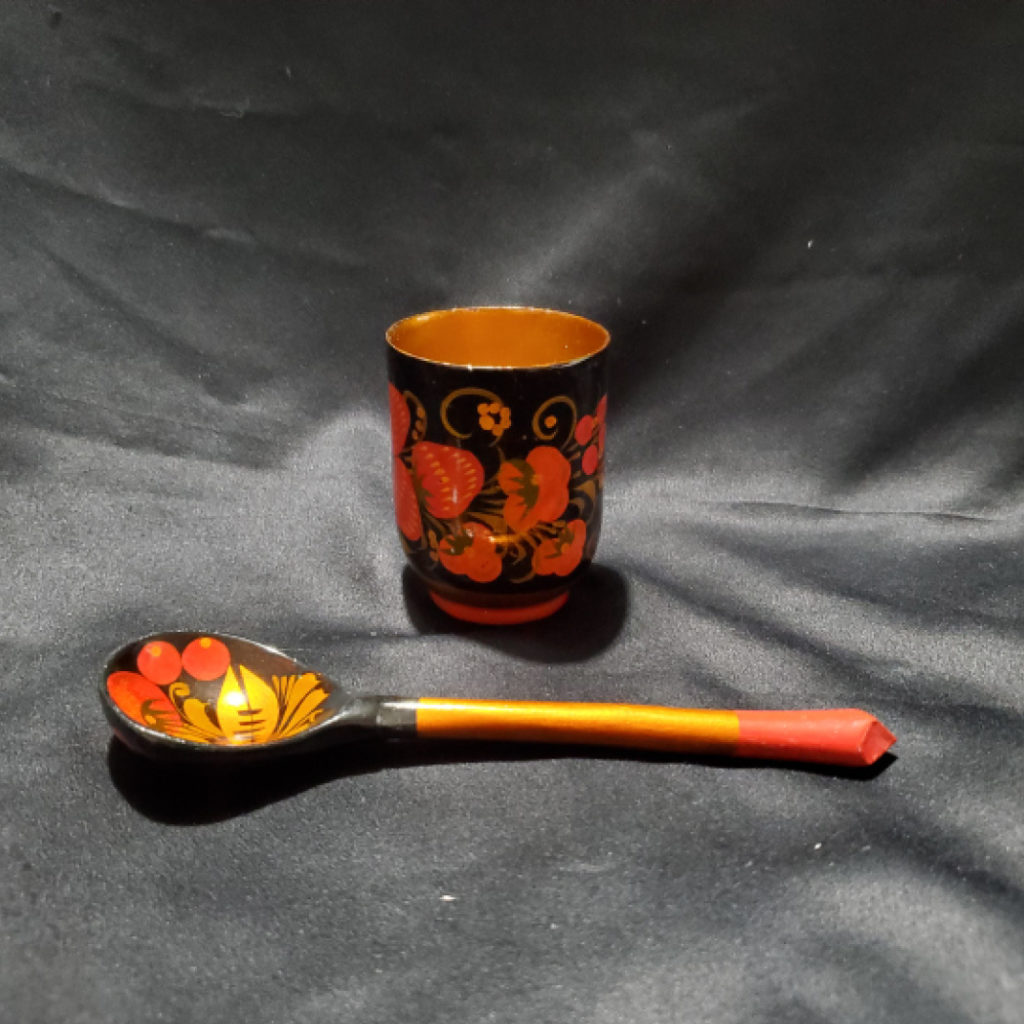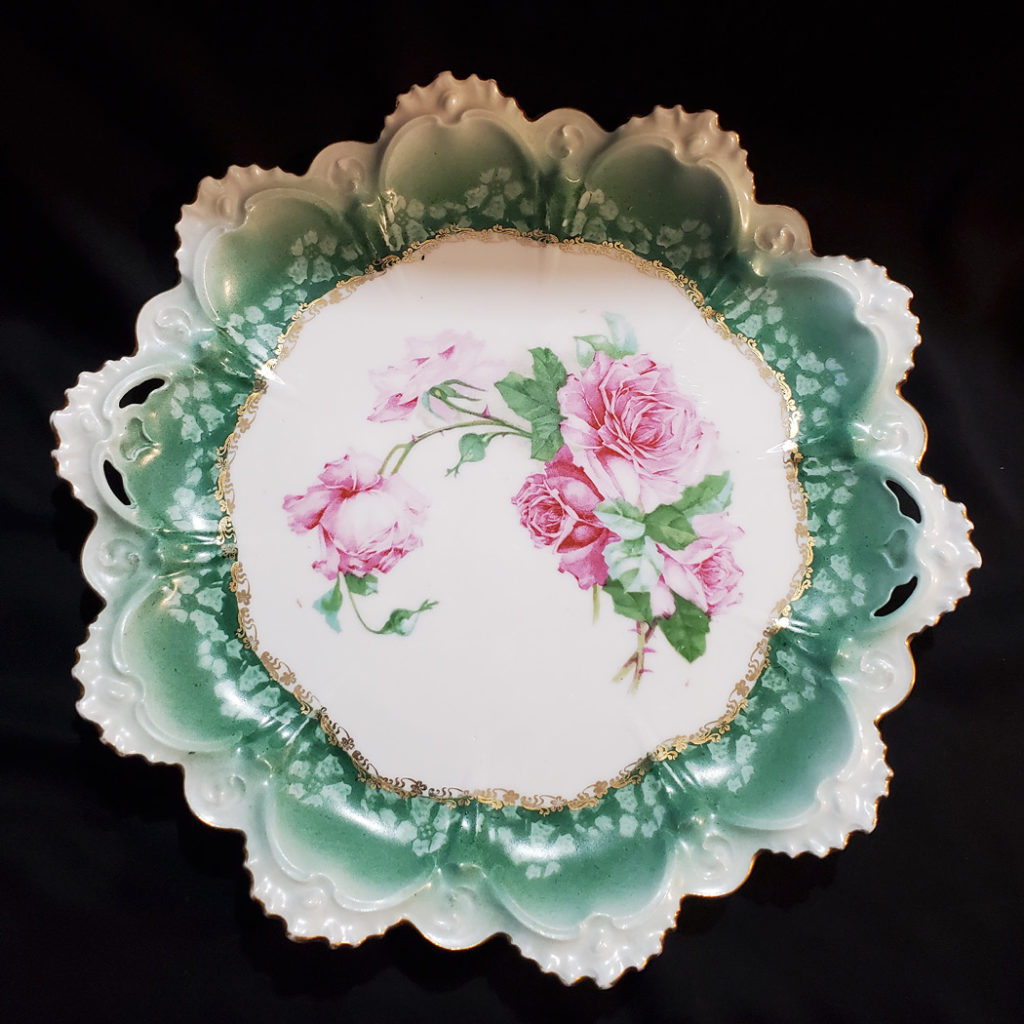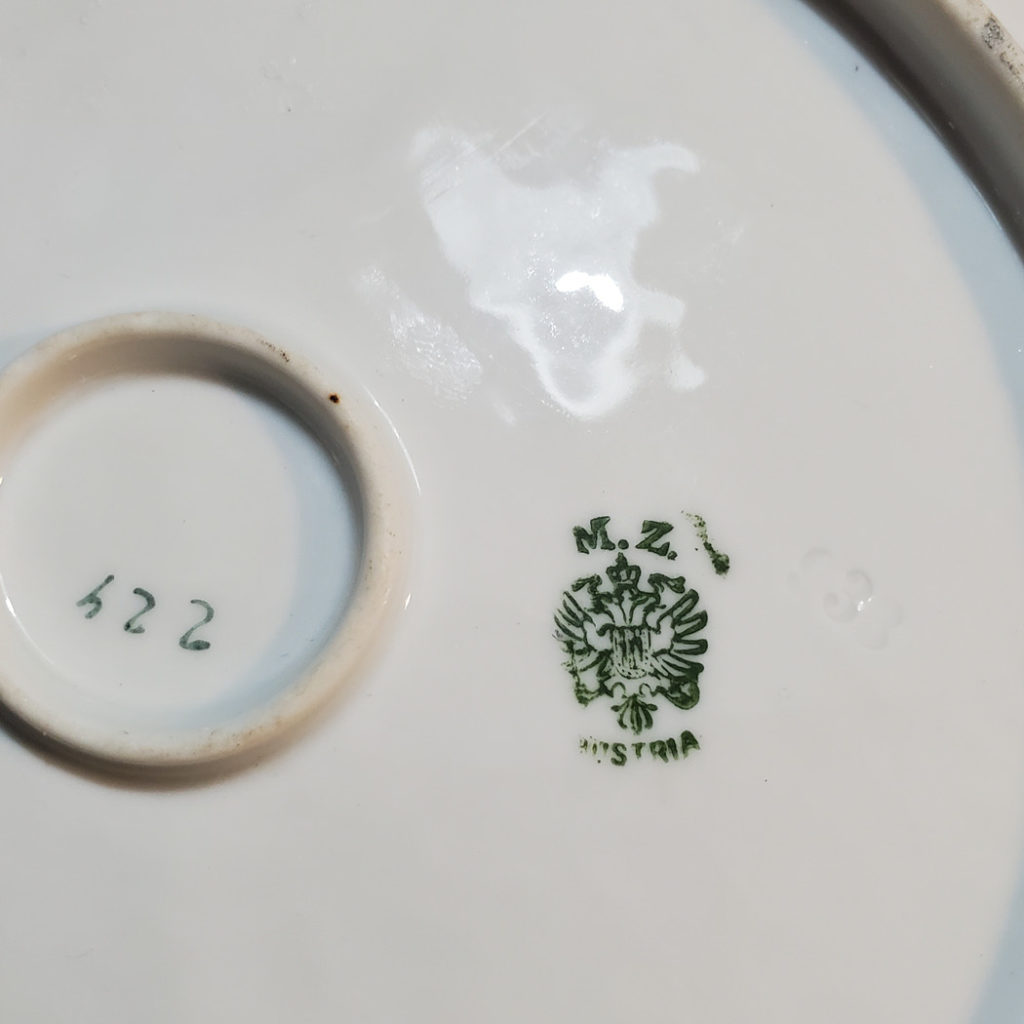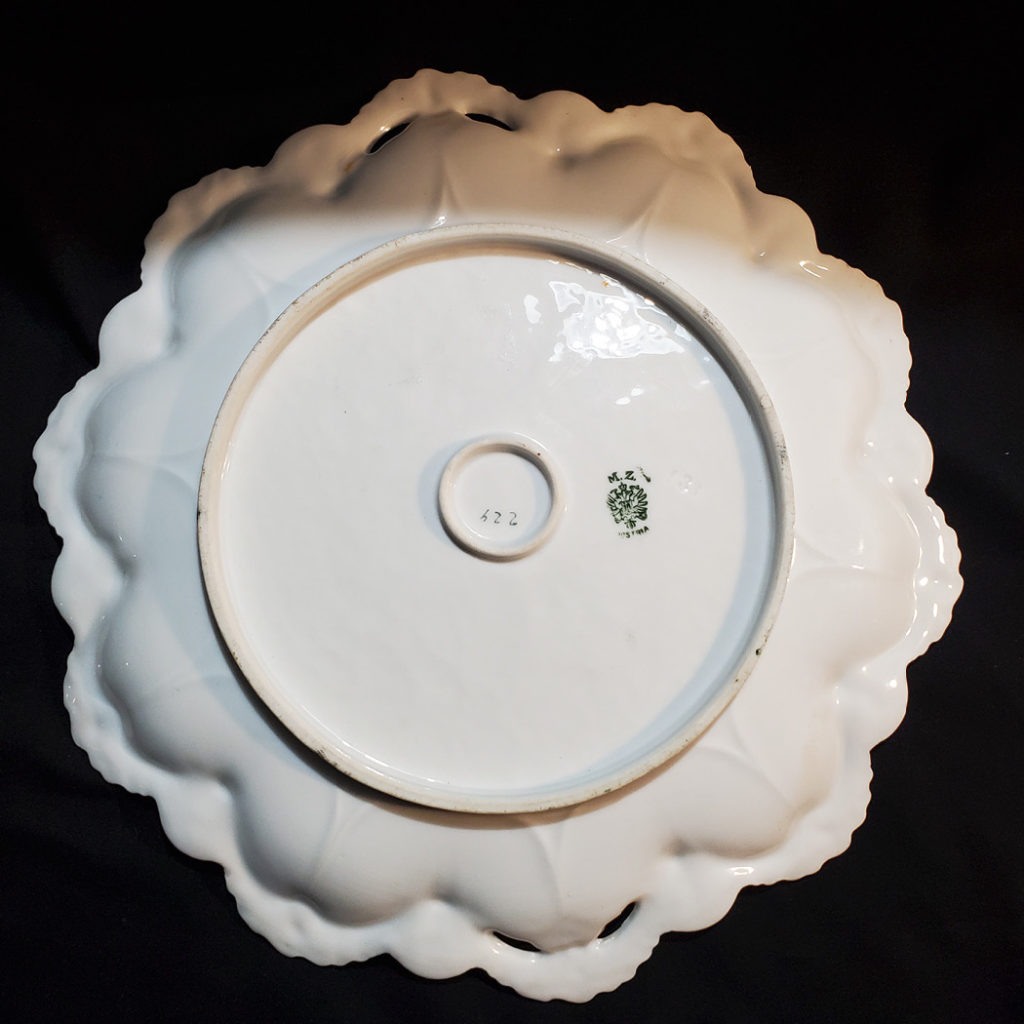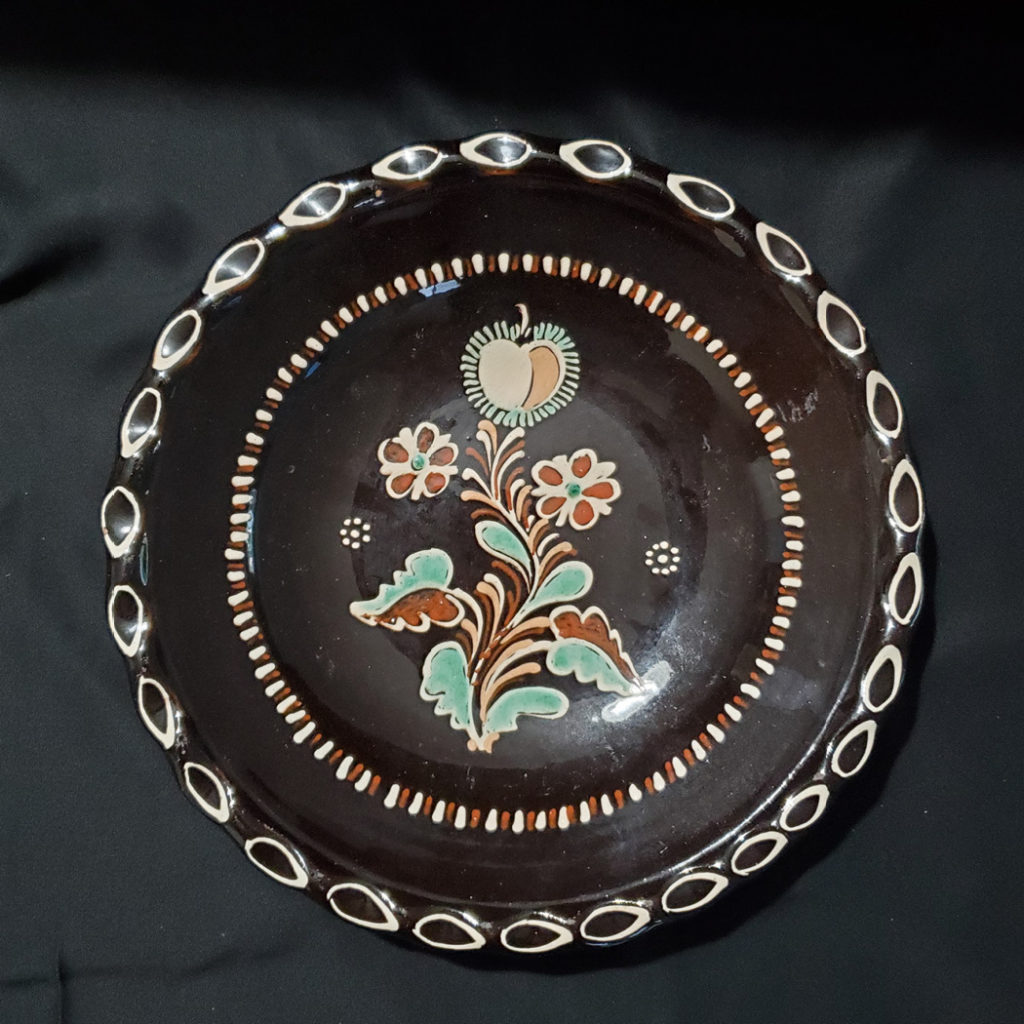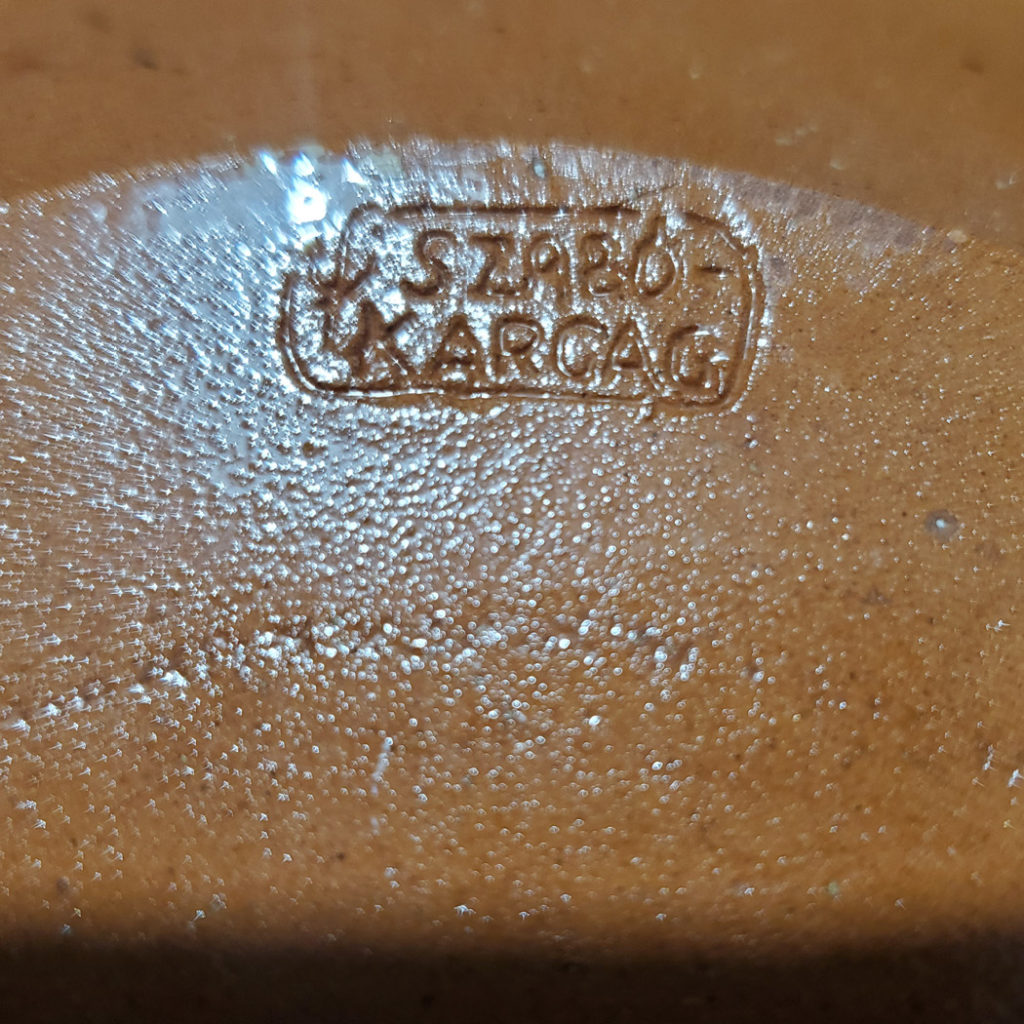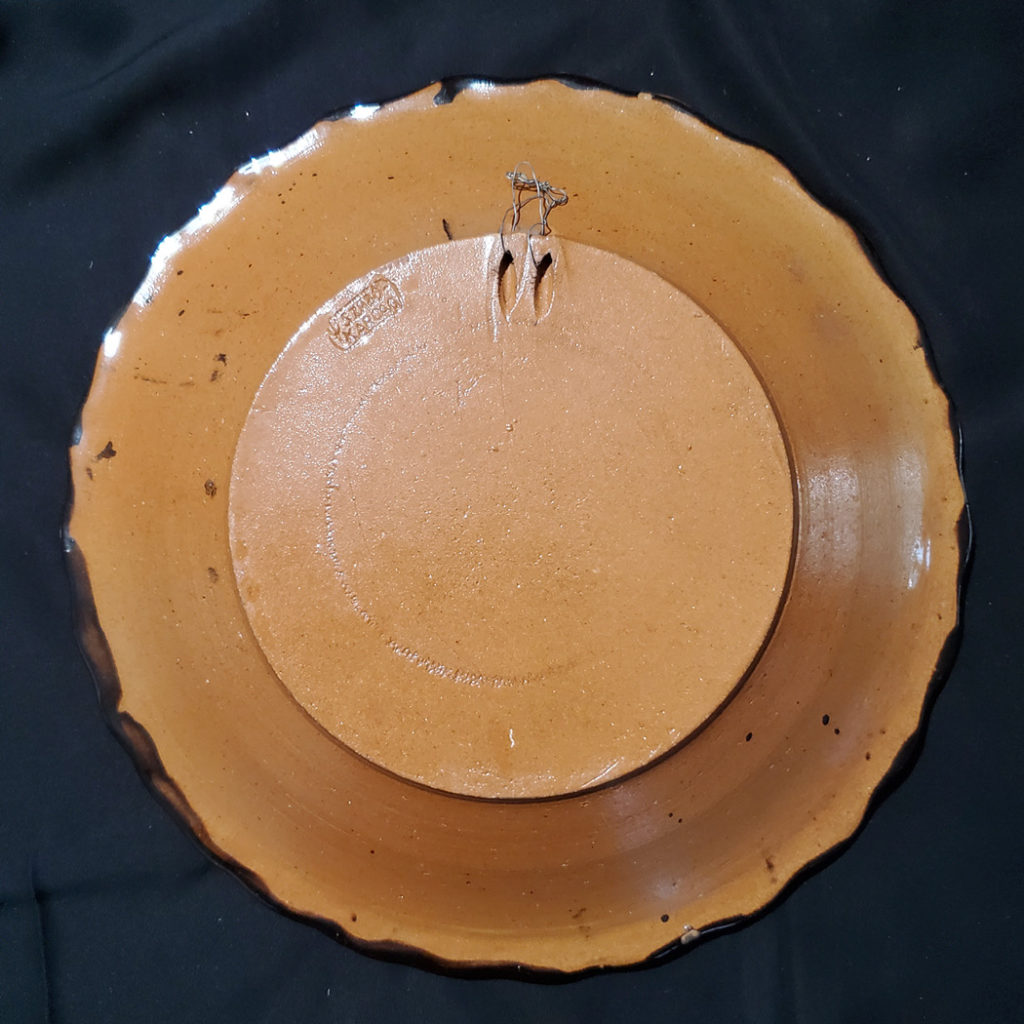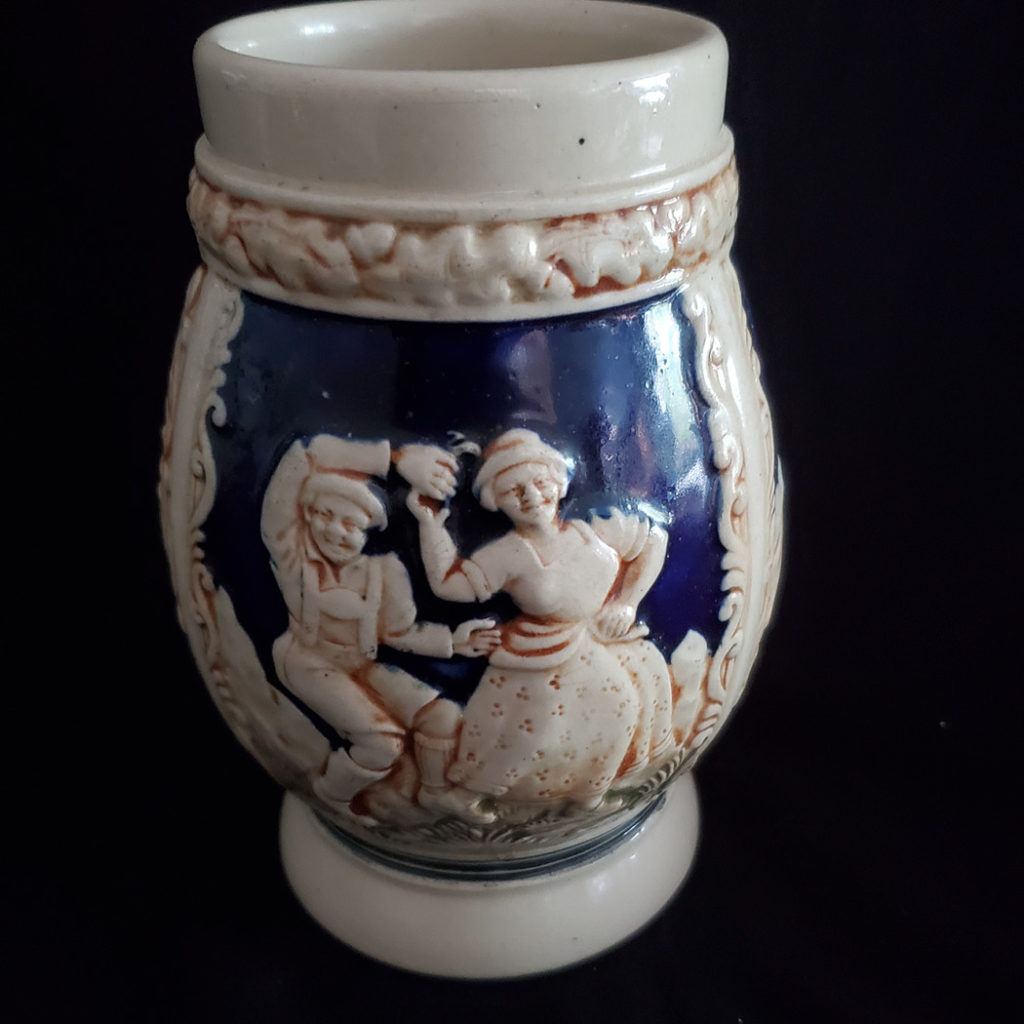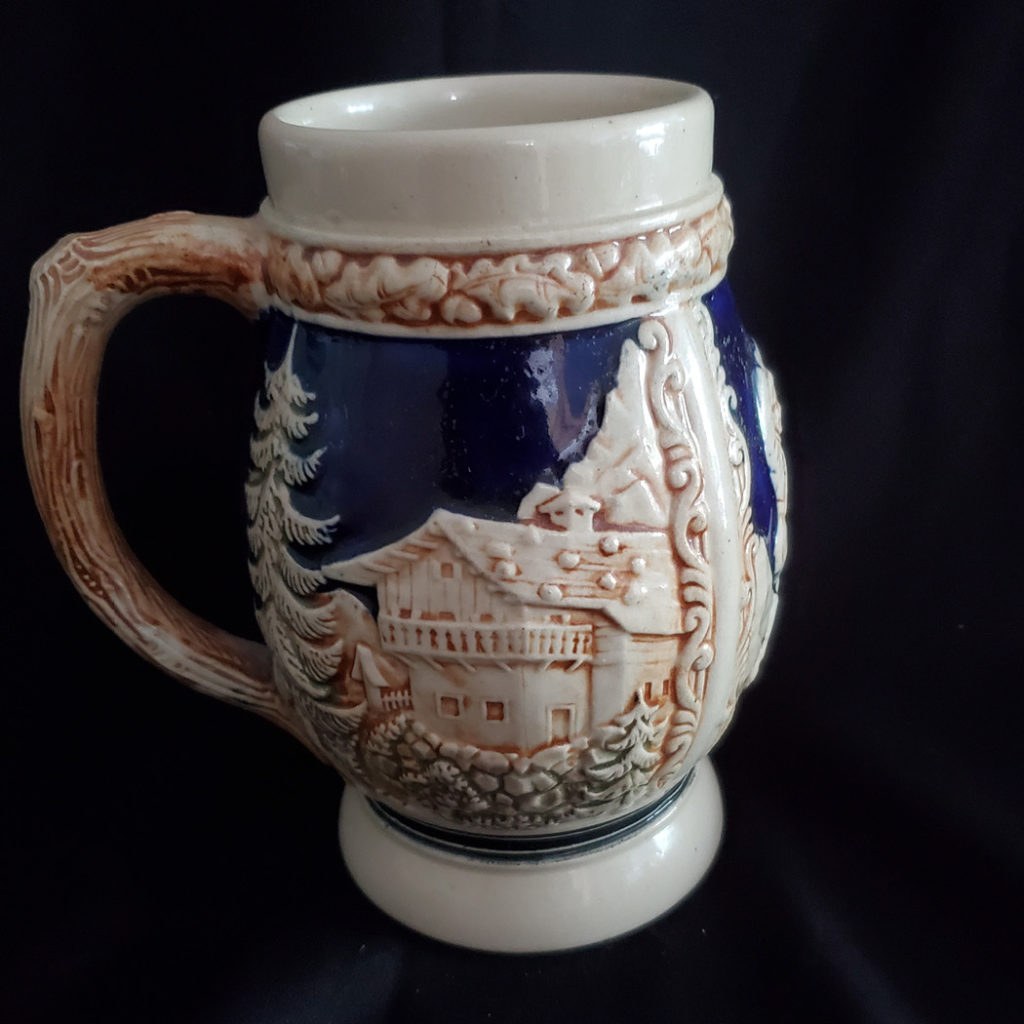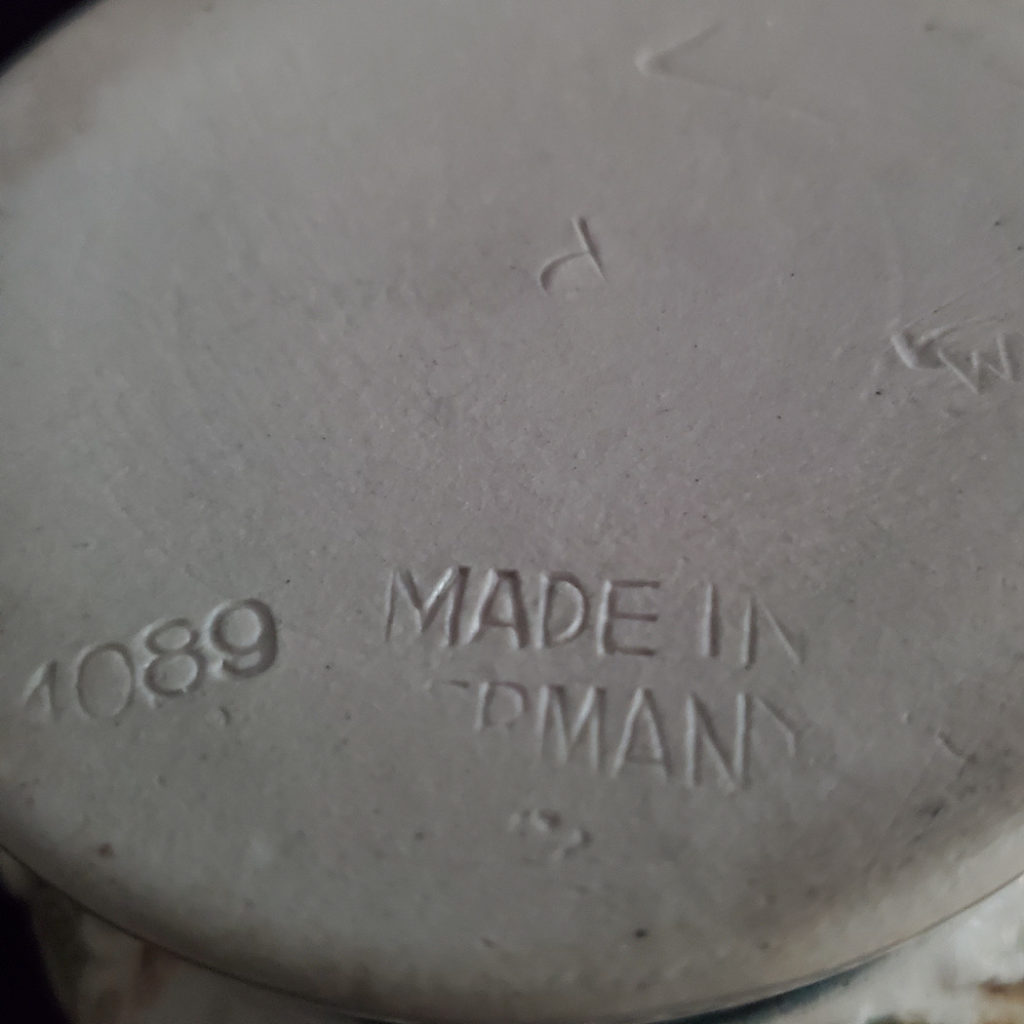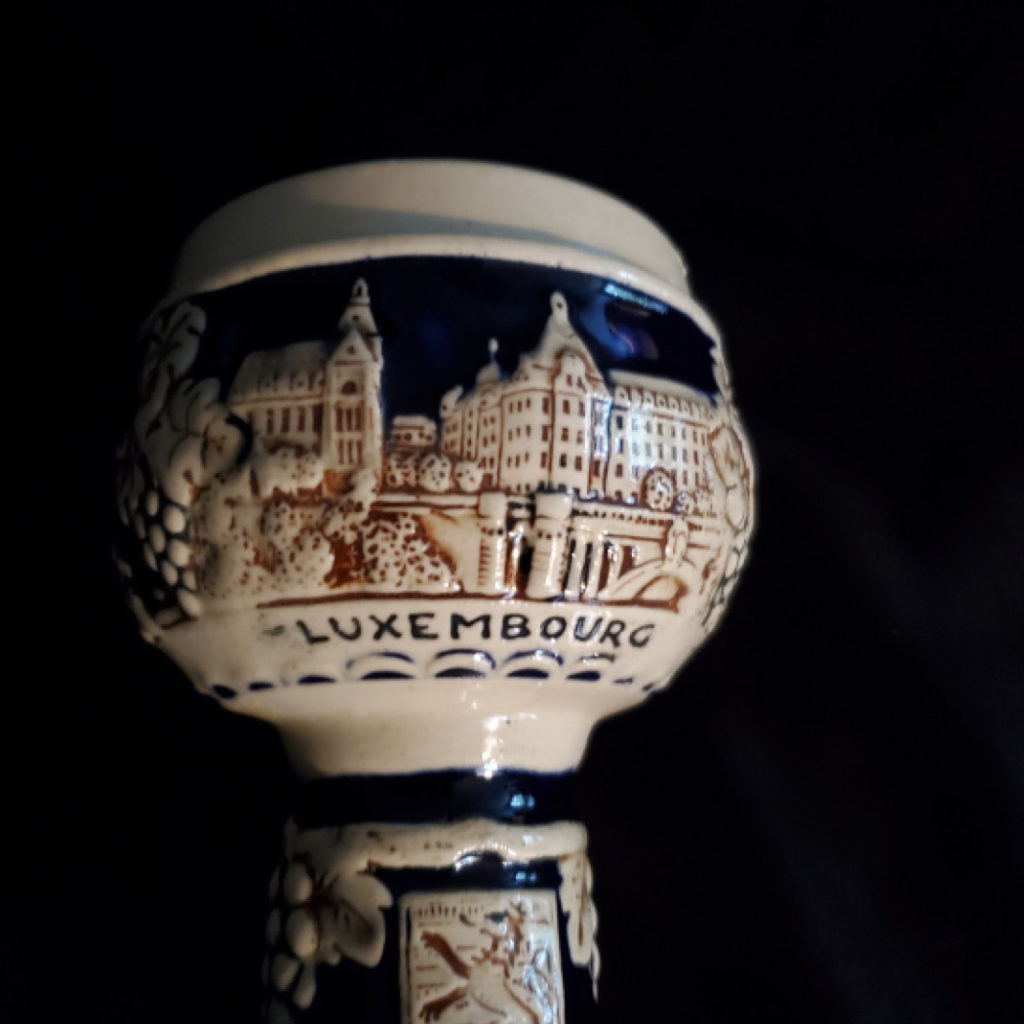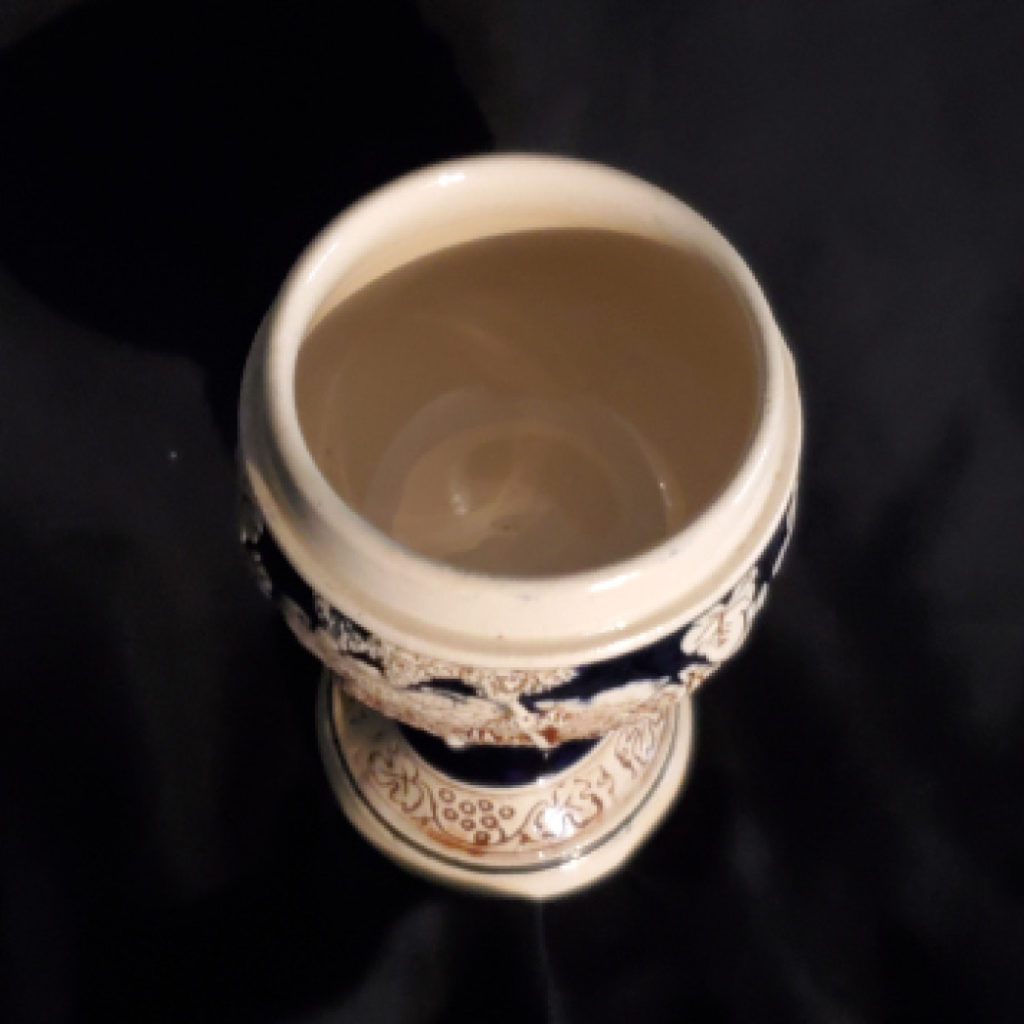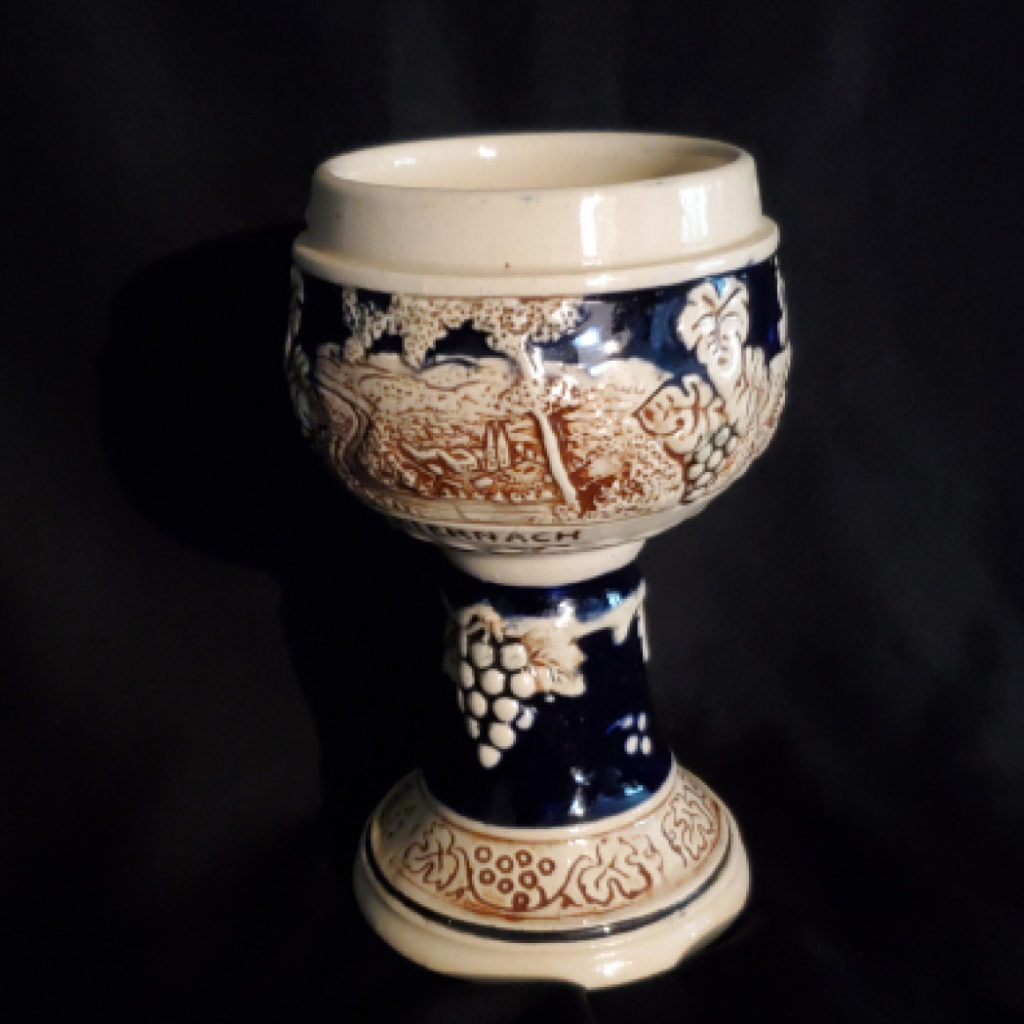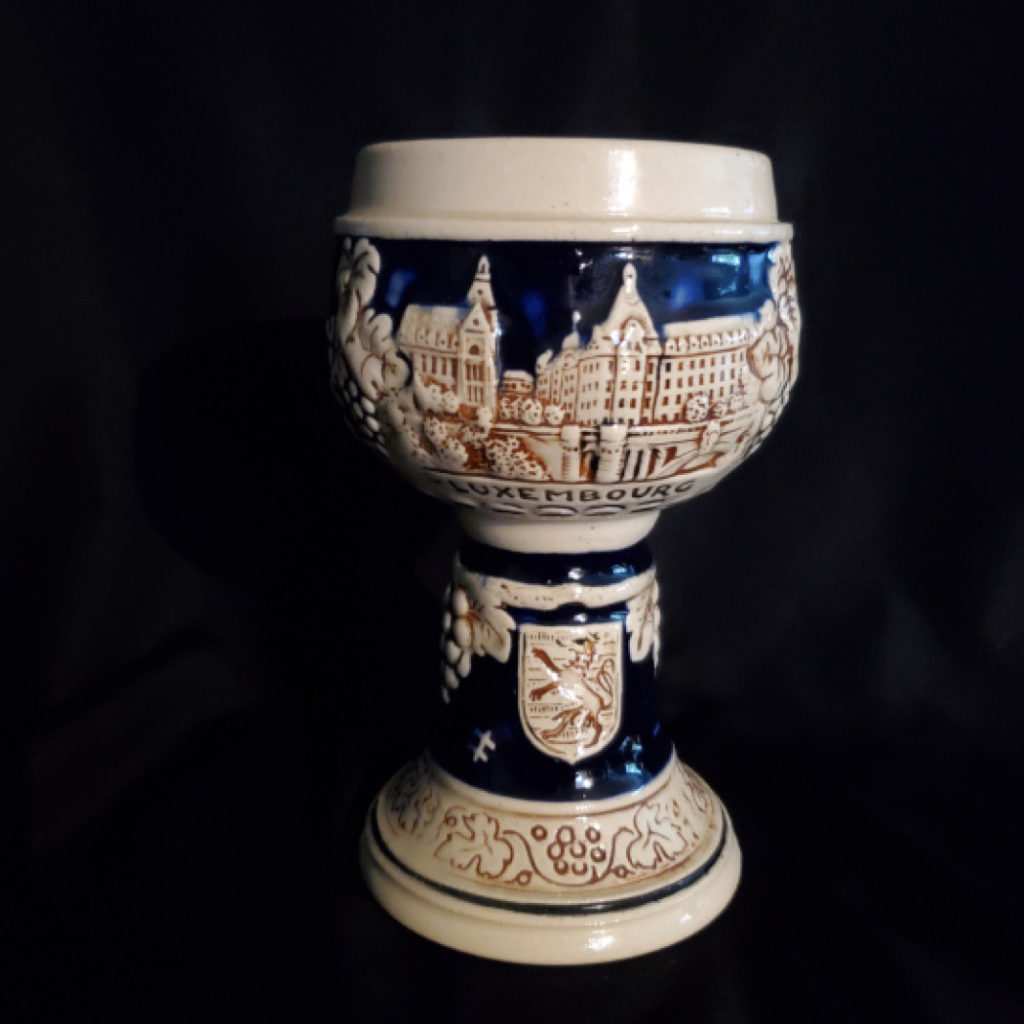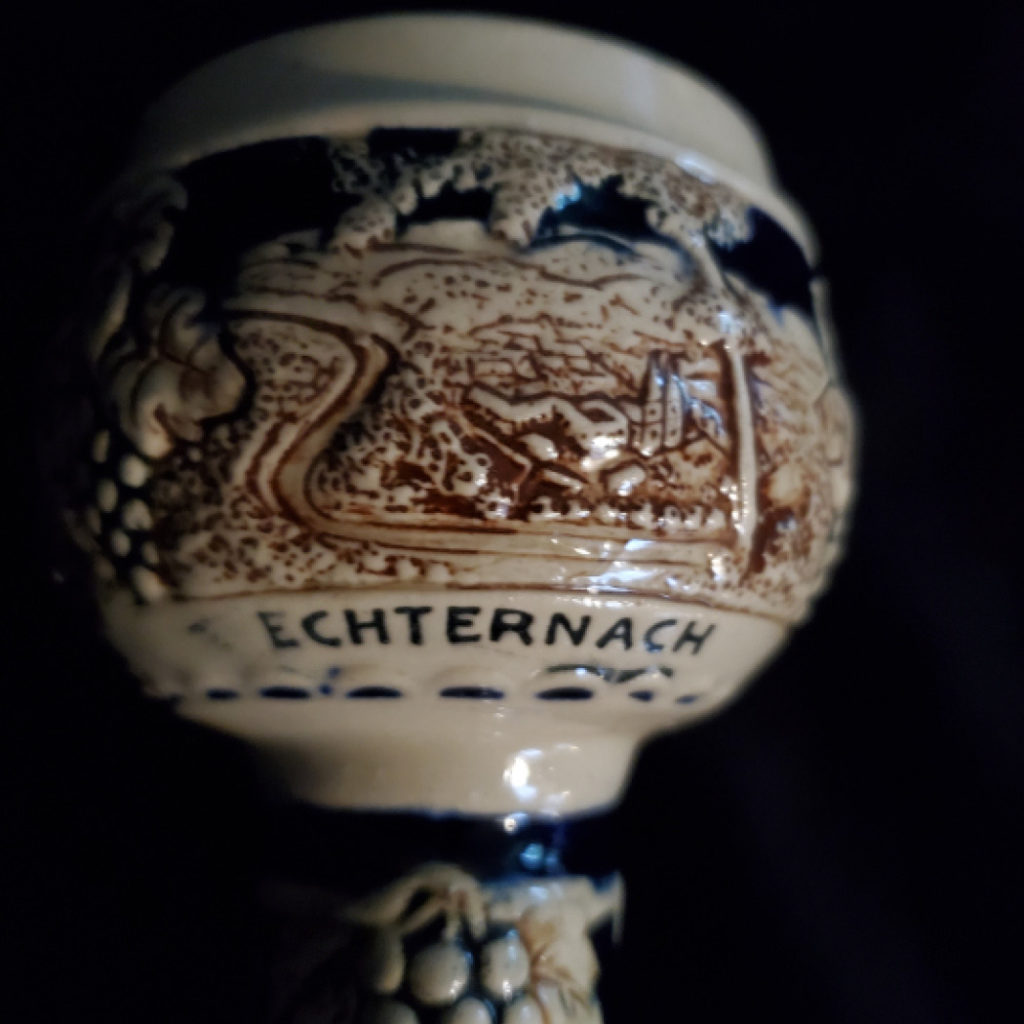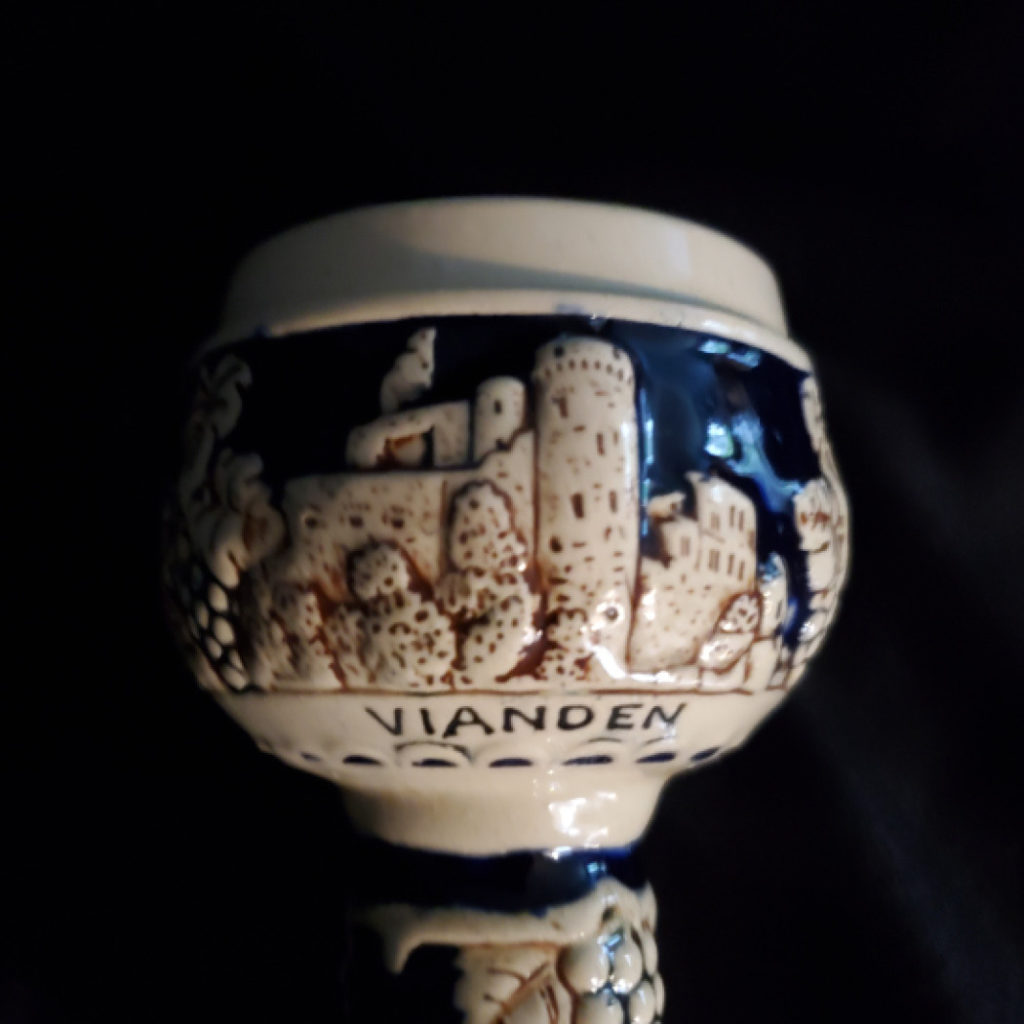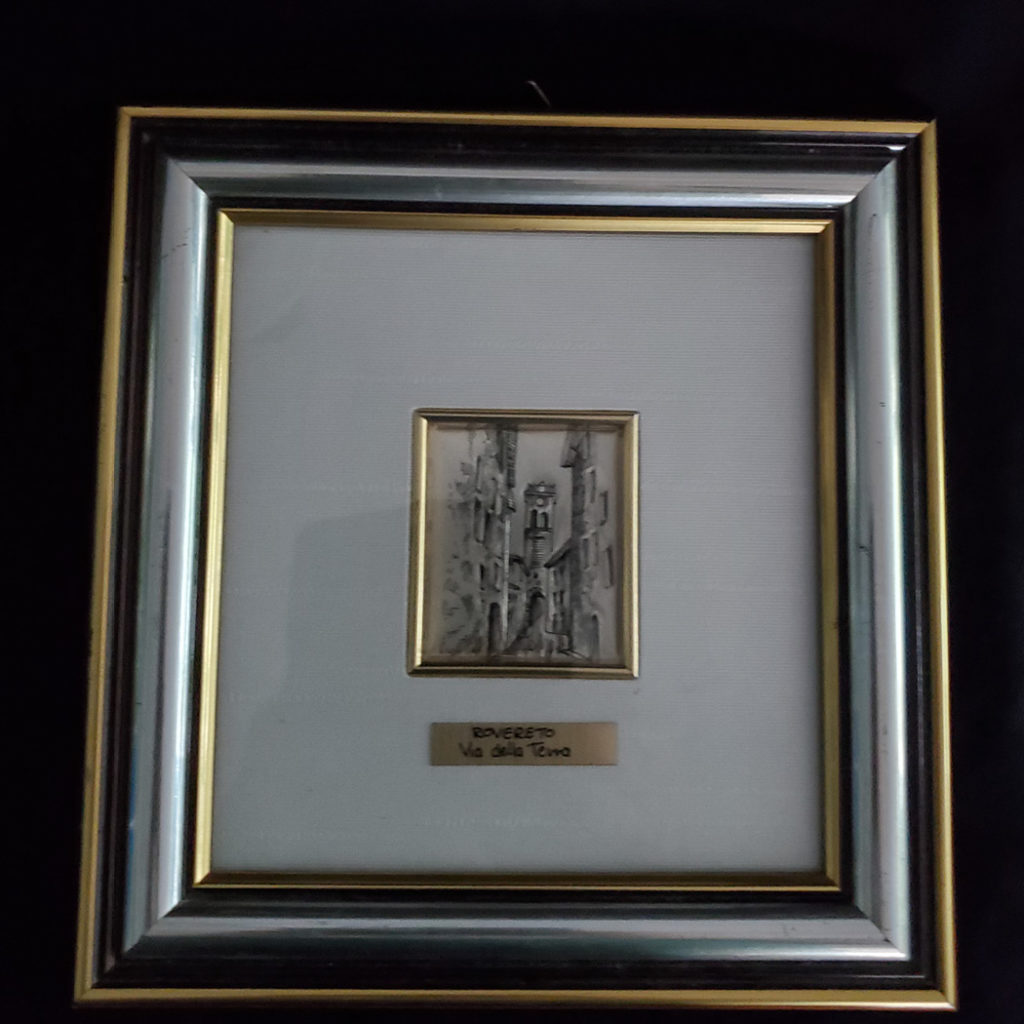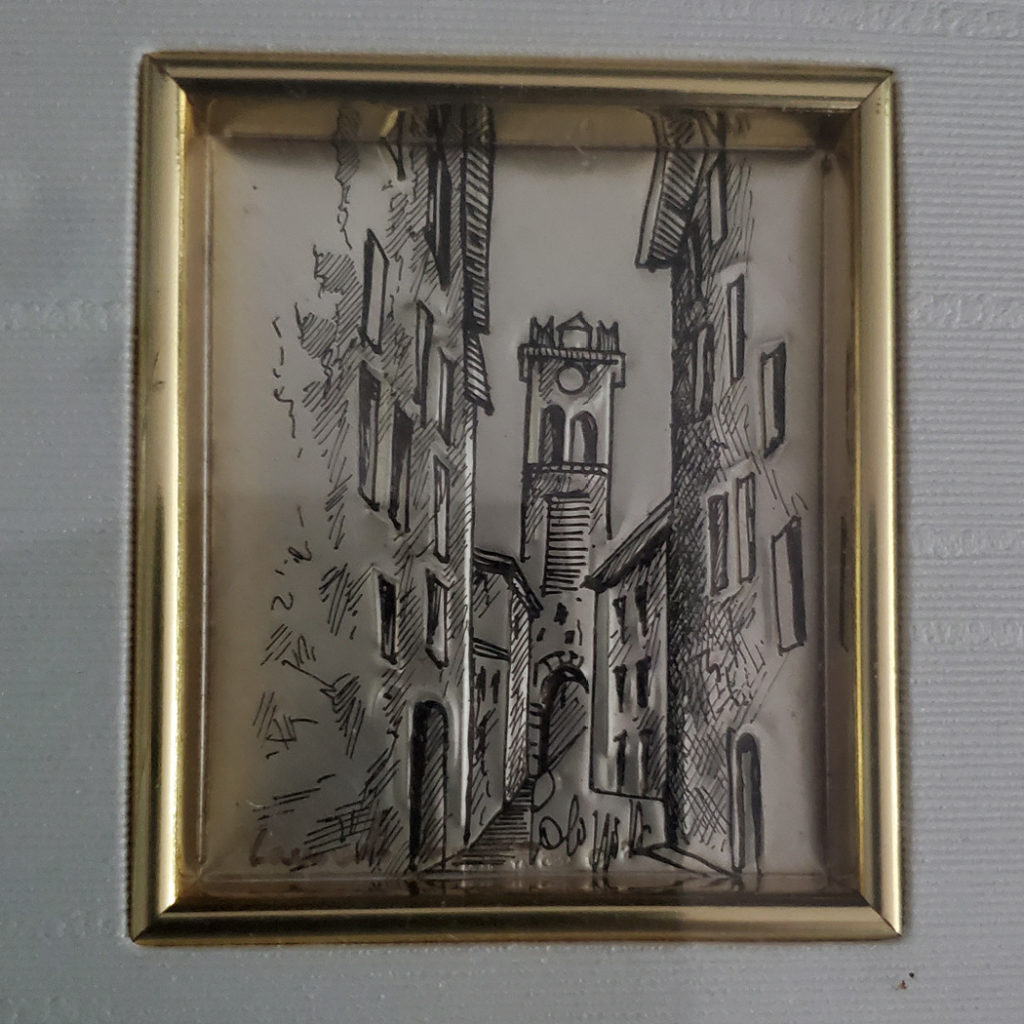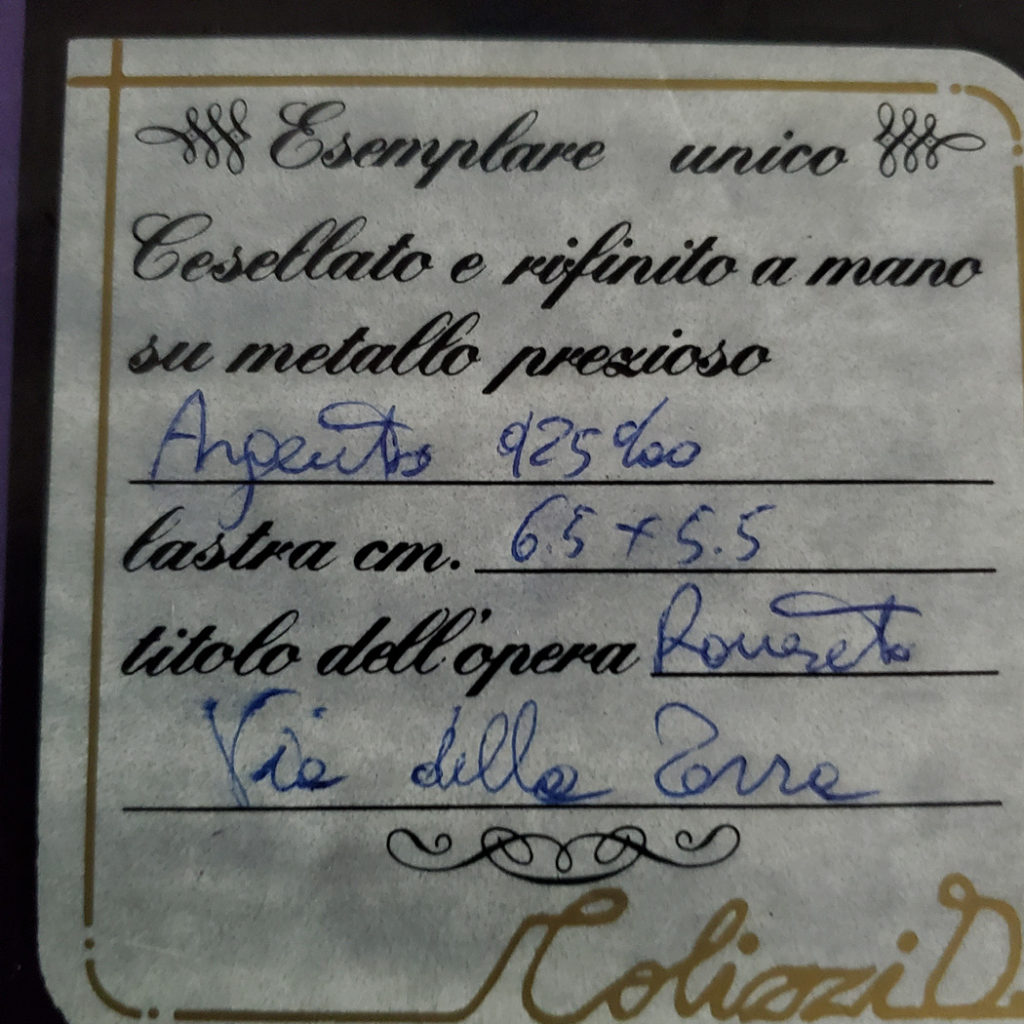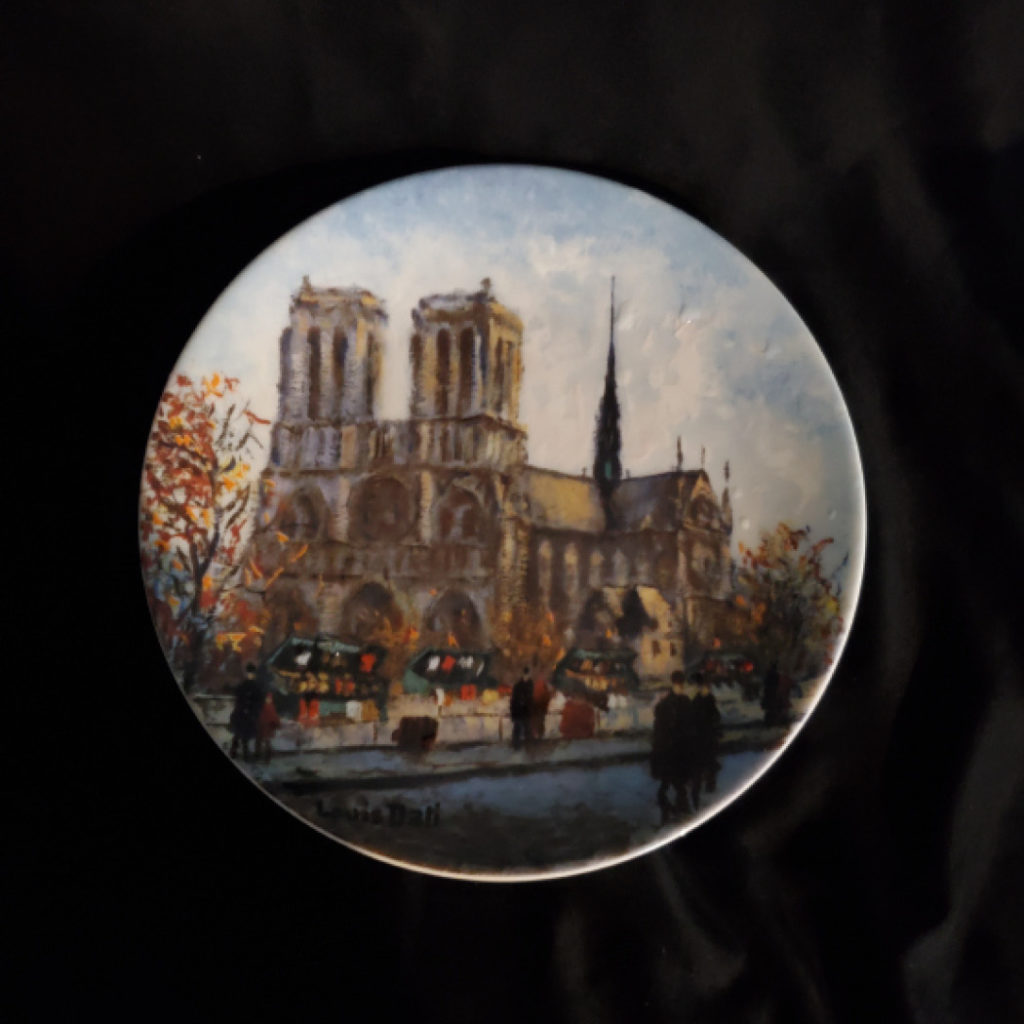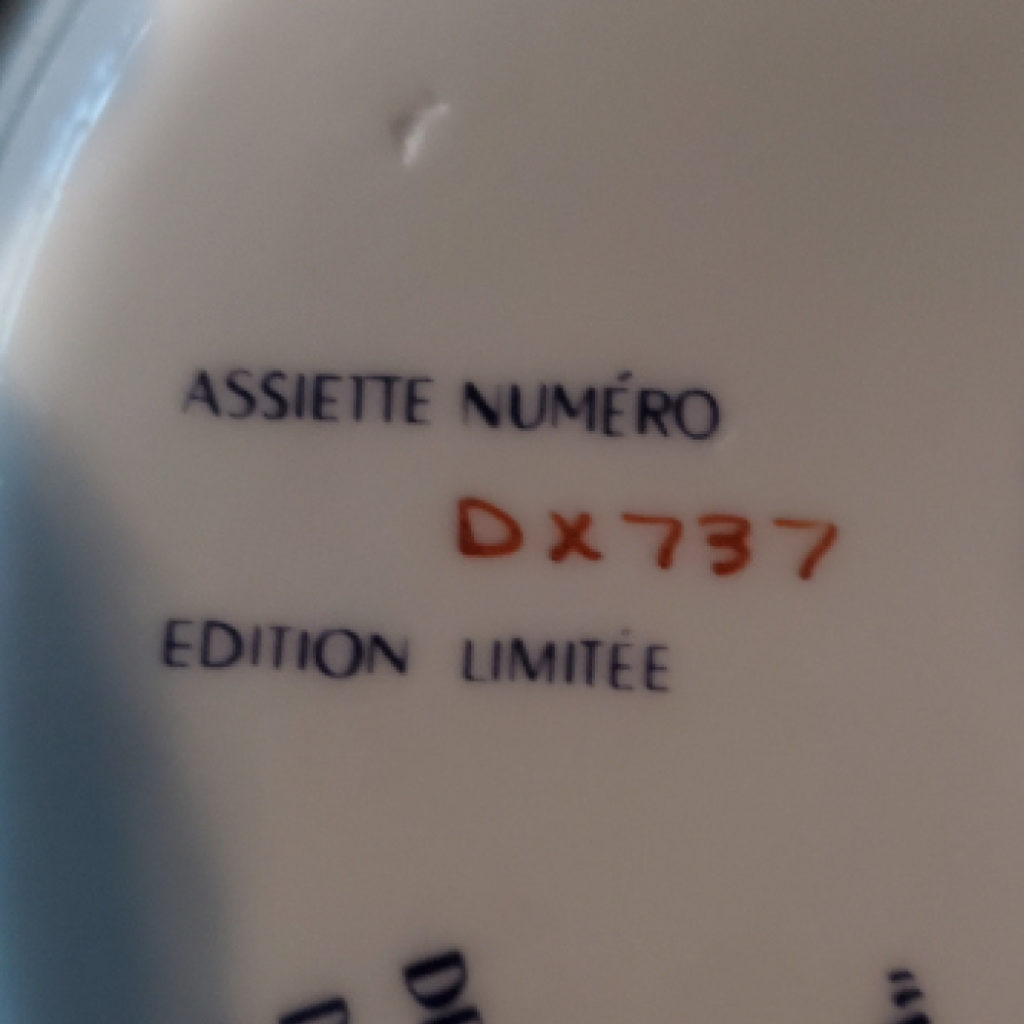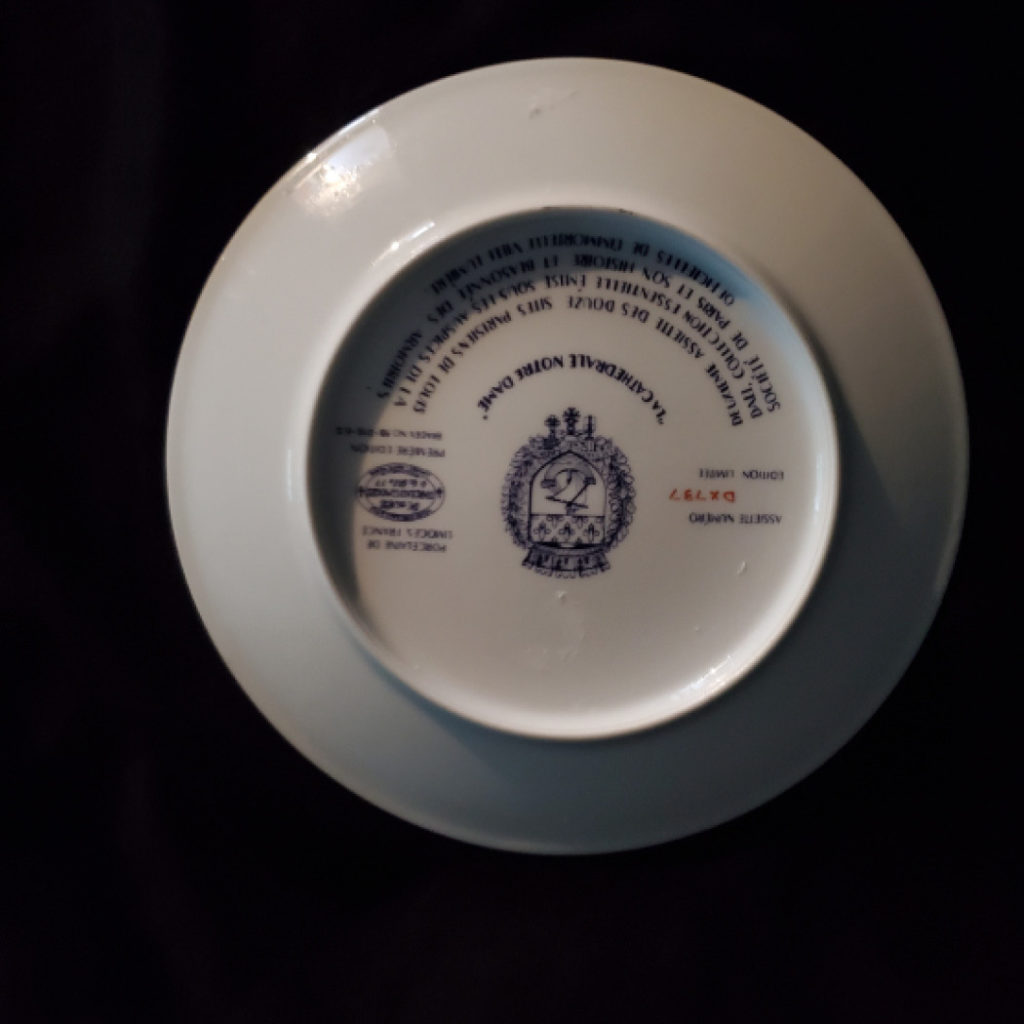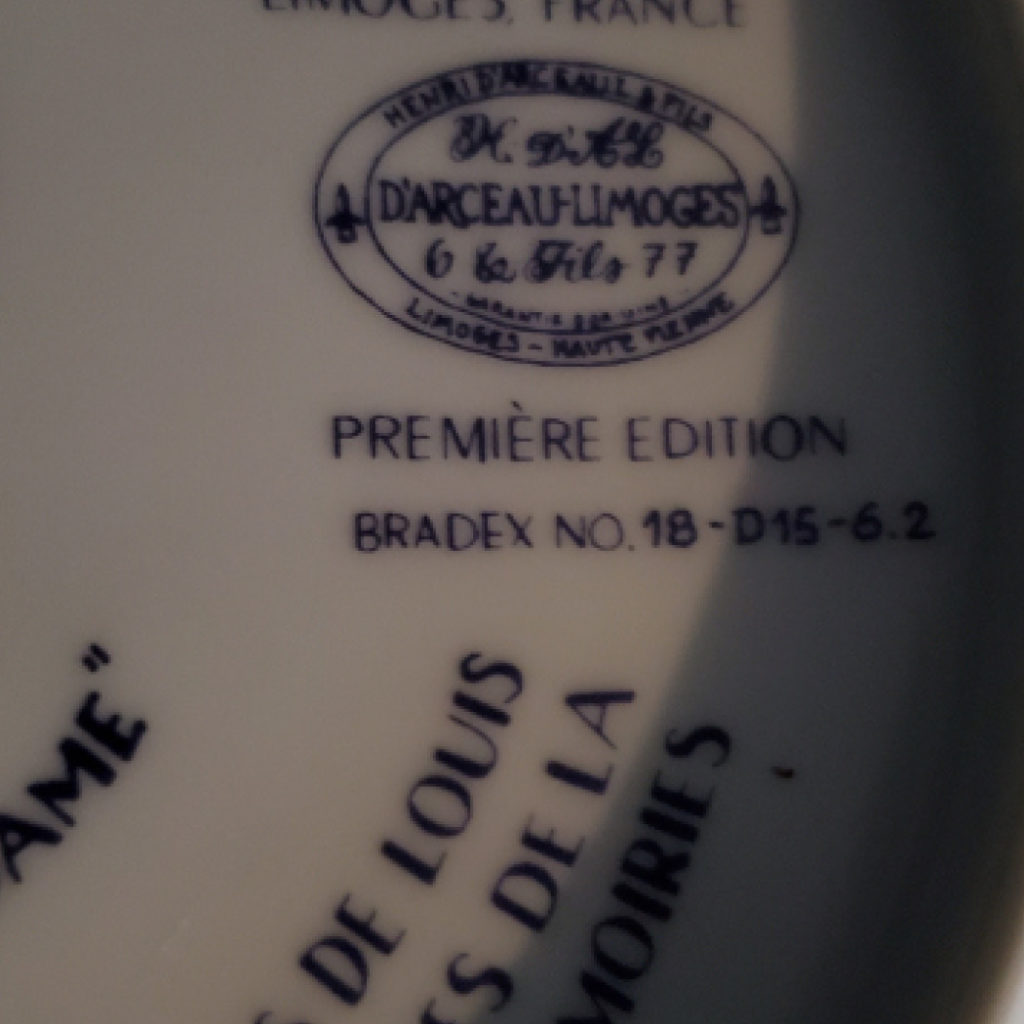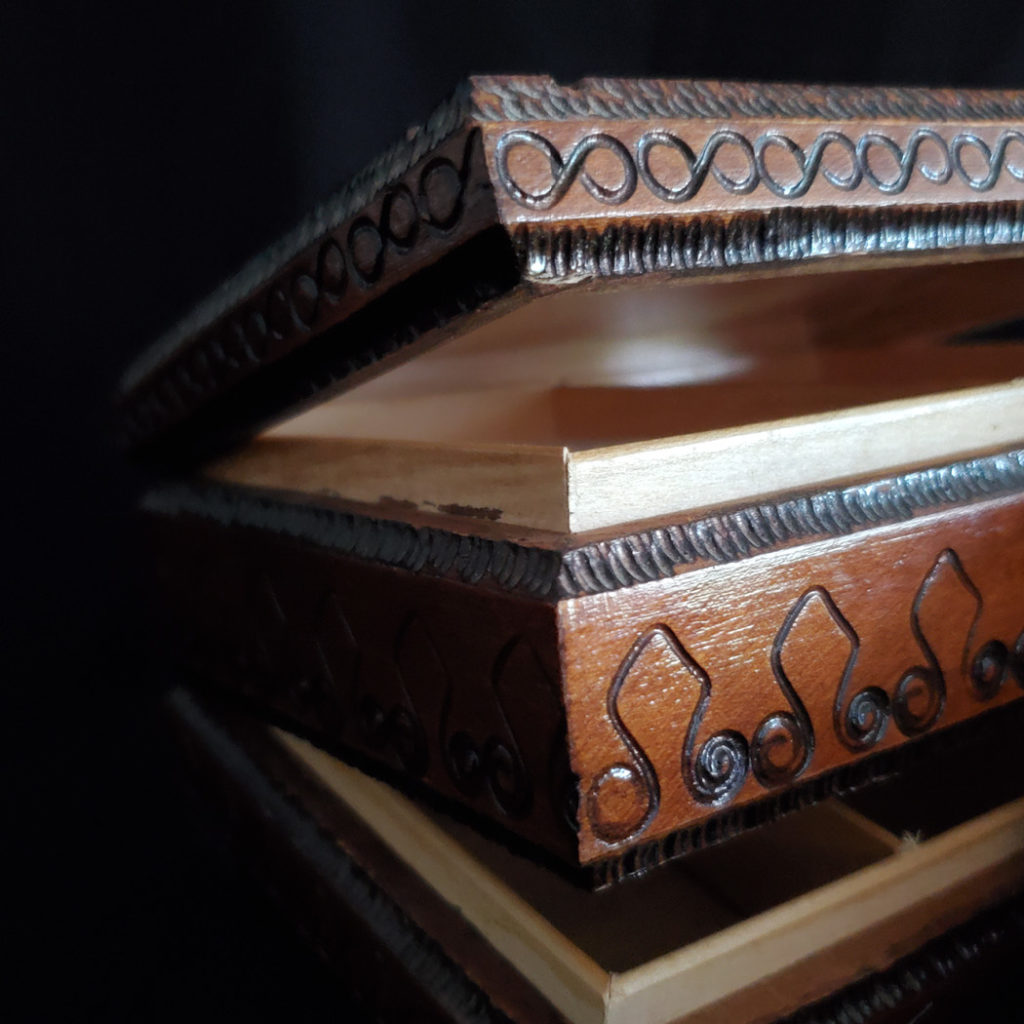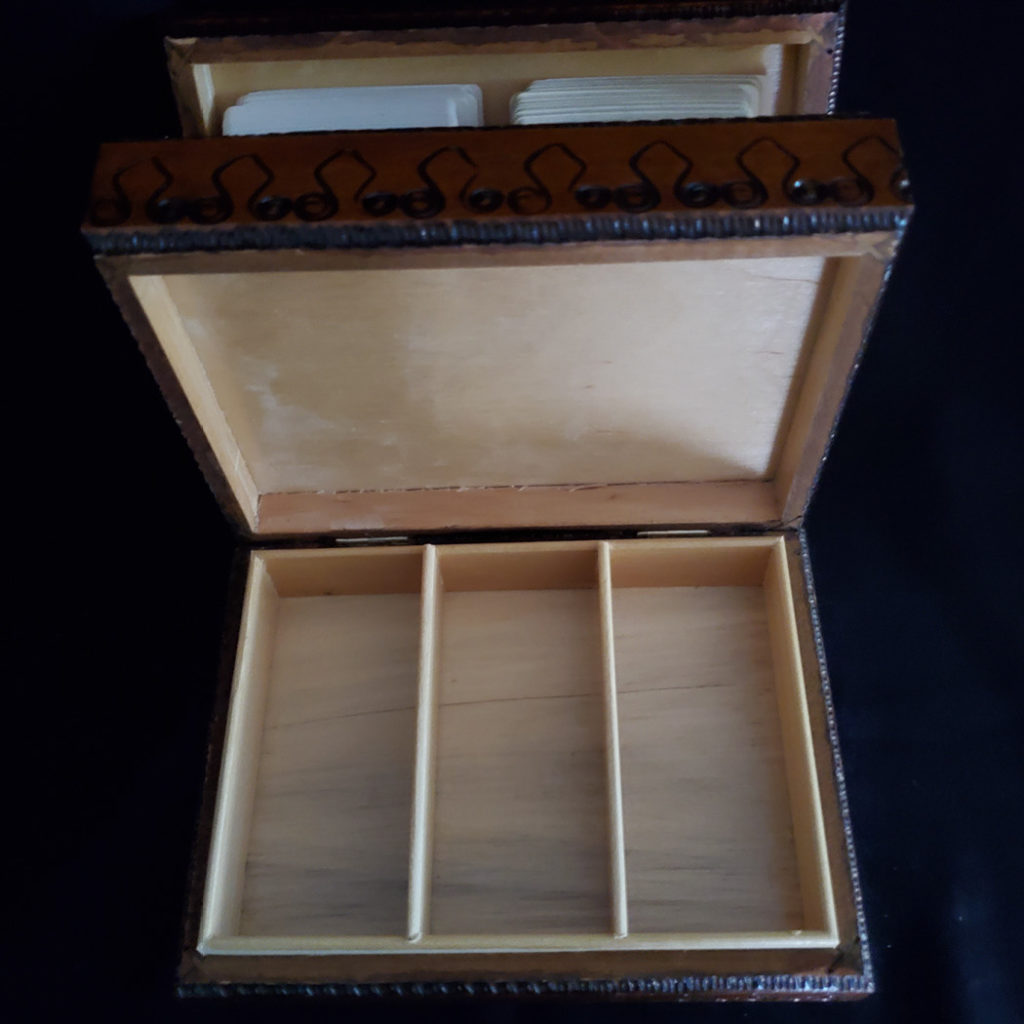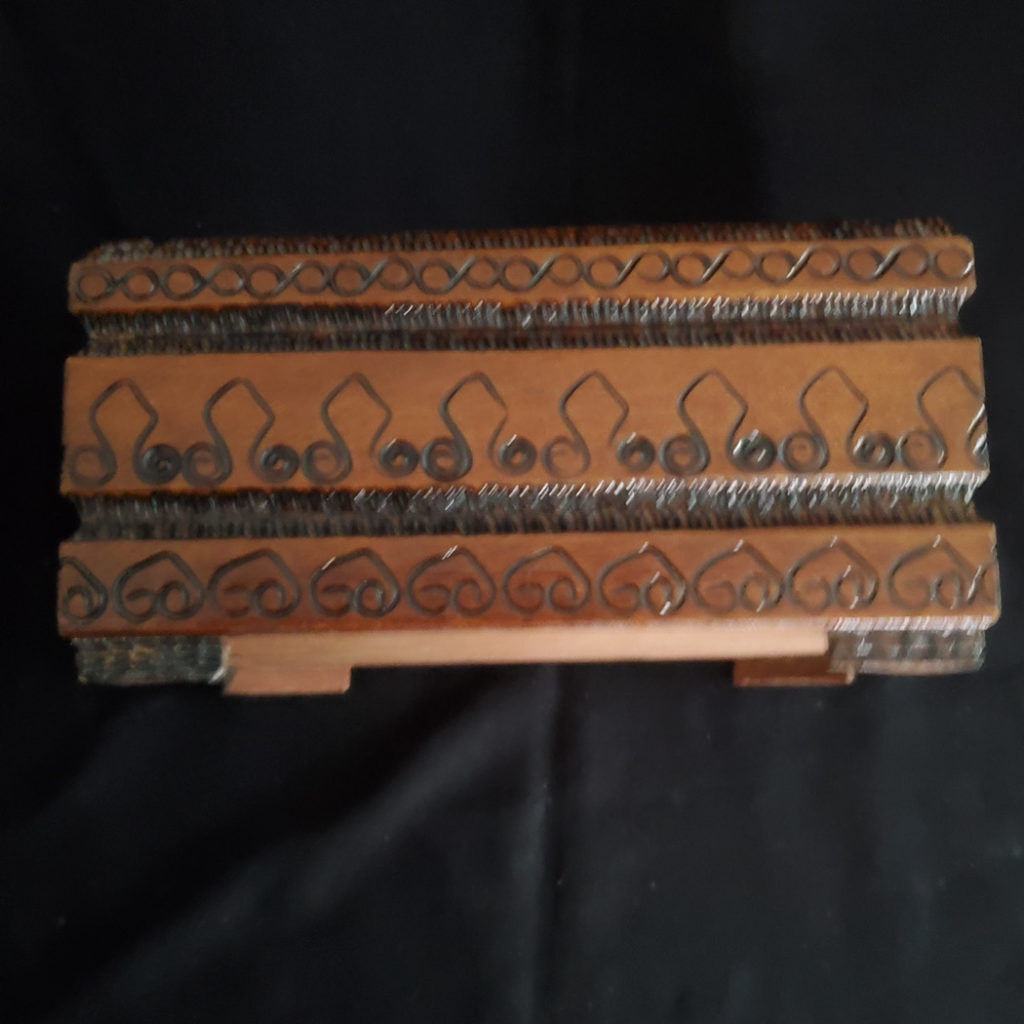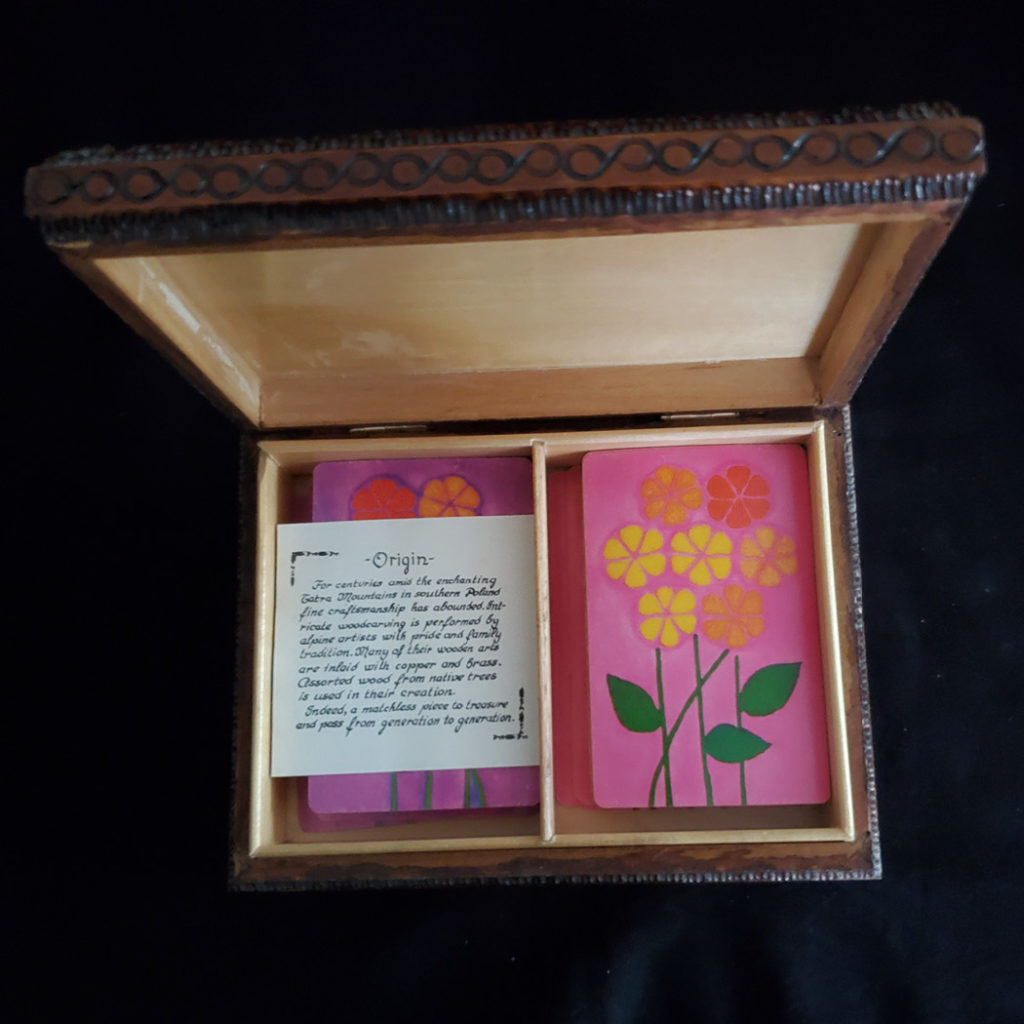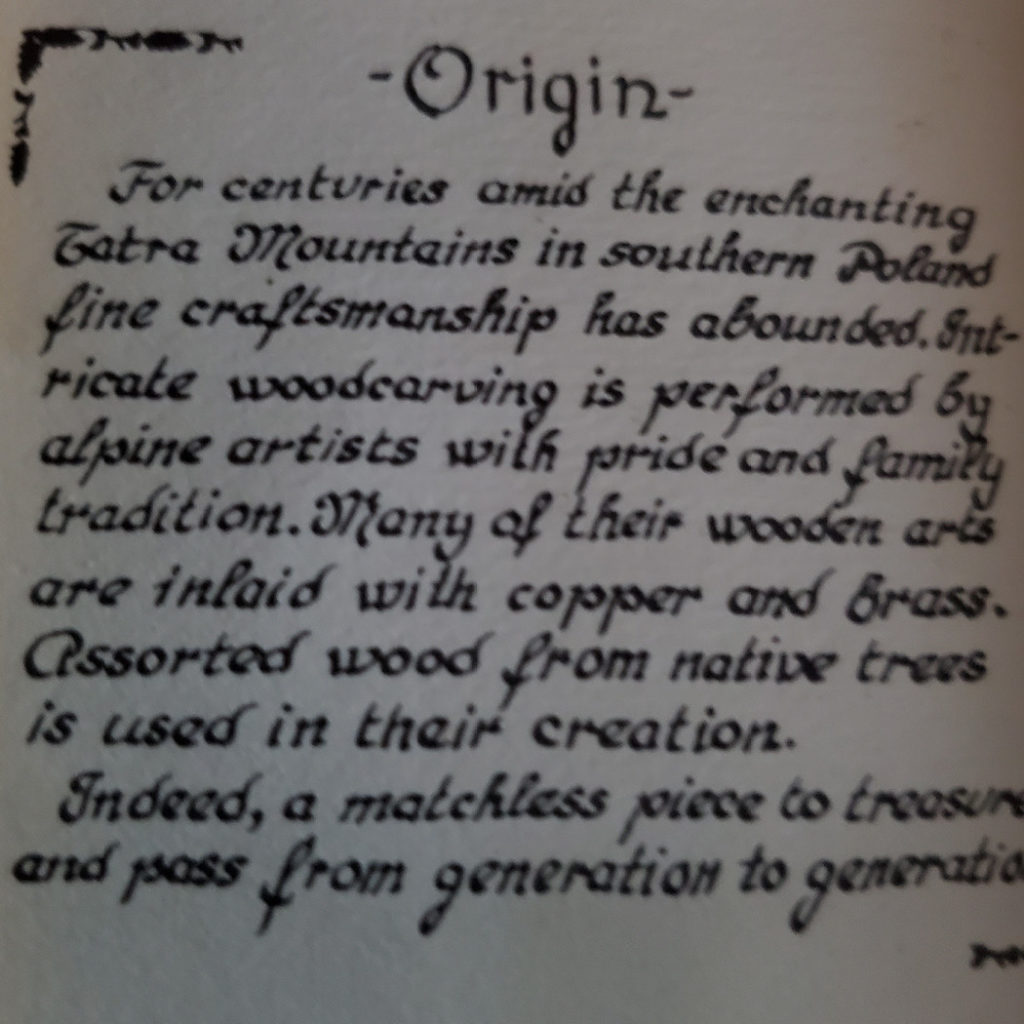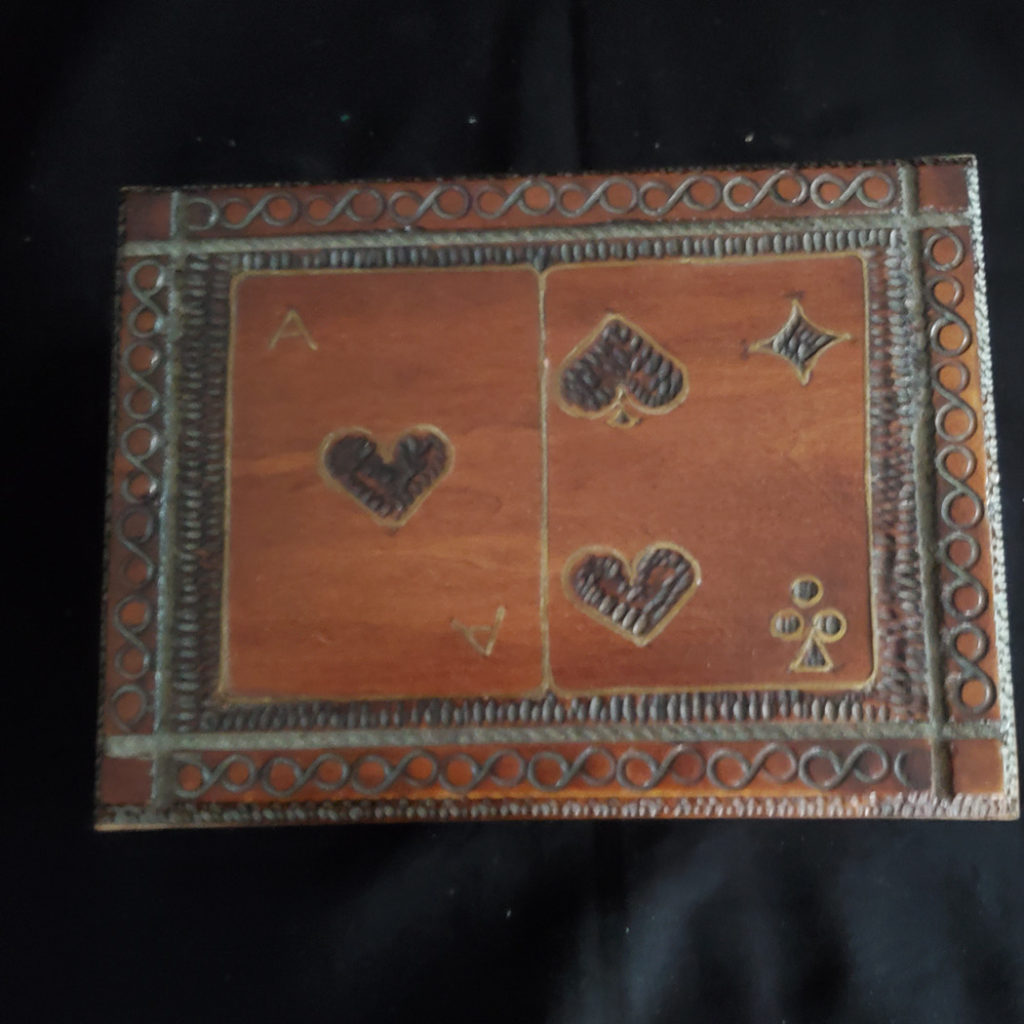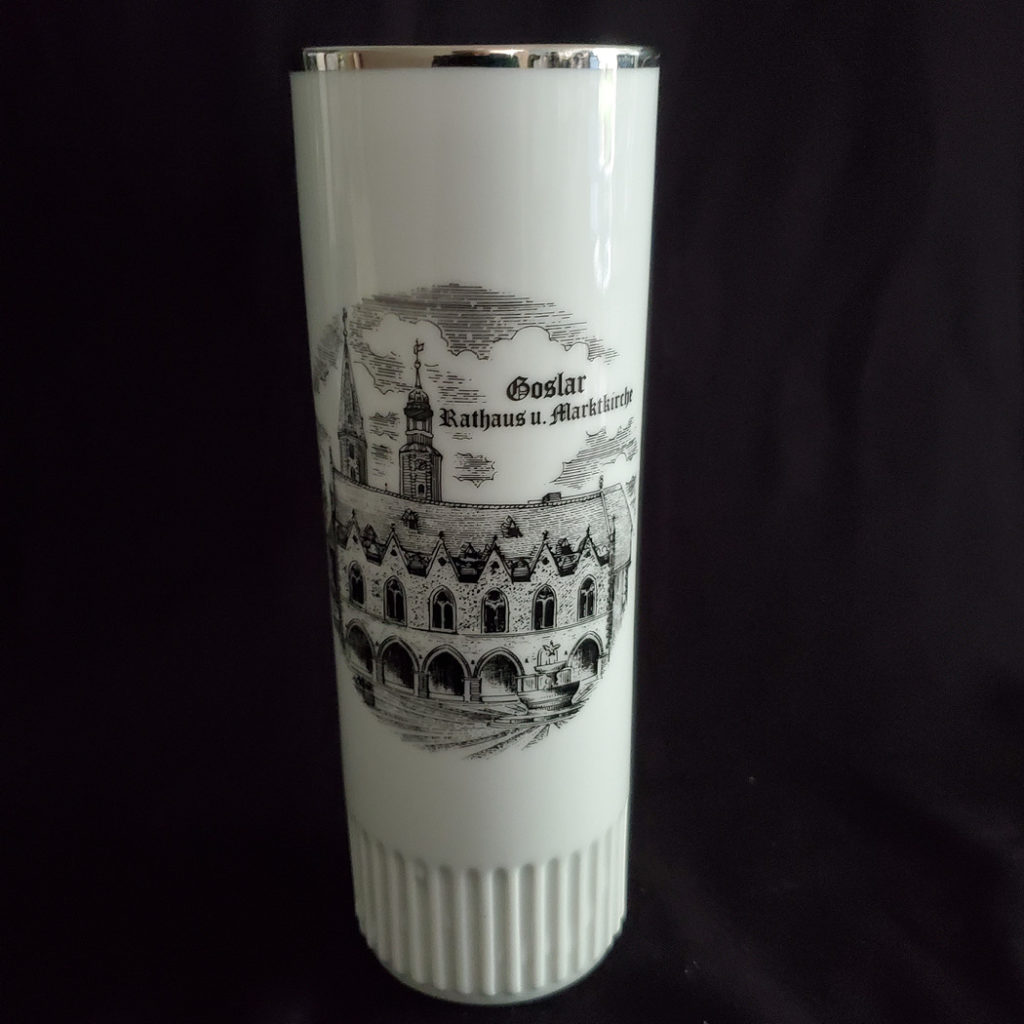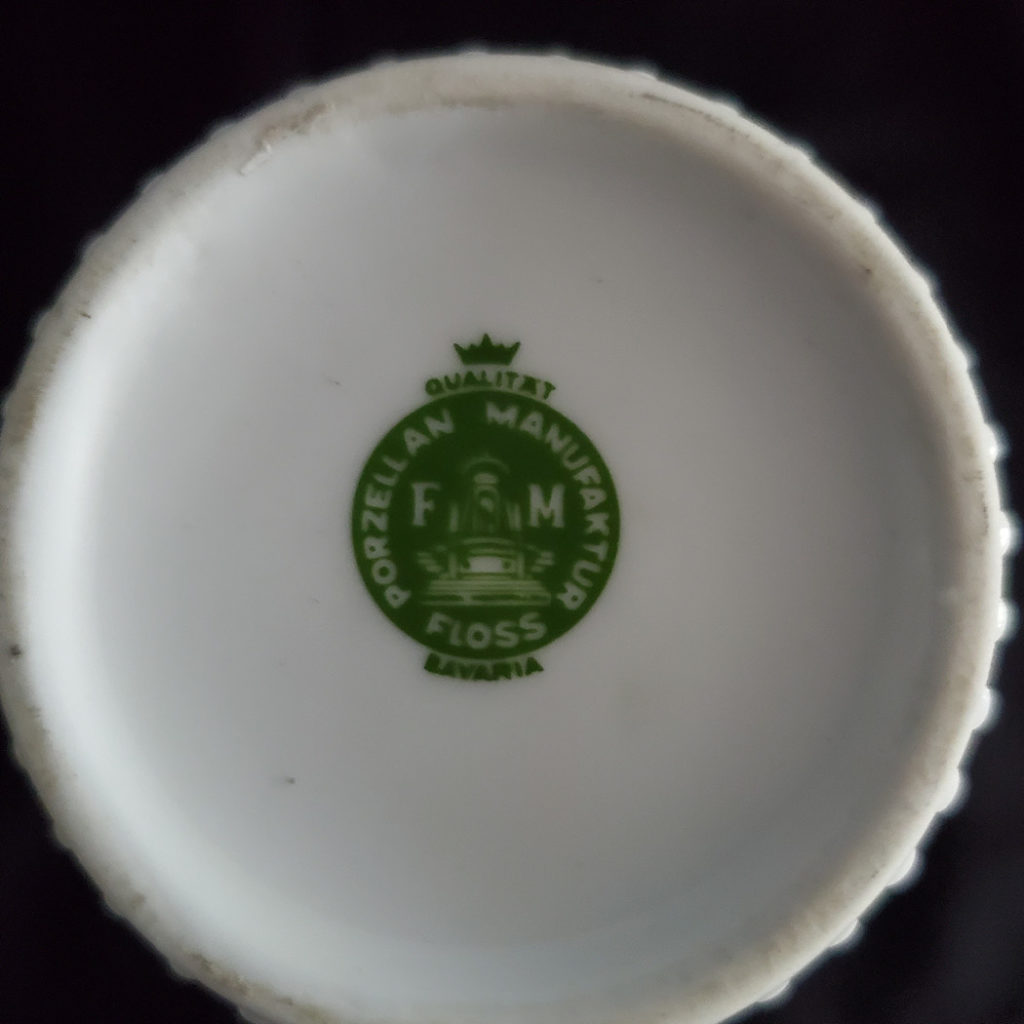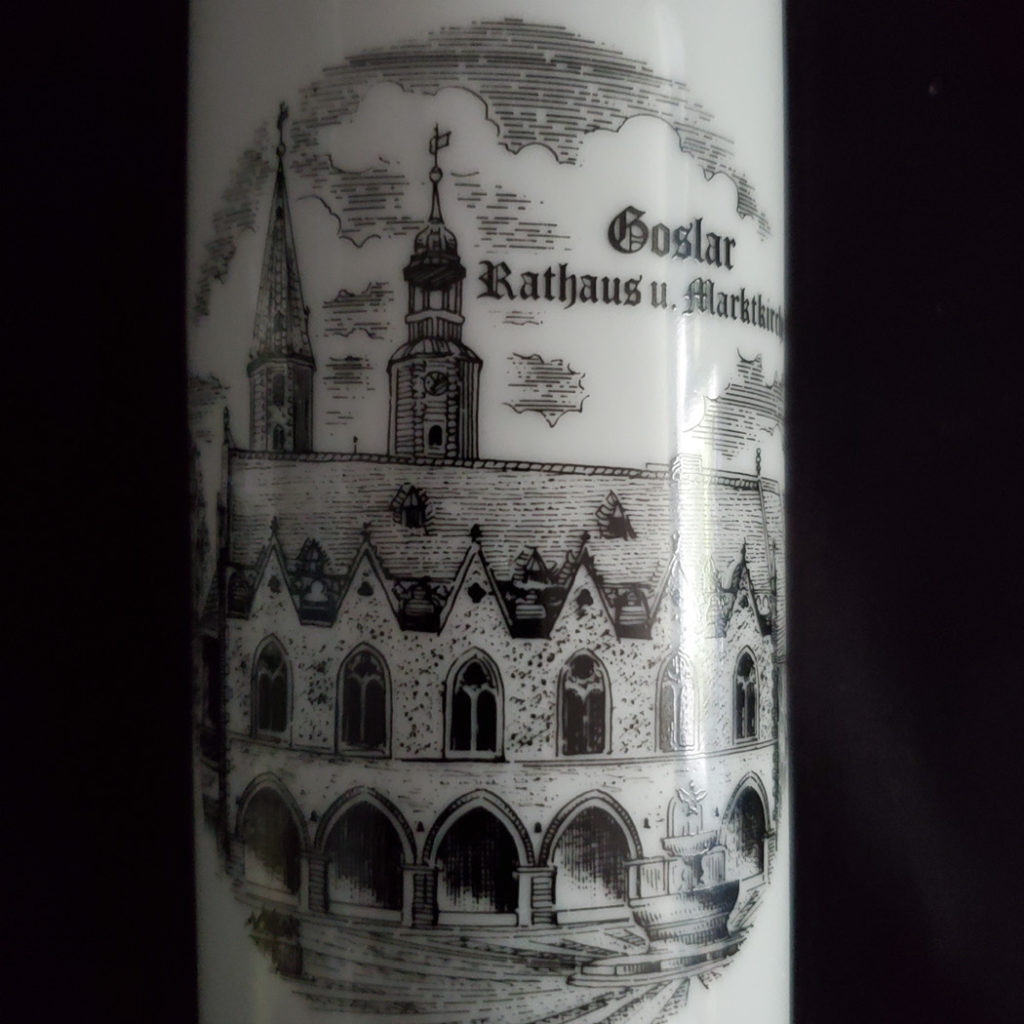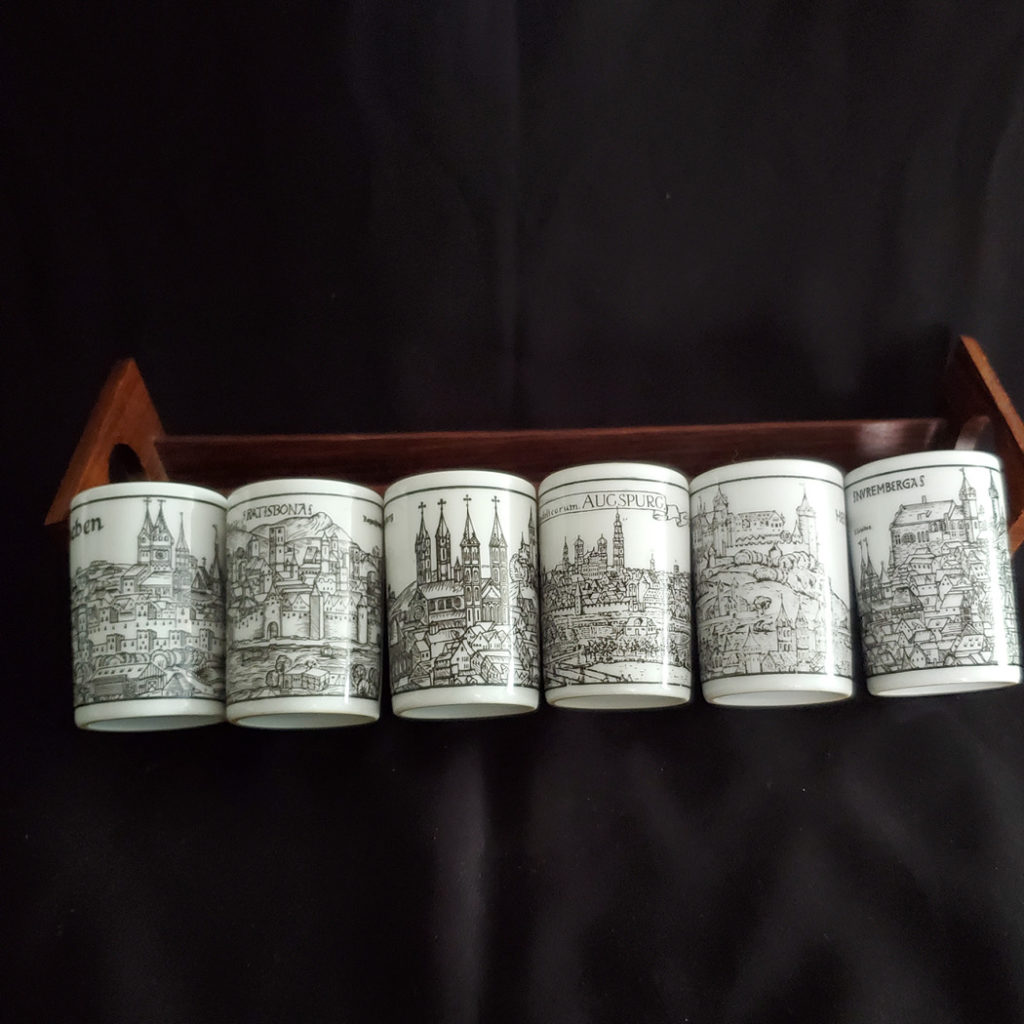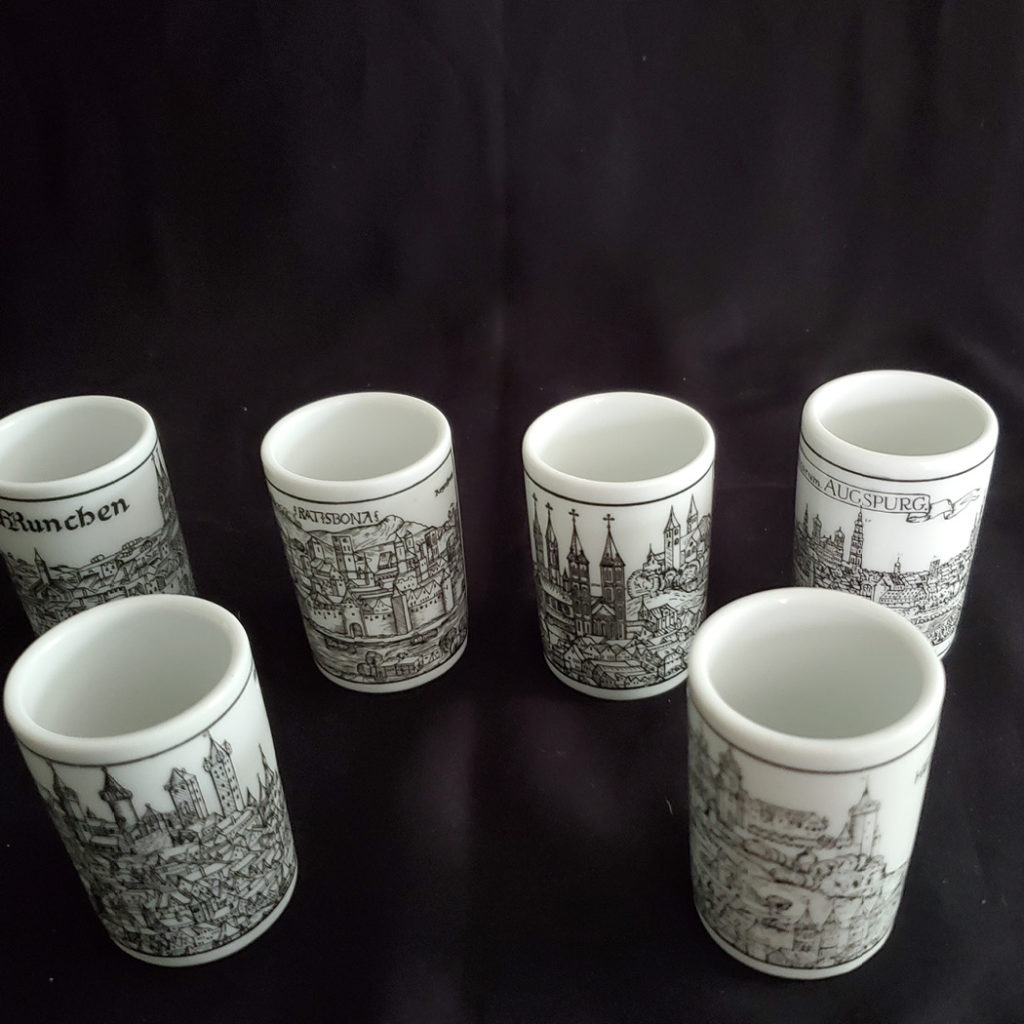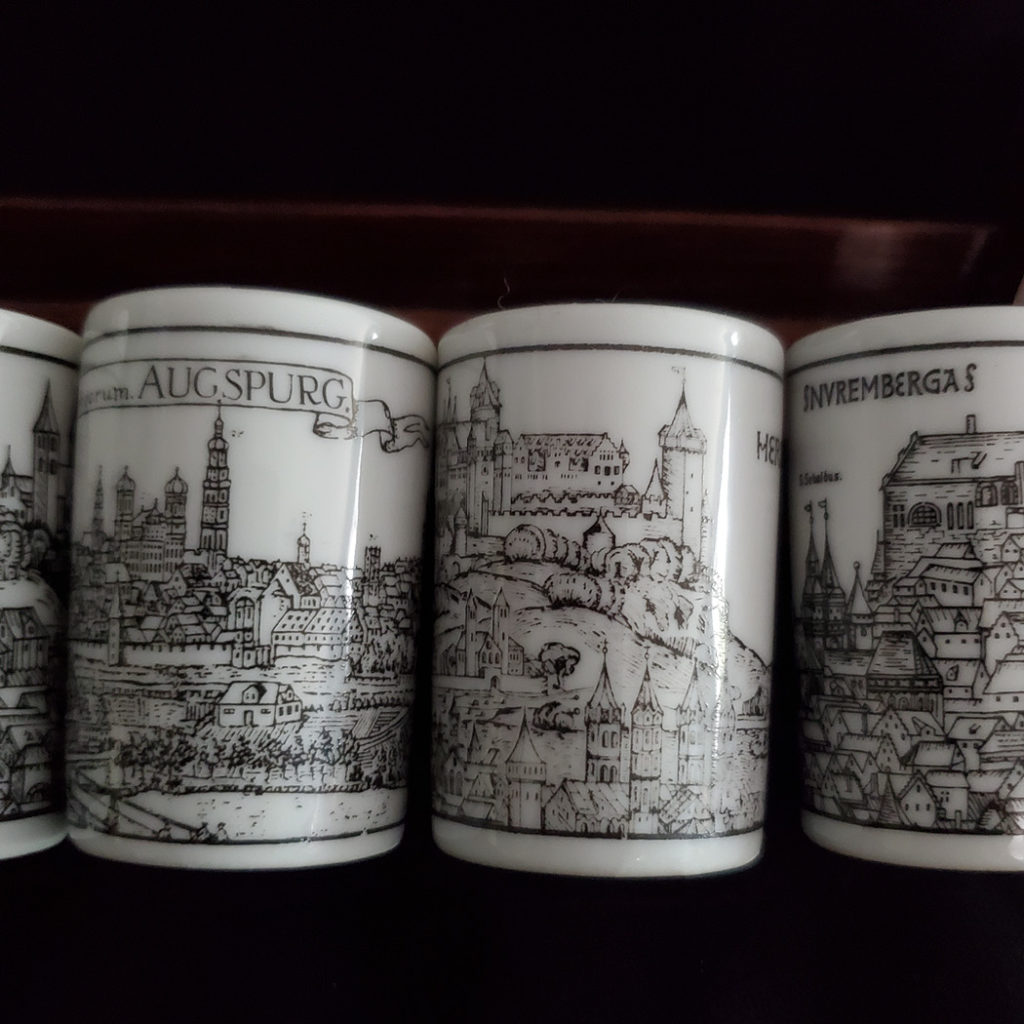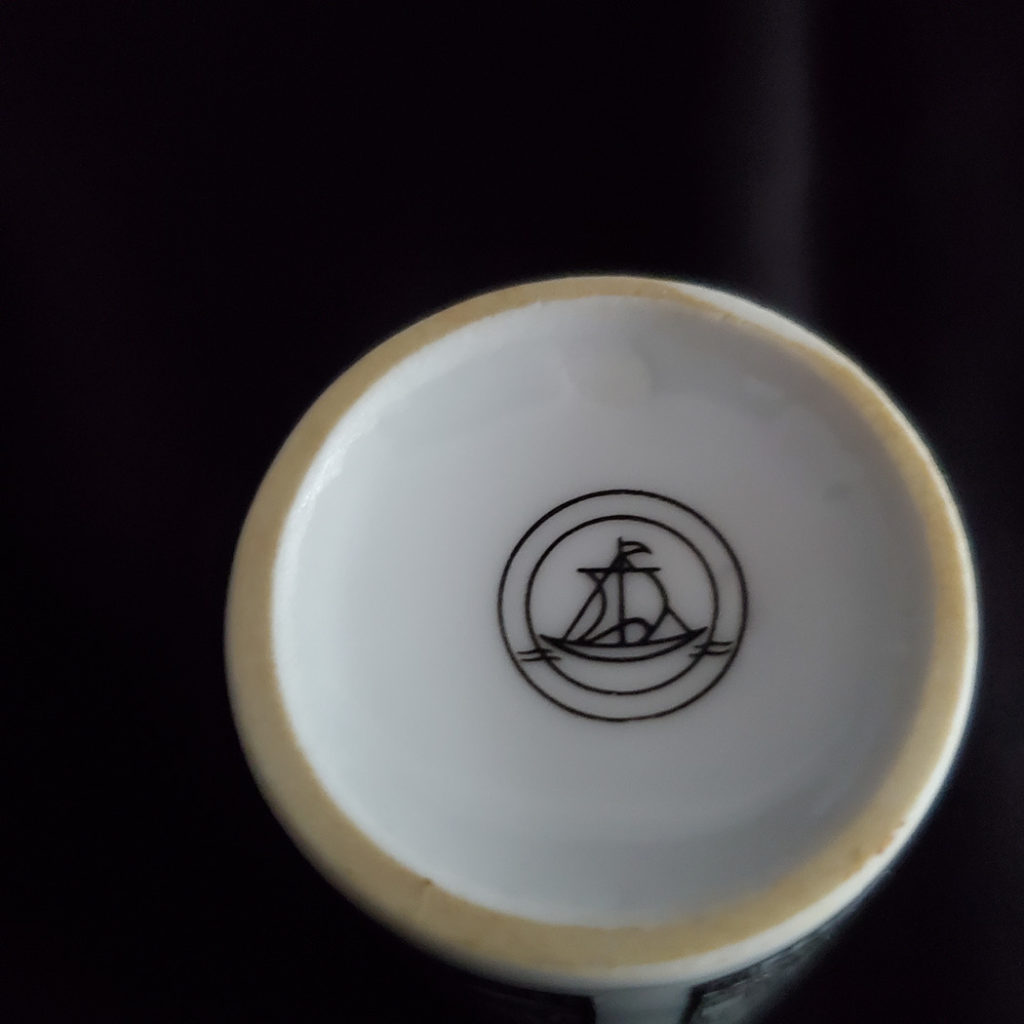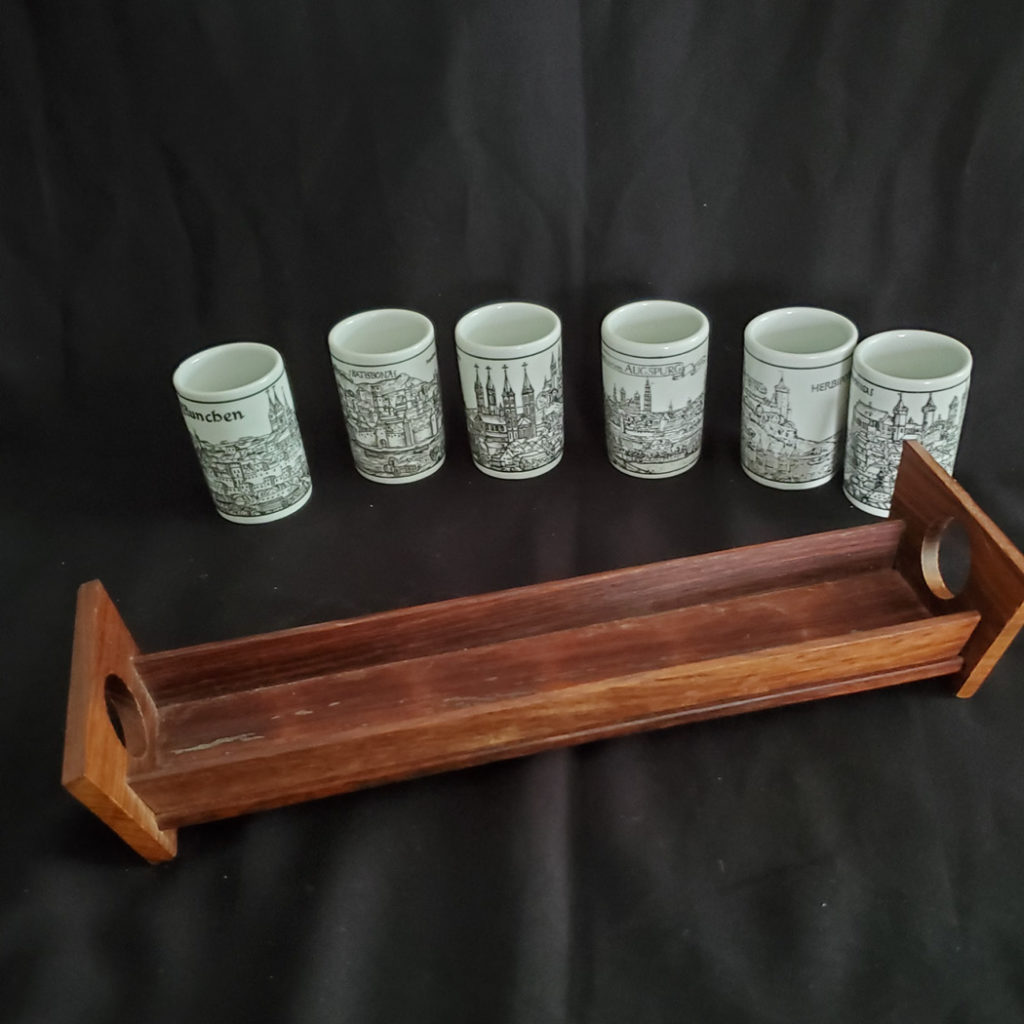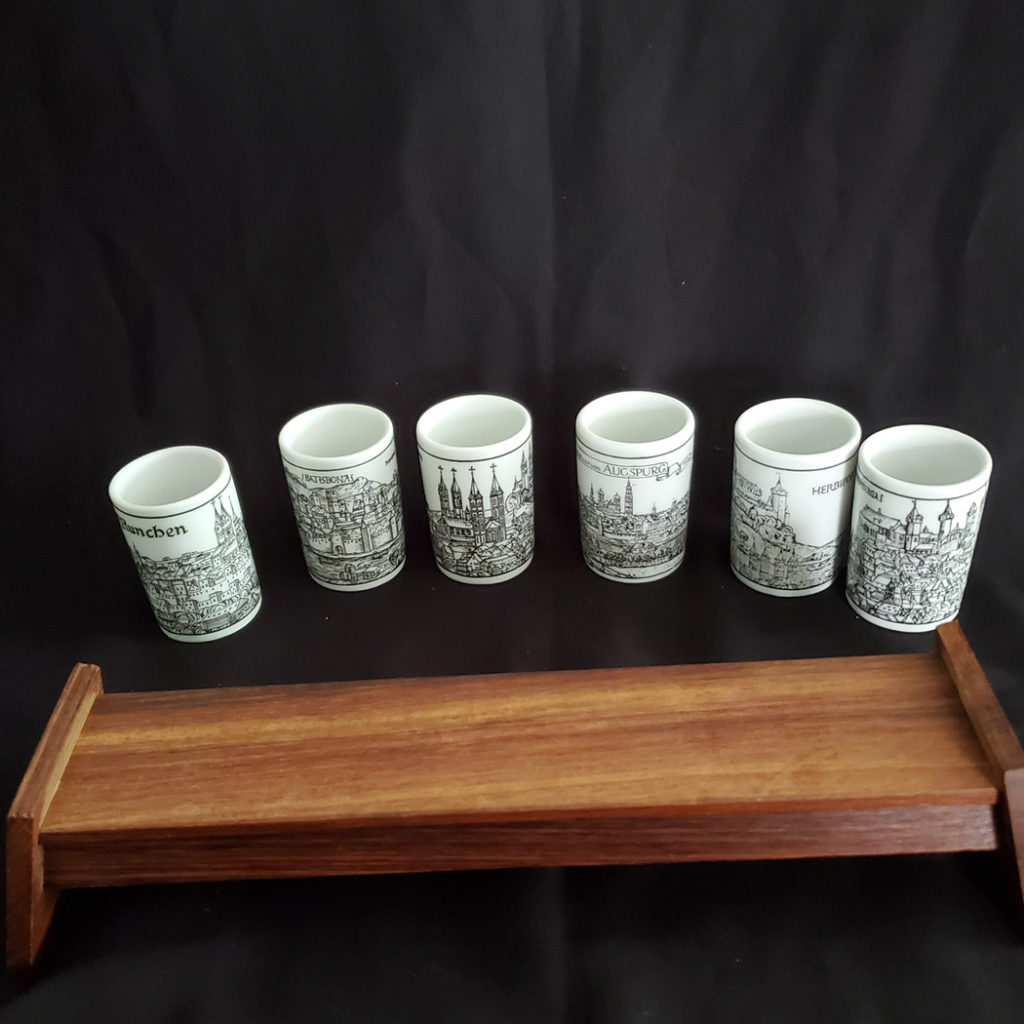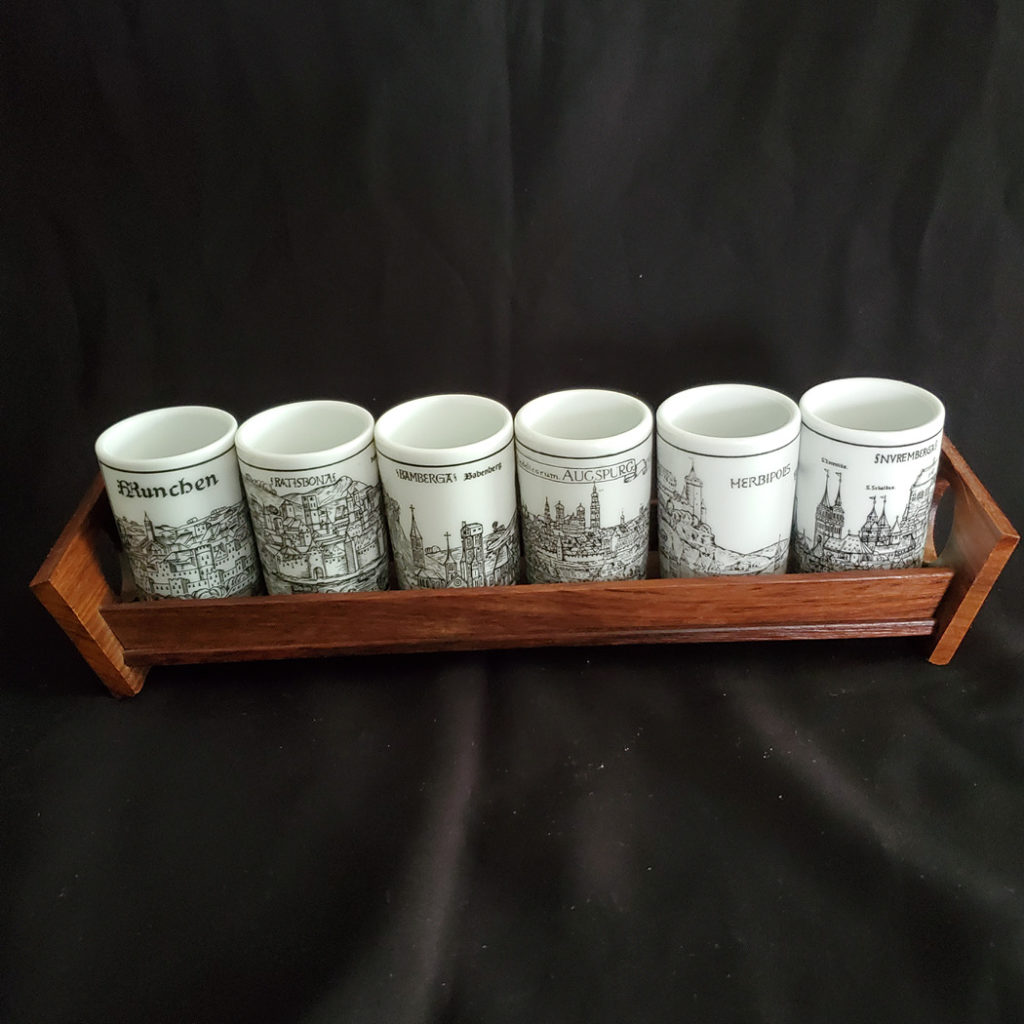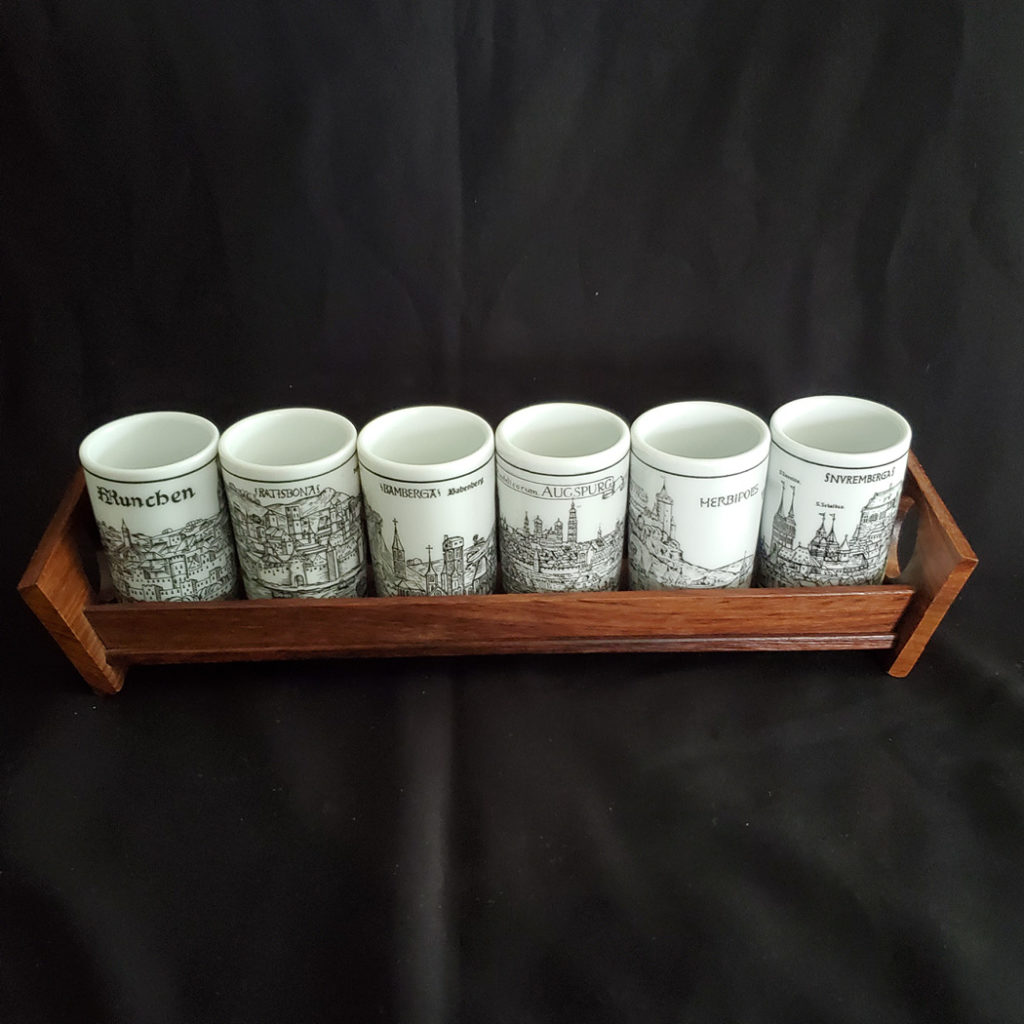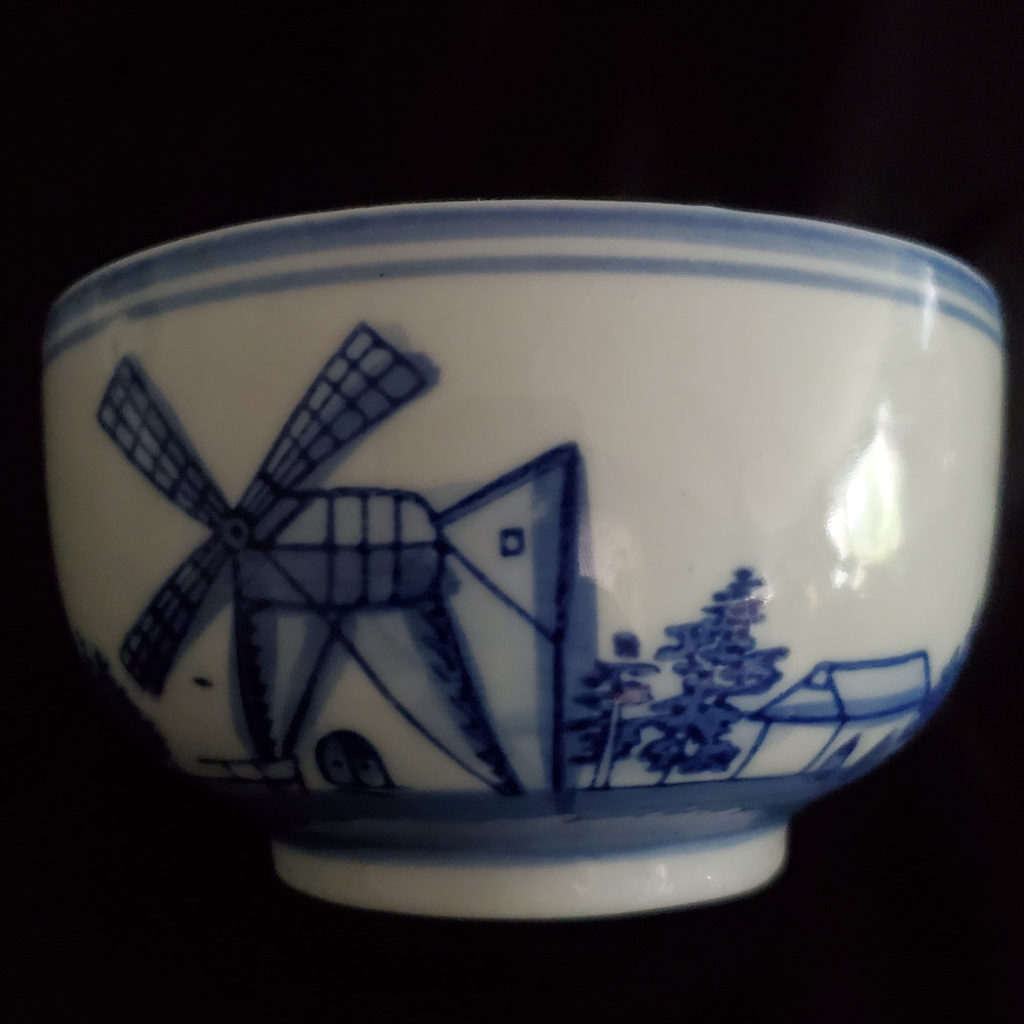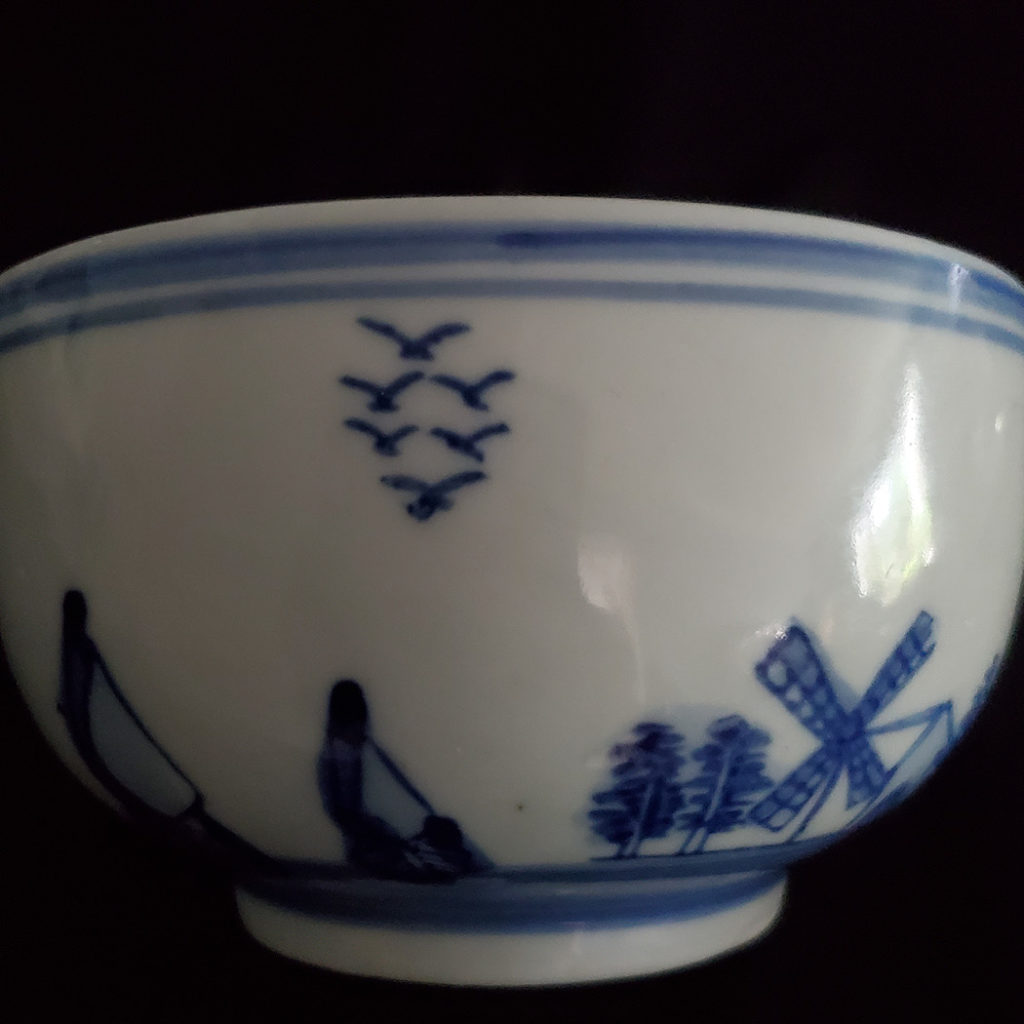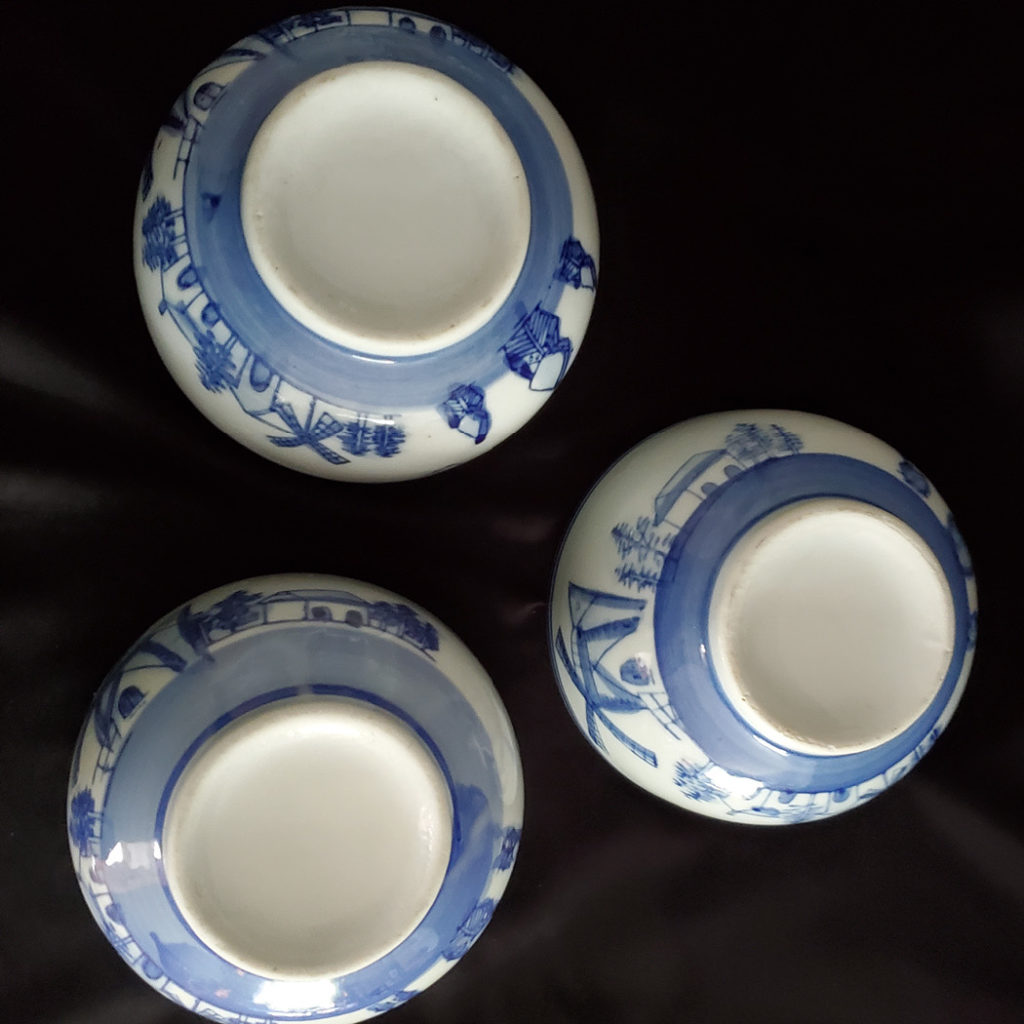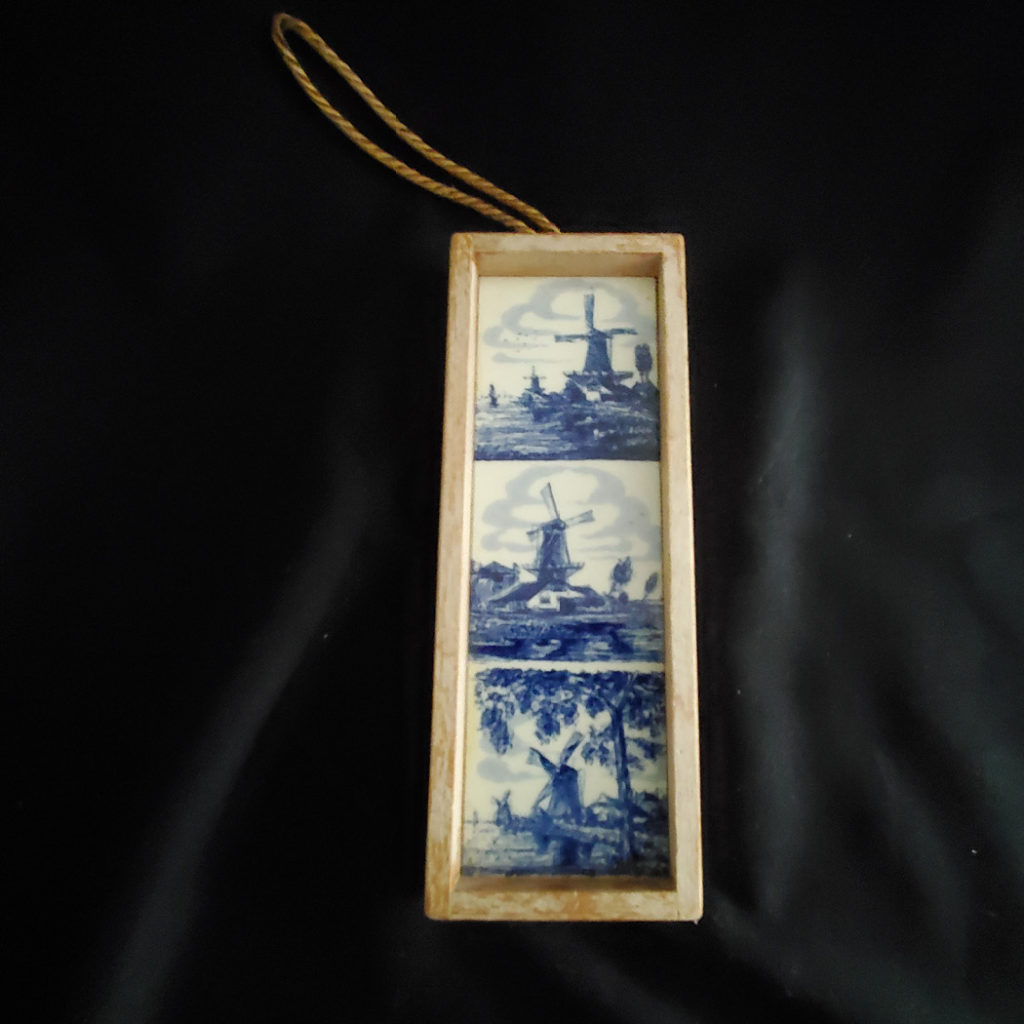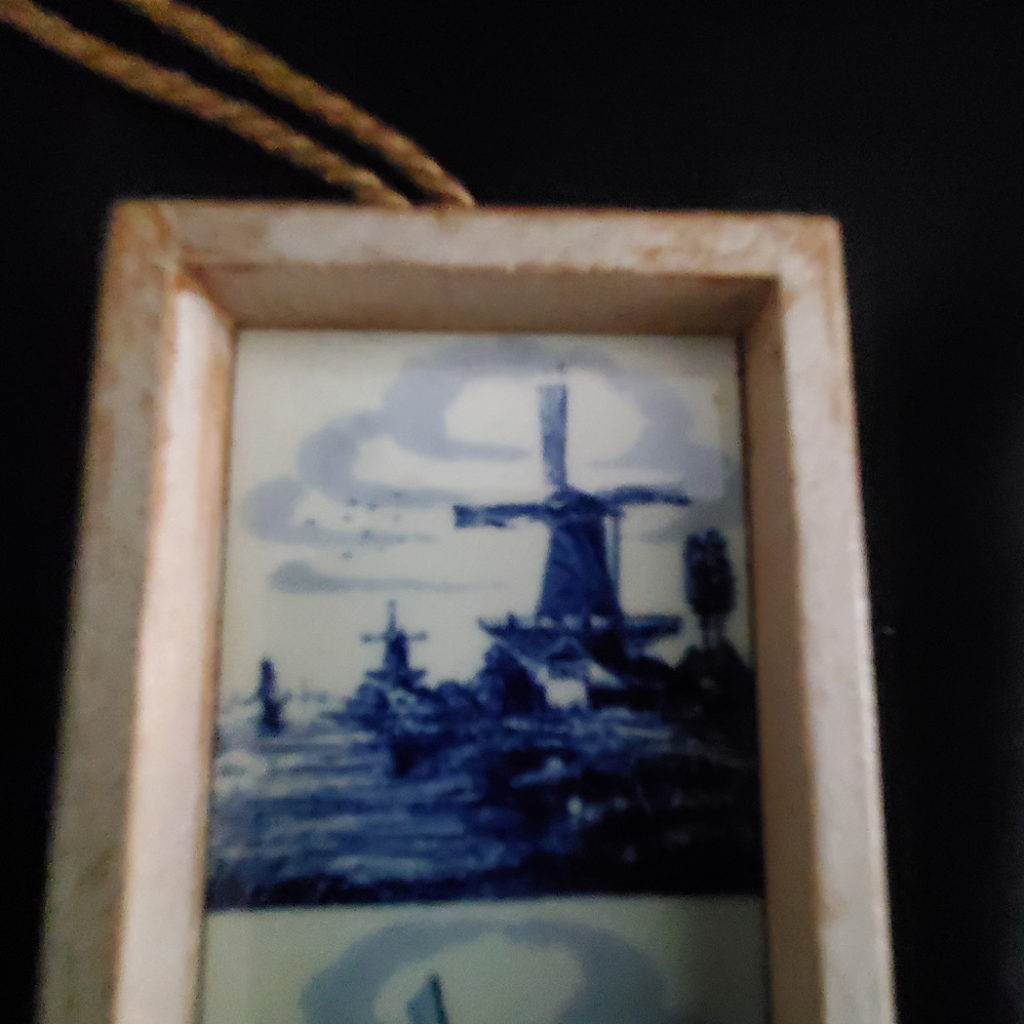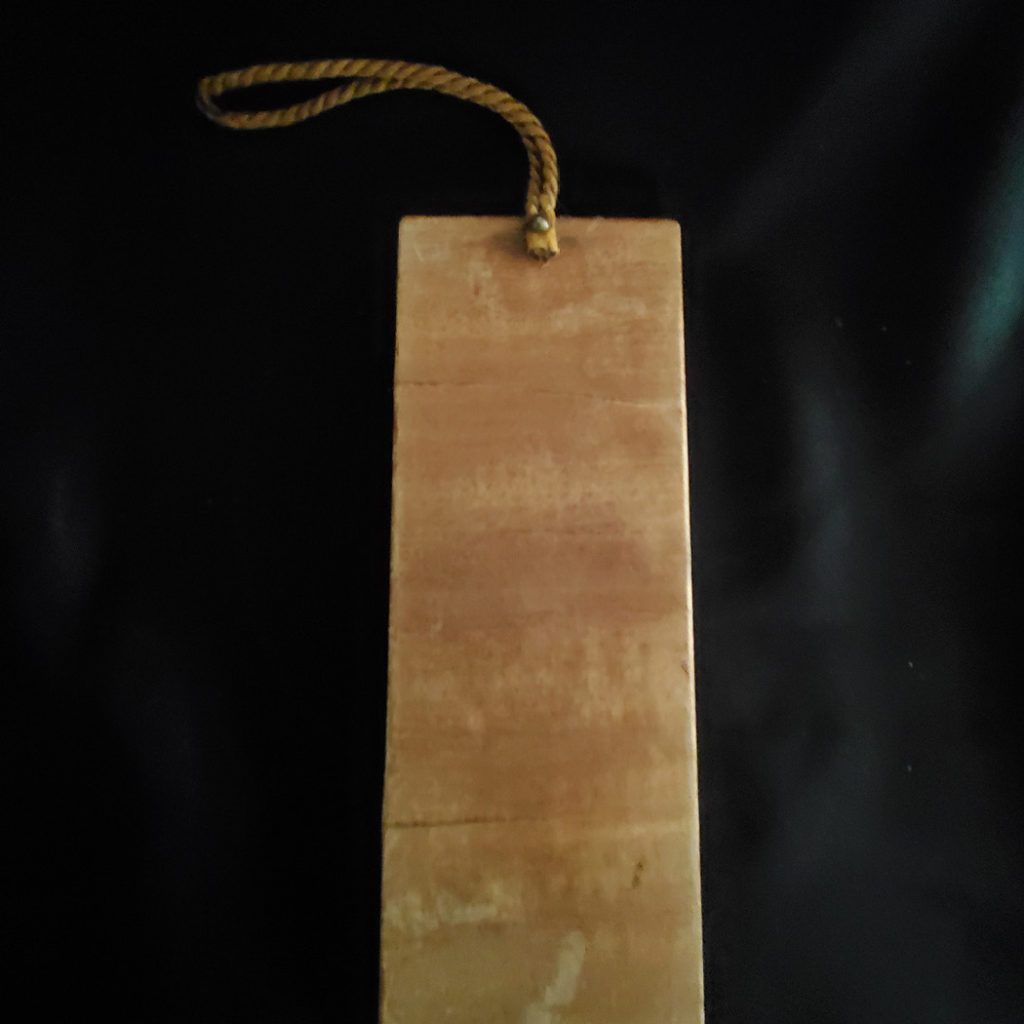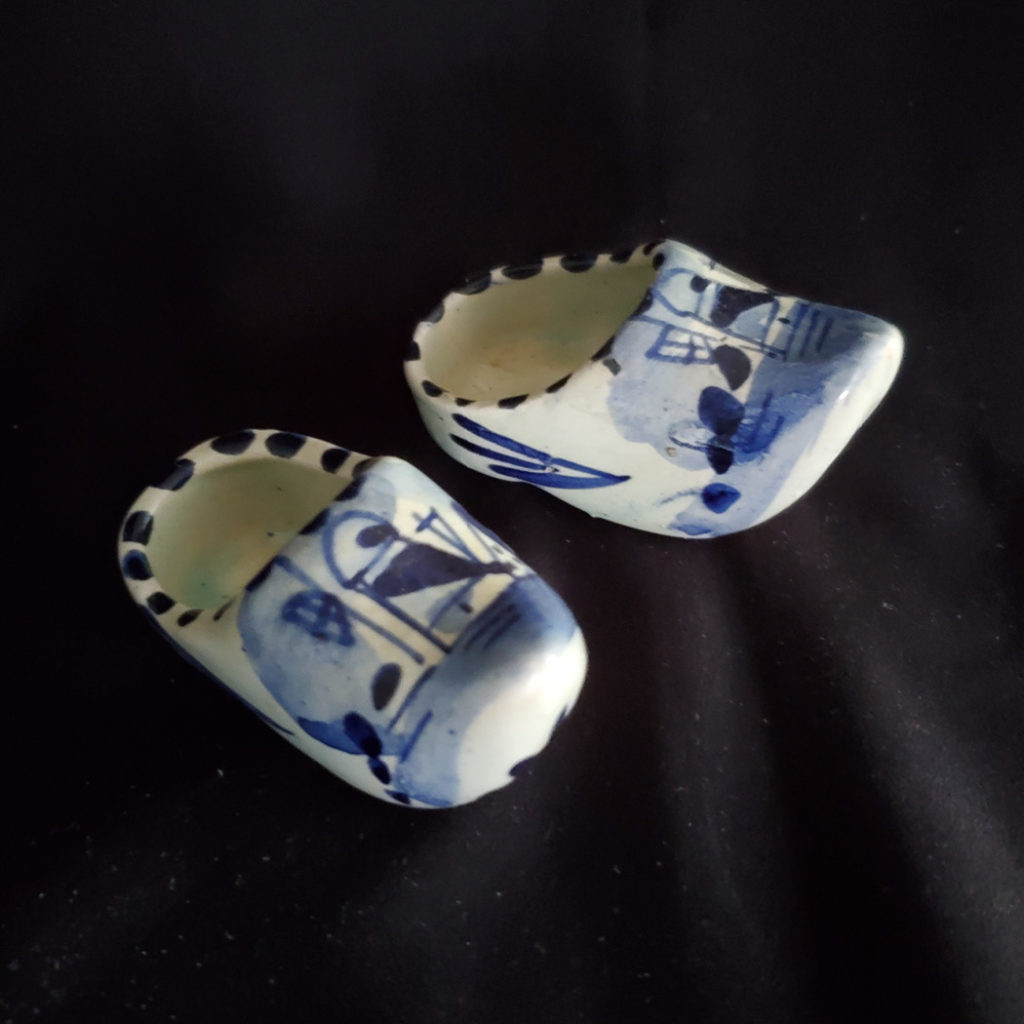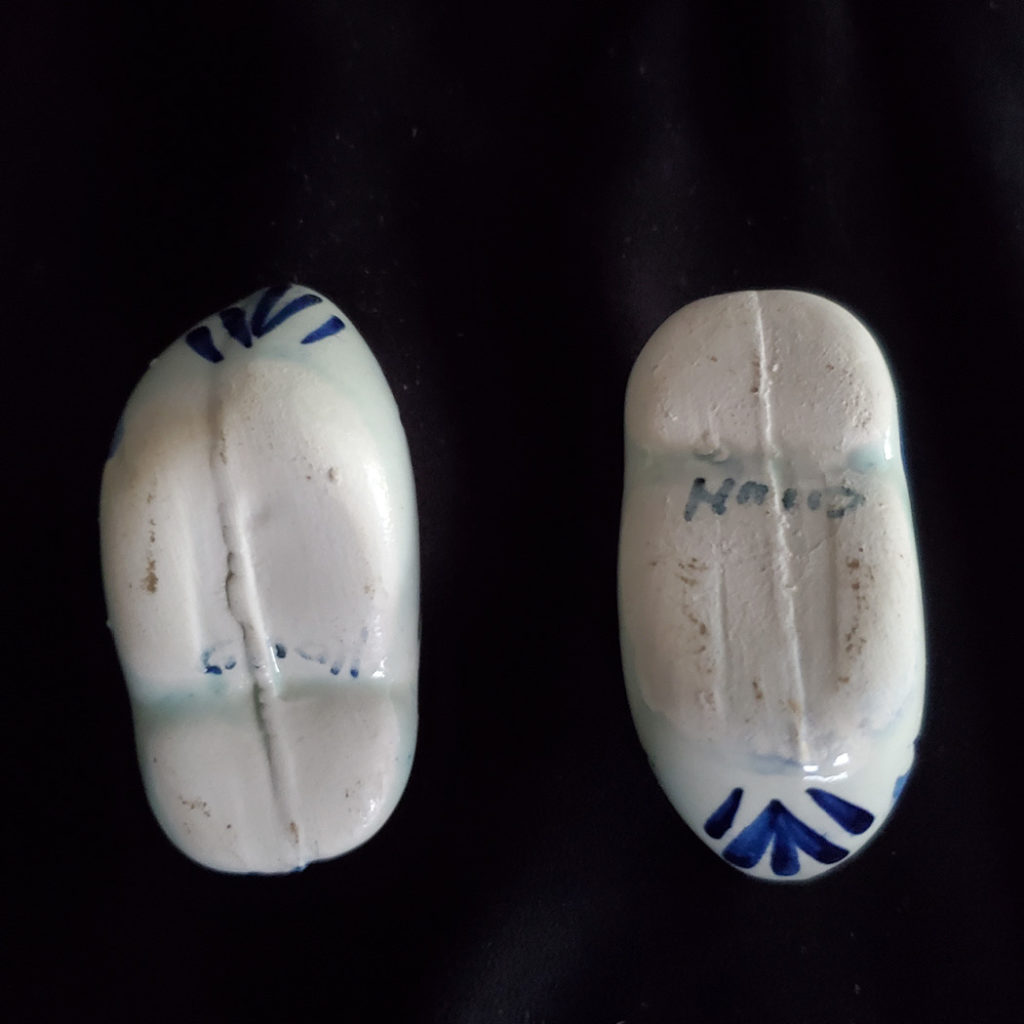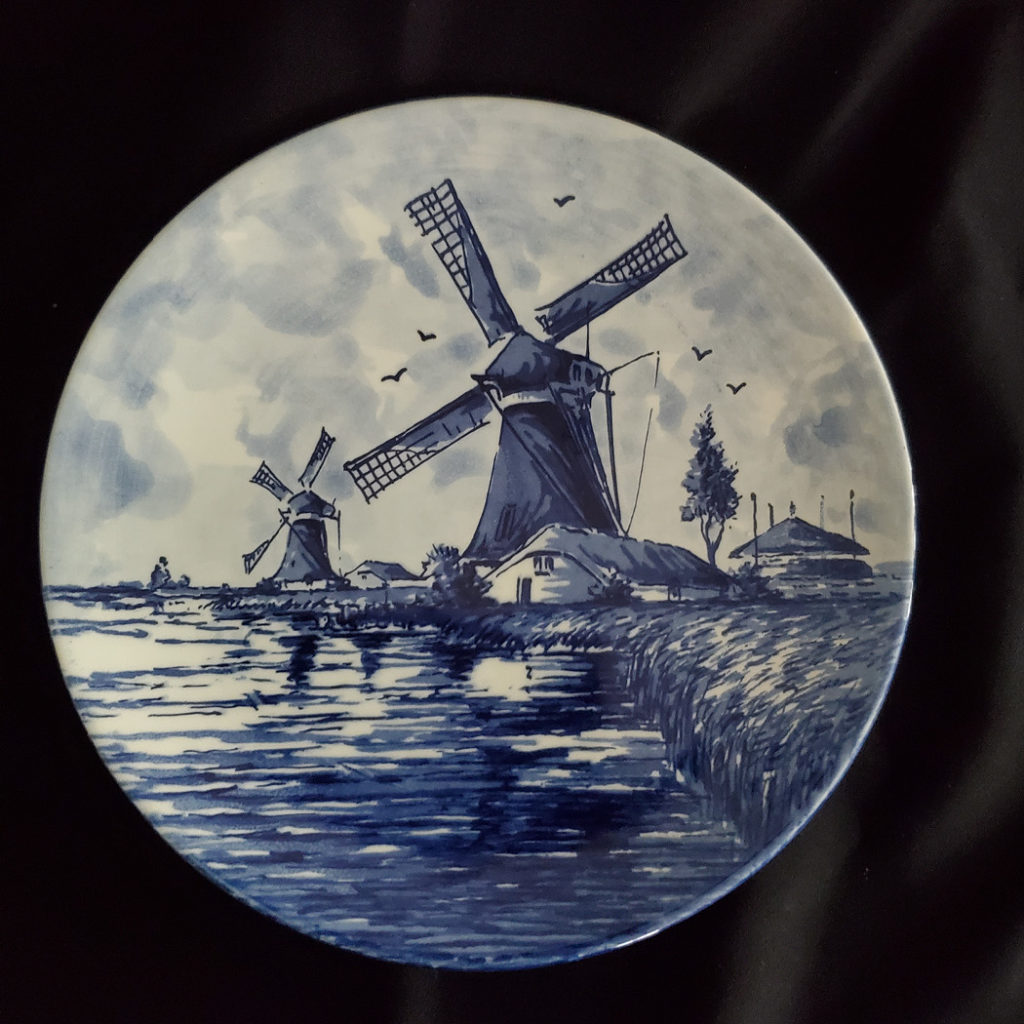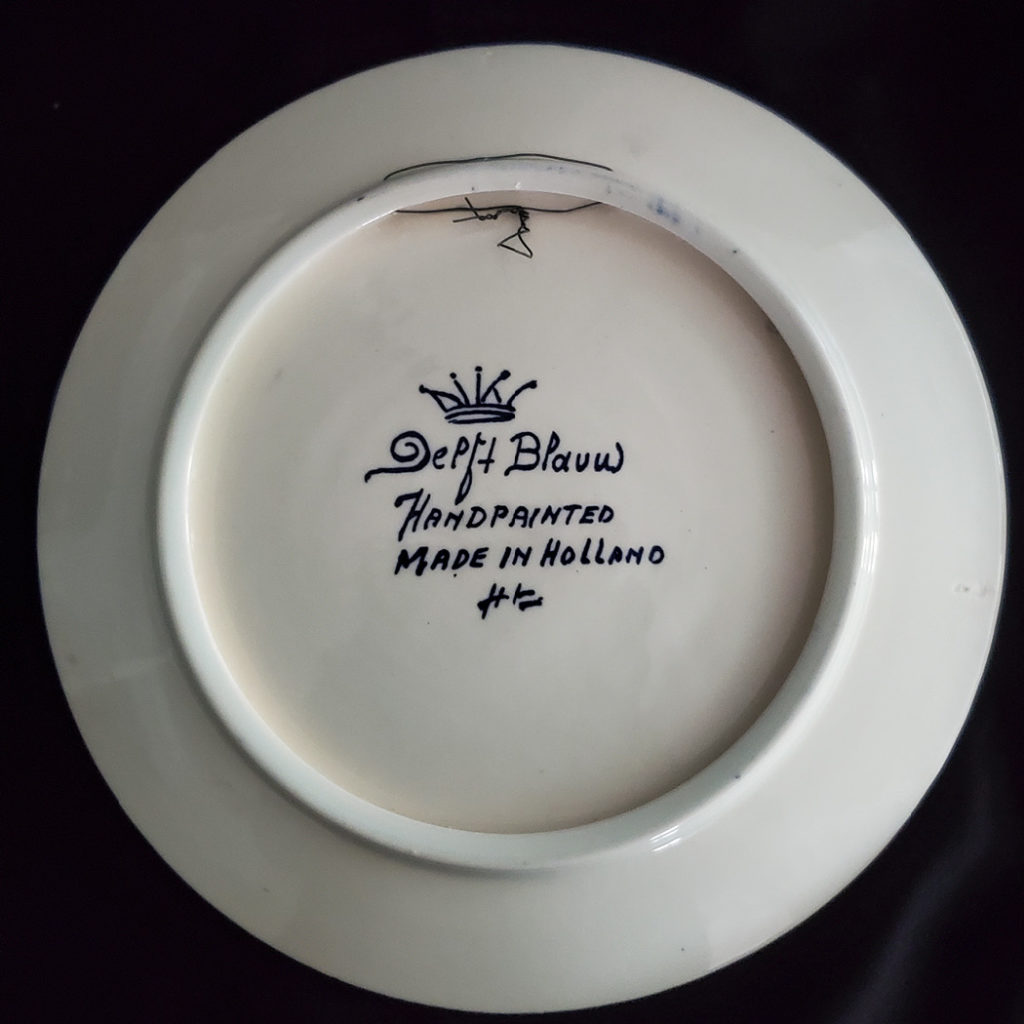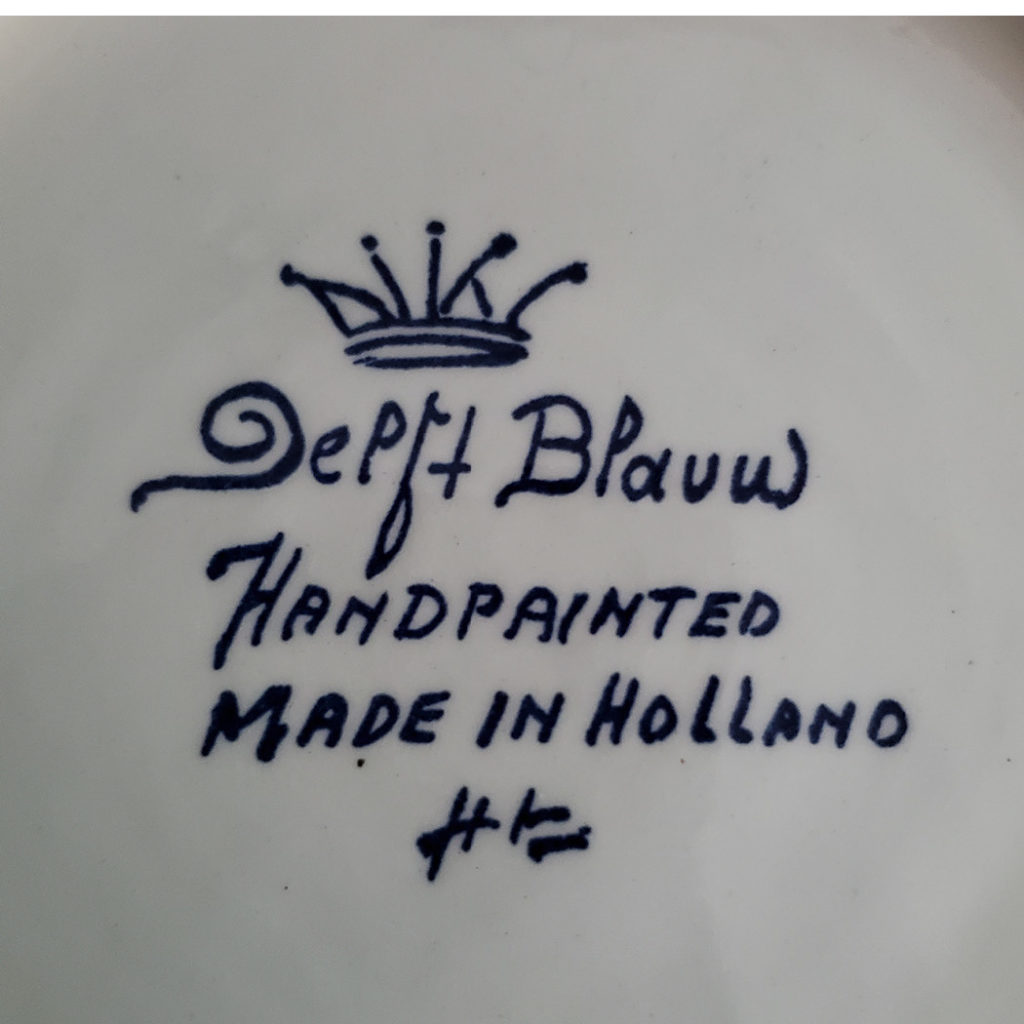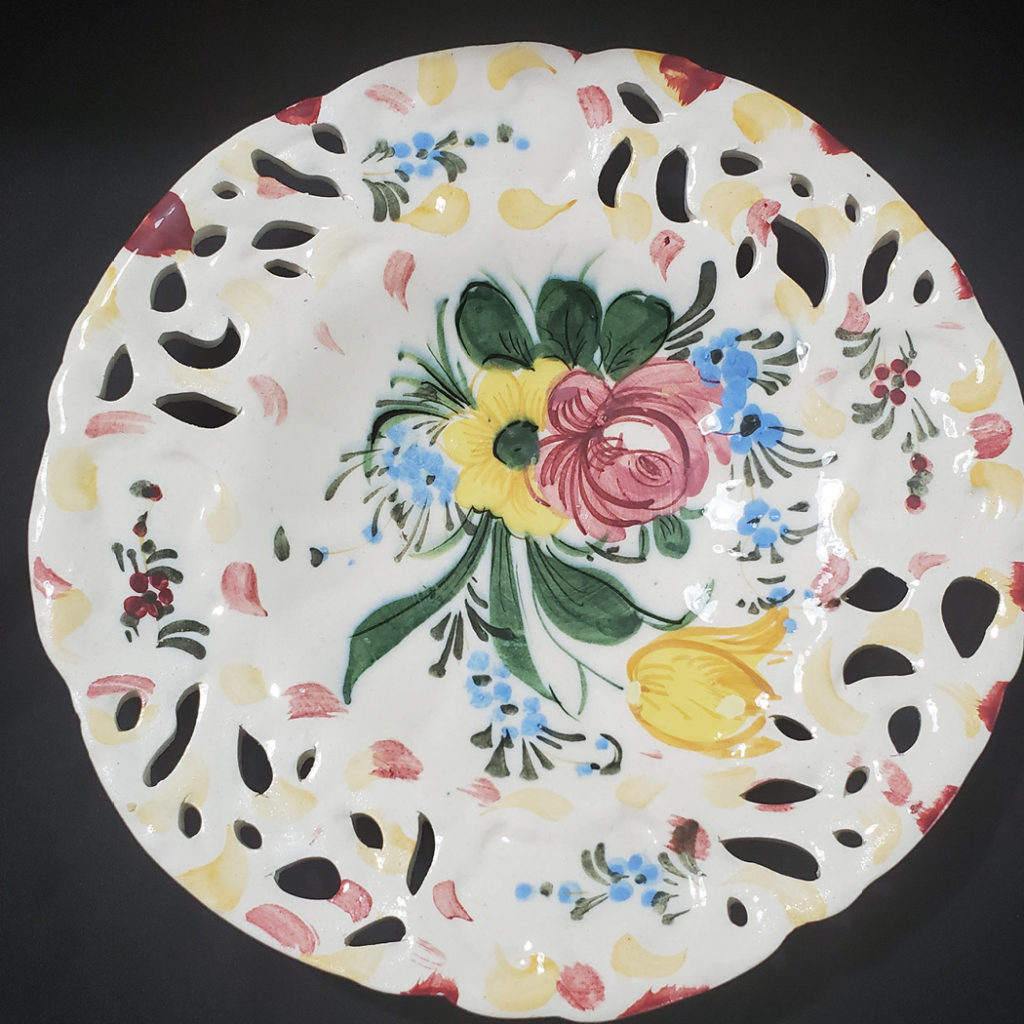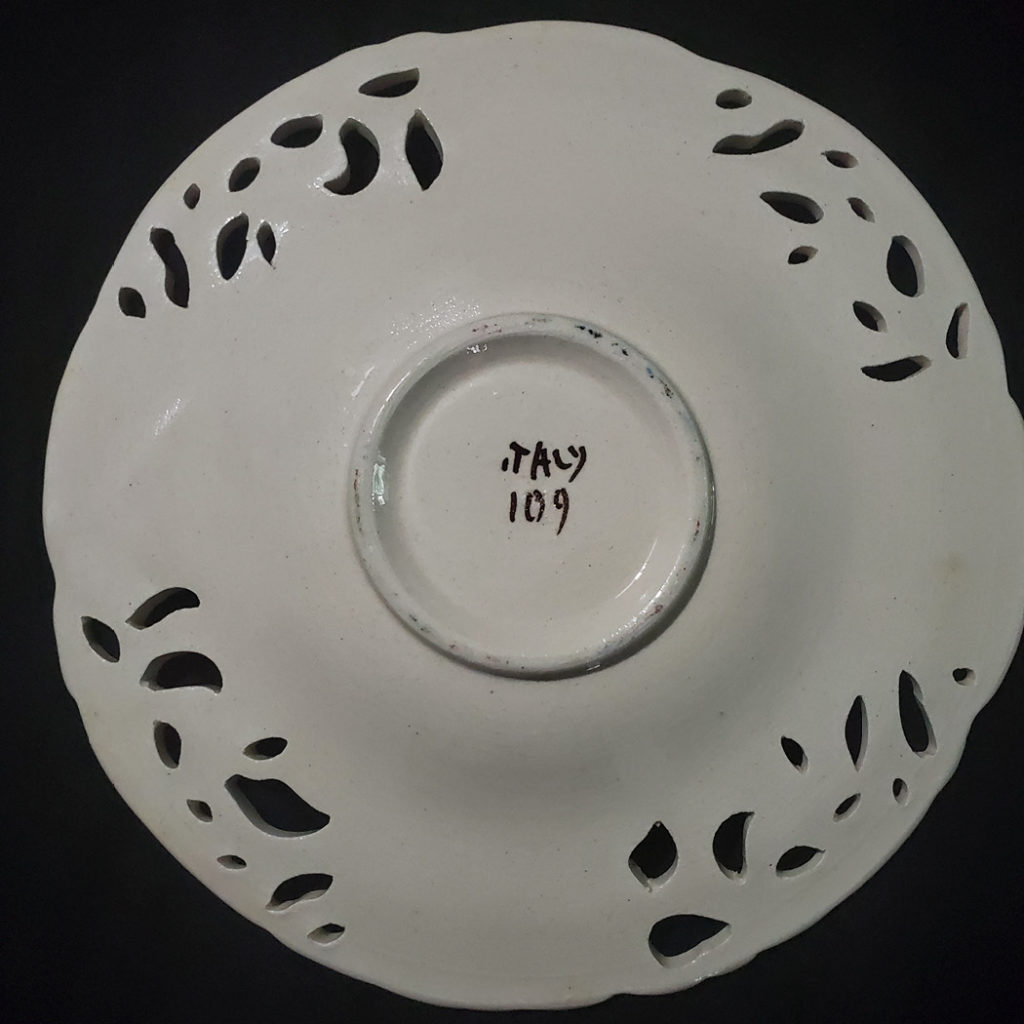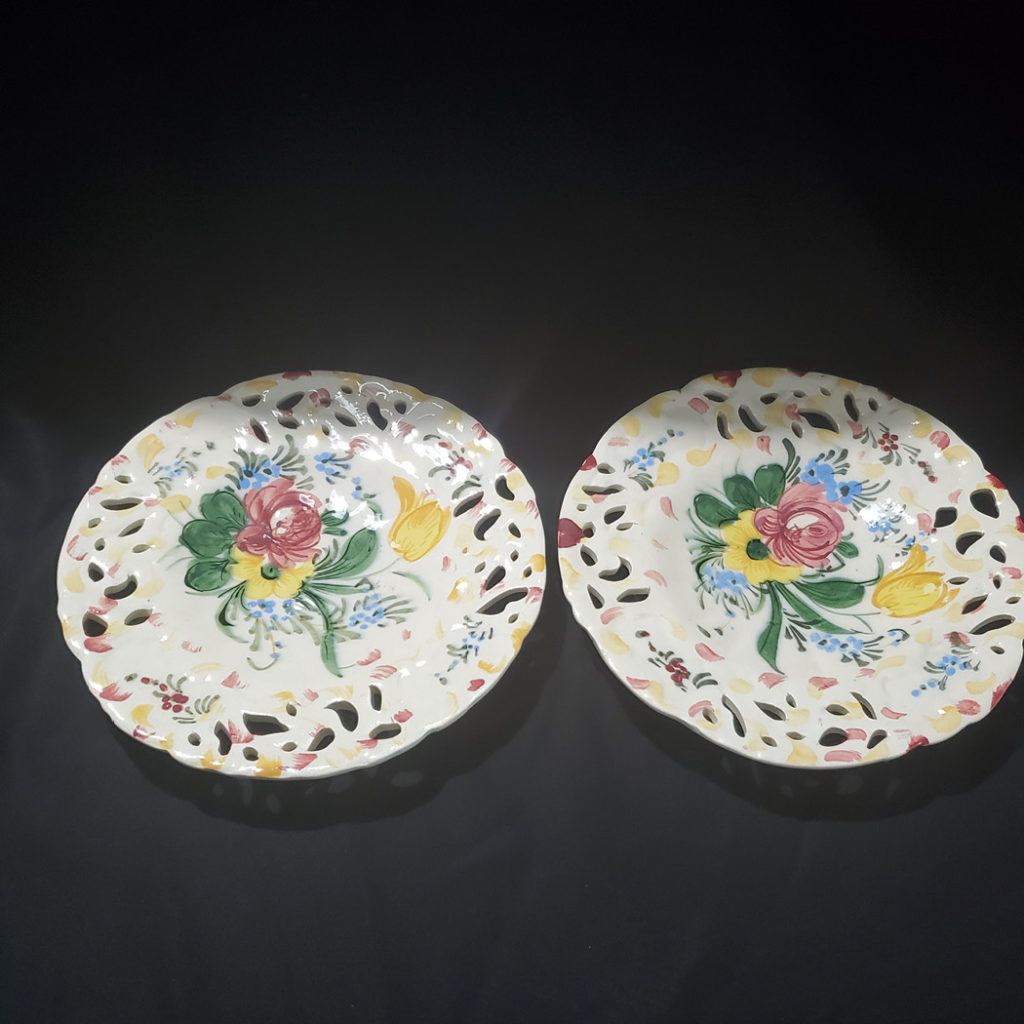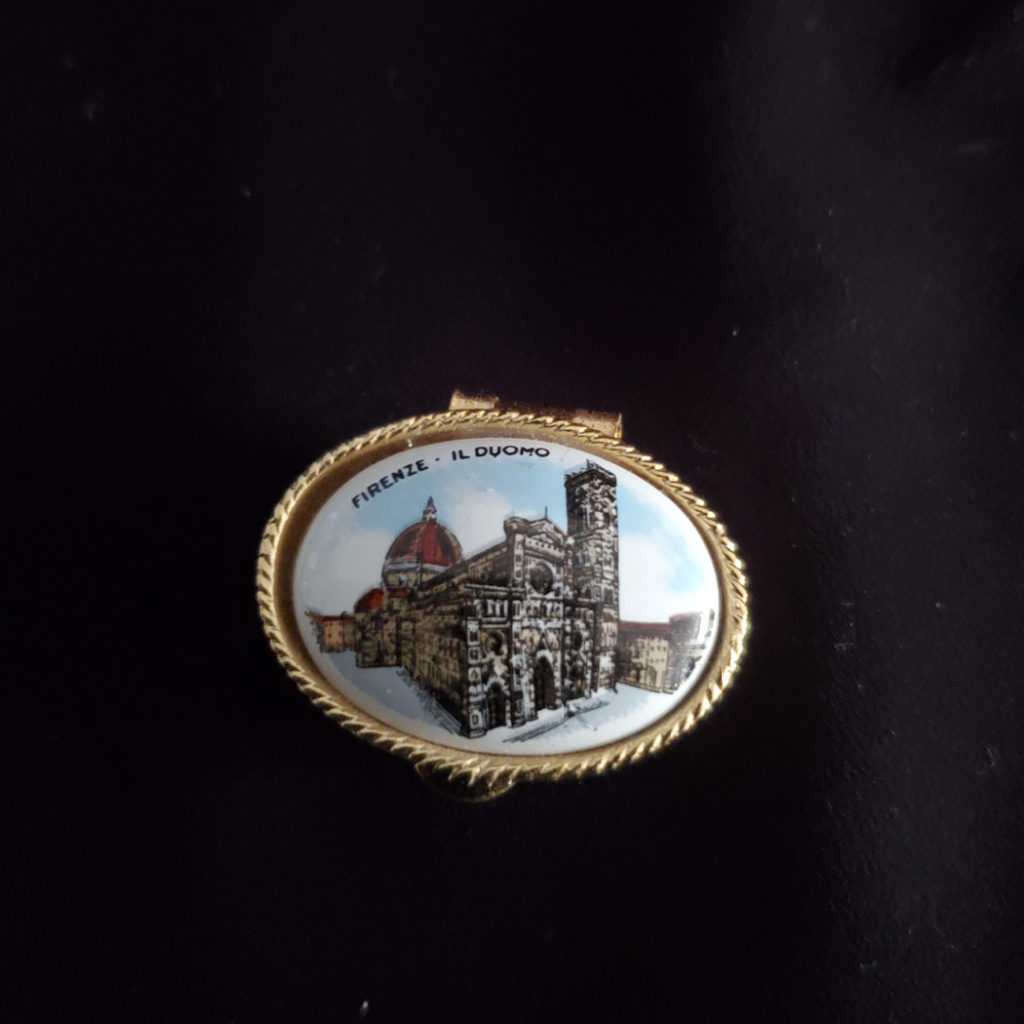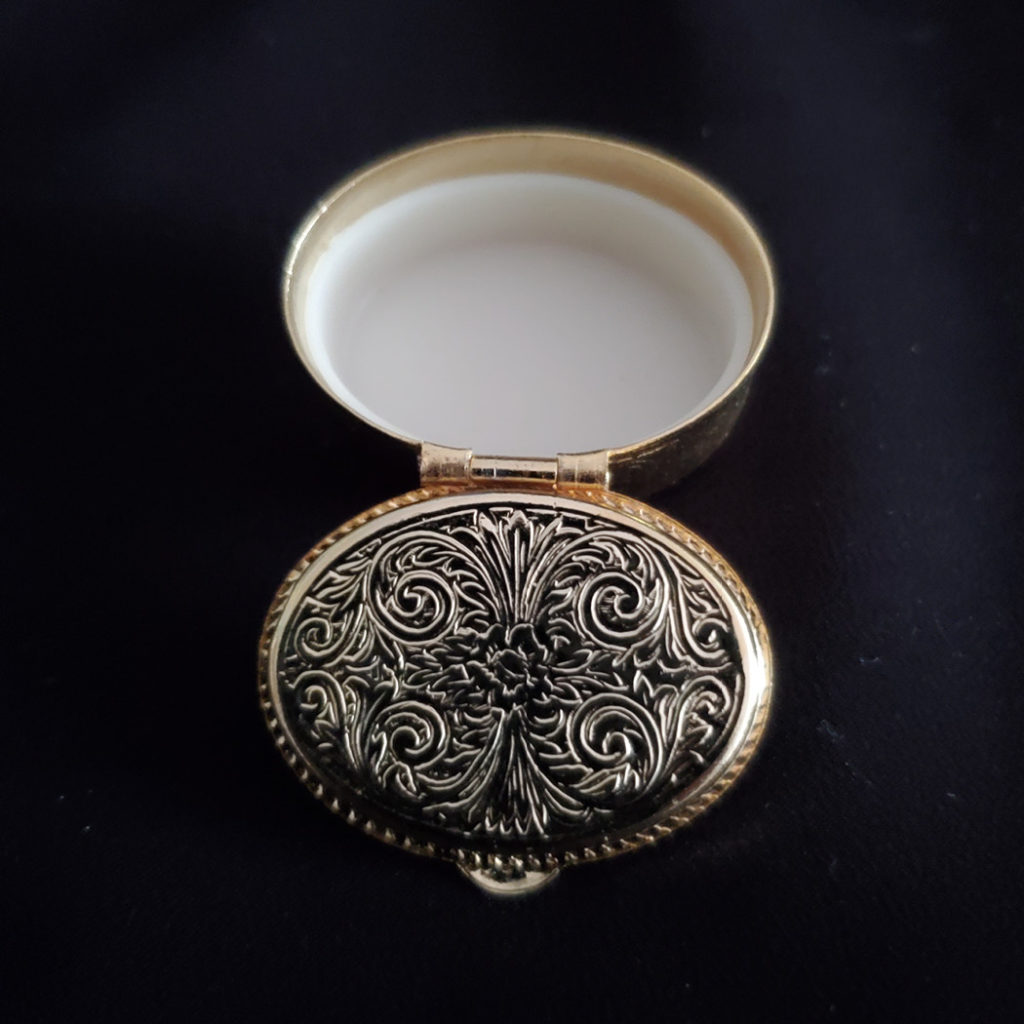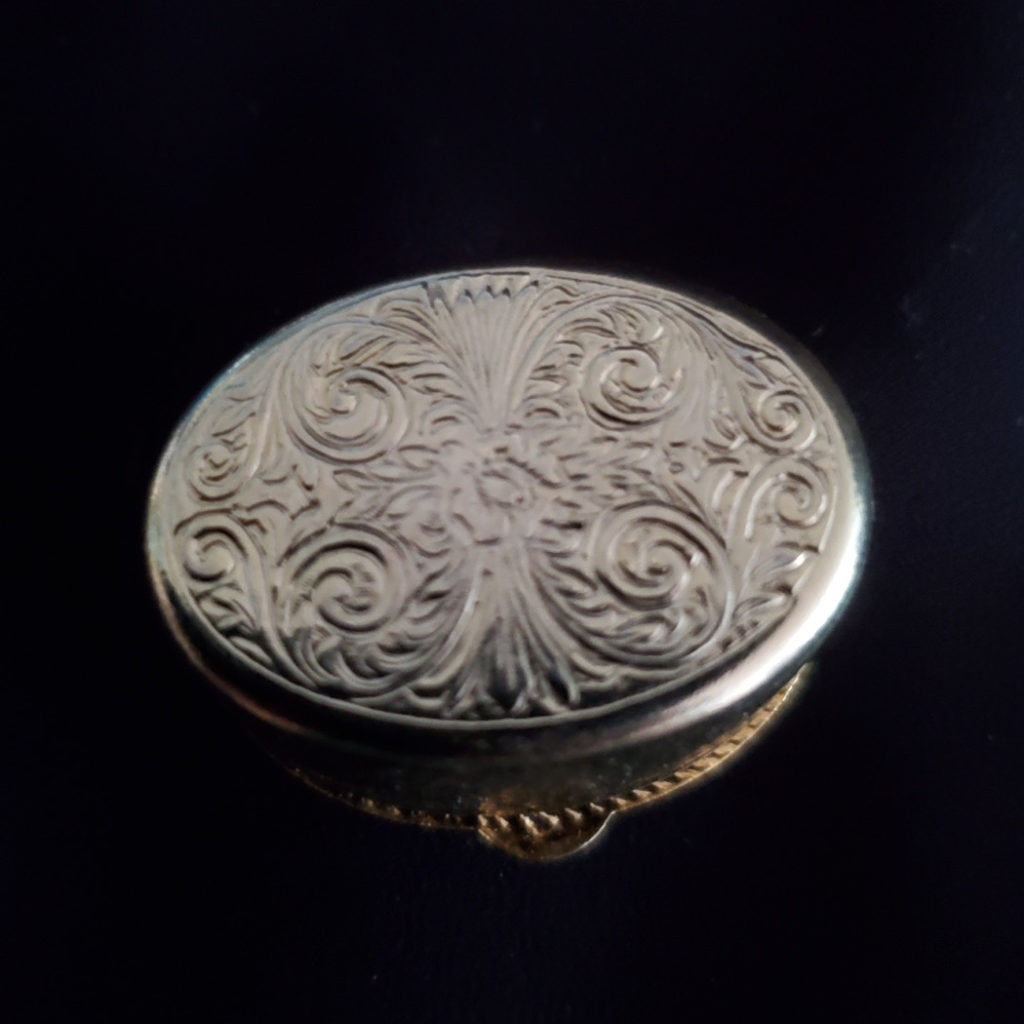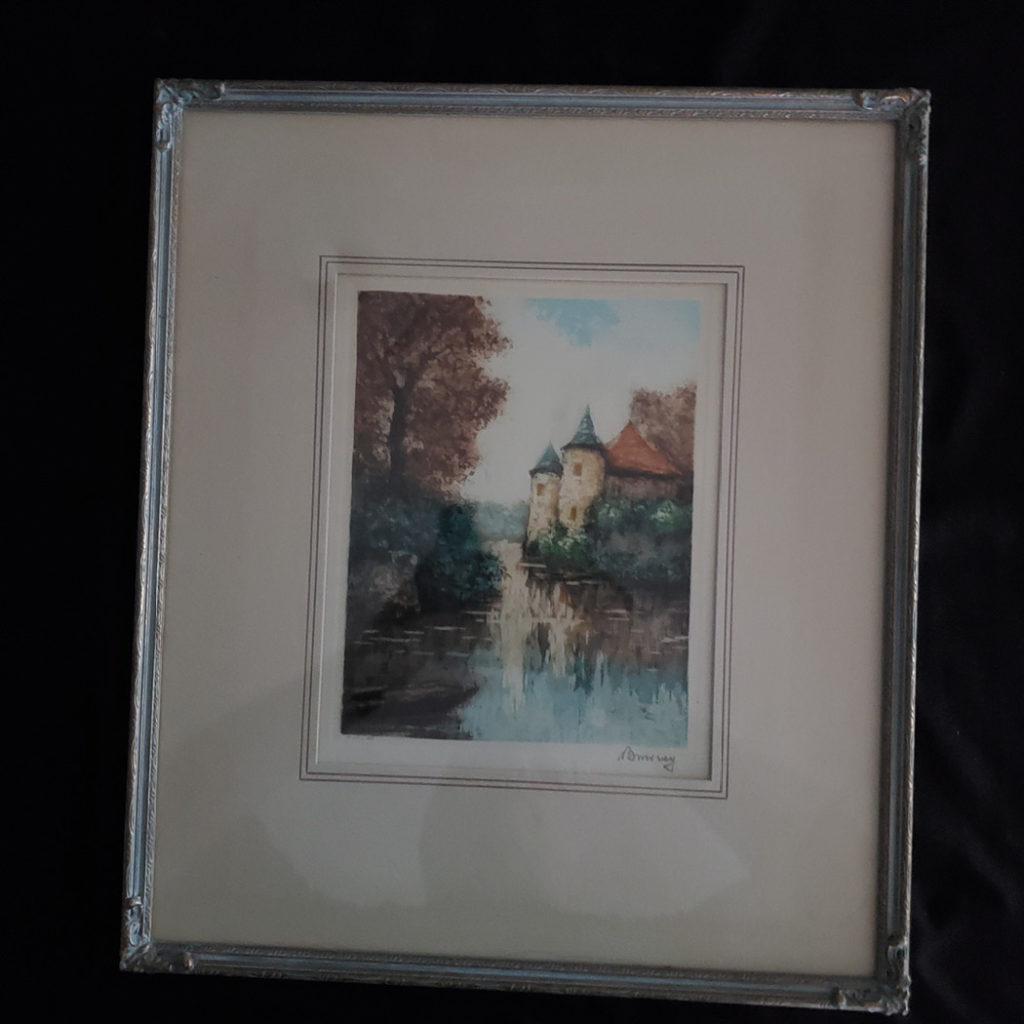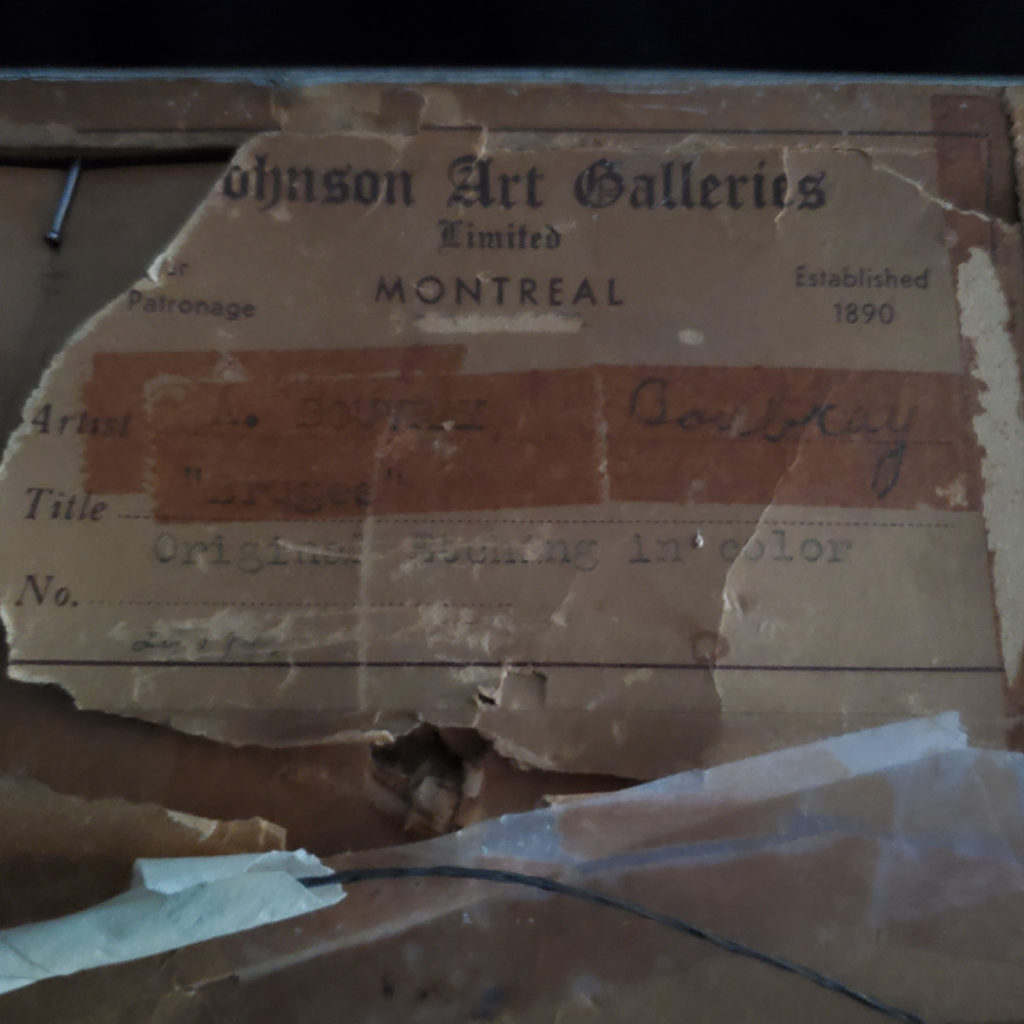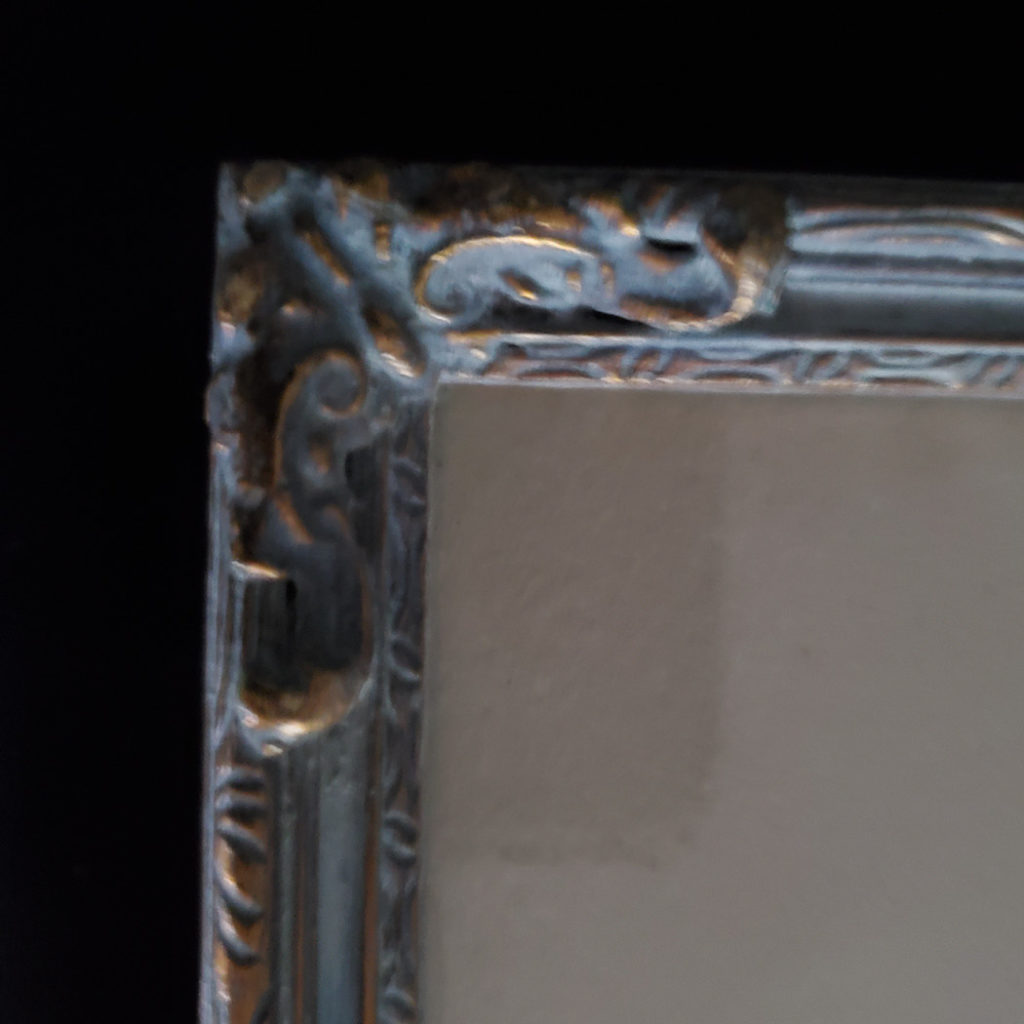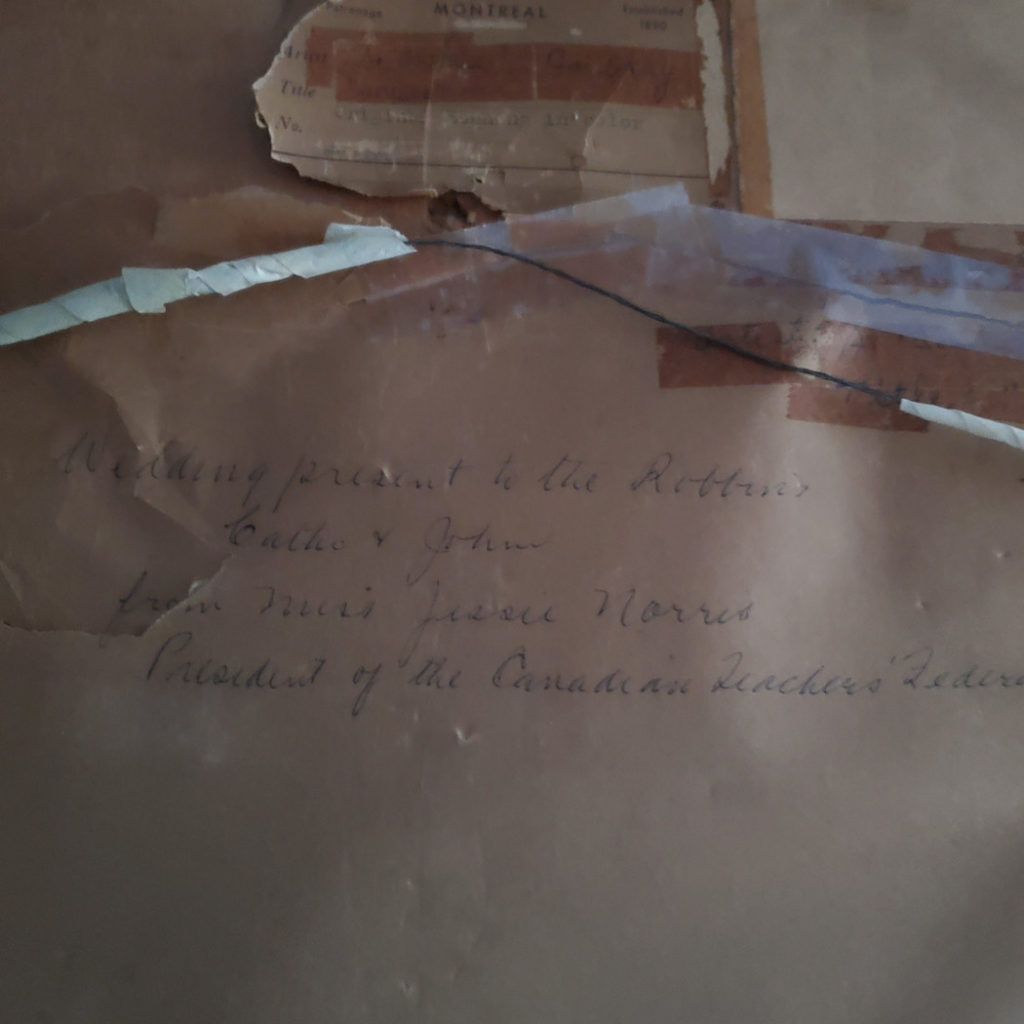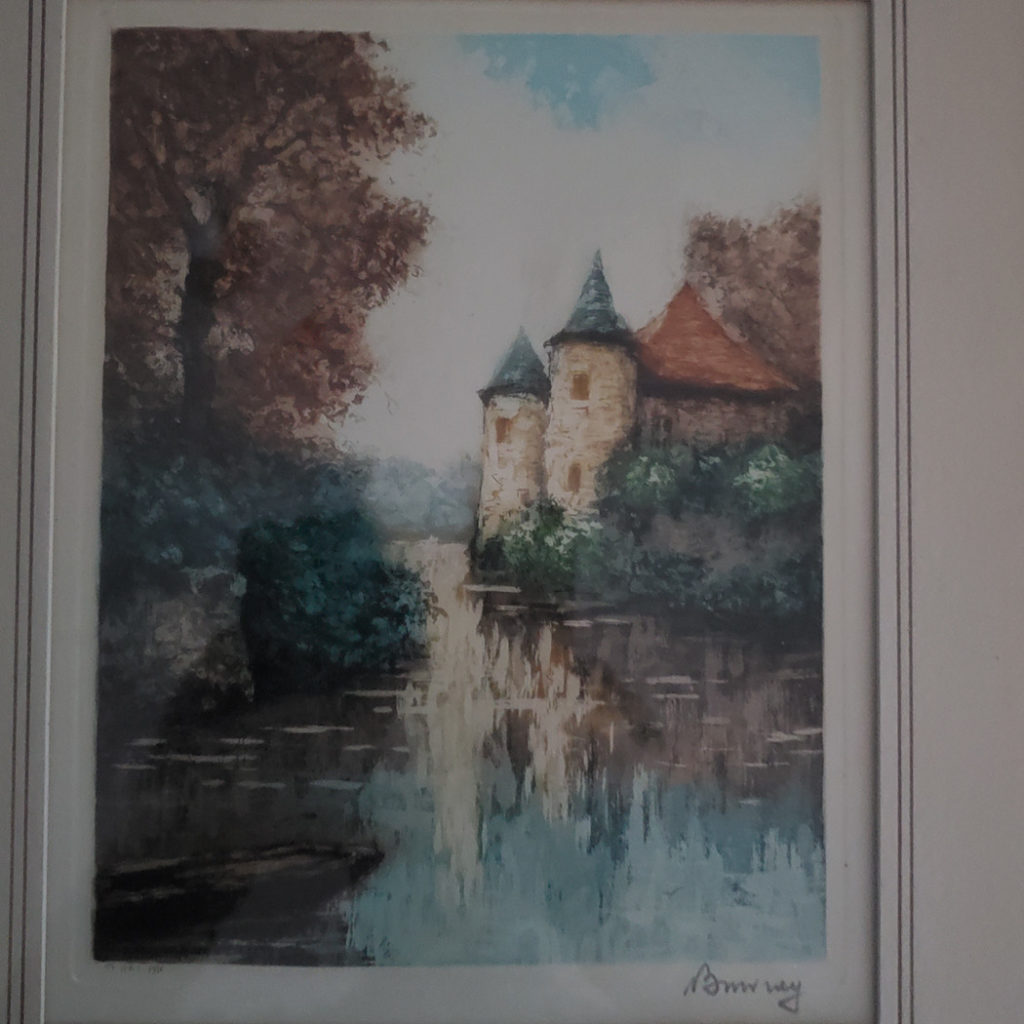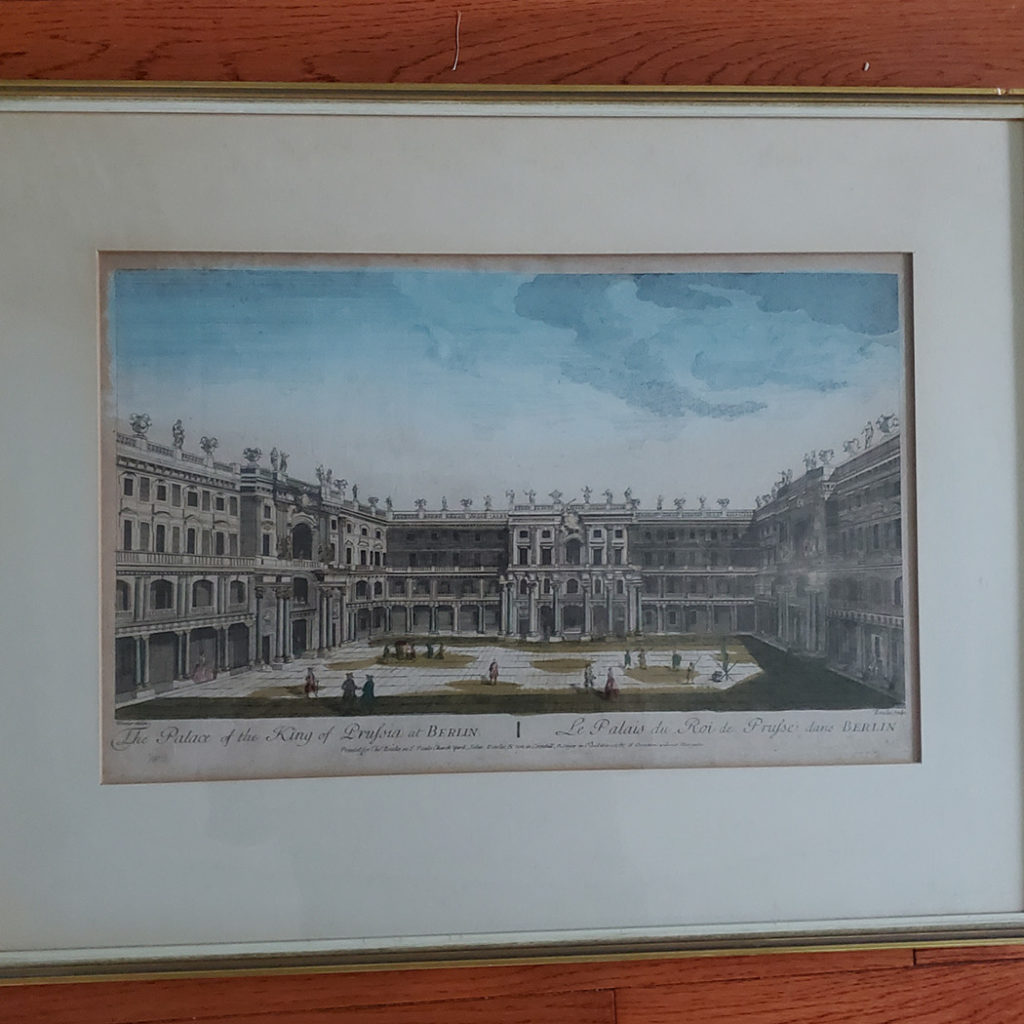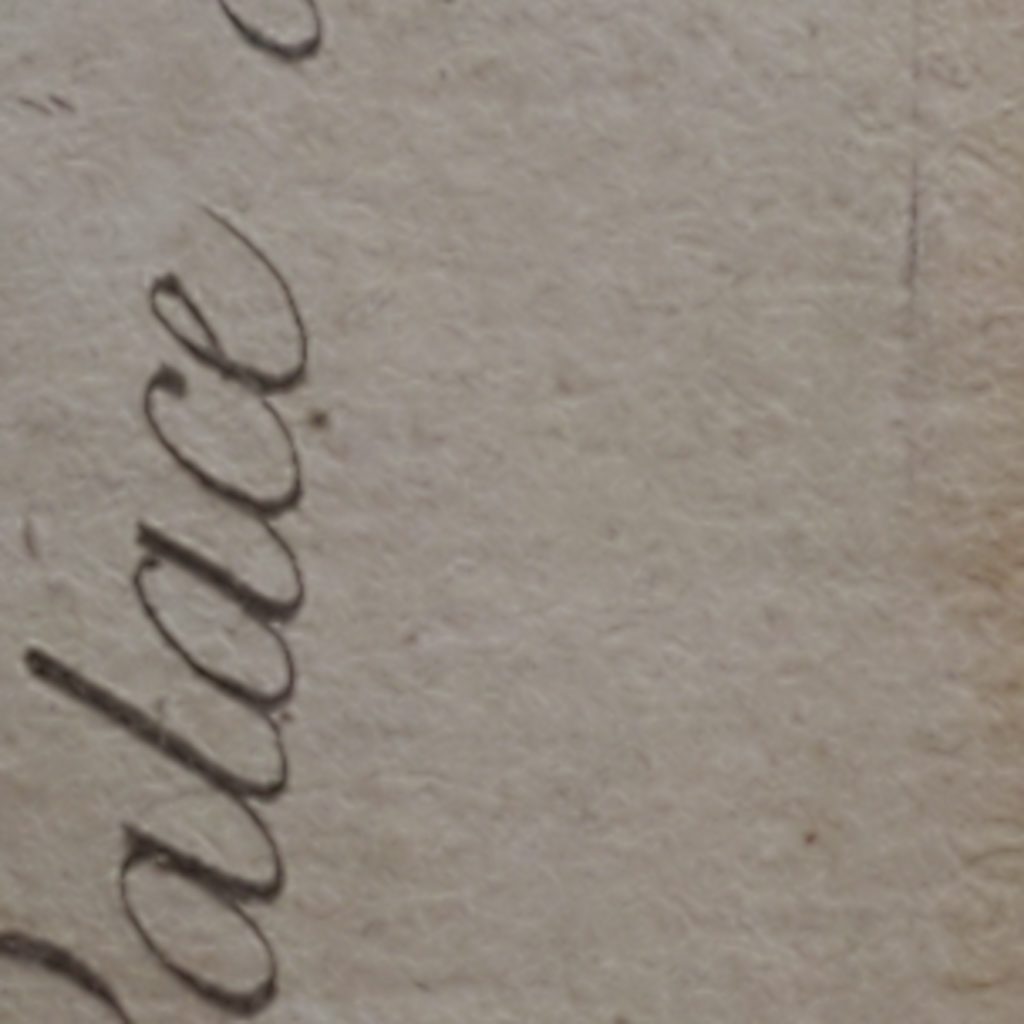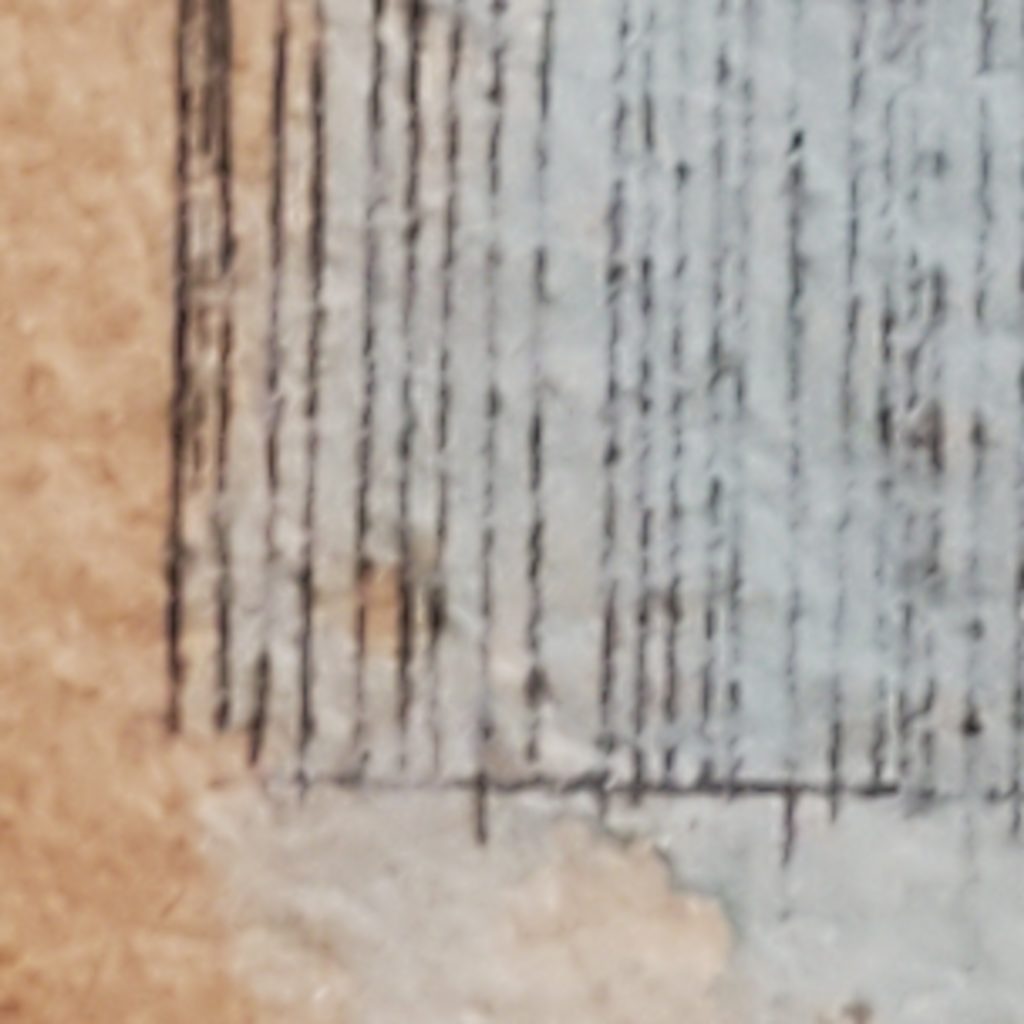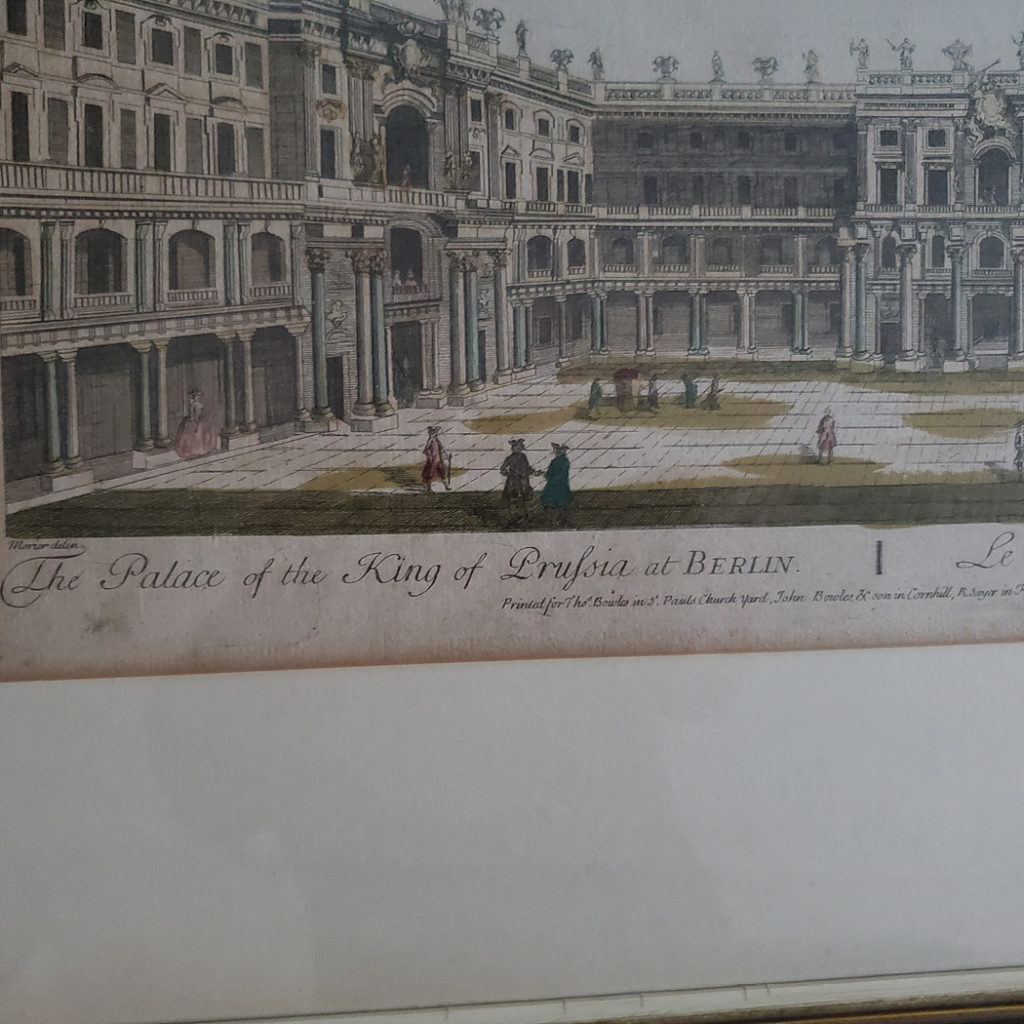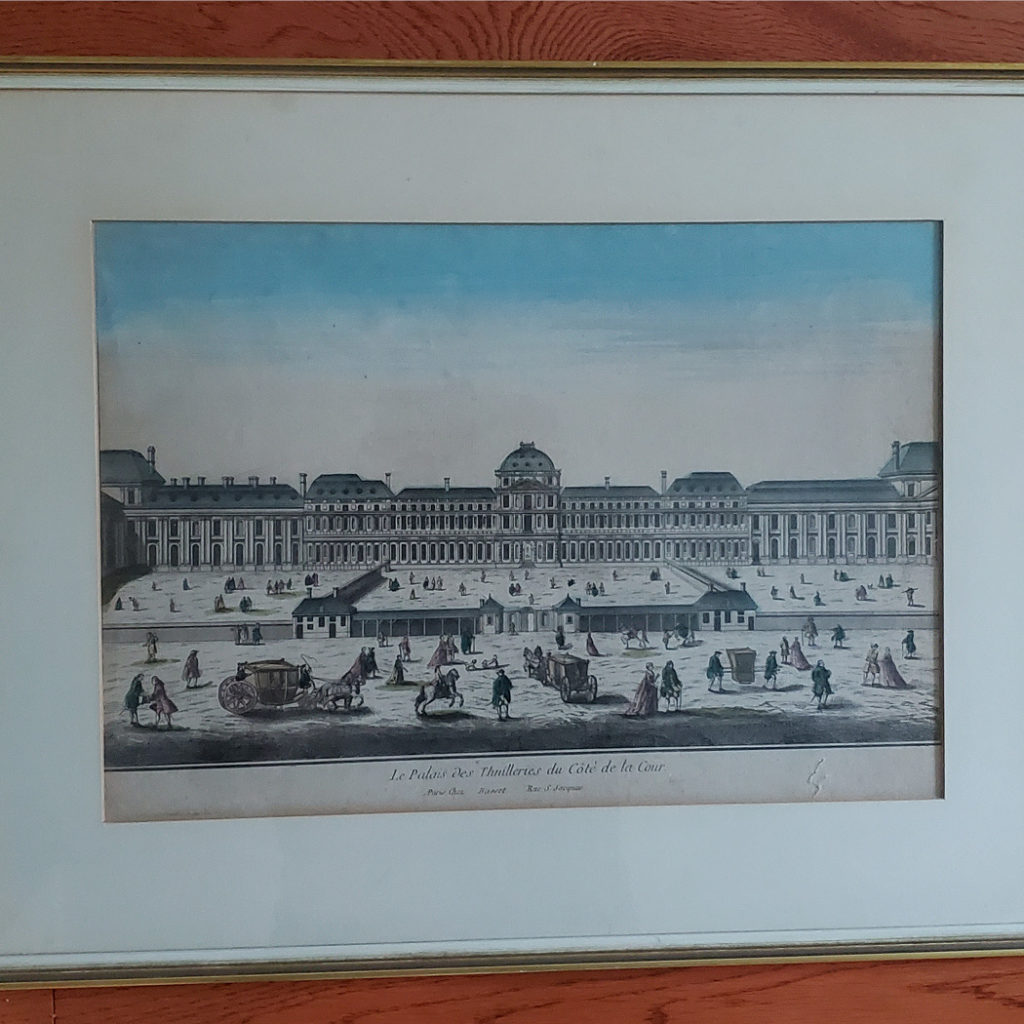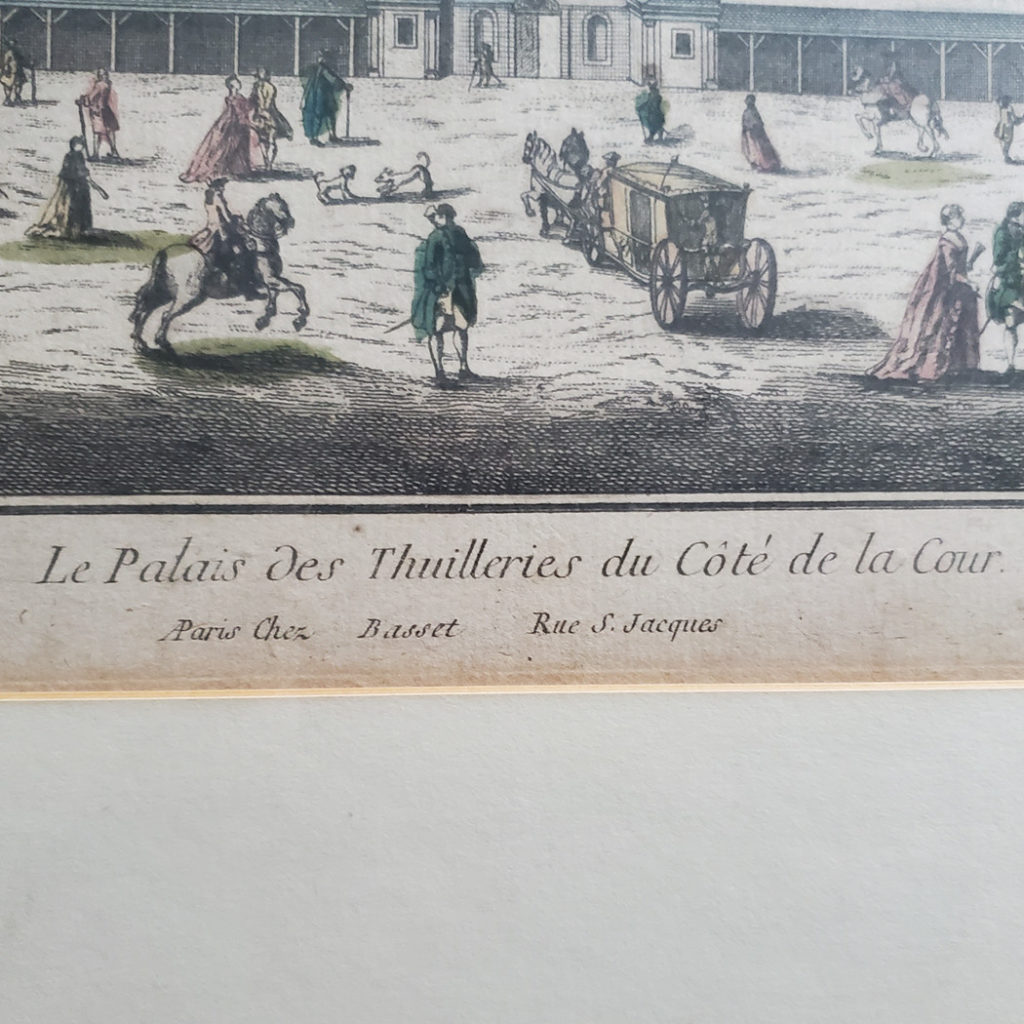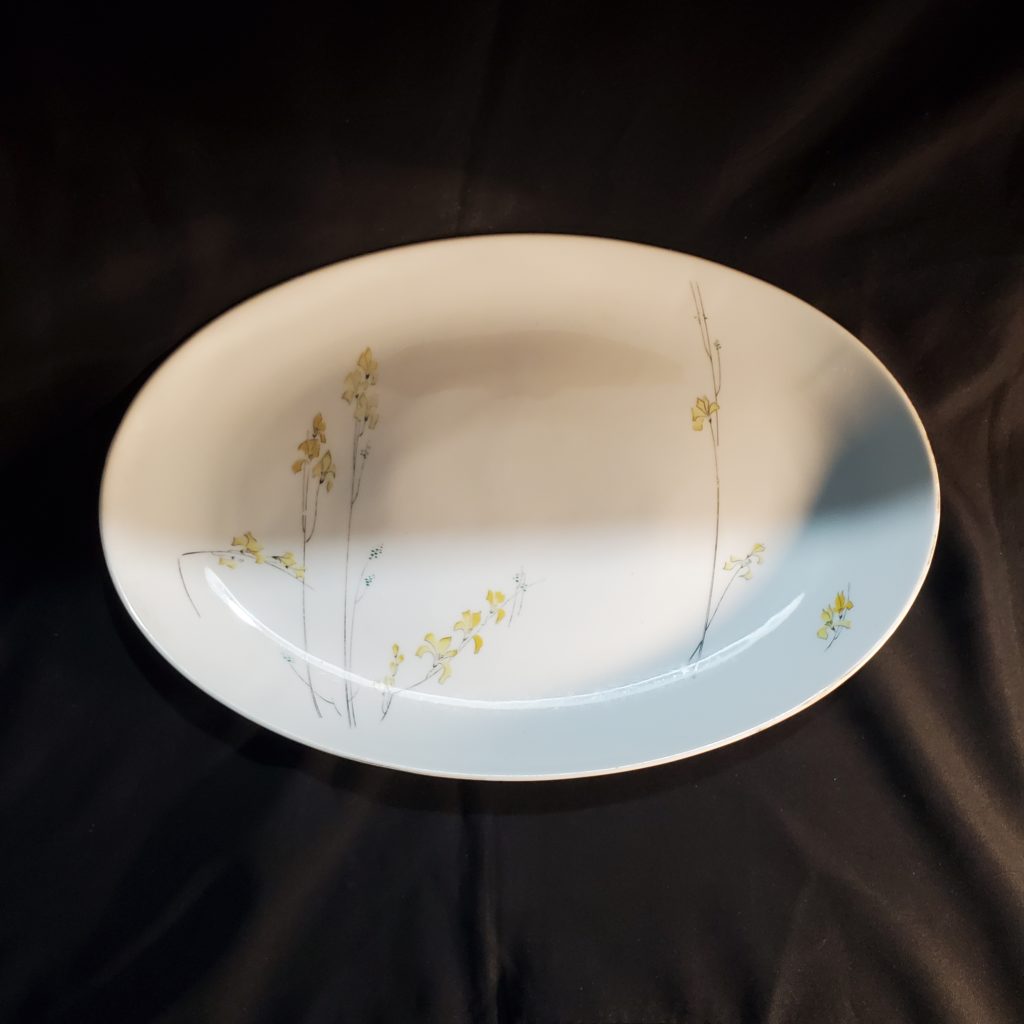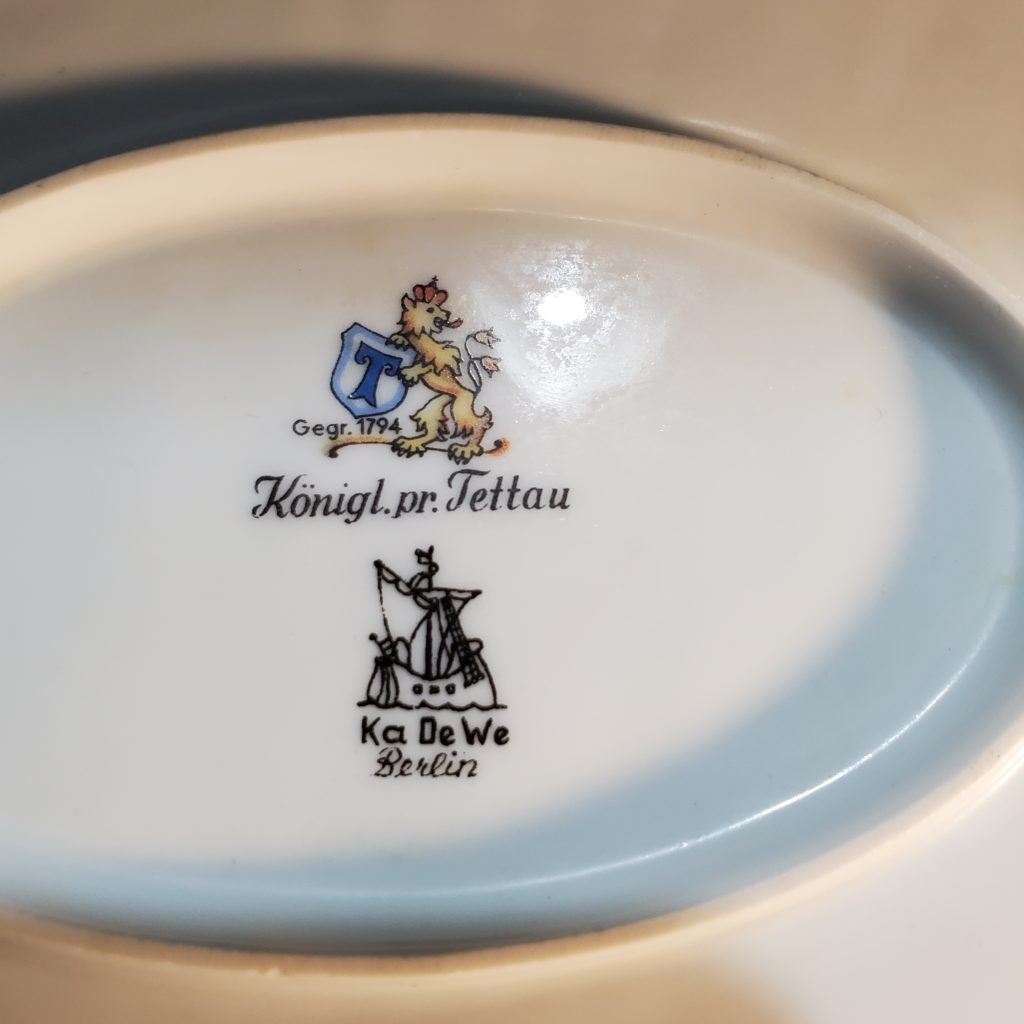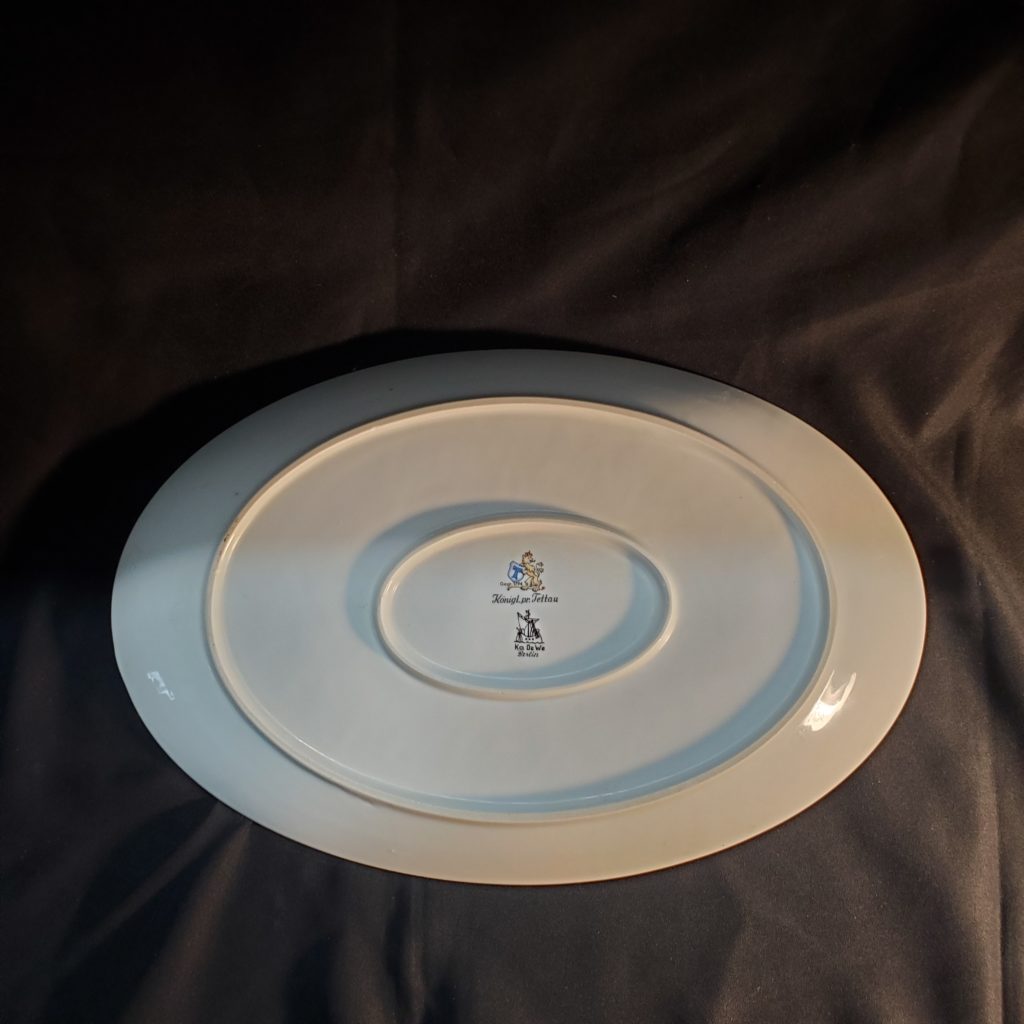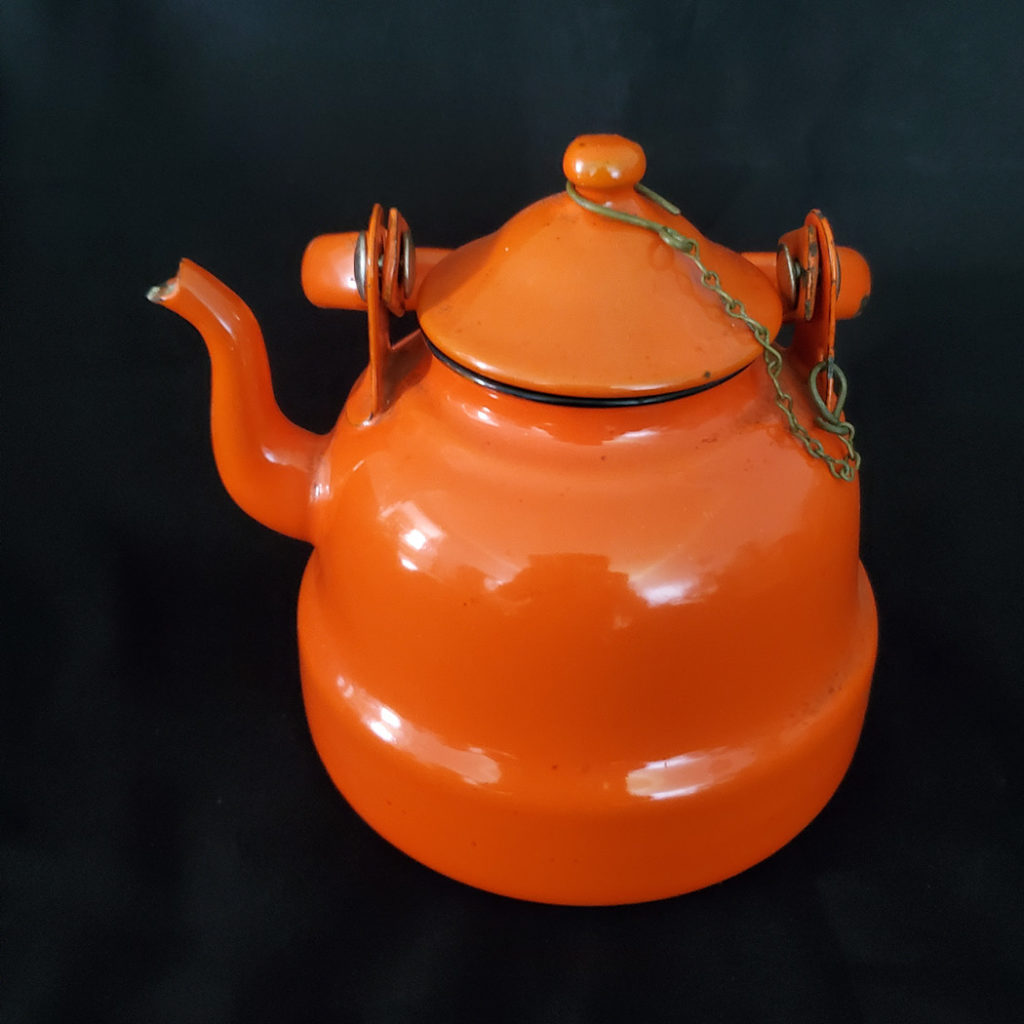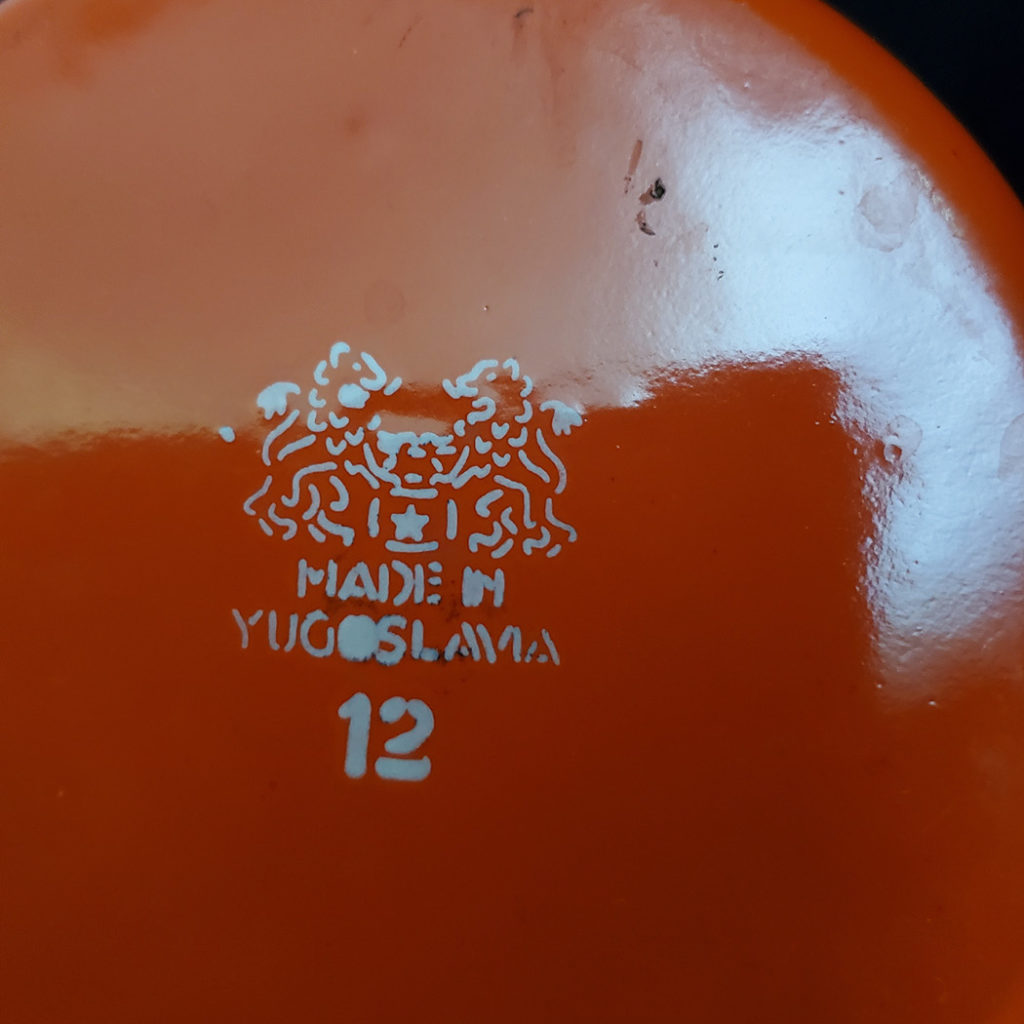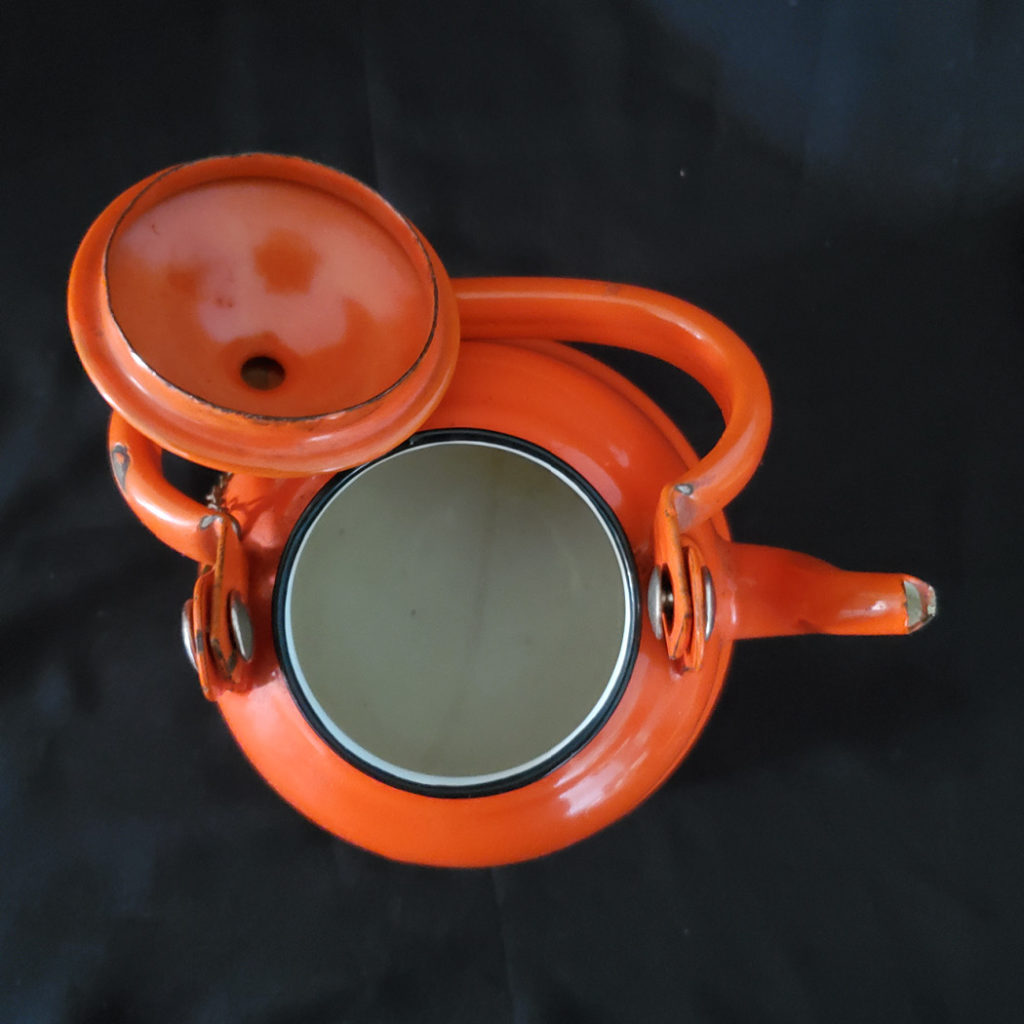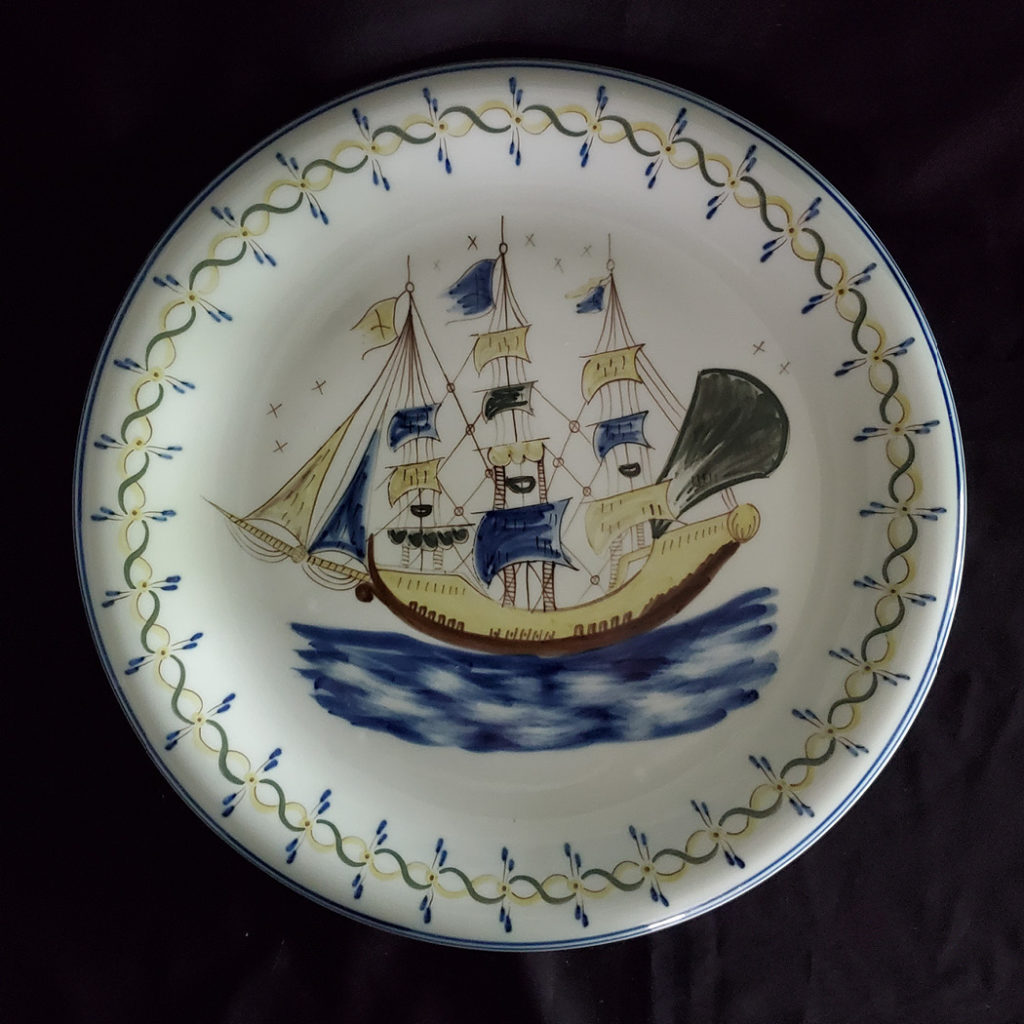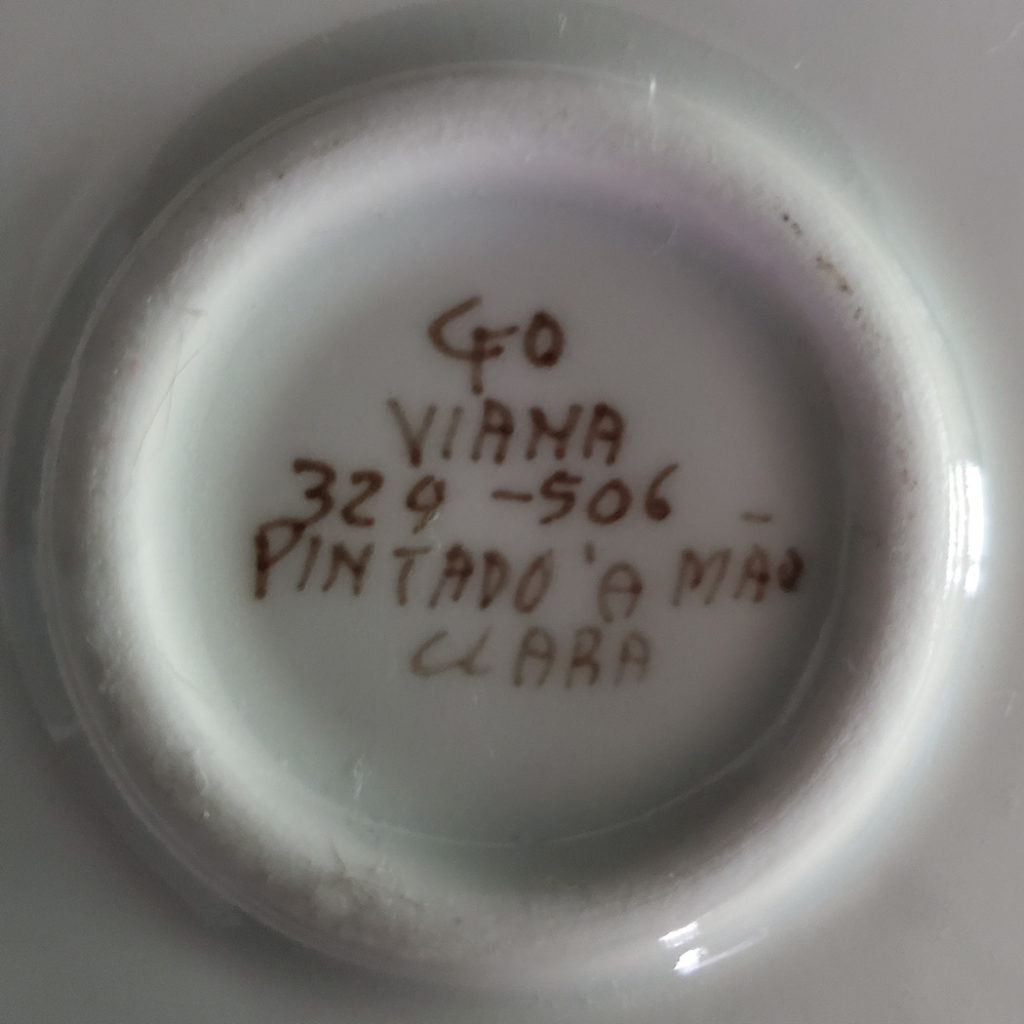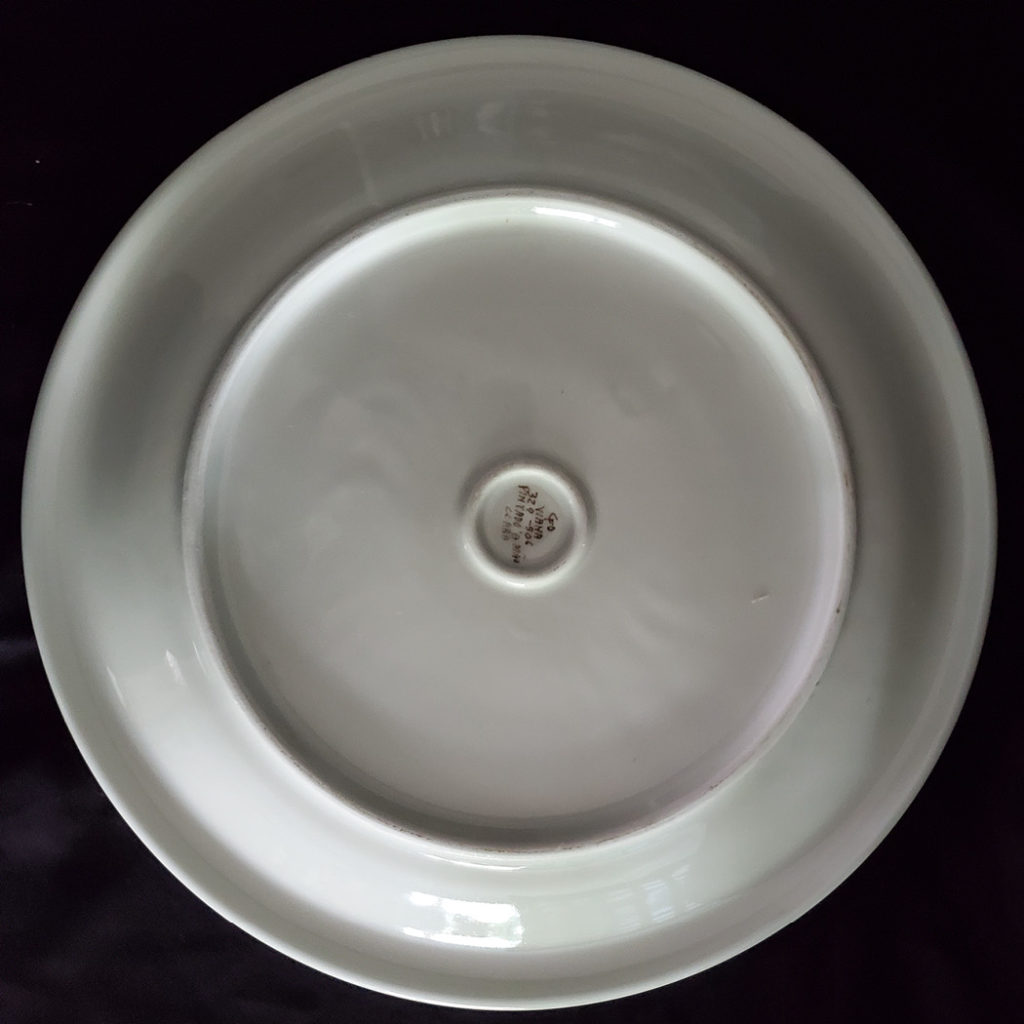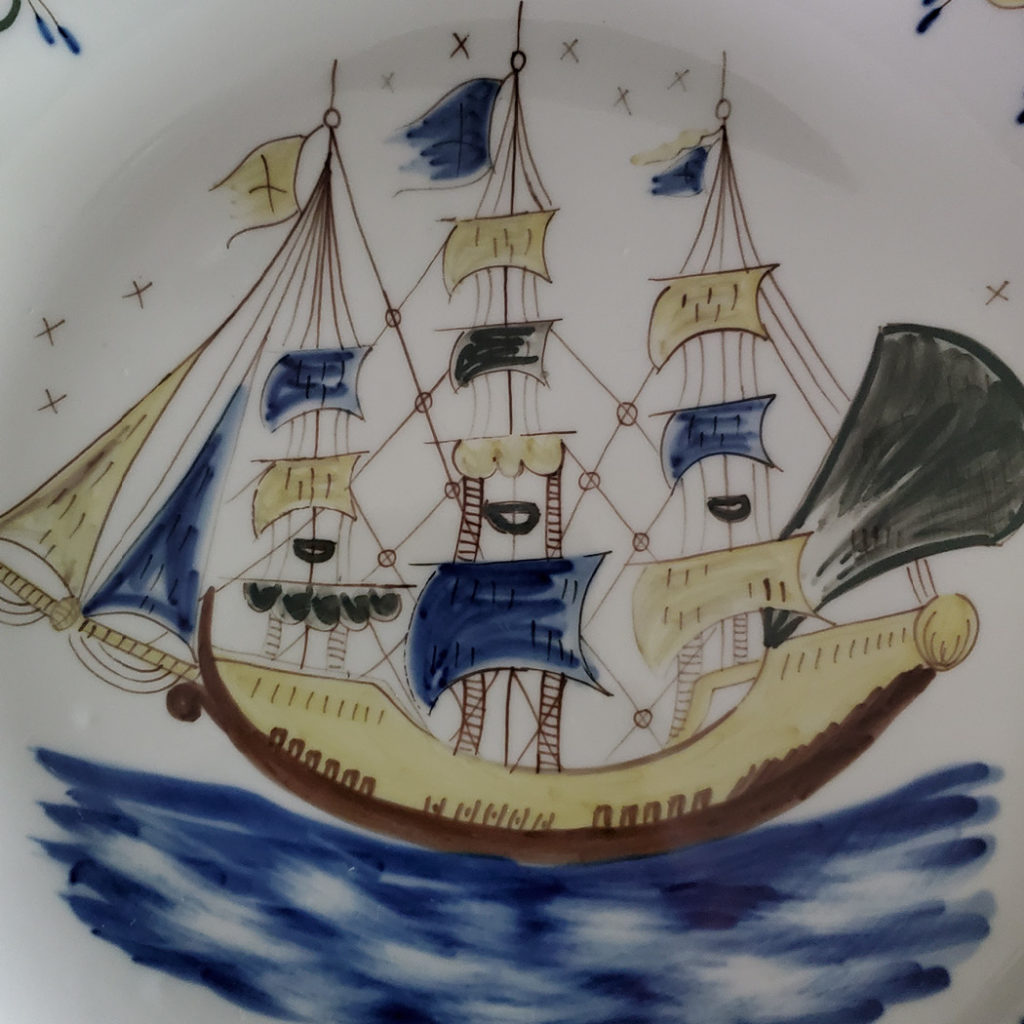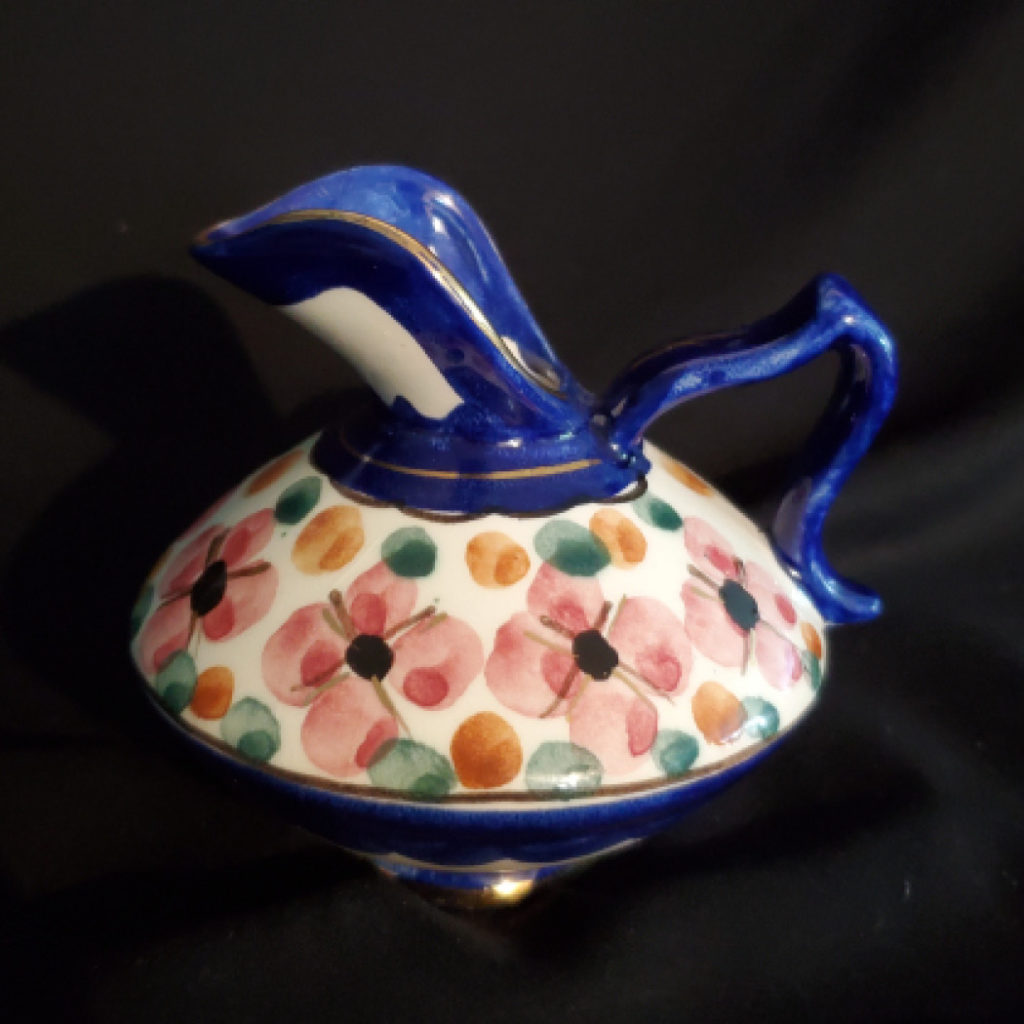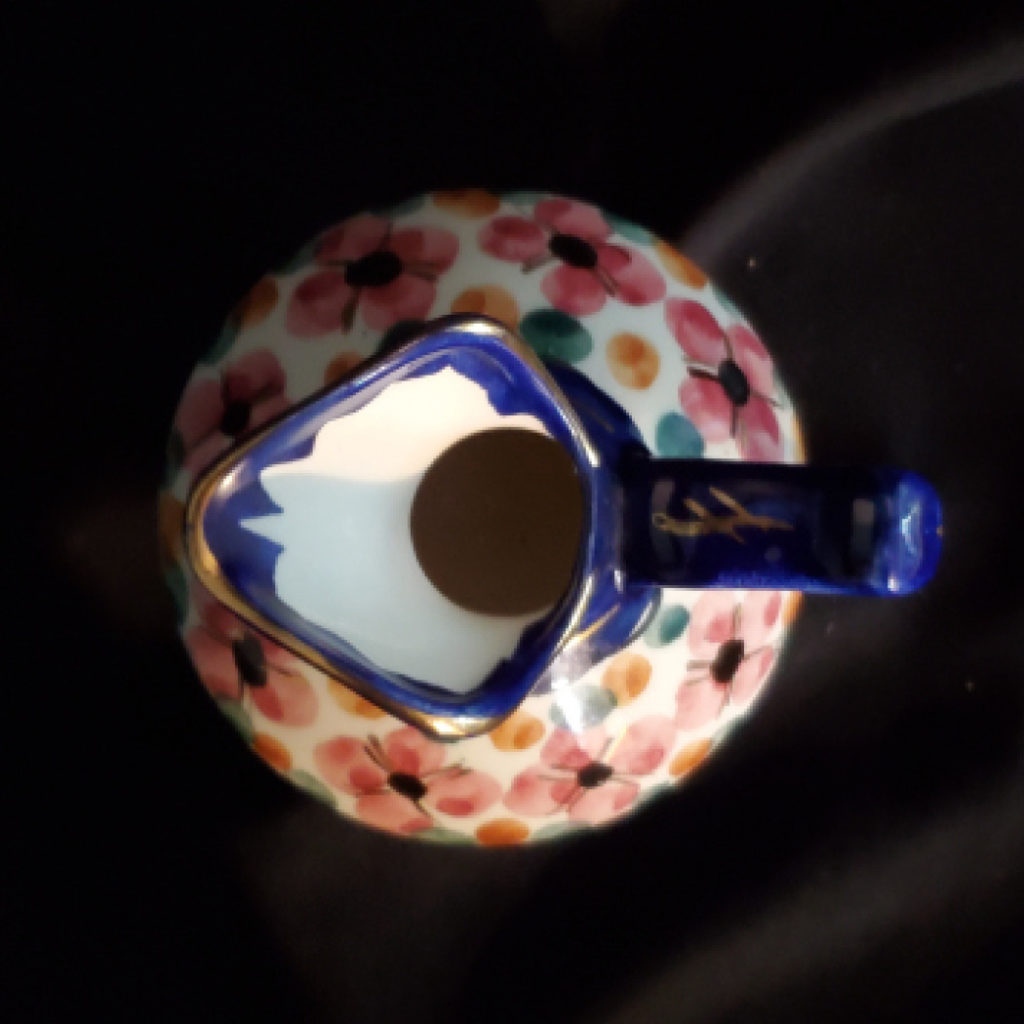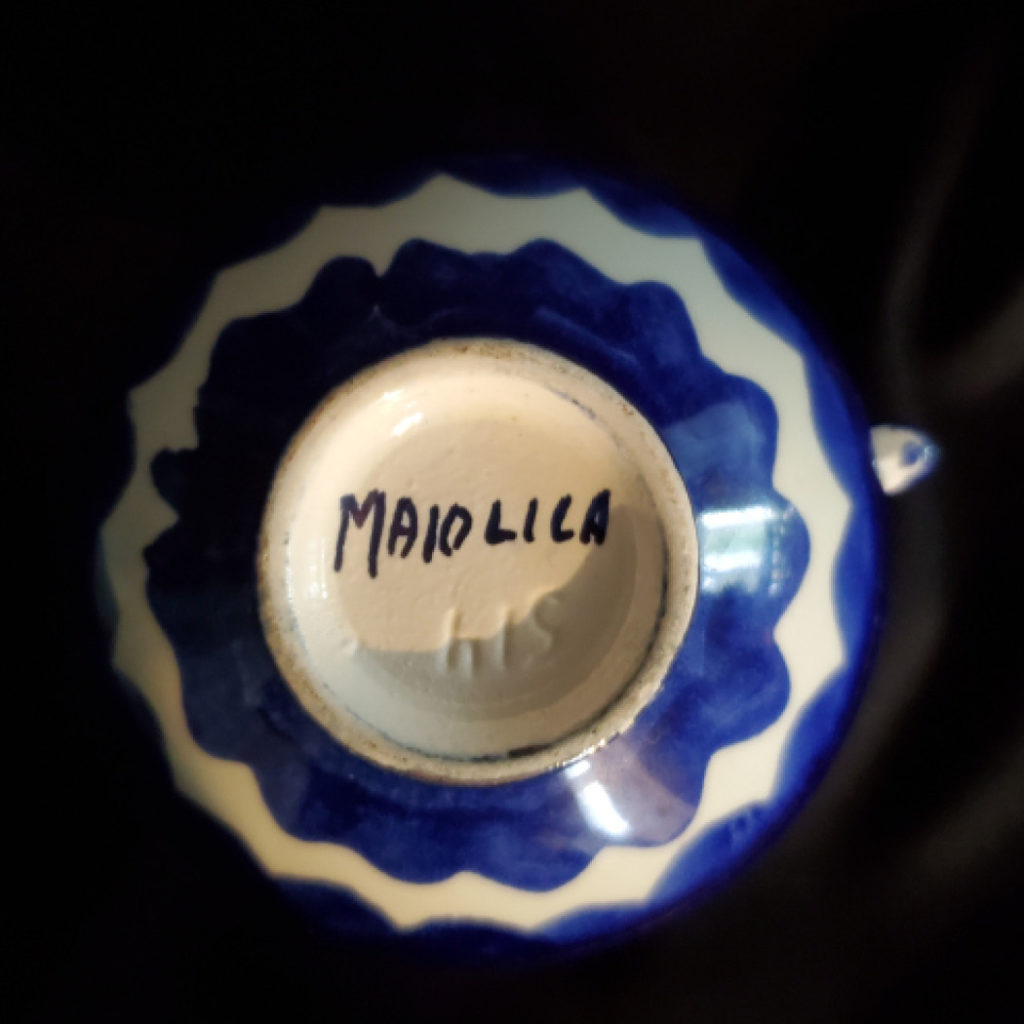#1017 This is a antique ruby crystal jar with beautiful etching. Bohemia crystal, is glass produced in the regions of Bohemia and Silesia, now parts of the Czech Republic. Brilliant example of central European glasswork. 13 x 9 cm.
#1212 This is a museum reproduction quality piece from the Michelangelo Studio in Florence, Italy. You can learn about the artist by going to the site of the Canova museum where the model for this sculpture is kept. This sculpture is called “Dancer With Finger on Chin.” Copies of this sculpture are in museums around the world including in Washington DC and Berlin. There is another sculpture by Canova simple called “Dancer.” The Canadian National Art Gallery has this one in its collection. The size of the one I am offering is 17.5 x 5.5 cm.
#1222 This is a very unique style of porcelain called “Phanolith.” Jean-Baptiste Stahl was its inventor and designer. These porcelain porcelain reliefs, partly influenced by Art Nouveau won him a gold medal at the 1900 World’s Fair in Paris. He took topics from Greek mythology and rural life. Usually, the white translucent figures are finely set on a blue or green background that partly shines through. You can learn more about him and his unique innovation here.
The Villeroy & Boch company began in 1836 when two rival companies merged. “In 1809 Boch bought the former Benedictine abbey in Mettlach on the River Saar where he set up a very modern and extensively mechanised system for tableware production. In fact many of the machines were designed by Boch himself and his inventions started a new era as manual ceramic manufacture was now to be replaced by industrial production. Today, the baroque building is still the corporate headquarters of Villeroy & Boch.”
If you go to this website you will see the marks they used and find this one, as image 2-03 defining the period this plate was made as between 1873 and 1883. More can be found about the company here. The plate measures 20 x 3 cm. This is a very rare item.
#1540 Impressed Choisy Le Roi Majolica plates from the 1880s are rare and this one is in wonderful condition. The Choisy-le-Roi faience factory of Choisy-le-Roi, France produced majolica from 1860. Tin glazed faience majolica pottery was first produced in the early 1800’s in Choisy-le-Roi by Louis Boulenger in the 1830s. Later, his son Hippolyte Boulenger took on the business in 1863. The marks are stamped Choisy le Roi or simply Choisy. The letters HB are often present, for Mr. Hippolyte Boulenger. The design was part of the Aesthetic Movement of the 1880s.
#1352 “Lacquer miniatures are not just souvenirs; they are collectables and works of art.” You can learn about this art form and how they are produced here here. The art form was brought to Russia by Peter the Great. This image illustrates the Pushkin “Tale of the Fisherman and the fish,” published in 1835.
#1418 This tiny candle holder is so exquisitely made you will marvel at the skill to do it only 5 x 7 cm. It comes from a world famous glass factory in the heart of Venice and is the pride of Italian glass. The colour comes with the use of real gold in the manufacture. This piece comes with the original box and guarantee papers.
#1358 This is a fine, signed example of Polish naïve folk art sculpture. This artist is a listed polish artist known for sculptures like this.
#1419 I have spent some time trying to identify this sculpture more specifically, without success. It bears some similarities with Polish folk carvings and the moustache the man wears is depicted in Polish carvings. I found clothing in several East European countries that look like this including Romanian winter shepherd cloaks and hats. You can see how the carver is depicting the messy wool of a thick cloak. I wondered about Central Asia but did not find any tradition of carving like this.
#1443 Four tiles hand made and decorated by Niarchos, Greece. Each depicts a different ancient story and all have labels on the back identifying the scene. They measure 15 x 15 cm (6 inches). This set is particularly hard to find and finely detailed representing illustrations from ancient vessels.
#1272 This vase has the style of Miessen. The mark appears to be the JR mark, one of the marks they used. I have not been able to date the piece definitively as I did not get a date range for those marks. Miessen vases and Miessen style vases command high prices. I have been very modest pricing this since I cannot be sure of its identity. The vase measures 9.5 x 11 cm.
#1444 Teacup and saucer with dragon design from 1922-1949. After this date the mark read “W. Germany.” Delicate Chinoiserie signed by the artist who hand painted the image. The cup measures 18.5 x 6.5 x 6.25 cm and the saucer is 12 cm across.
#1459 Royal Rudolstadt bowl made by Beyer & Bock, Volkstedt, Thuringia, Germany. This bowl was made in 1905-1920. It measures 25 x 6 cm. A bowl just like this one is for sale on Etsy now for $62.
#1445 This bowl is made sometime between 1906 and 1962 when the company changed its backstamps. Langenthal produced fine porcelain, especially for upscale hotels in the country. They ceased production of table ware and exclusively produced insulators in their latter years. Much of the Langenthal porcelain that can be found now is 1960s mid century modern. Earlier pieces like this are rarer. The bowl measures 14 x 10 x 8 cm.
#1447 The pitcher is signed twice, once on the bottom and in the image. I cannot make out the letters. I suspect it is a “FJ.” It measures 10 x 15 cm. It is from Italy or Portugal.
#1448 The Stara Role (Altrohlau) company that began in 1810 in Austria was bought at auction by the Moritz Zdekauer Bank in 1884 as a large factory with close to 1000 workers. From then on they used the name MZ. This bowl was produced between 1884 and 1909. At the end of the First World War, Stara Role, which is in Bohemia, became a part of Czechoslovakia. It is today in the Czech Republic.
#1535 In the 19th century and early 20th century waxed long moustaches were popular for men. Not popular was getting them in your drink. That would be not good for the moustache or the drink. The mugs solved the problem. This one is very typical central European and would have been from Austria or Germany. It measure 9 x 11 x 6 cm.
#1536 Ionia is likely the most famous brand of Greek tableware. These coasters nest in the holder. They are 8 x 1.5 cm. The holder is 10.5 x 5 cm.
#1039 This vase has wonderful proportions, design and colours. I have not been able to identify the maker definitively but there are some interesting suspects. It is clearly a quality piece. 15 x 13 cm.
#1042 From 1928 to 1988 Icaros was the place to get this wonderful style of pottery that remains very much in demand. Read about it here. As you will see Rhodes pottery is similar to Iznik pottery and was called Lindian Iznik. This one is very large – much larger than many that can be found today. The price I have is very low for this given the size and rarity. 34 x 4.5 cm.
#1438 Vintage Greek Rhodes Lindos, signed Tringatzis. Hand-made and painted deer floral plate. It is 11.5 cm across.
#1450 Lustreware souvenir pitcher, Niagara Falls, made in Germany. The scene is from the American side looking towards the Canadian Horseshoe Falls. The piece measures 11 x 11 x 7 cm. Made in the 1920s or 30s.
#1287 Porzellanfabrik Carl Schumann G.m.b.H. & Co. K.G. bowl. The mark dates this bowl as between 1900 and 1914. It measures 21 x 5.5 cm.
#1278 This piece is an example of how Mirta Morigi has always been drawn to bright colours and contrasts. More recently she has been adding “delightful beasts” to her work as you can see here. If you look closely at the image you will see much about is striking including the textures. At once it has much in common with pottery of hundreds of years ago and is also very modern. This plate measures 25 x 5 cm.
Mirta Morigi was born in Faenza where she studied at the Institute of Ceramic Art and where she opened her workshop in 1972. Mirta took part to several international competitions and exhibitions and her works are displayed in well known museums both in Italy and in the world. In her lovely bottega, set in the town centre of Faenza, Mirta allows visitors to have interesting experiences making ceramics.
#1230 The inkwell comes with 4 holes for pens and the ink in the centre. It would be a great gift for a writer or collector of early 20th century design forms (Art Deco and Art Nouveau.
#1047 Dim Ceramics produces exquisite museum replicas of ancient Greek pottery. These sell well over $100 each.
#1217 This exquisite vase has wonderful detail and is an exact copy of a a piece from over 2500 years ago. It measure 6 x 10 cm.
#1141 These are elegant hand made and painted in Greece vintage demi tasse cups. The saucer is 11 cm across and the cups are 5.5 x 8 cm.
#1426 Khokhloma is a traditional Russian craft that originated in the 17th century in the area of Nizhniy Novgorod. It’s the style of painting on wooden tableware and furniture. Khokhloma style can be recognized for its red and gold flower pattern on a dark background. The spoon measures 14 x 4 cm and the cup measures 6 x 4.5 cm.
#1111 By the mark this plate was made between 1894 and 1909. MZ specialized in pink roses, this motif is worth more than the others, and this is a wonderful example. This has the embossed surface, intricately scalloped edges and reticulated sides. It is a large plate at 26.5 cm across.
#1244 An application was made last year to Unesco to recognize Hungarian folk art pottery. The application was prepared by the Museum of Hungarian Applied Folk Arts. the city of Karcag is famous for its folk art pottery. It measures 25 x 5 cm.
#1049 Old German stein marked Made in Germany 1920s 15 x 8 x 13.5 cm
#1476 The goblet is inscribed Luxembourg and two cities, Echternach and Vianden, both in Luxembourg. I suspect this is mid century but may be older. It measures 8.5 x 14 cm.
#1050 The scene is Via della Terra, Rovereto, Italy. On the back it is marked “unique piece engraved in relief and hand finished on precious metal.” Wonderful gift!
#1478 This limited edition plate is made from an image by Louis Dali. These plates come from the early 1980s. The painting is one of 12 commissioned by the French government in the 1970s. The plate measures 21 cm across.
#1072 This is a vintage card box made in the Tatra mountains from linden wood. It includes the original cards and the explanation paper. The tradition of making wood crafts using wood burning and hammered brasswork in Poland is a long one. This particular box is interesting as it has two hinges one for the upper compartment with the cards and a lower one perhaps for betting chips or pads and paper. This box measures 15.5 x 11.5 x 7.5.
#1077 Vintage vase FM Floss Bavaria. 6 x 17.5 cm
#1078 There are 6 shot glasses and this tray. The tray measures 26 x 8 x 5 cm. Each glass is 4 x 5.5 cm.
#1085 These bowls appear to be from the 1960s. They are heavy and well painted. They are 13.5 x 8 cm.
#1083 These three Delft tiles from Holland – Netherlands are very nicely made with a rustic frame. They are 16 x 6 cm.
#1084 Vintage Delft miniature clogs. They appear to be mid century. They measure 6.5 x 4 x 3 cm.
#1294 Delft plate, unidentified artist and date. Appears to be mid century. 18 cm across.
#1266 Mid Century Italian plates with hand painted floral scenes. They measure 20.5 x 3 cm each.
#1087 Pillbox made in Italy. Uncertain age my guess is about 25 years. Hinged lid, gold tone, oval shape, removable plastic tray insert, scroll patterns around underneath and in lid. Easy to travel with. 2 x 3.5 x 2.75 cm.
#1095 The provenance behind this print is interesting. the back states that it was a gift from the president of the Canadian Teacher’s Federation, Jessie Norris, to John Robbins and his wife. Jessie Norris originally from Montreal, was President during the late 1930s so this would have been a new etching at the time. These were turbulent years for the Canadian Teachers’ Federation and she had headed an organization that was folded into the Federation in the1930s. She was pushed out herself later.
The recipient of the gift, Robbins, apparently was a geographer and a significant force in humanities organizations in Canada. He was instrumental to the founding of the Humanities Research Council of Canada in 1943 and he became Secretary Treasurer. This organization later became the Federation for the Humanities and Social Sciences which promotes research and teaching for the advancement of an inclusive, democratic and prosperous society.
I know little about the artist, Bouvray except that he or she produced a number of prints from scenes of France in the 1930s and had a considerable following in North America. The back identifies this print with the title “Bruges” which is a city in the Flemish part of Belgium. The city has many canals and has scenes like this. It is hard to tell if this chateau survived the second world war which came not long after it this print was made.
#1096 This print was published by Henry Overton Other attributions are Pierre-David Morier and Bowles and son. Close examination of the print which is behind glass under magnification shows the laid paper and overpainting of the colour on the black and white print as was done at the time. This is not a modern reproduction. Similar prints by Bowles and Overton have been sold for 350 British Pounds (roughly $700).
The scene is Schloss Charlottenburg palace. The print was made during the time of Fredrick the Great and much construction was adding more to the palace than what is seen here. As well there has been damage and rebuilding so it does not look the same today as it did then. You can see the wiki about this amazing building. The print measures 55 x 43 cm.
#1097 This is the second of my antique Bowles prints. This print was published by Henry Overton Other attributions are Pierre-David Morier and Bowles and son. Close examination of the print which is behind glass under magnification shows the laid paper and overpainting of the colour on the black and white print as was done at the time. This is not a modern reproduction. Similar prints by Bowles and Overton have been sold for 350 British Pounds (roughly $700).
The scene is of the Tuileries Palace (Thuillieres). This was the palace normally the French monarchs stayed in from the time of Henry IV to Napoleon the III. It was destroyed by revolutionaries in 1871 and the Louvre nearby was just barely saved having lost a major gallery, the Richelieu Library. The print measures 55 x 43 cm.
#1163 Königlich privilegierte Porzellanfabrik Tettau, Schmidt & Greiner was established in 1794 based on permission of Prussian king Friedrich Wilhelm II. The Greiner family run the business until 1852. The factory was taken over in 1852 by Ferdinand Klaus. Between 1866 and 1879 it was owned by Wilhelm Sontag and Karl Birkner. In 1879 Ludwig Maisel replaced retired Karl Birkner. The name was changed to Porzellanmanufaktur Tettau, Sontag & Maisel.
The factory completely burnt down in 1897 but was rebuilt and enlarged by owners. In 1902 Ludwig Maisel retired and Wilhelm Sontag was joined by his sons in managing the business. In 1915 it was transformed into a stock corporation Porzellanmanufaktur Tettau A.G. The mark indicates that this platter comes from the late 60s or 70s.
#1223 Yugoslavia was known for producing enameled ware or enamel ware throughout the 20th century. Under Tito it was centralized and marketed throughout the world. This piece is a wonderful orange teapot that can be a statement piece in your décor. It measures 14 x 15 cm.
#1398 The company that made this charger, Fábrica da Louça de Viana became known as Louça Regional de Viana. It closed its doors in 2006 after 242 years in business. Produced in porcelain, pottery is distinguished by being completely hand-painted and baked at a temperature of 1400º, which gives it a resistance that others do not have. In 1999 it was distinguished by the City Council with the title of Institution of Merit of the city for “the nobility of its past and for constituting a “valuable cultural heritage of the municipality.” The measurements are 4 x 35 cm.
#1482 The small ewer is 13.5 cm x 13.5 cm. Maiolica is low-fire ceramic earthenware covered with an opaque white tin glaze and decorated with colored pigments. Medieval potters discovered that a white tin based glaze was more stable in the firing process than transparent lead glaze and the white surface was ideal for elaborate painted decoration. This type of pottery is also known by the names: majolica, faience, delftware, and tin-glazed pottery. Maiolica pottery was especially popular in Italy during the Renaissance.
Developed in Persia this technique spread across Europe and eventually to Northern Europe. Italian potters set up business in what is now modern Belgium and Holland in the beginning of the 16th century. In Holland, the technique evolved into modern blue and white Delftware. This piece is more like the Italian style and so is labeled by the Dutch as Majolica rather than Delft.
Please look at the Porcelain section for many other items, particularly French, Austrian and German Porcelain.
European collectibles
The items I am including in the European selection include continental European countries excluding Nordic Europe which has its own section. Great Britain and Ireland are also separate. Here you will find items from France, Germany, Greece, Italy and more. This will include prints, porcelain, pottery glass and wood items. I have a number of Delft things as well.


